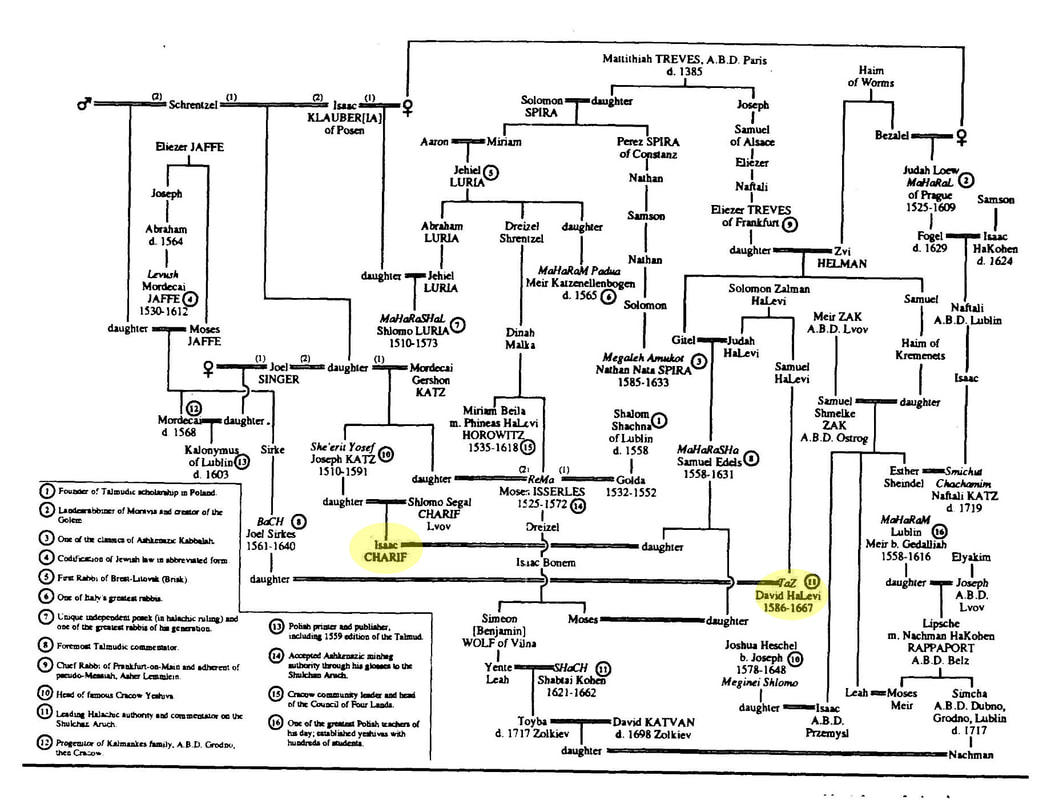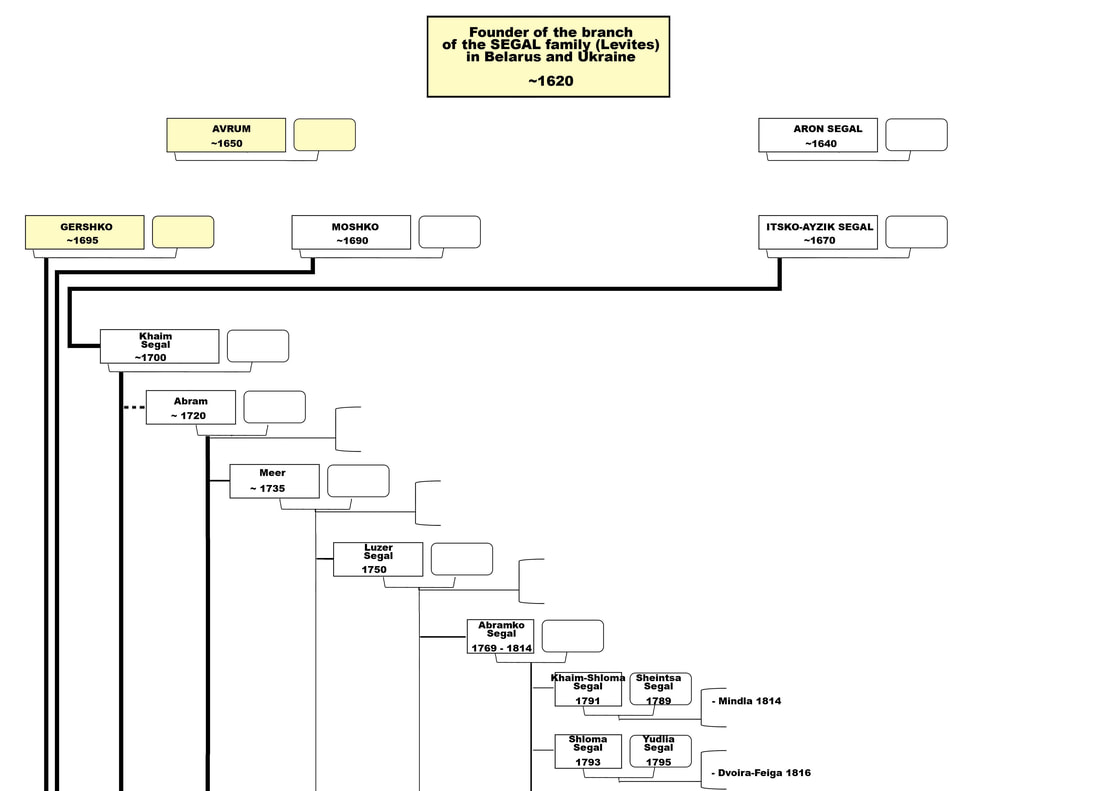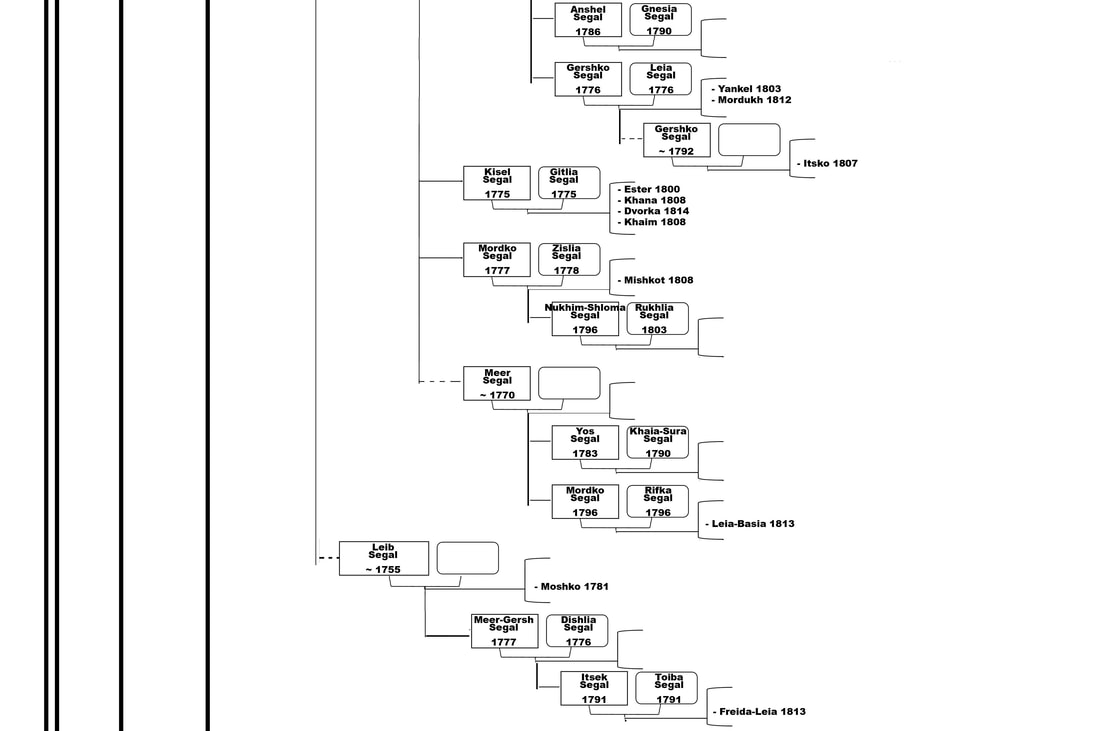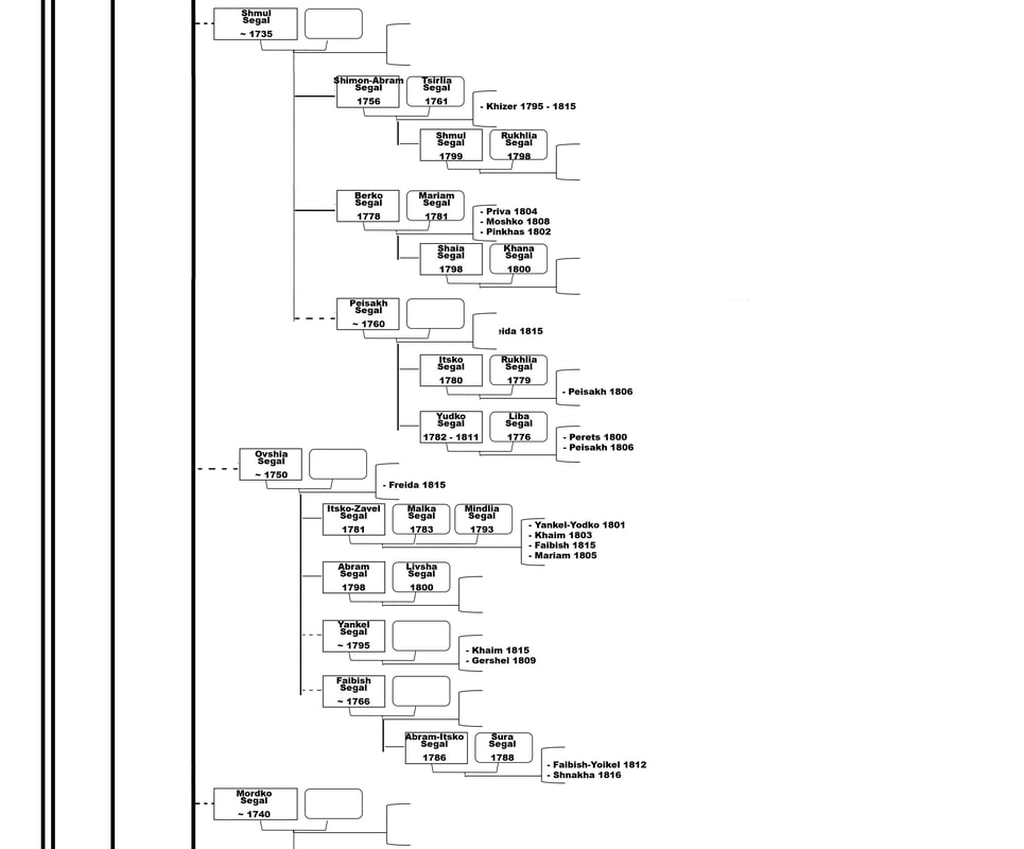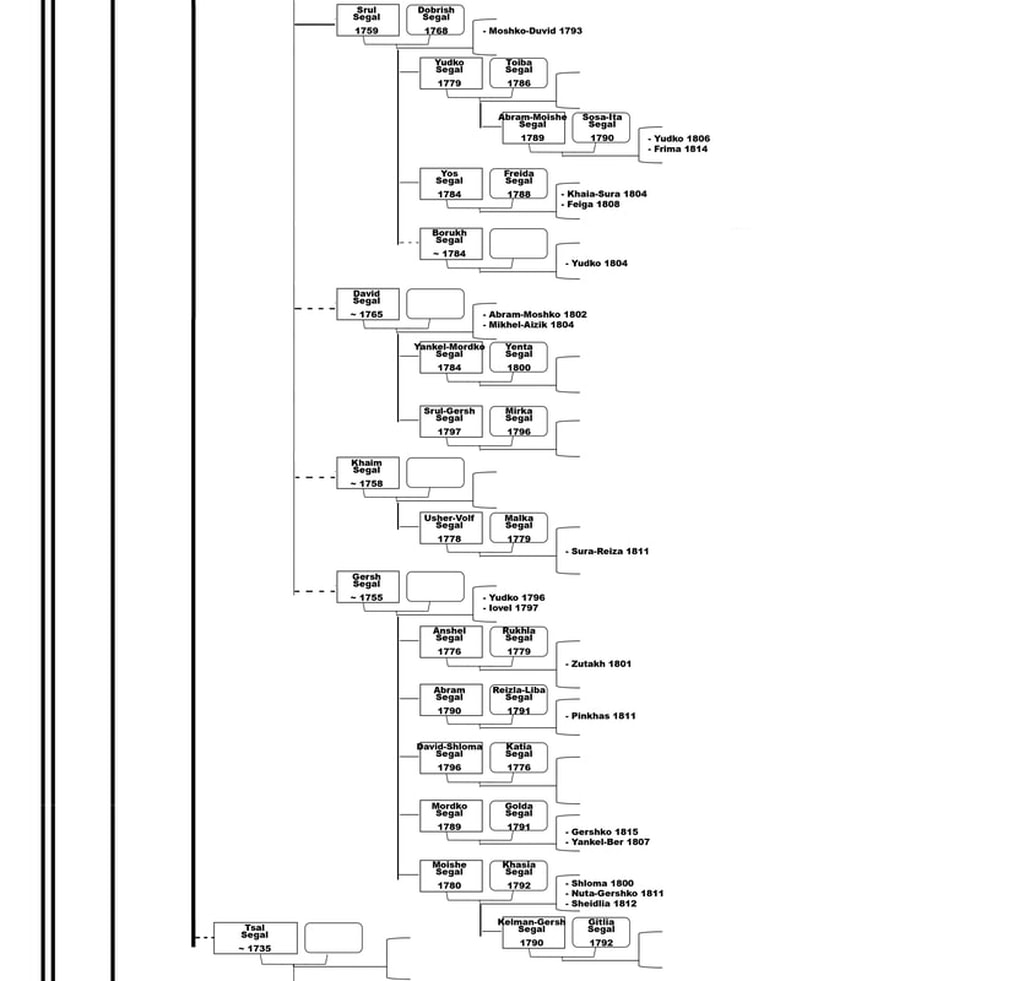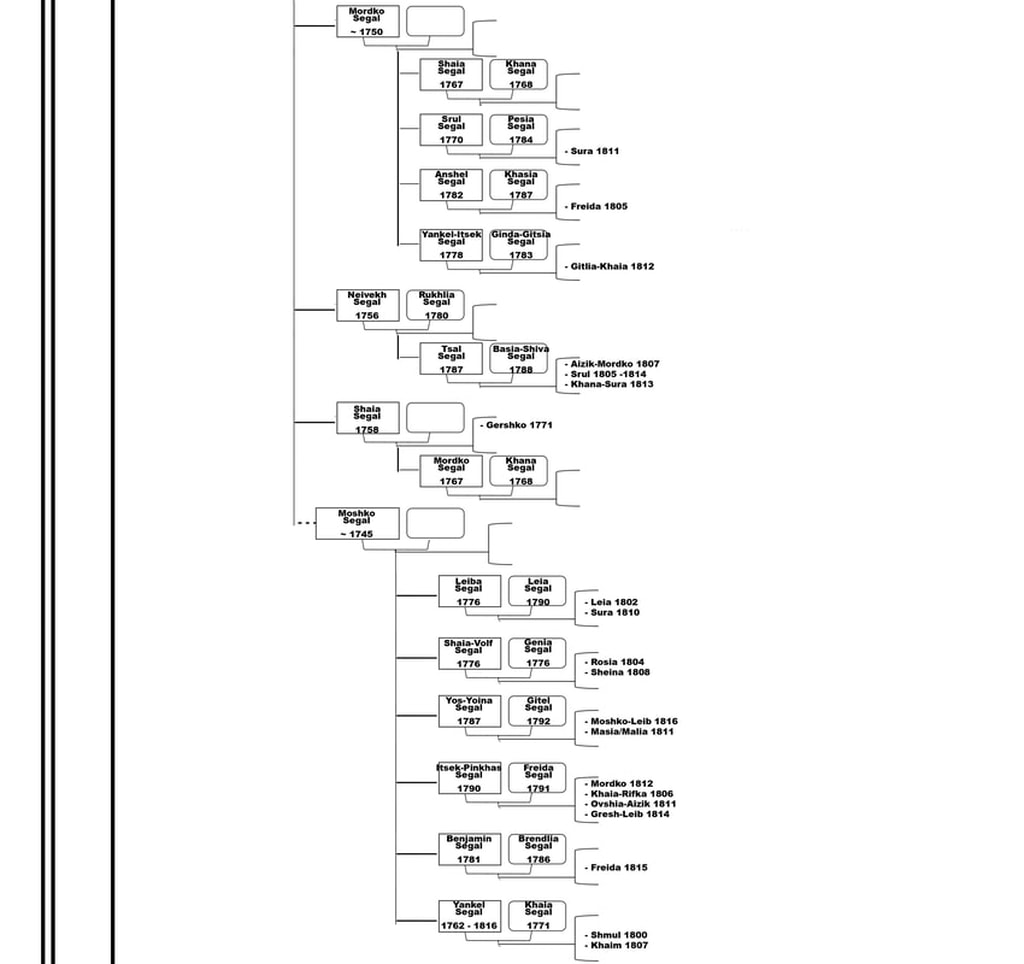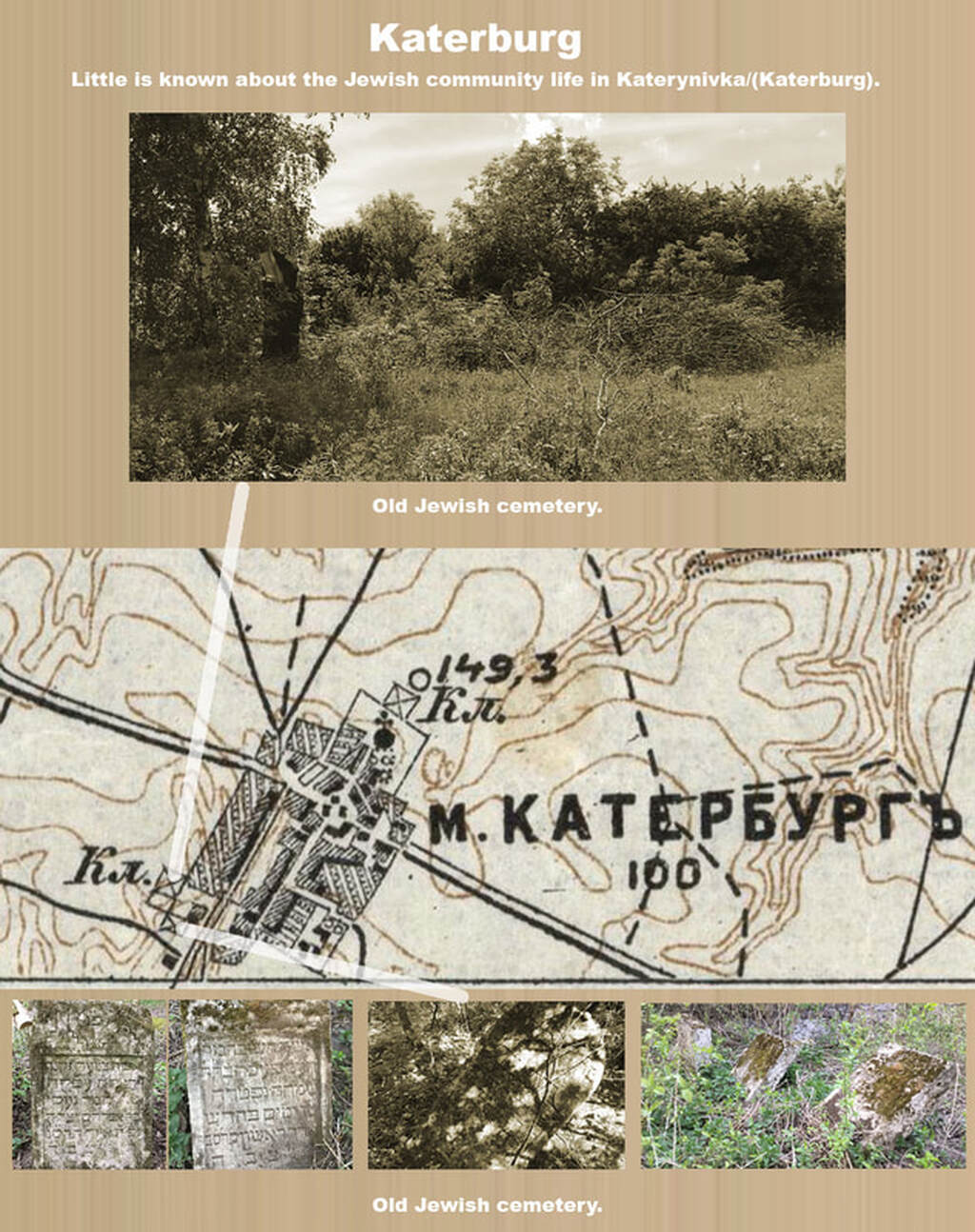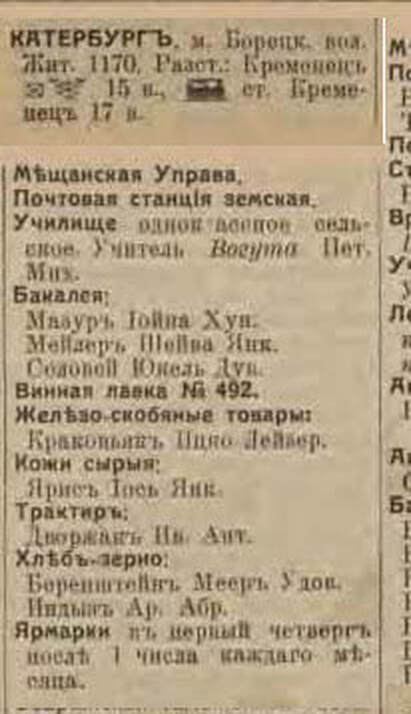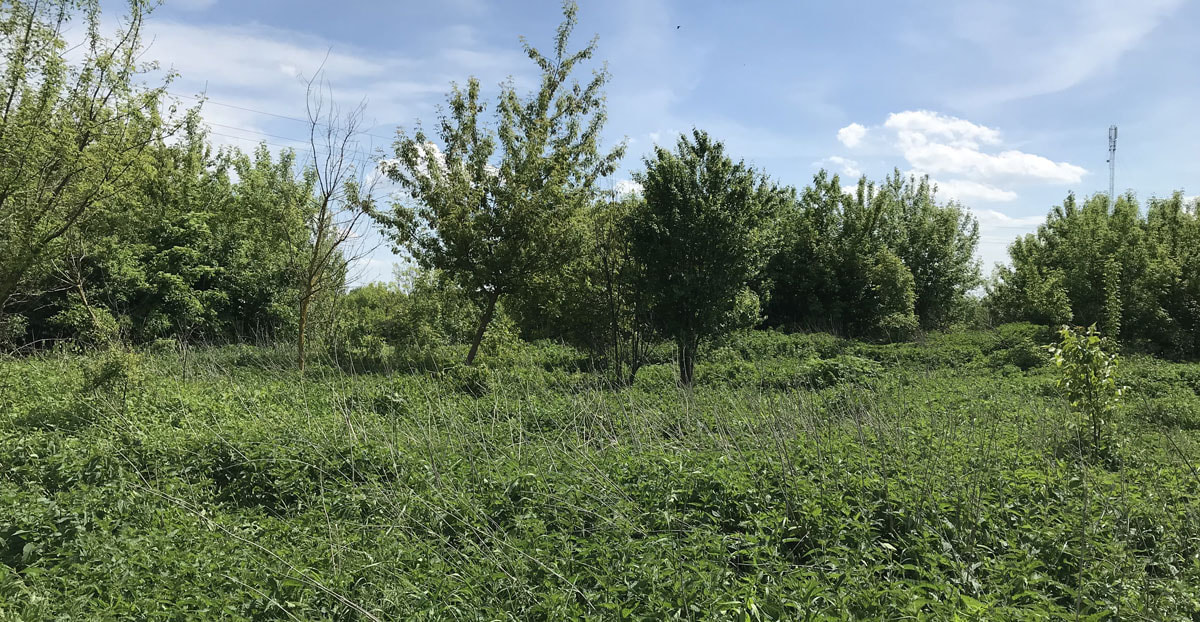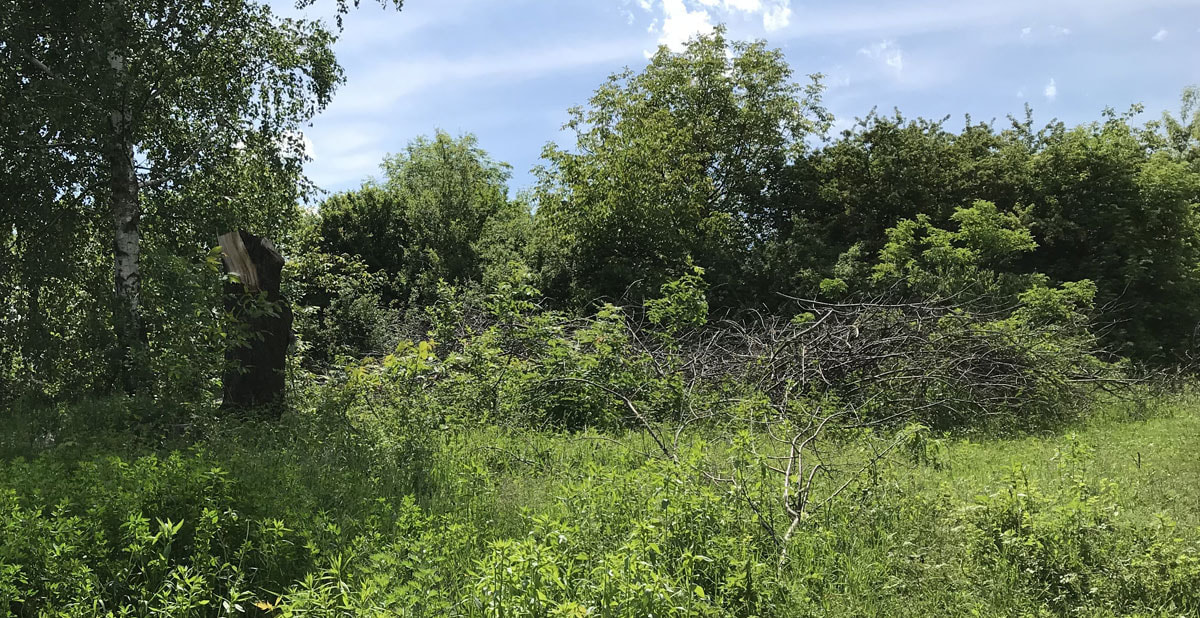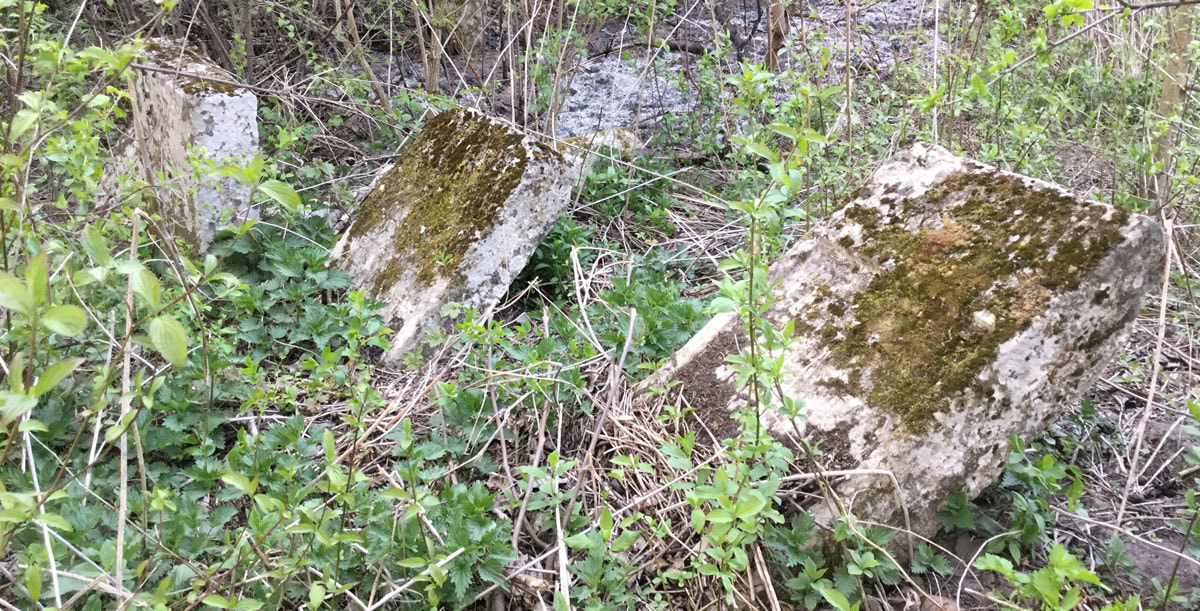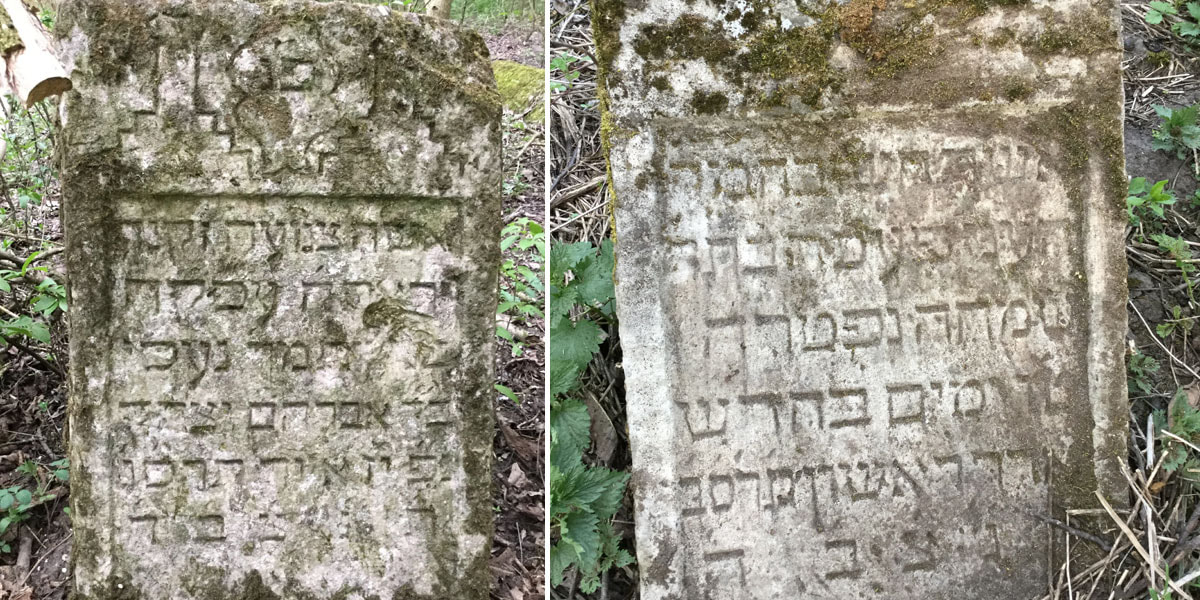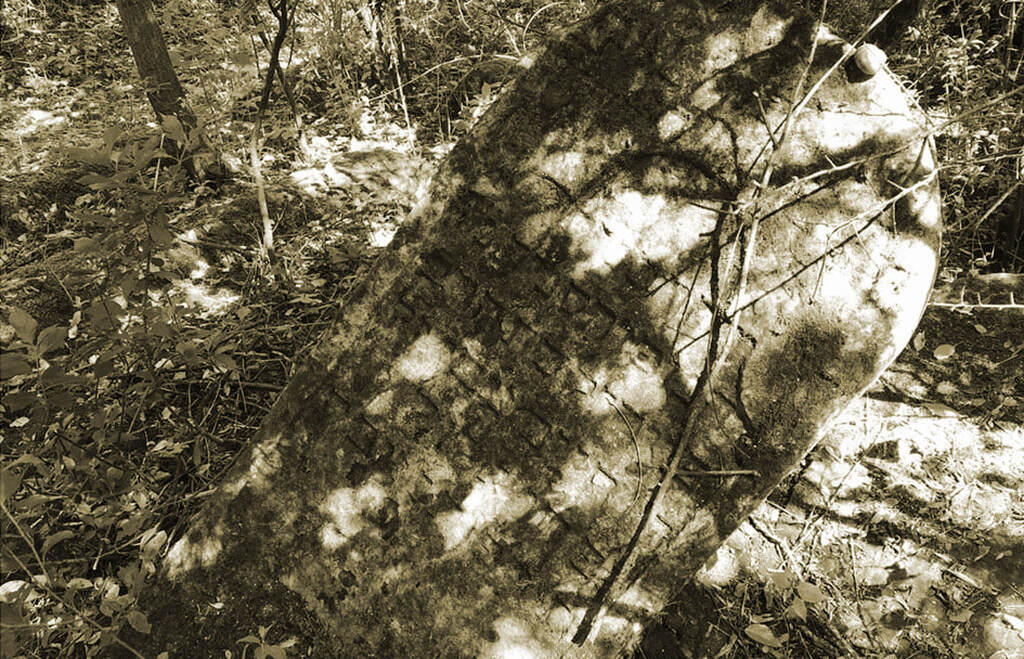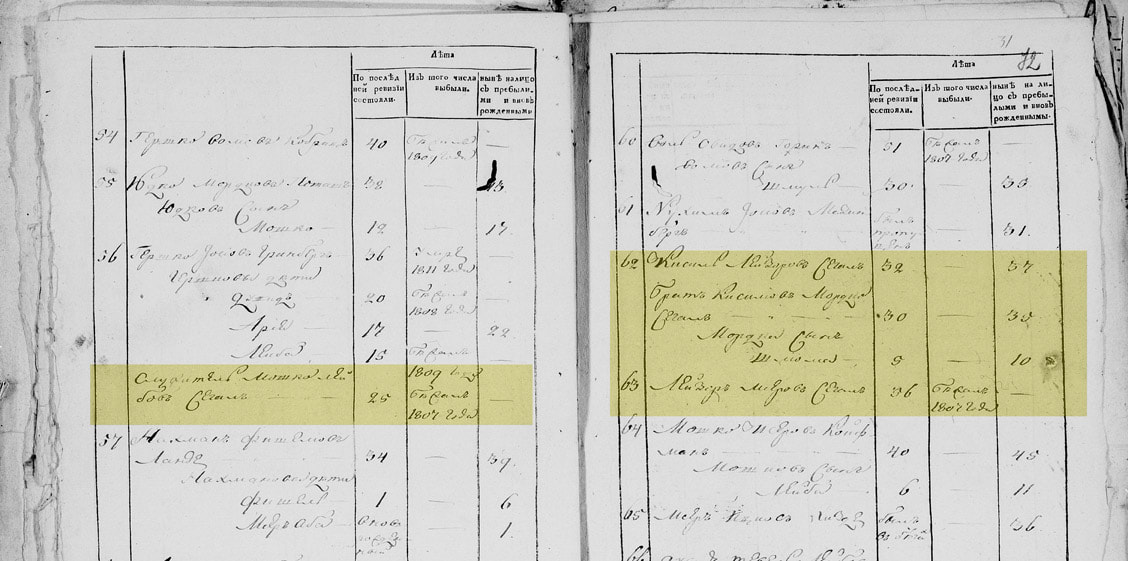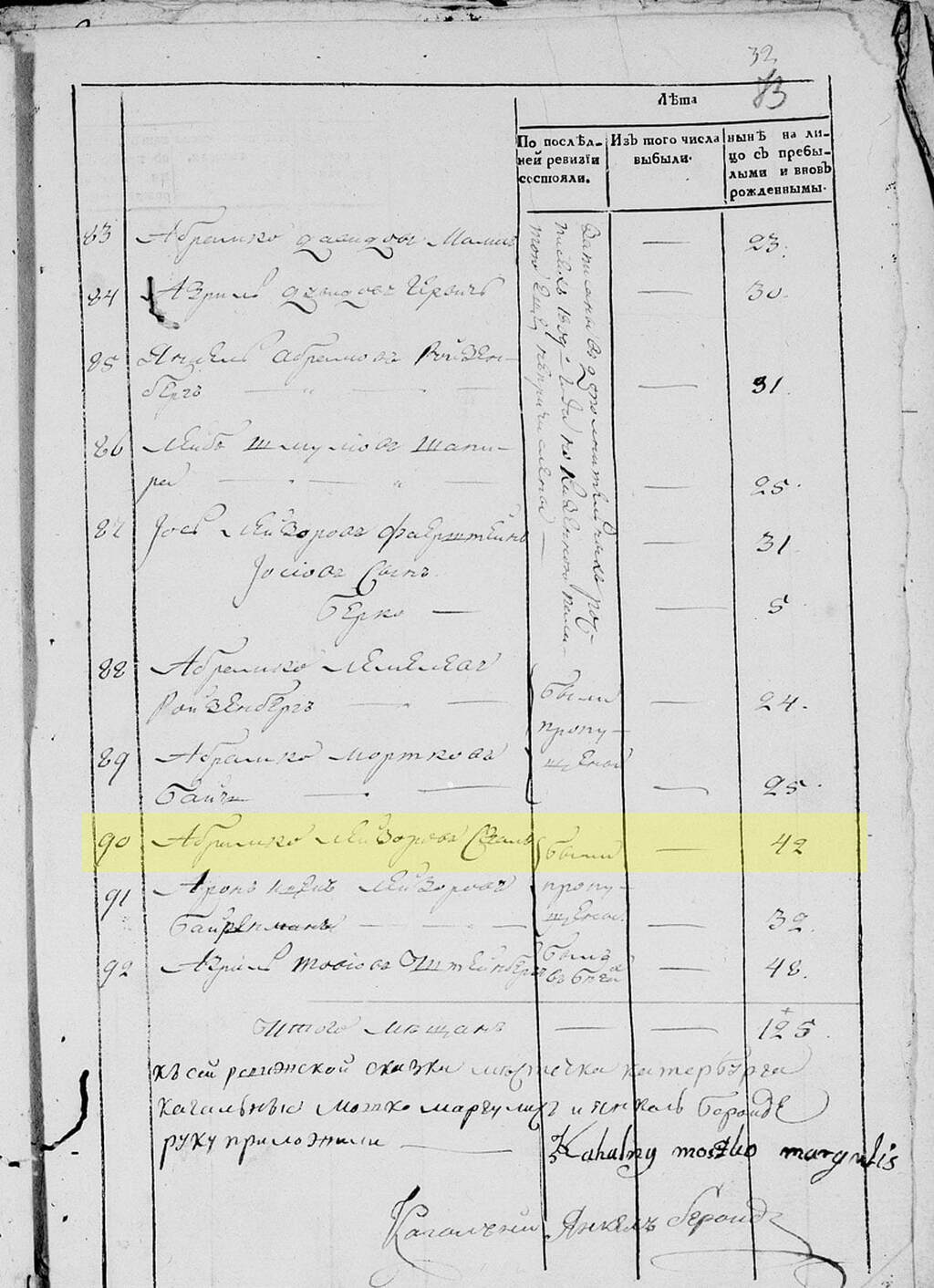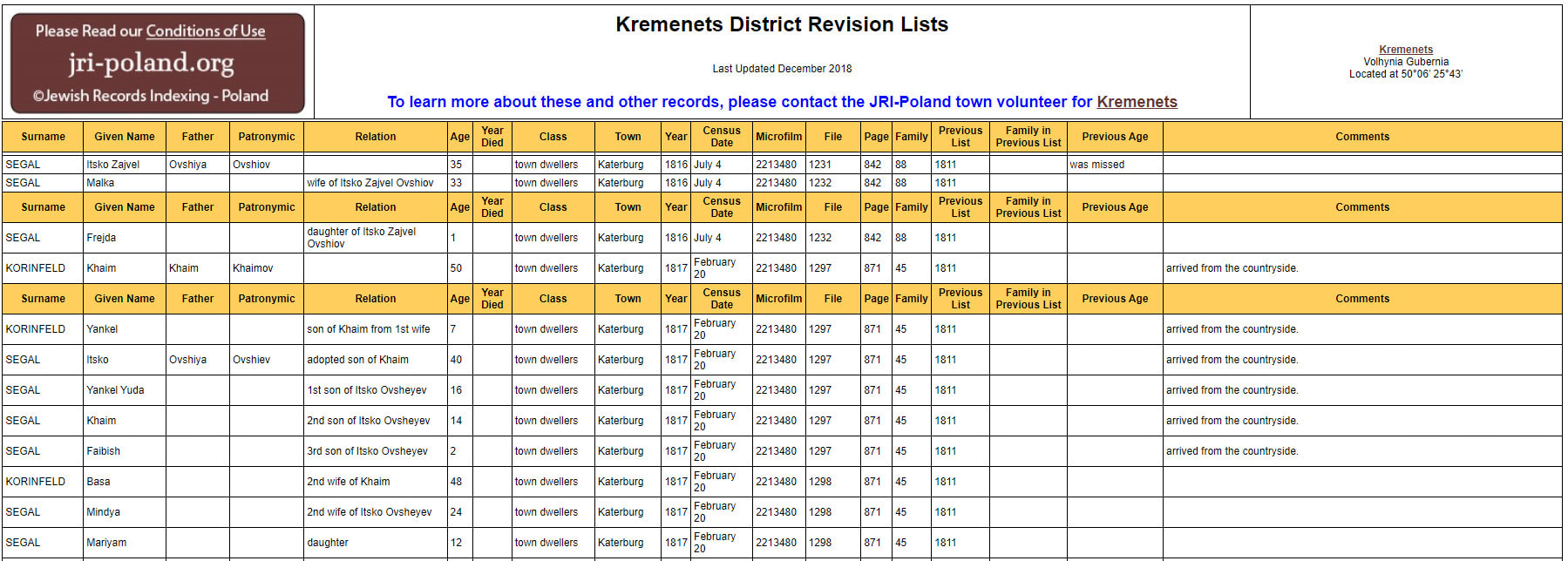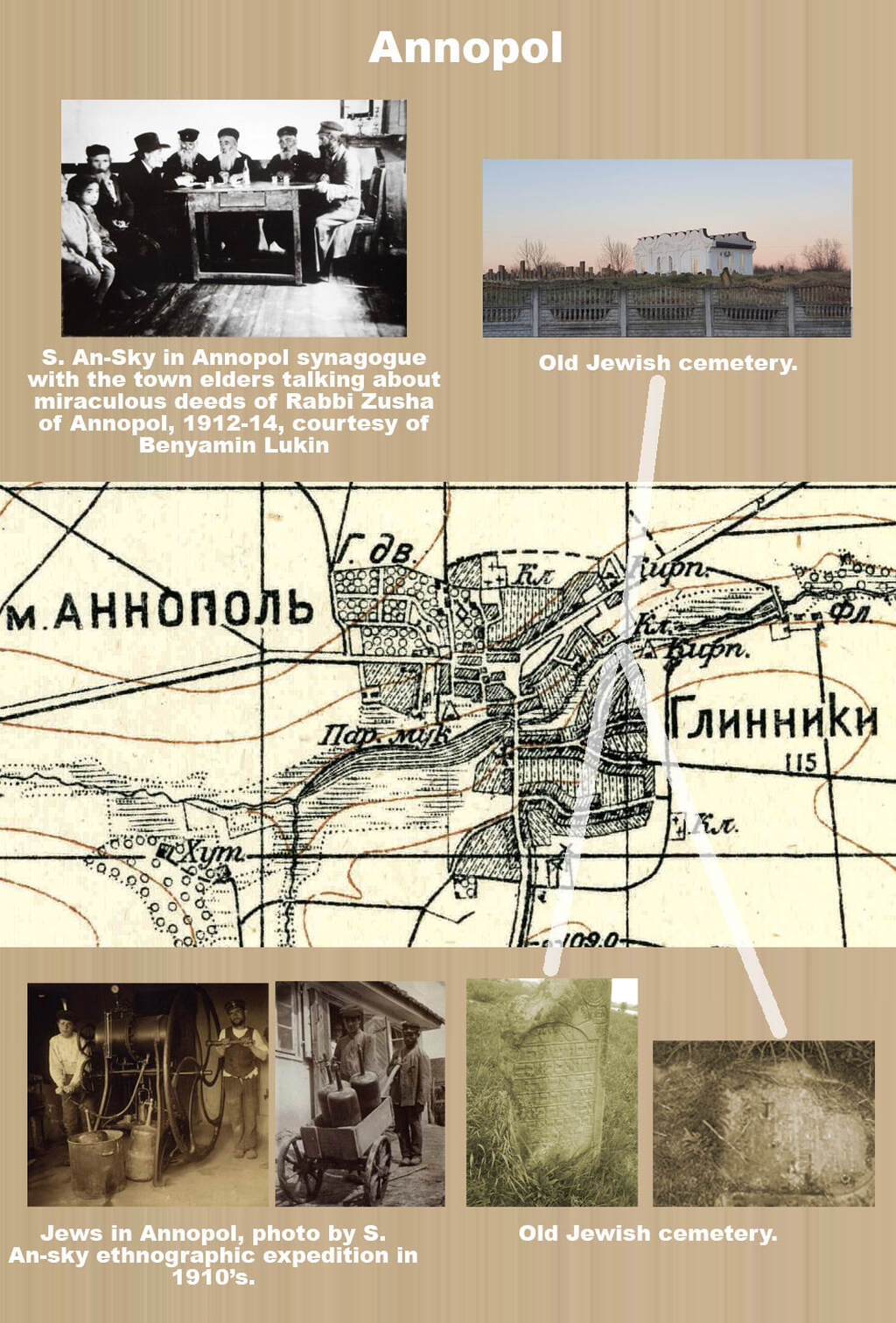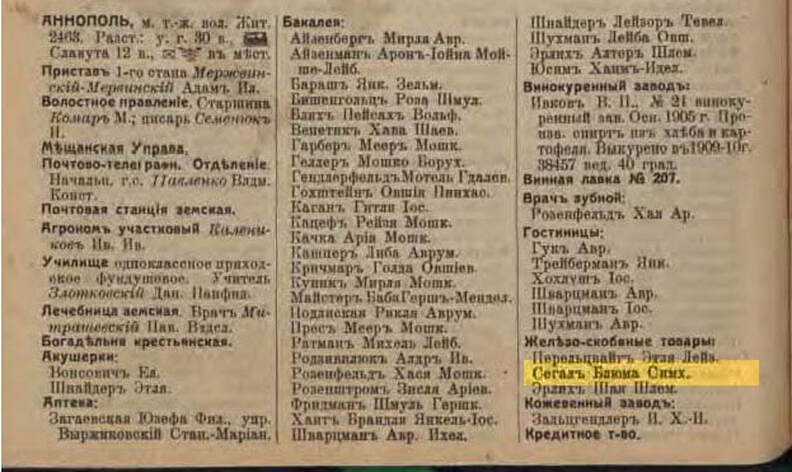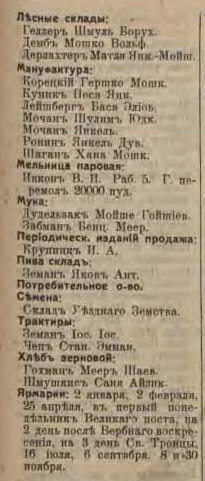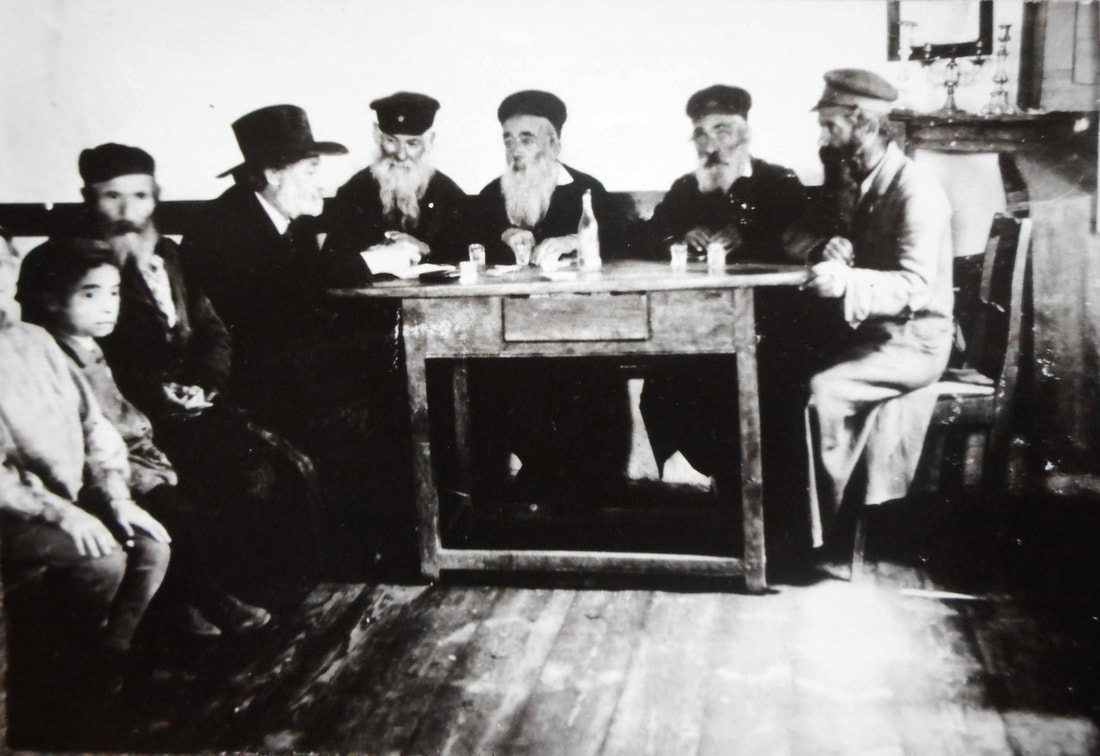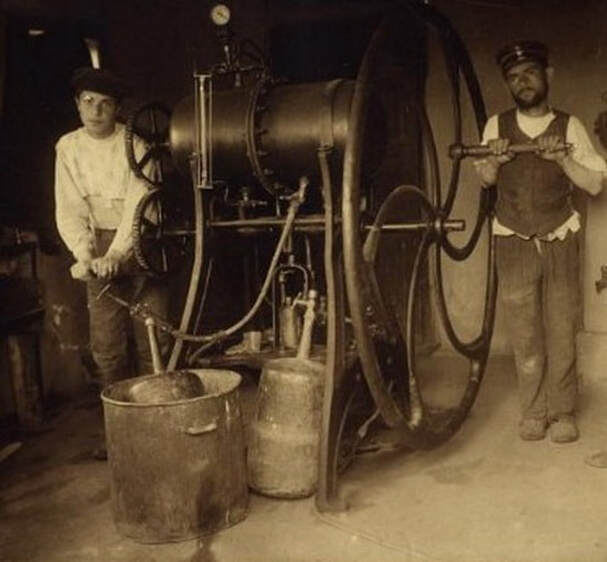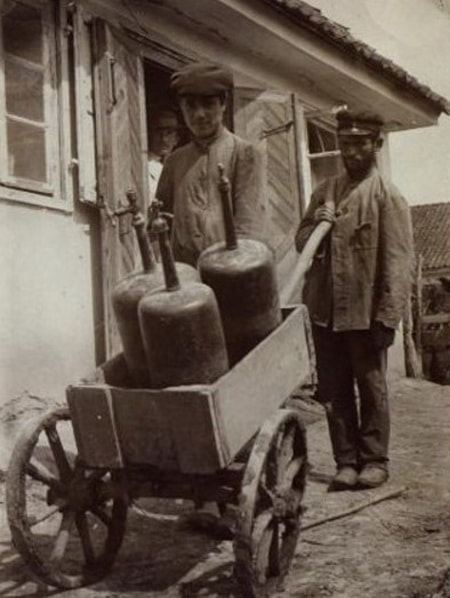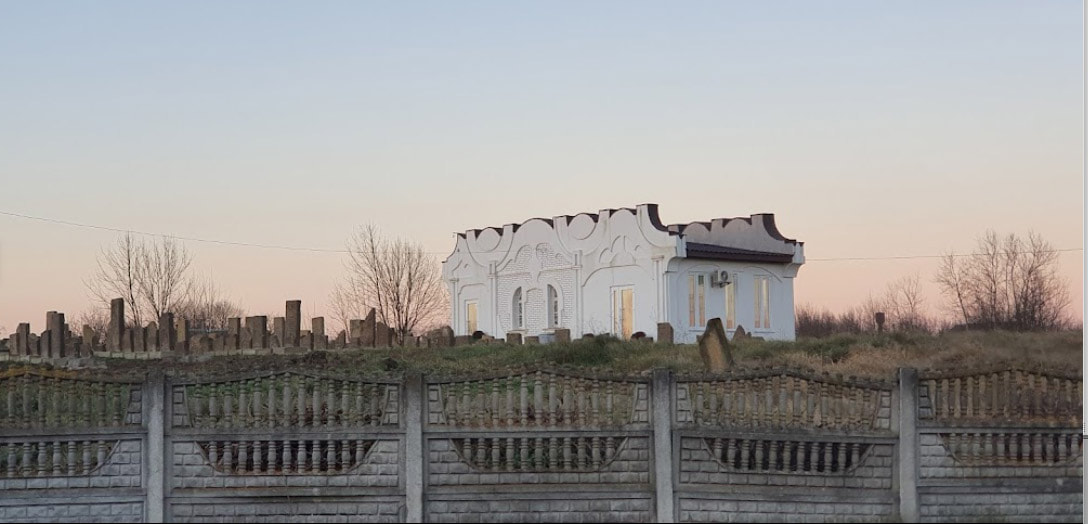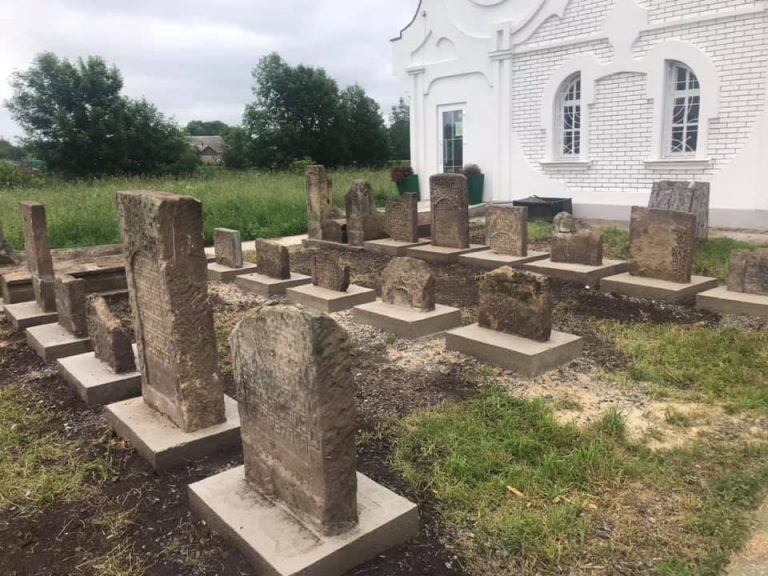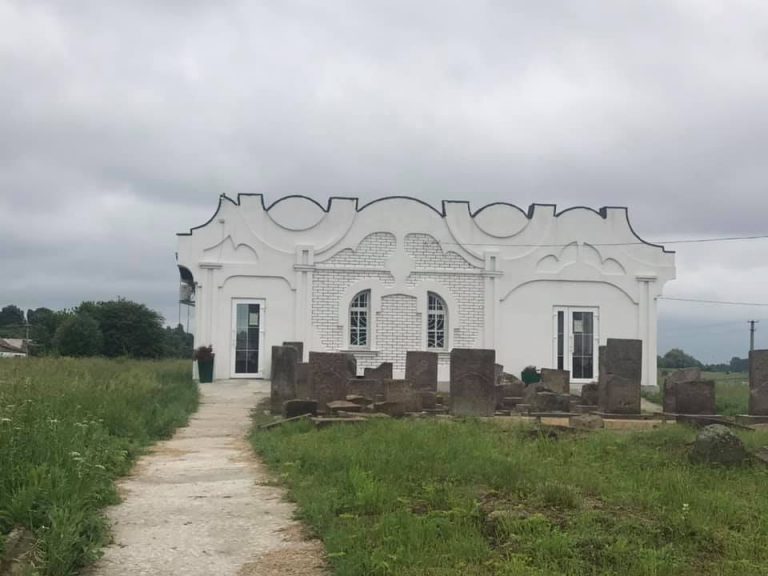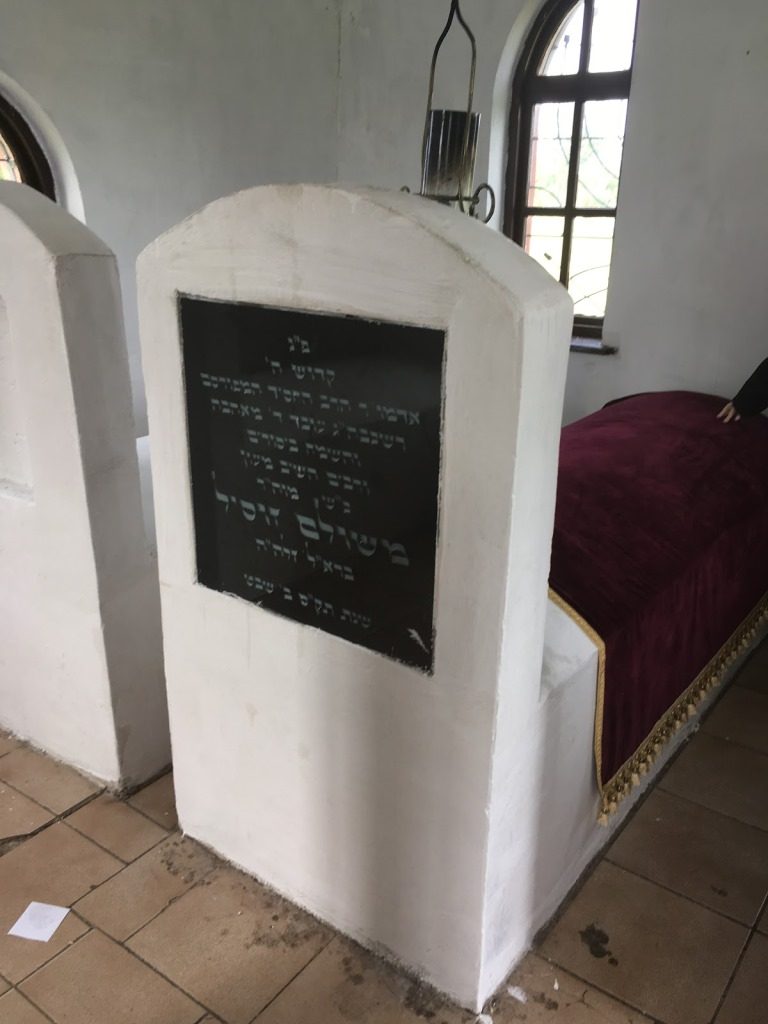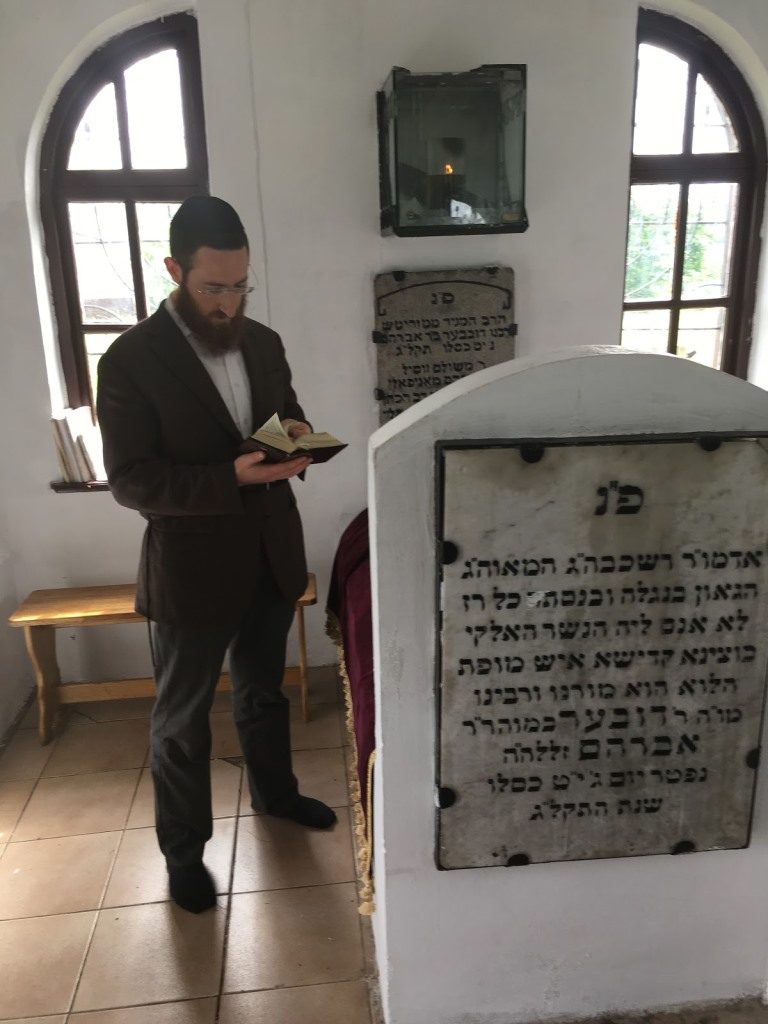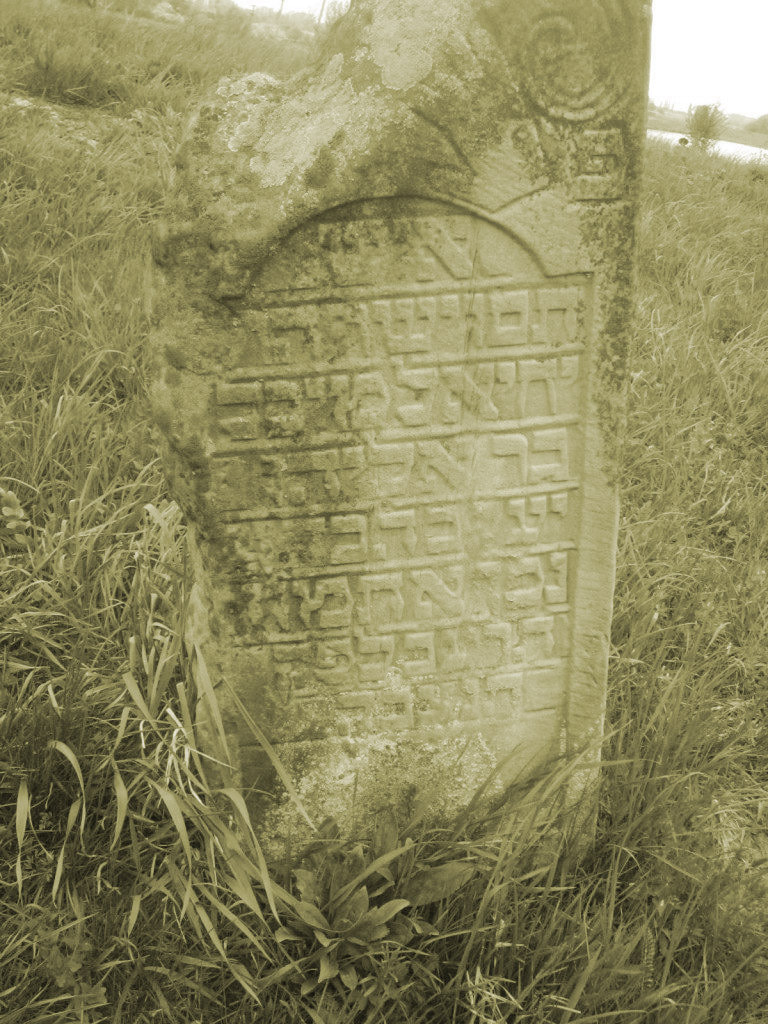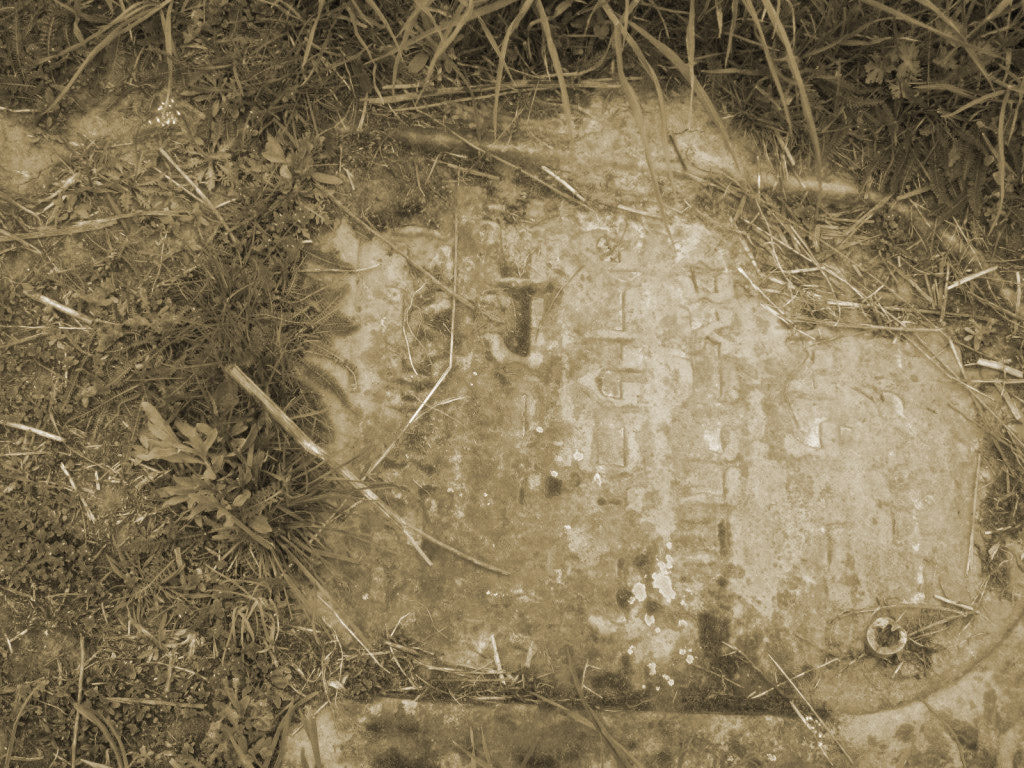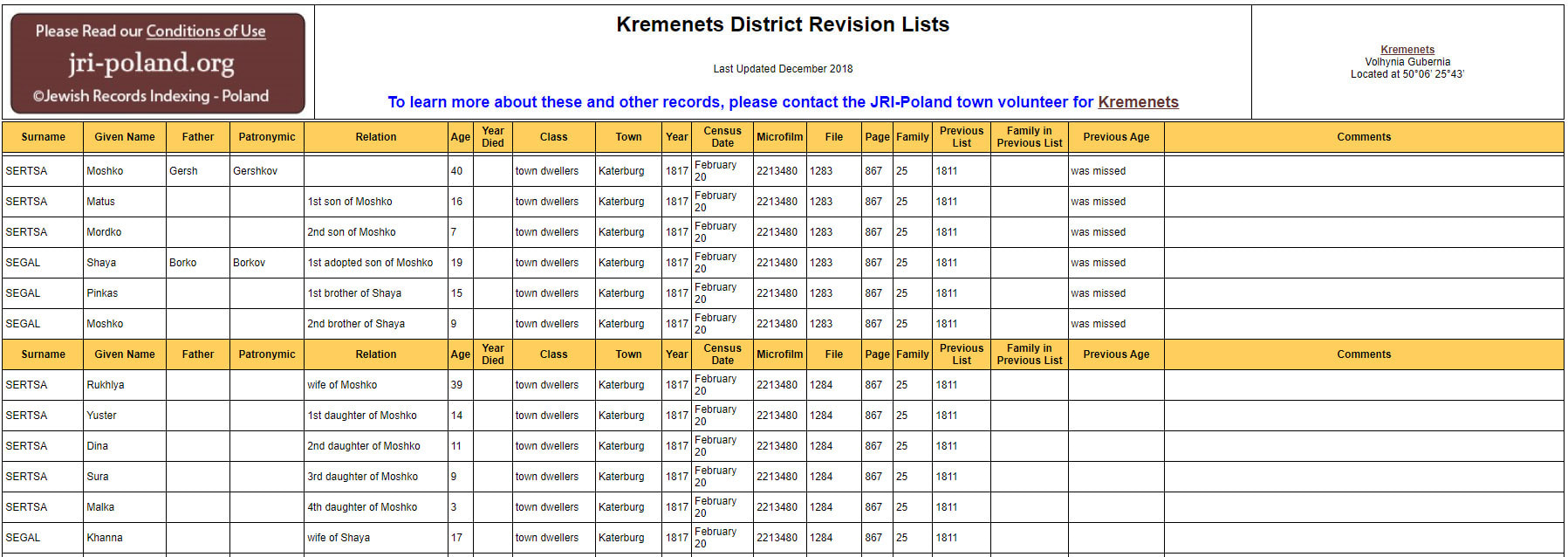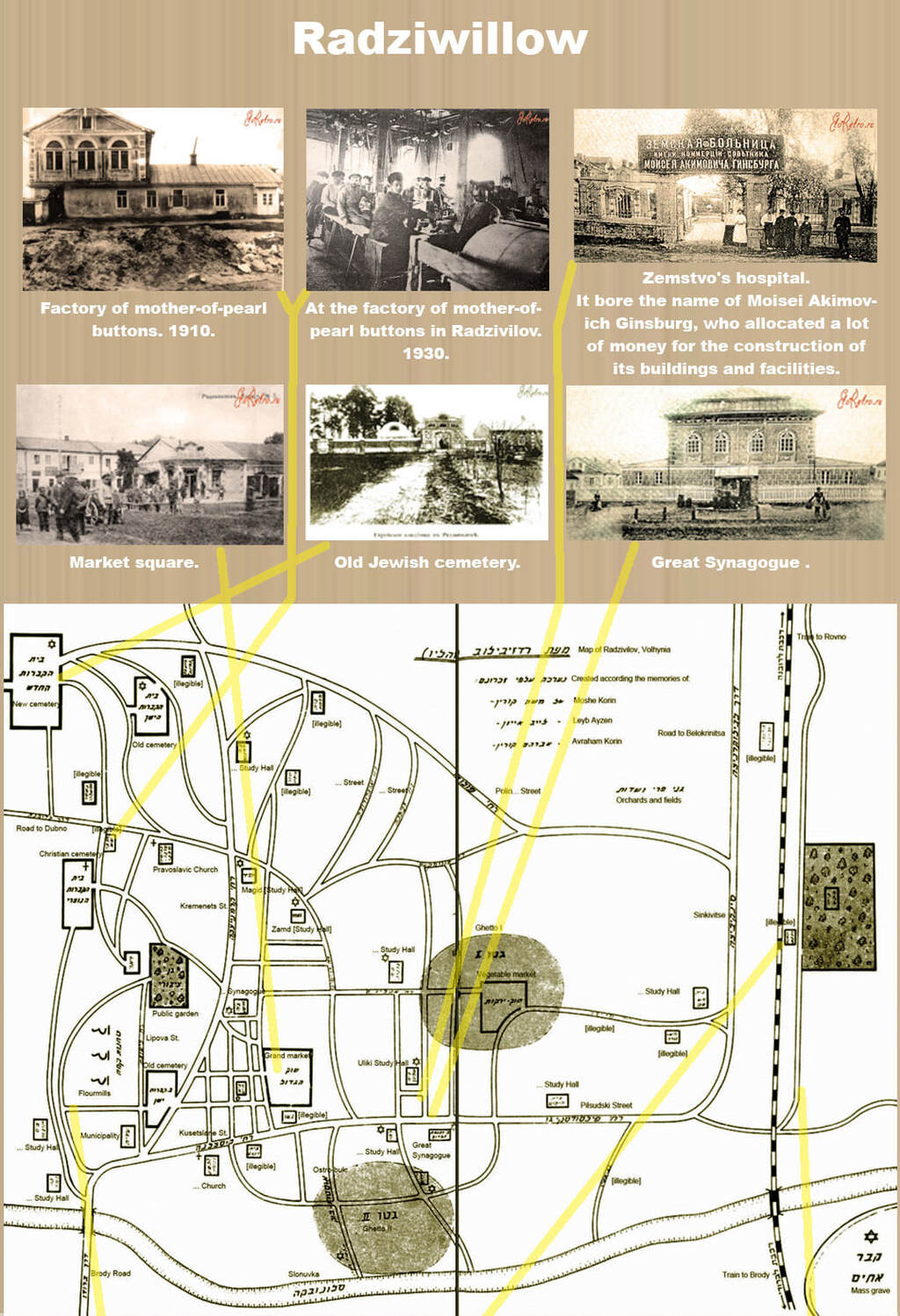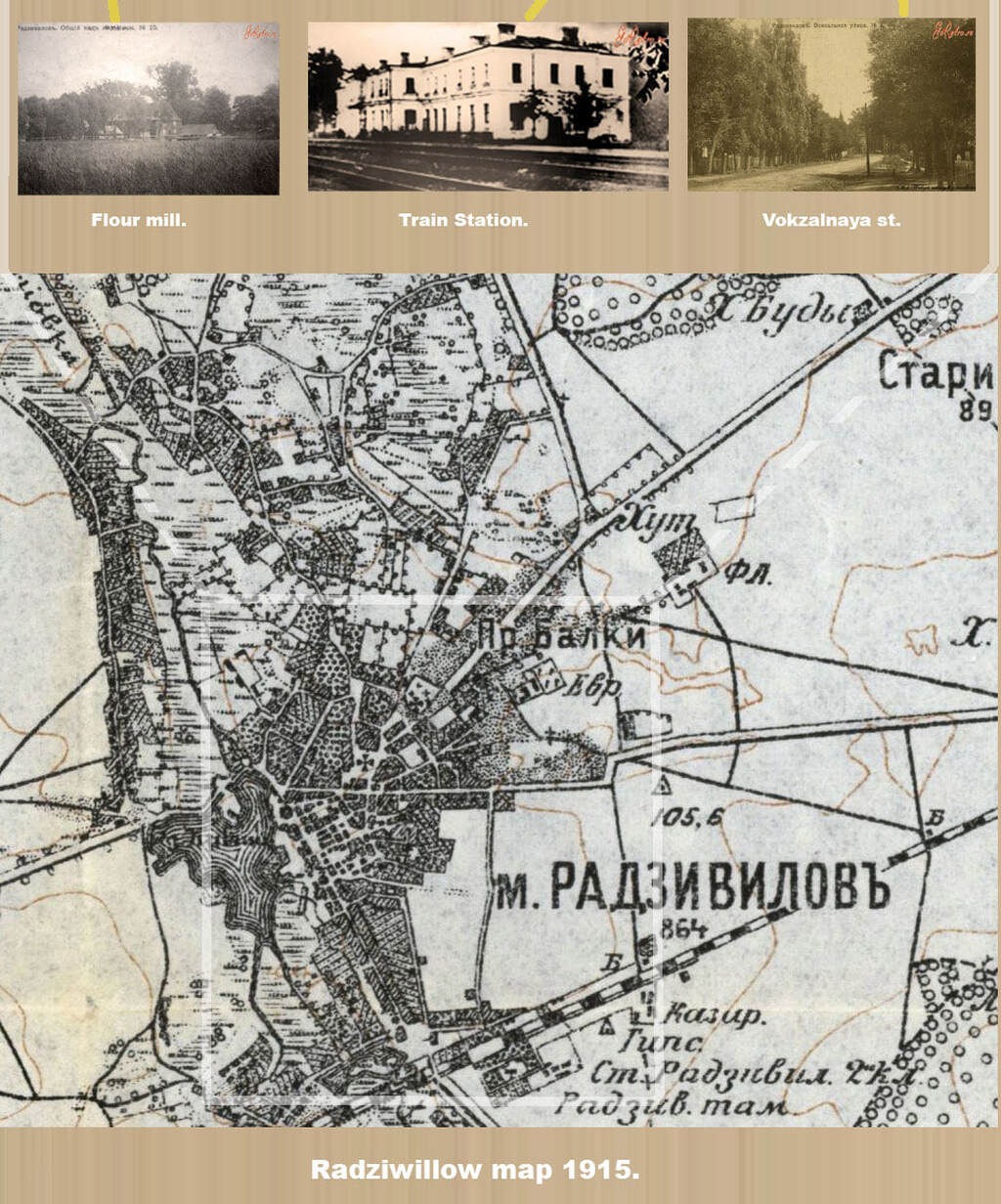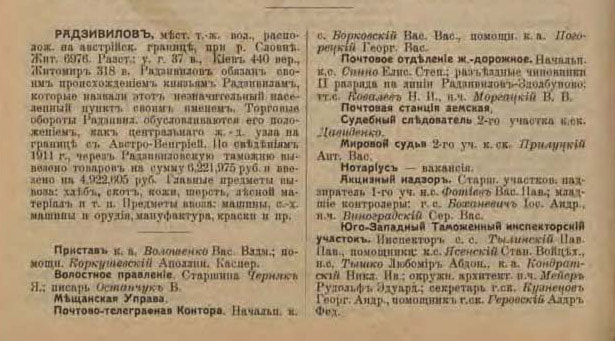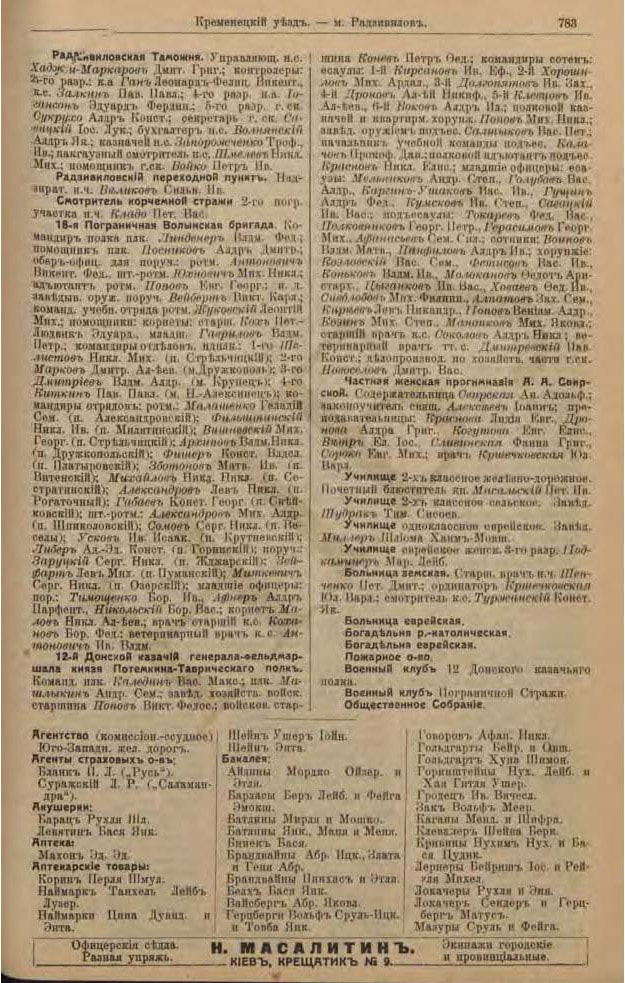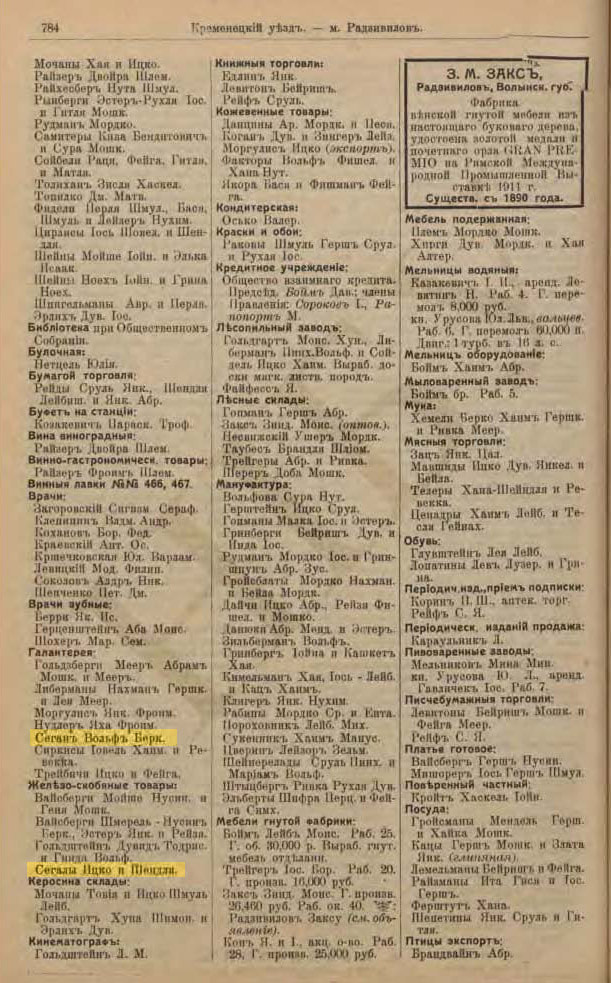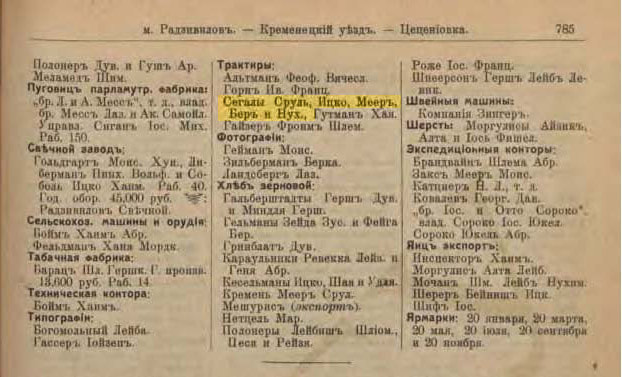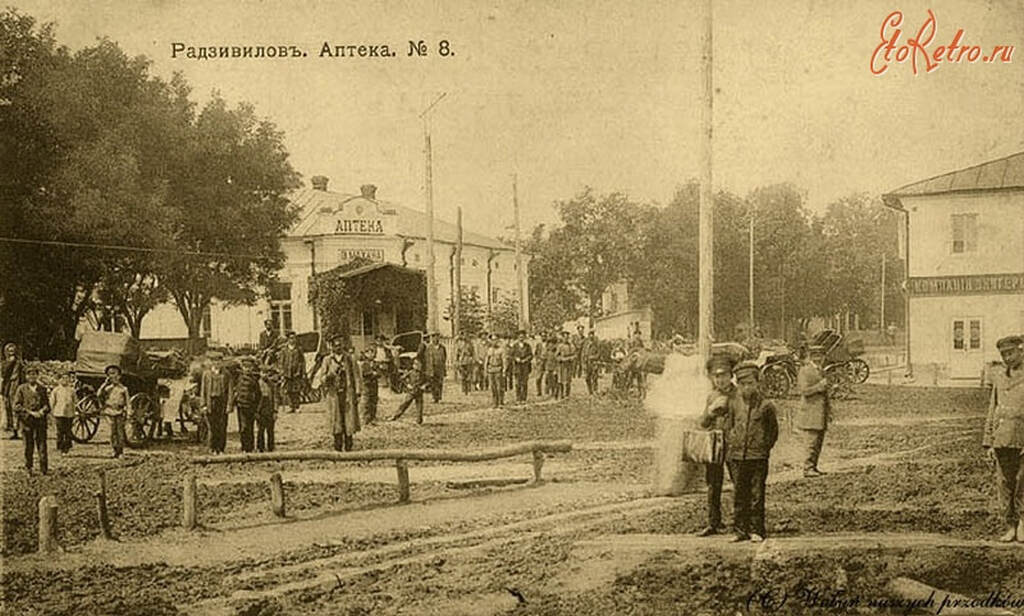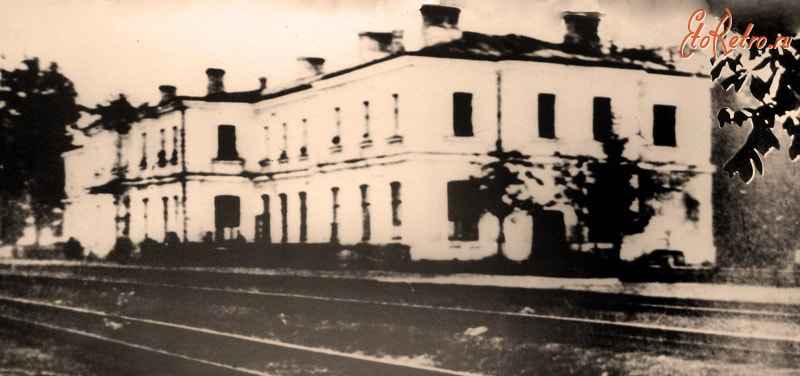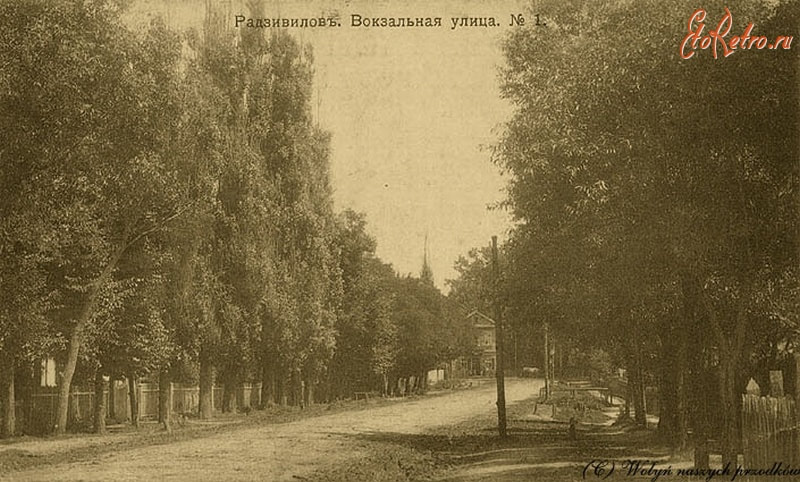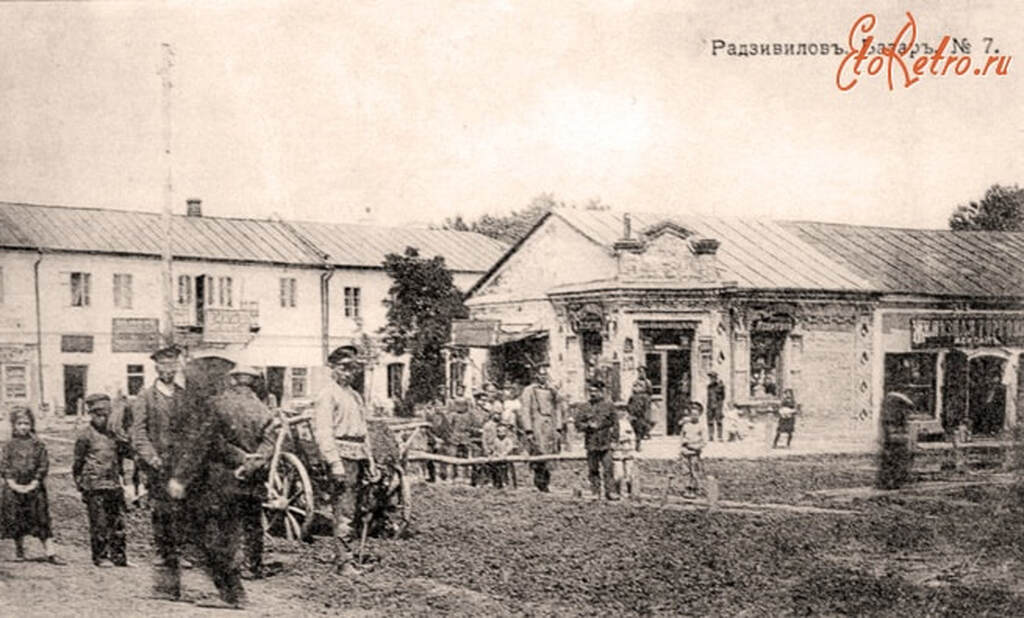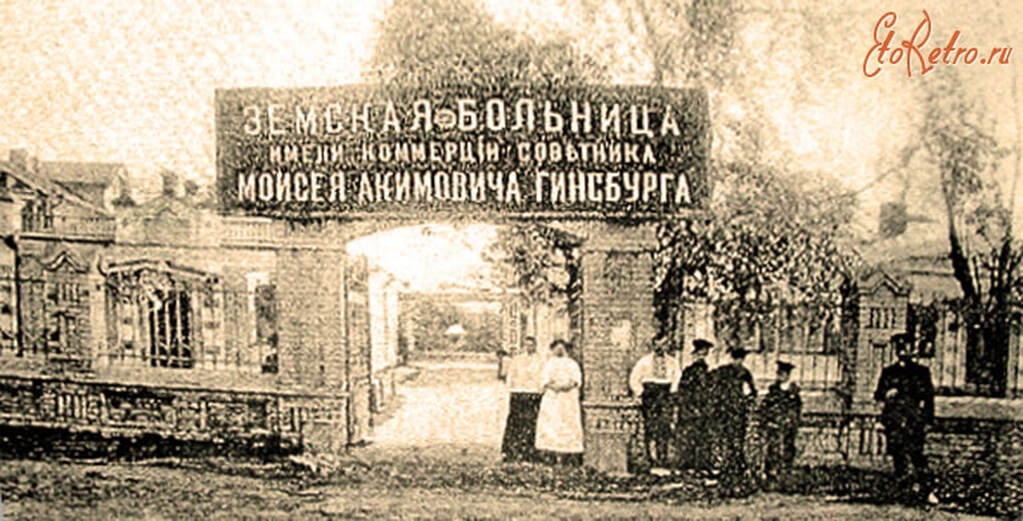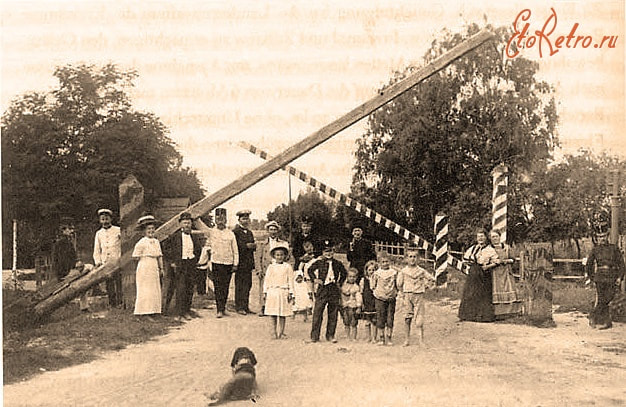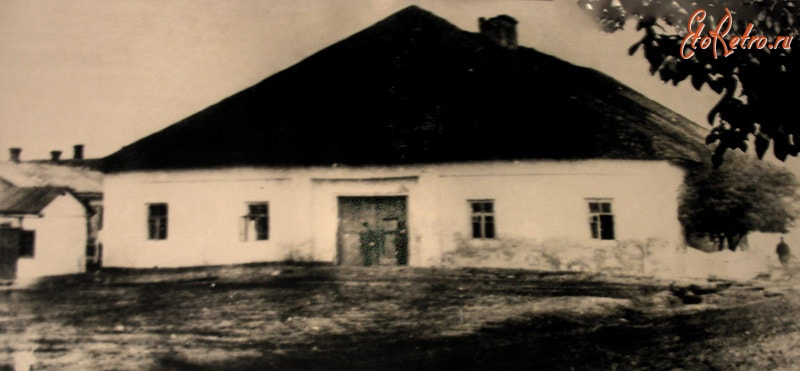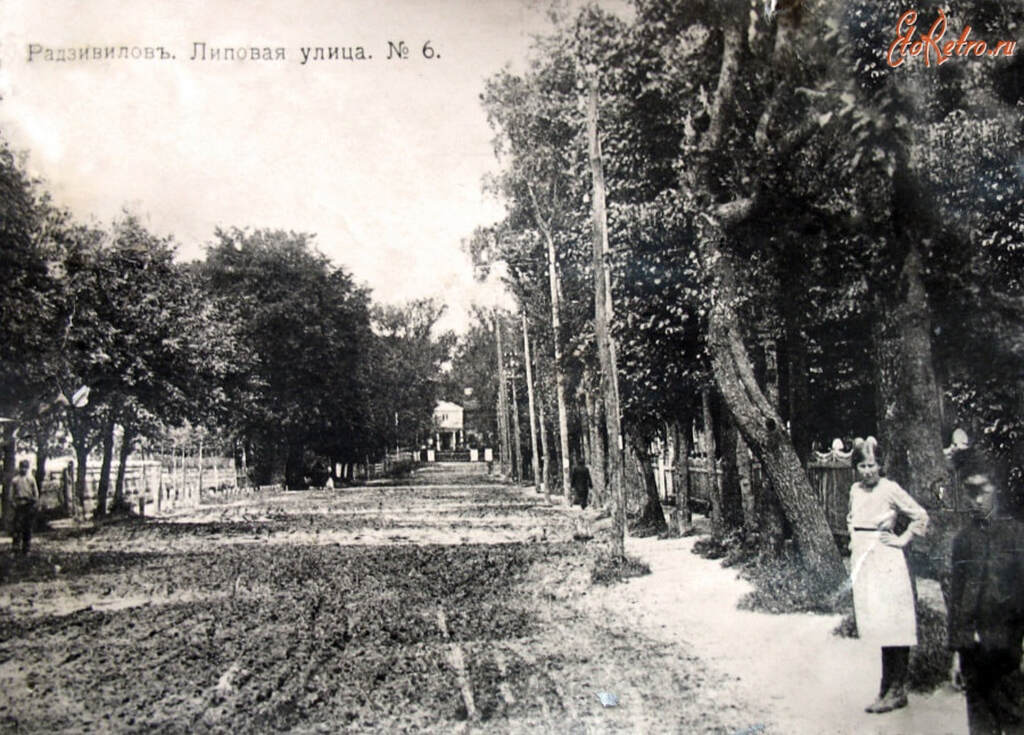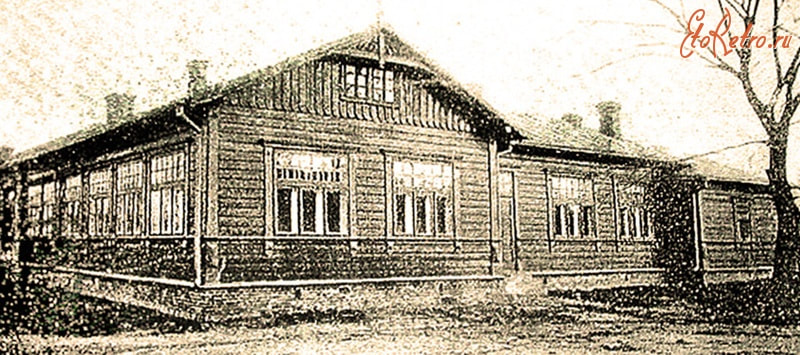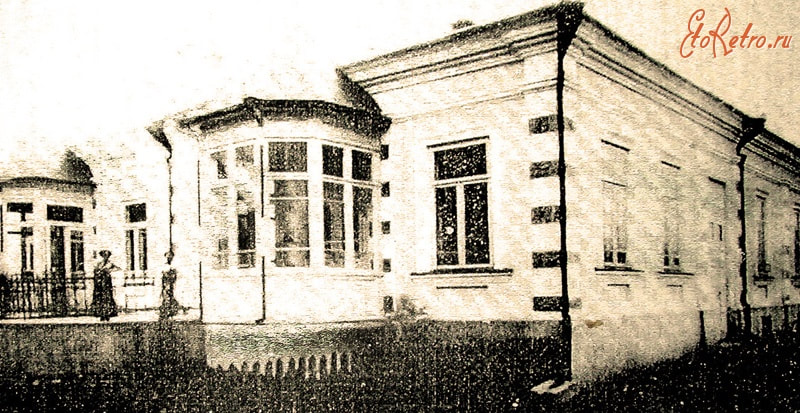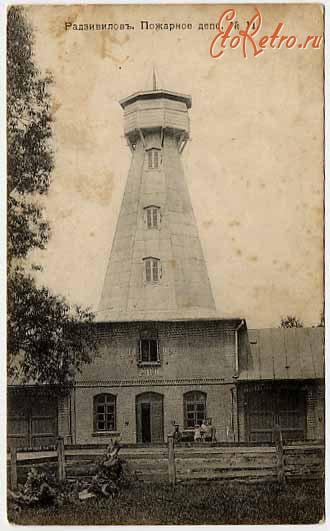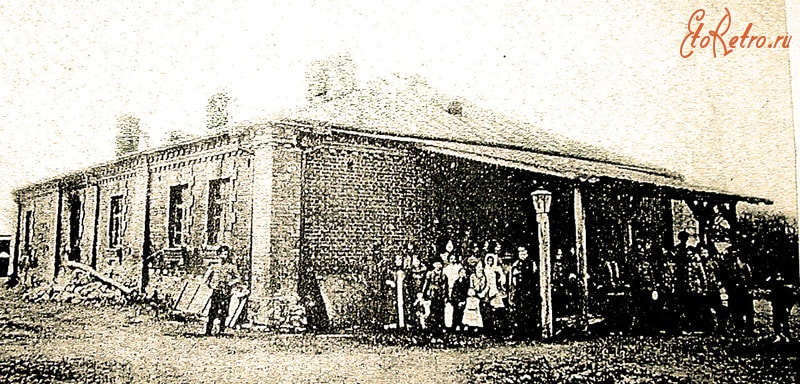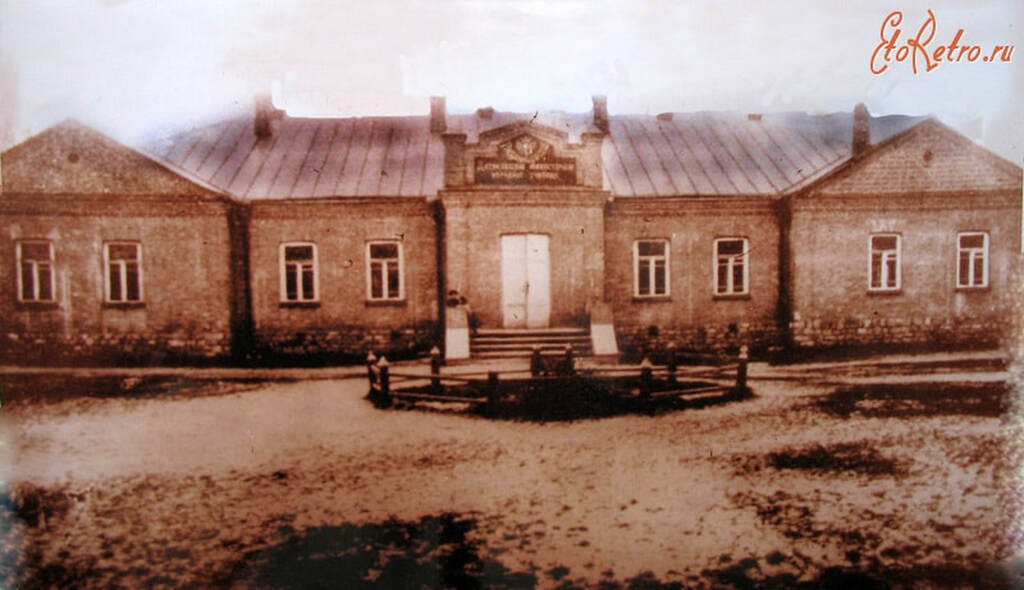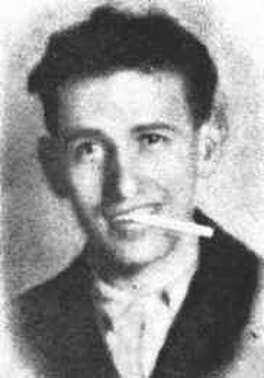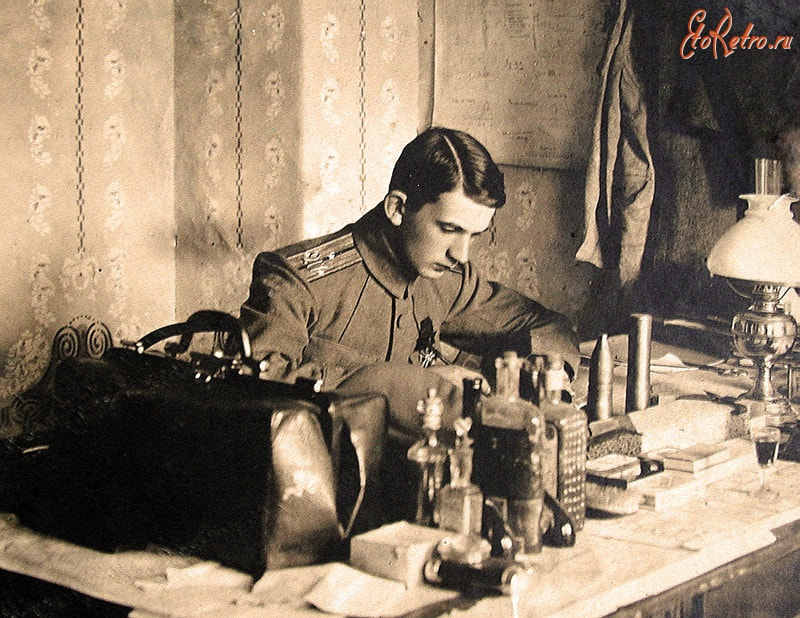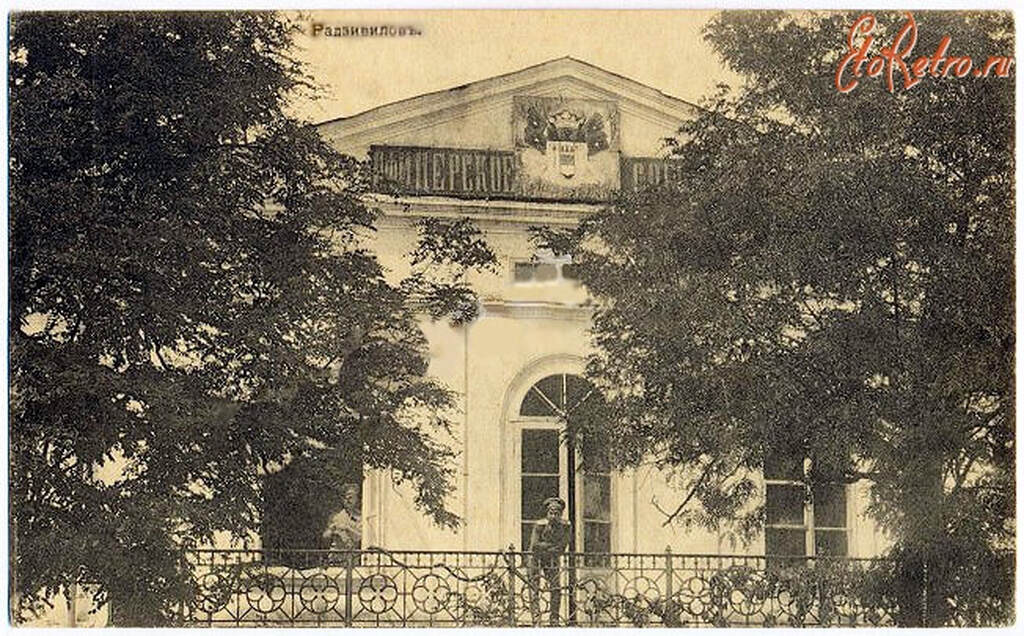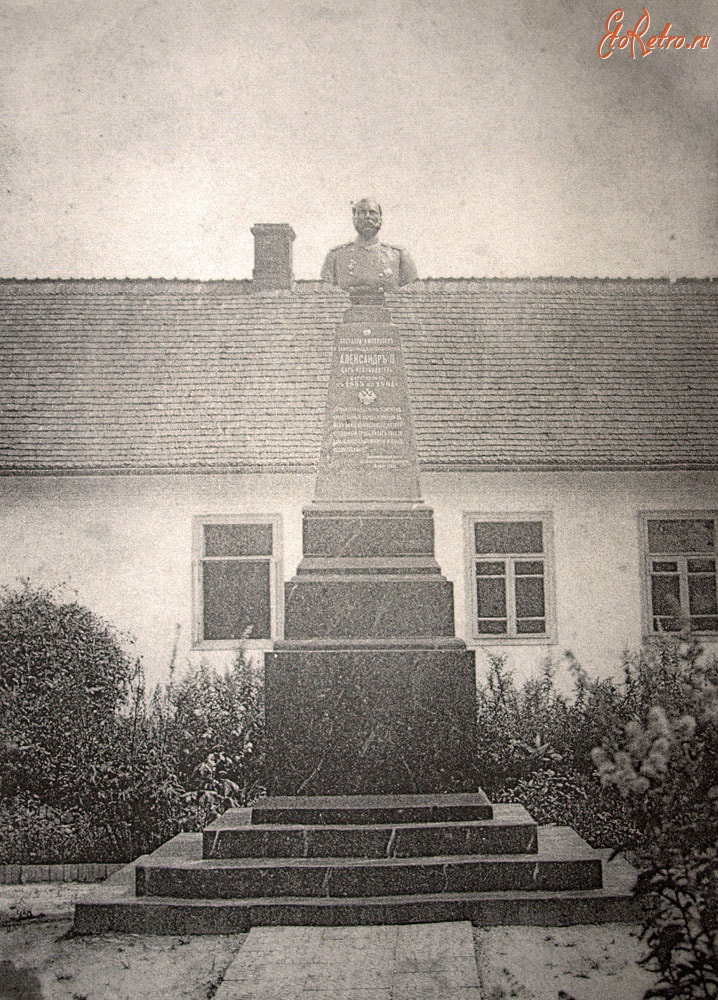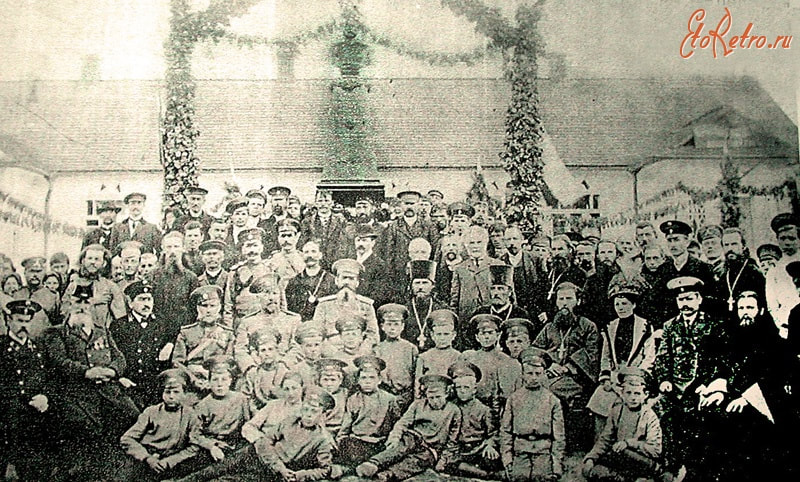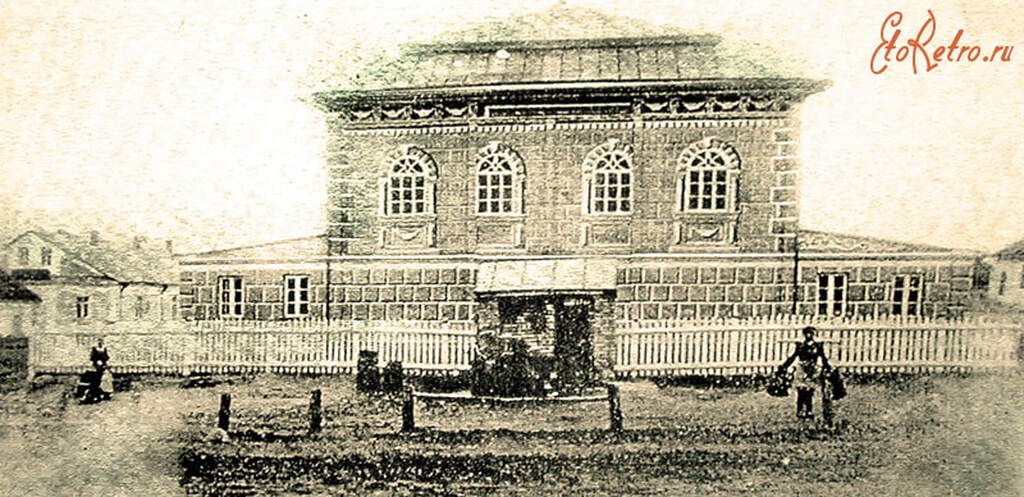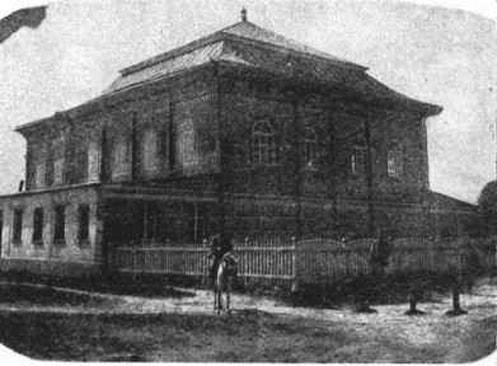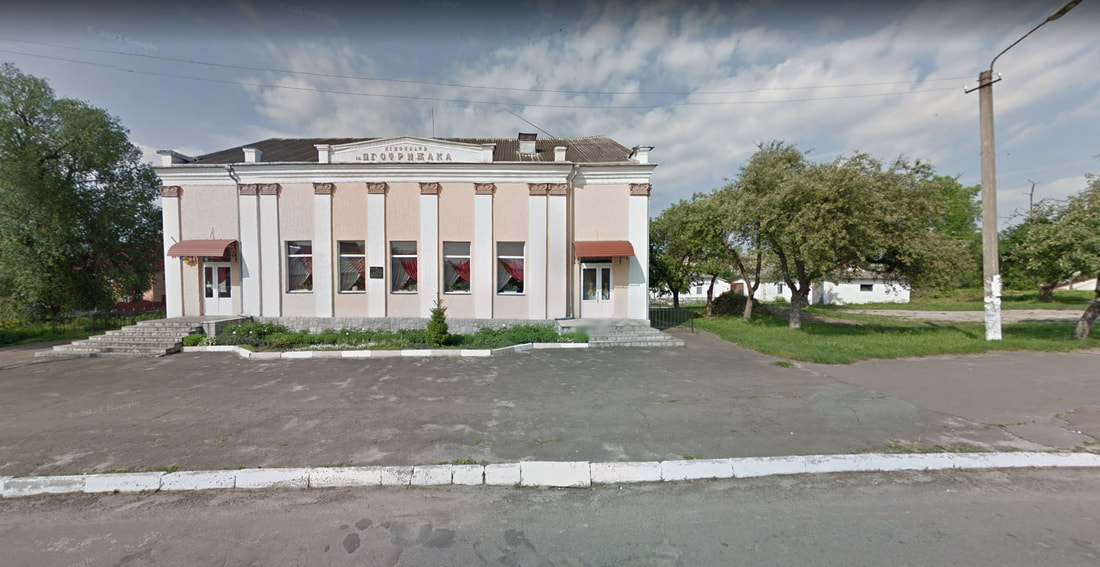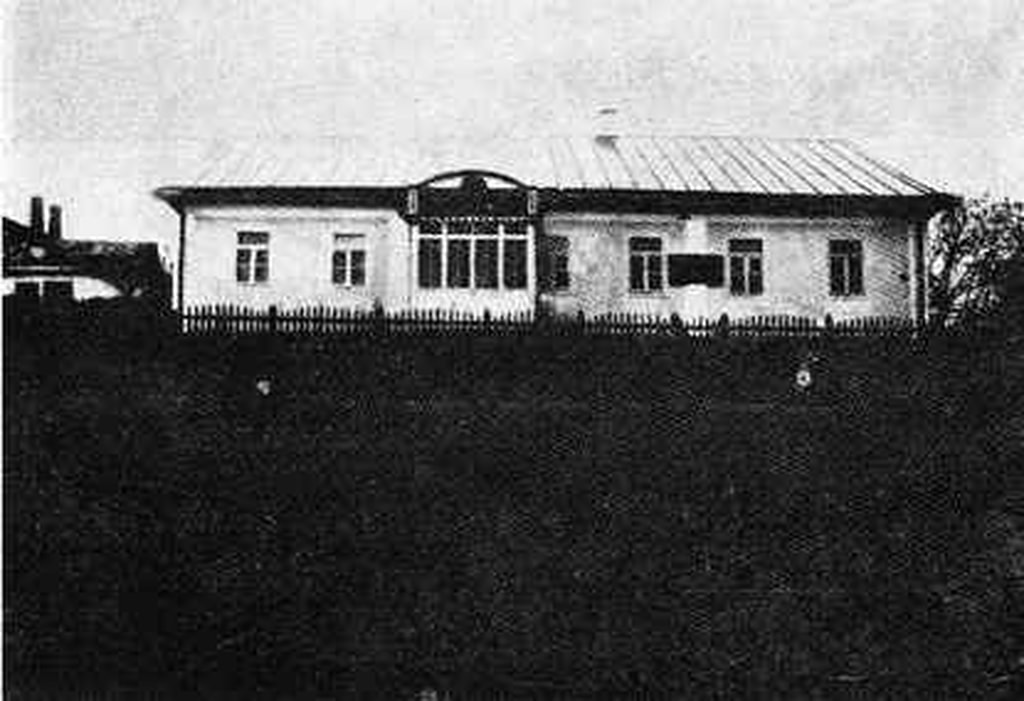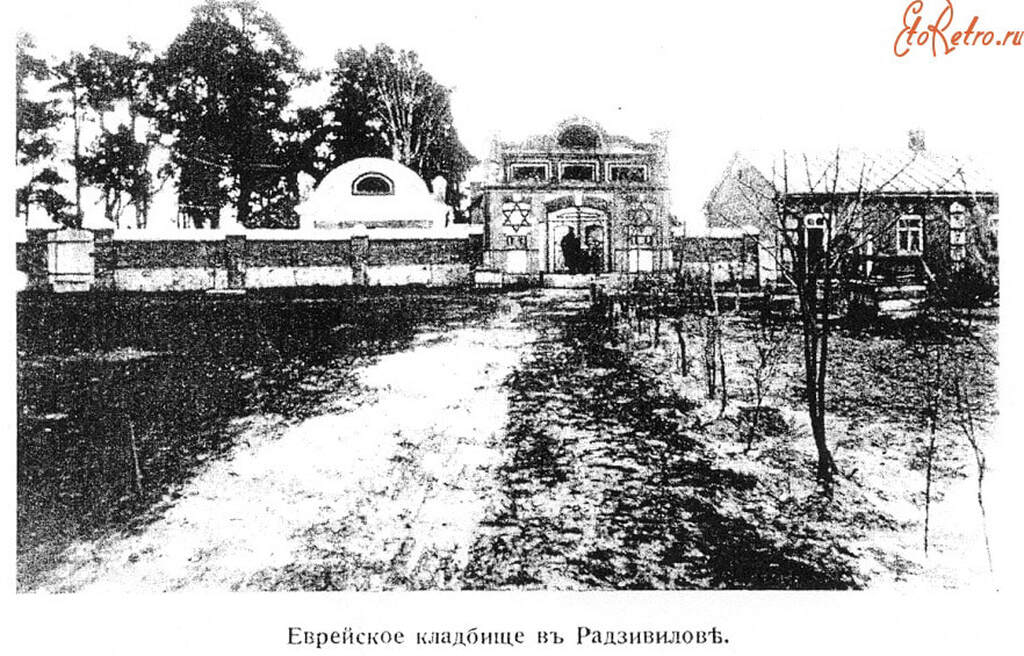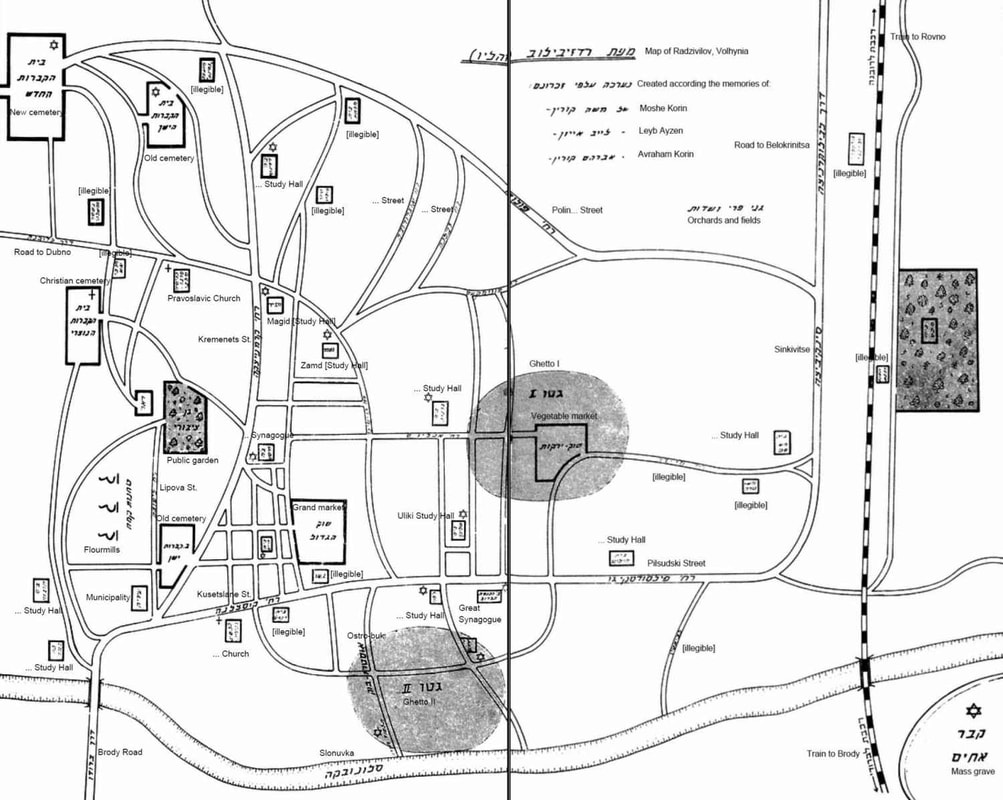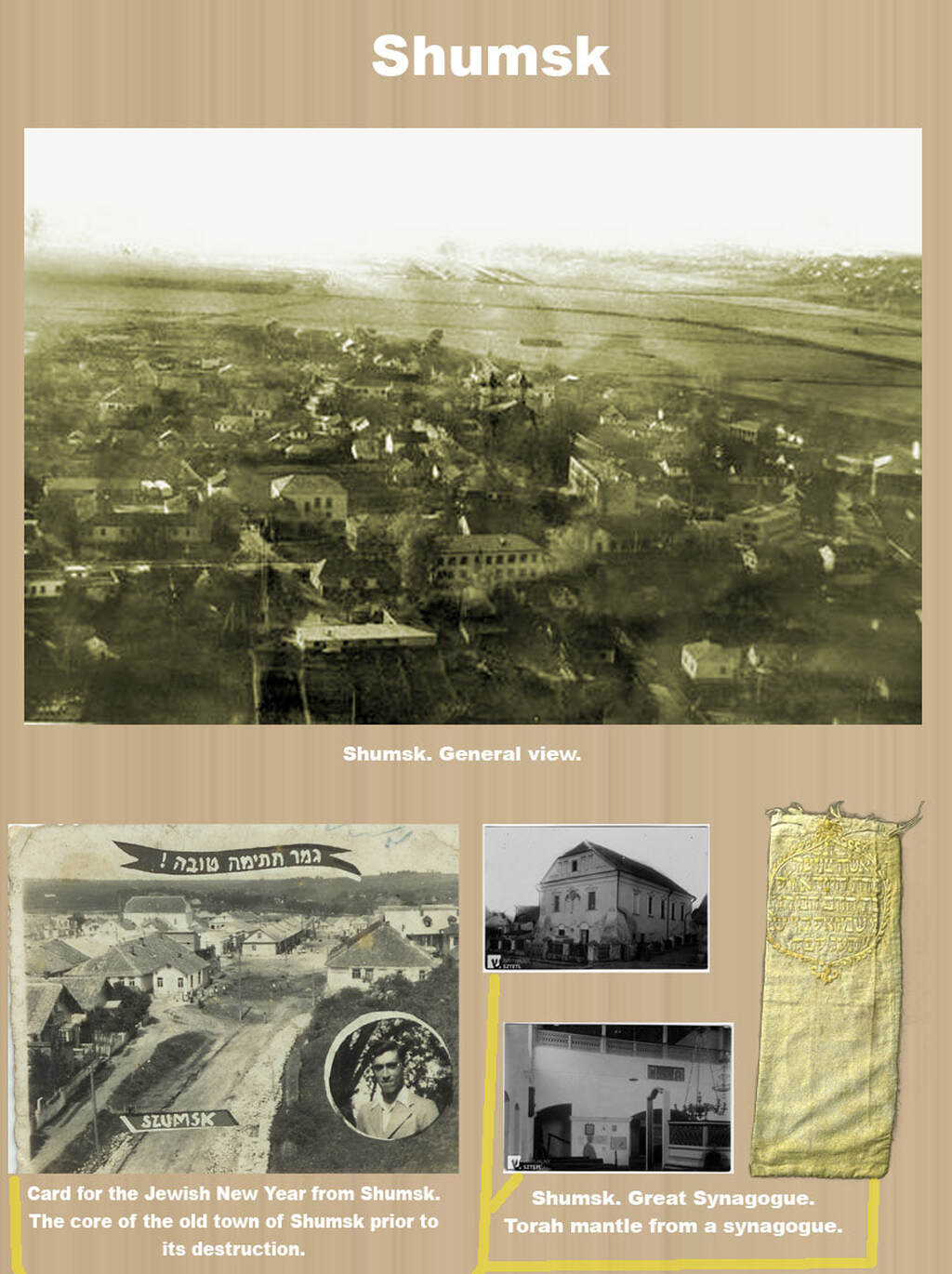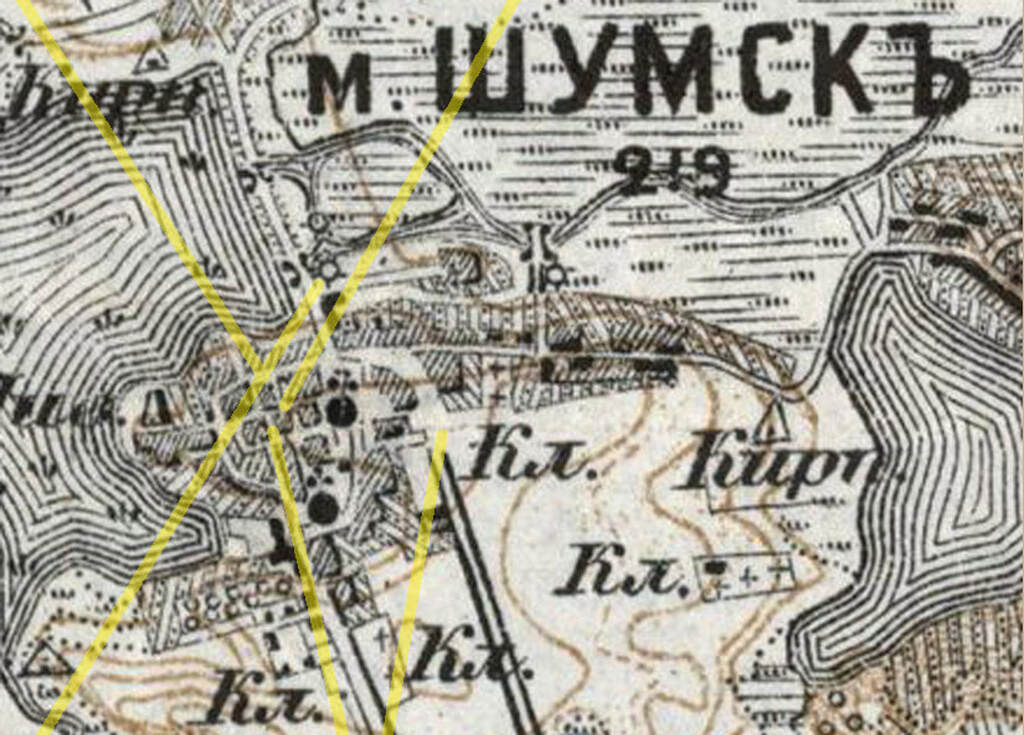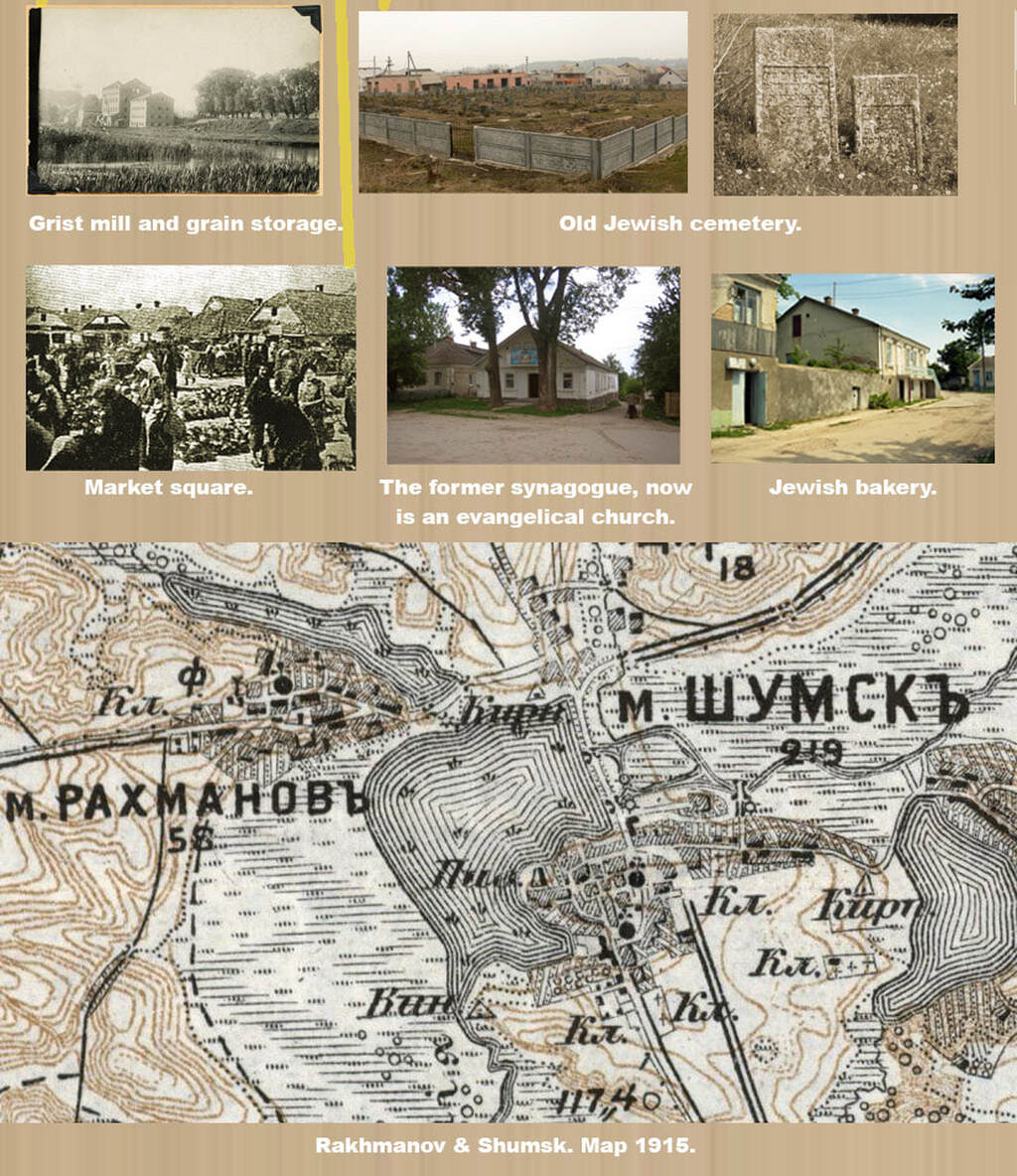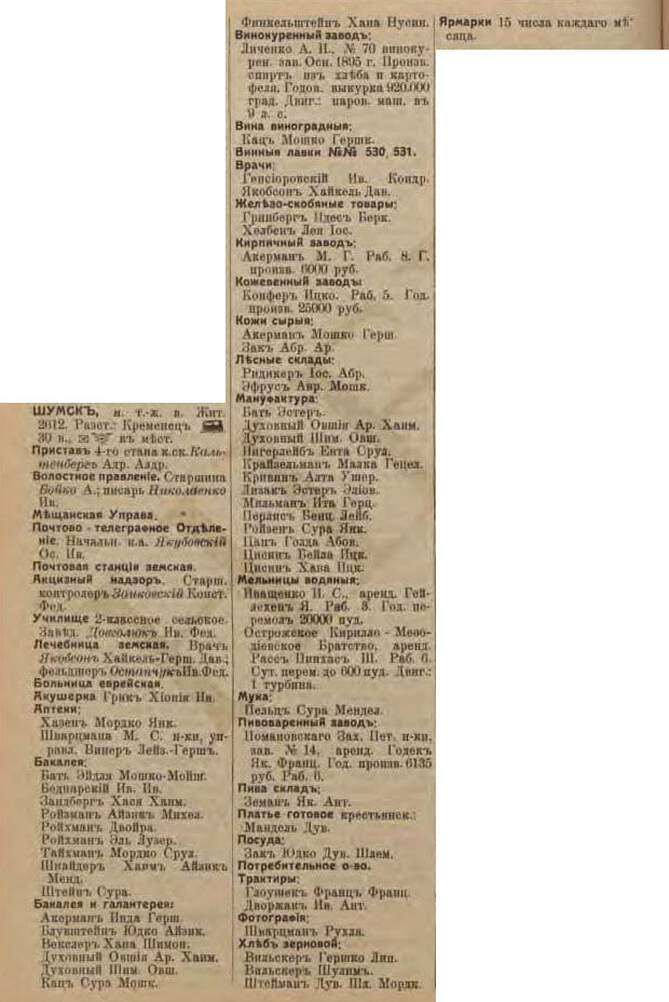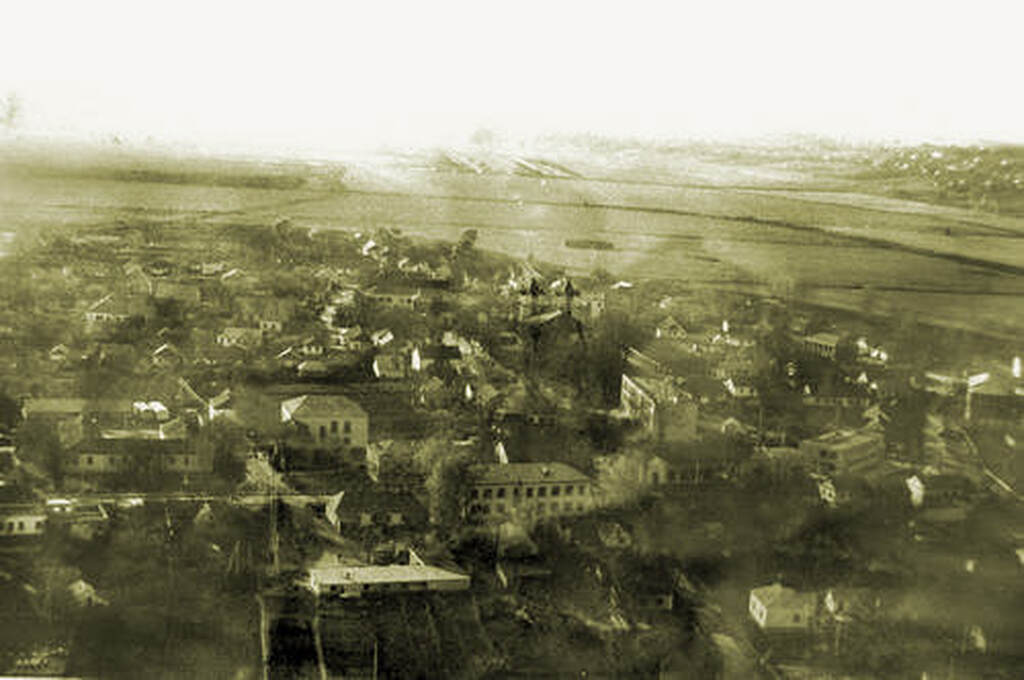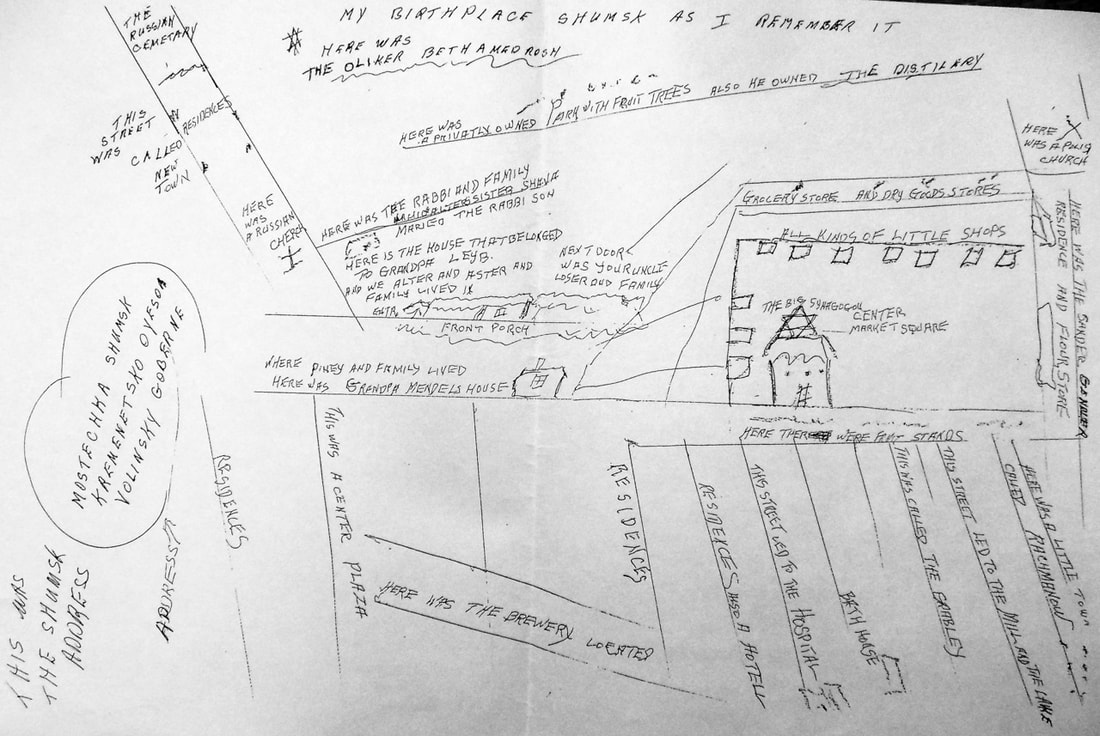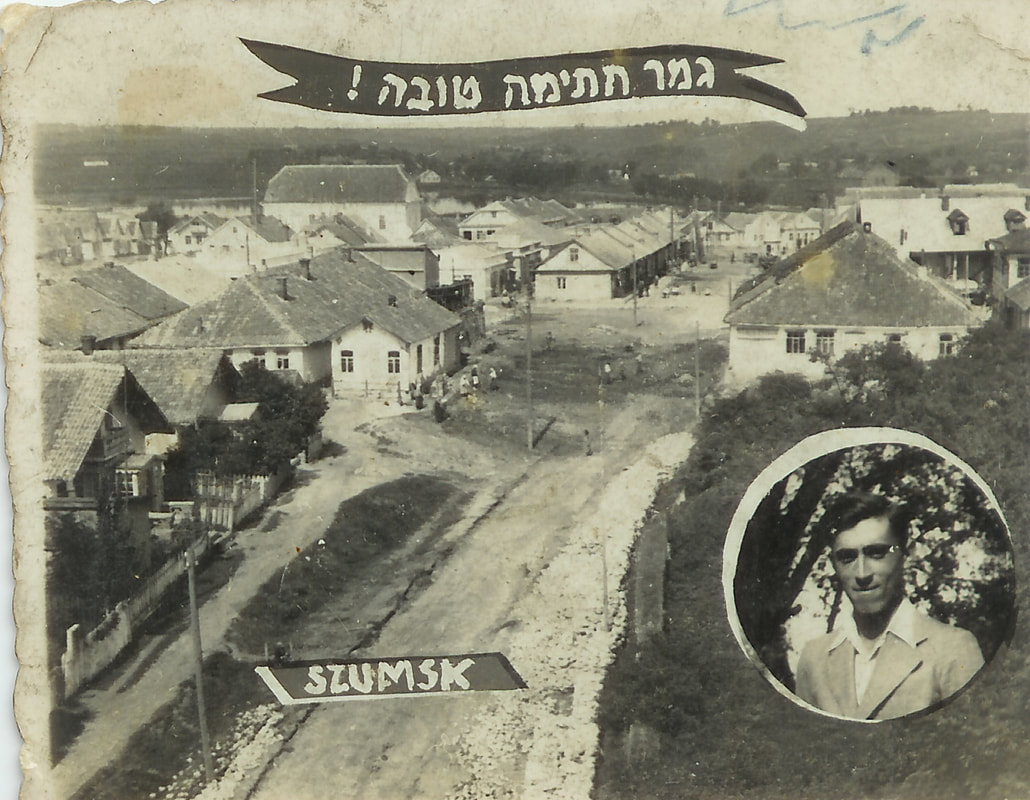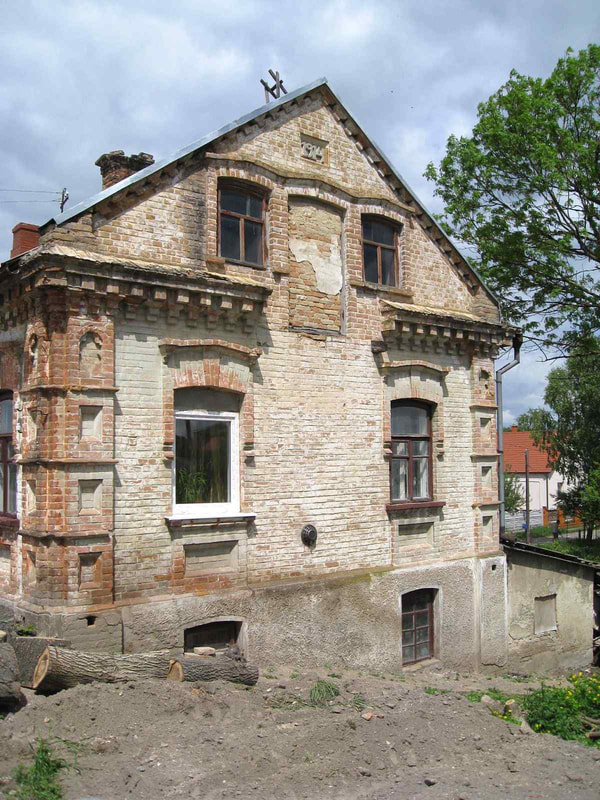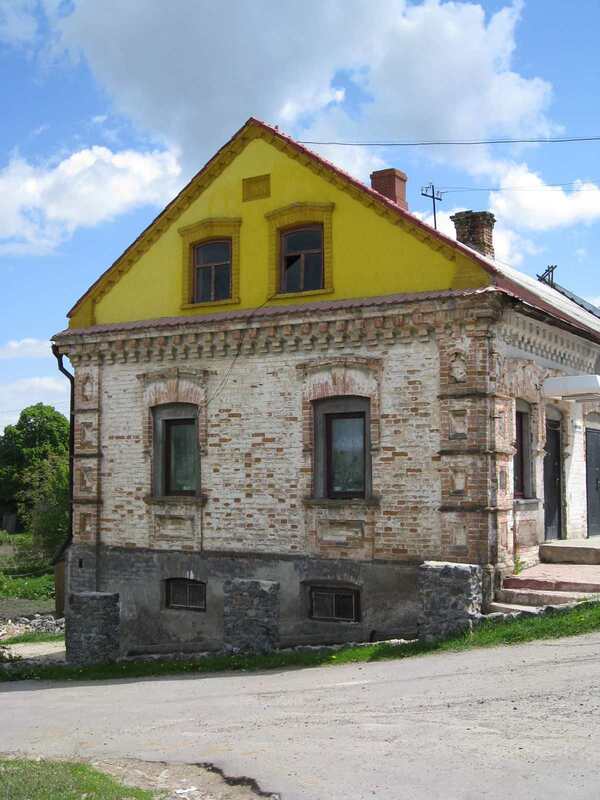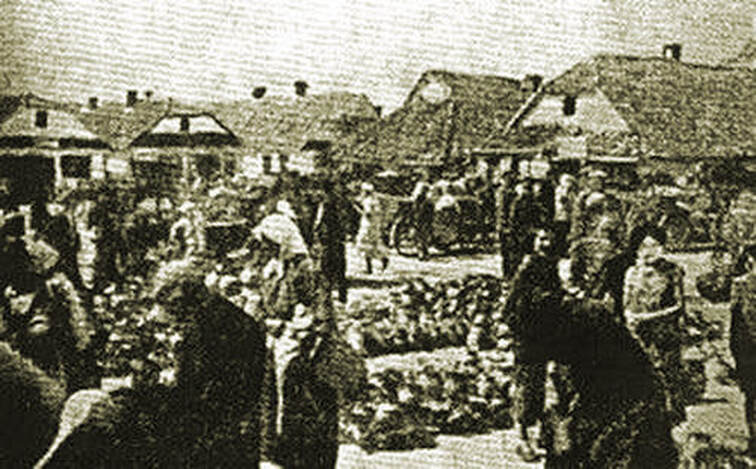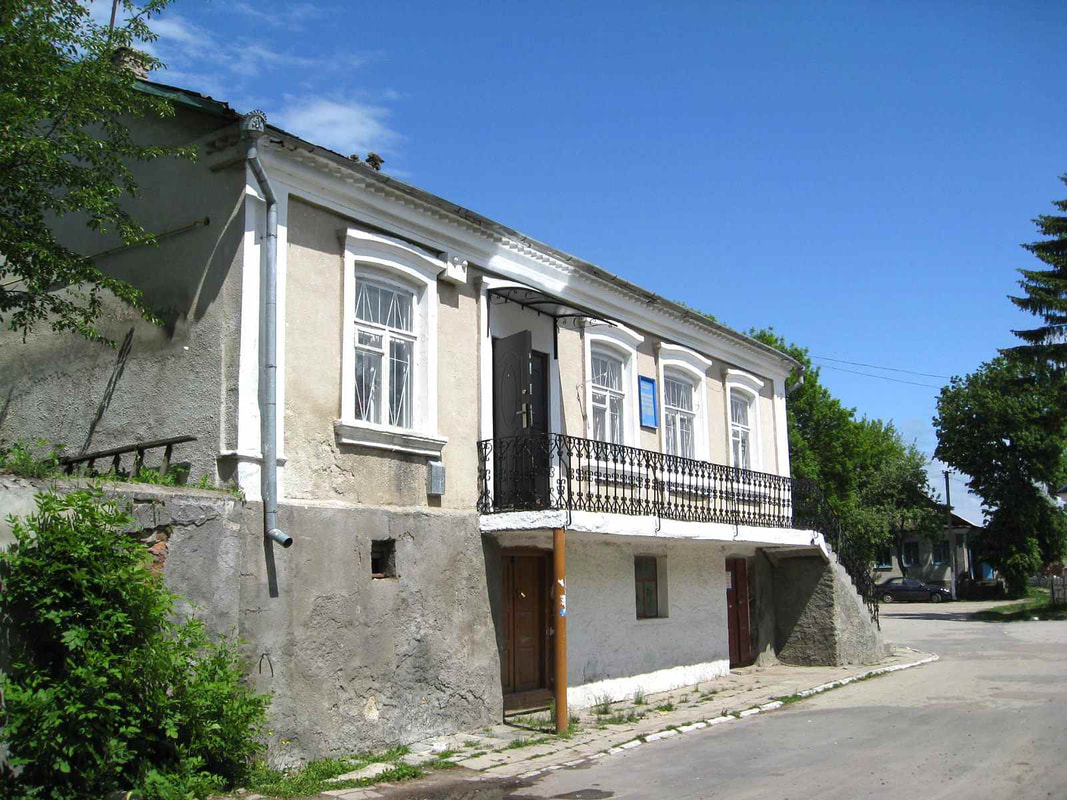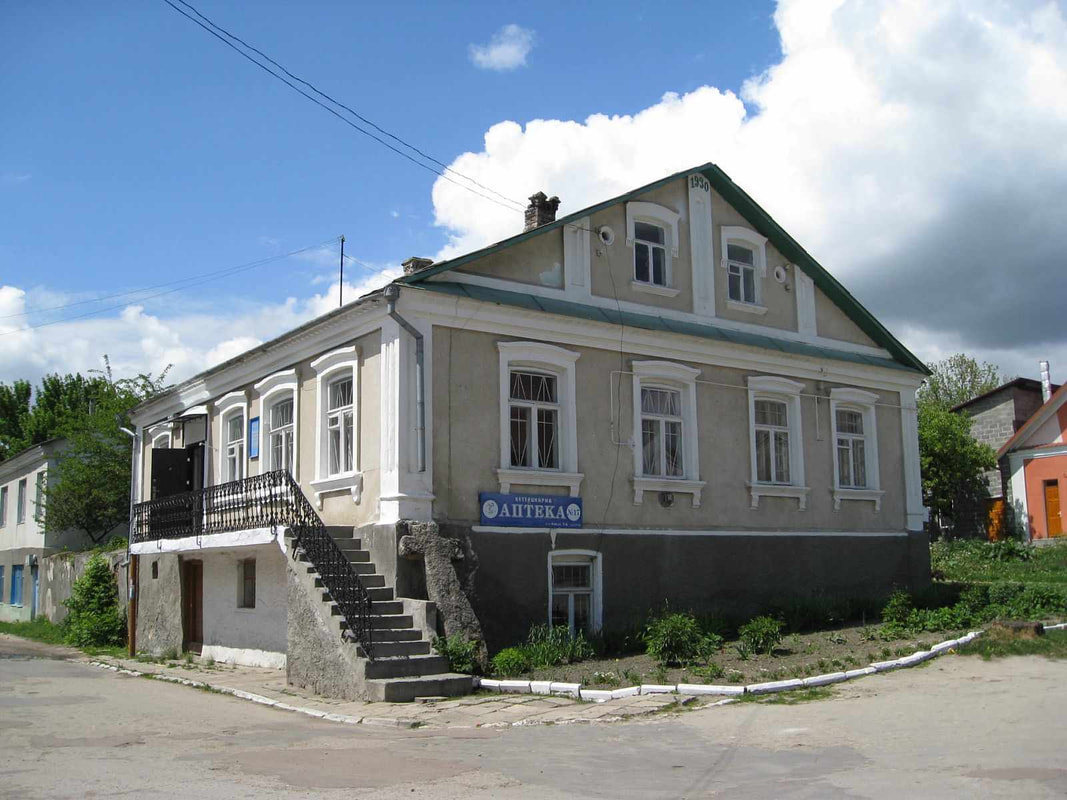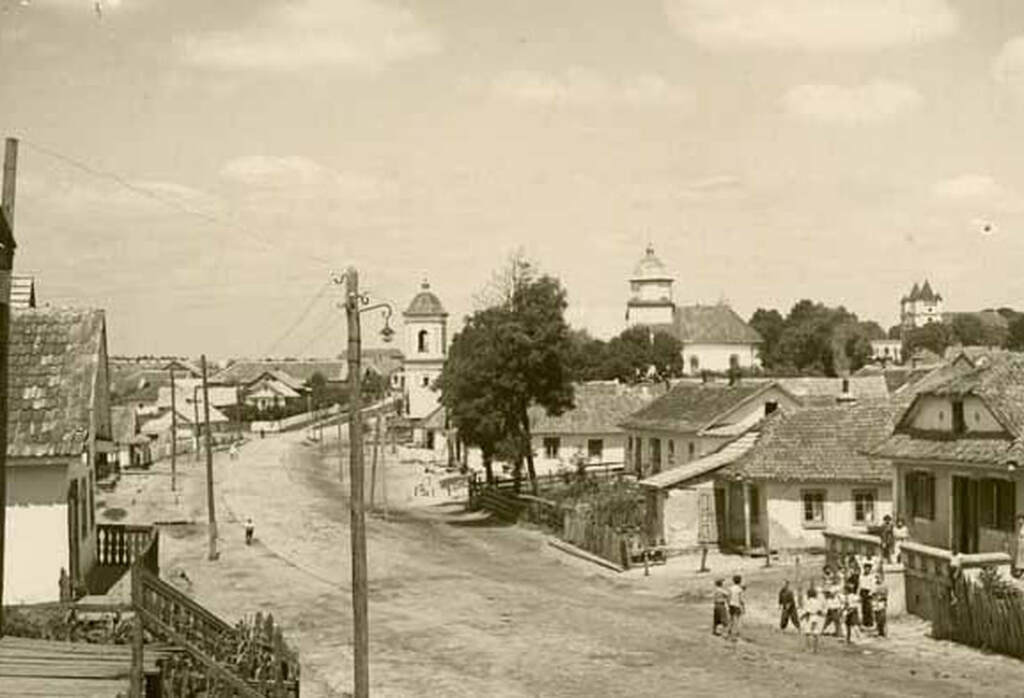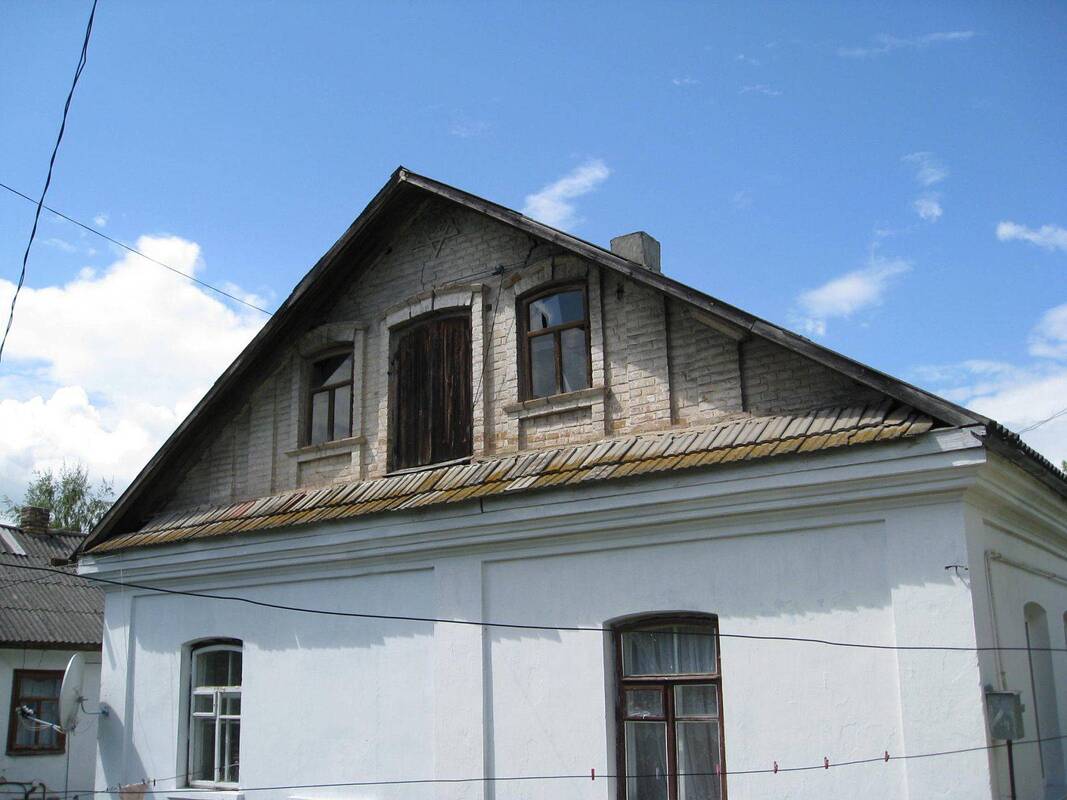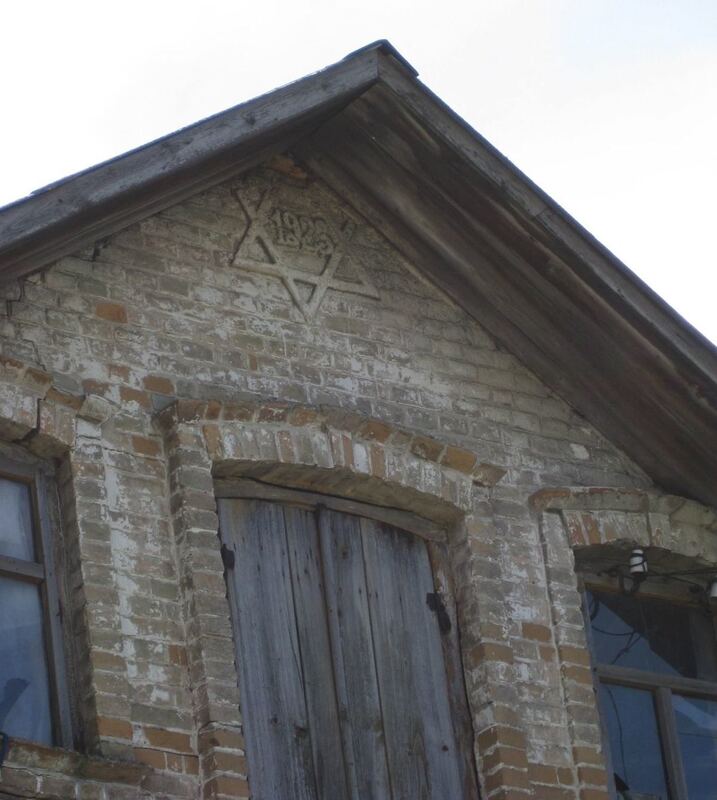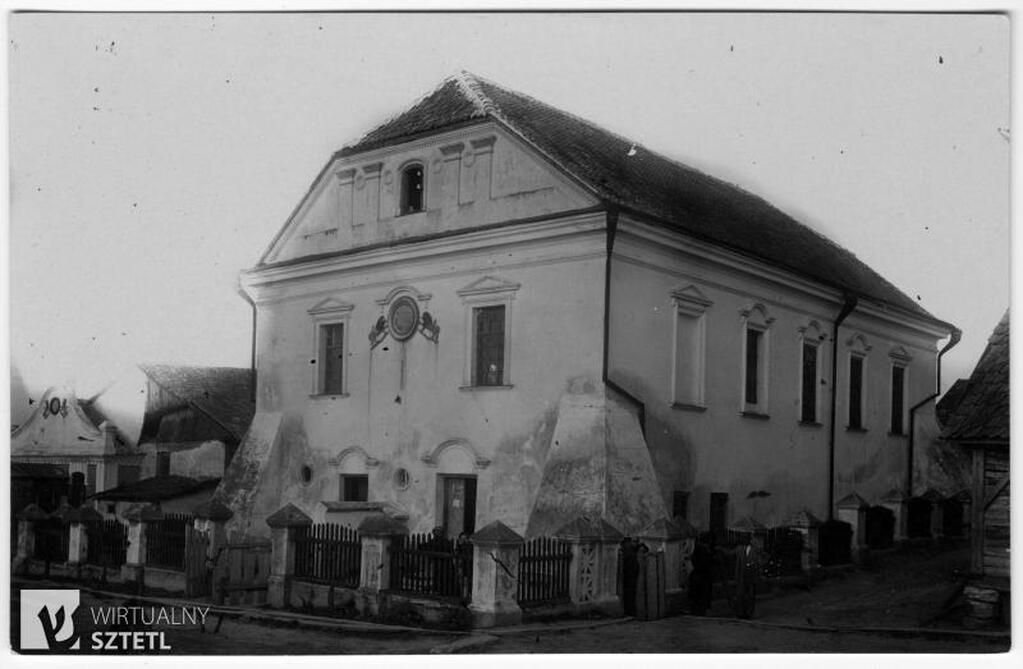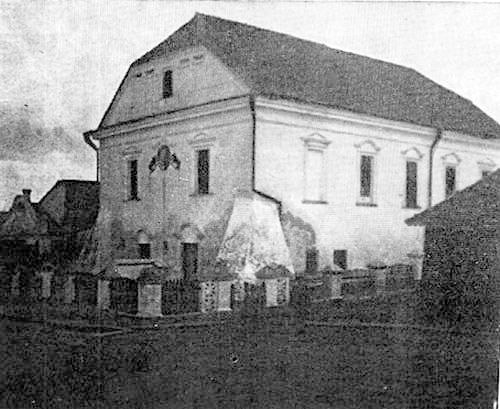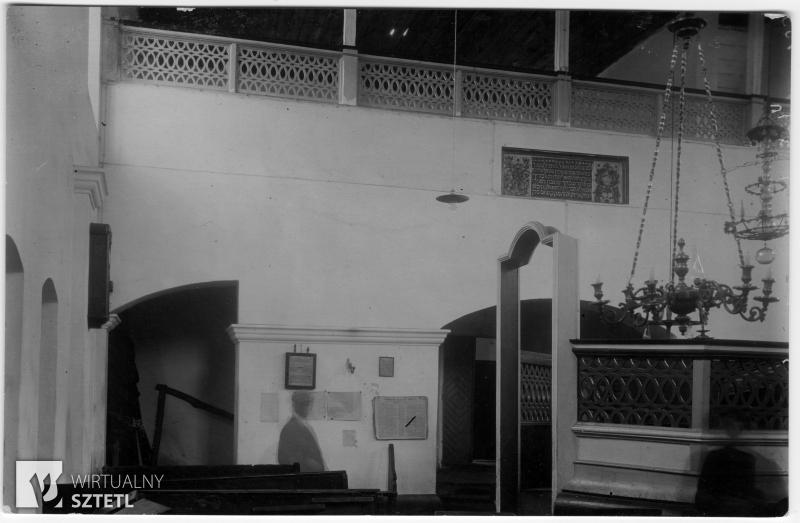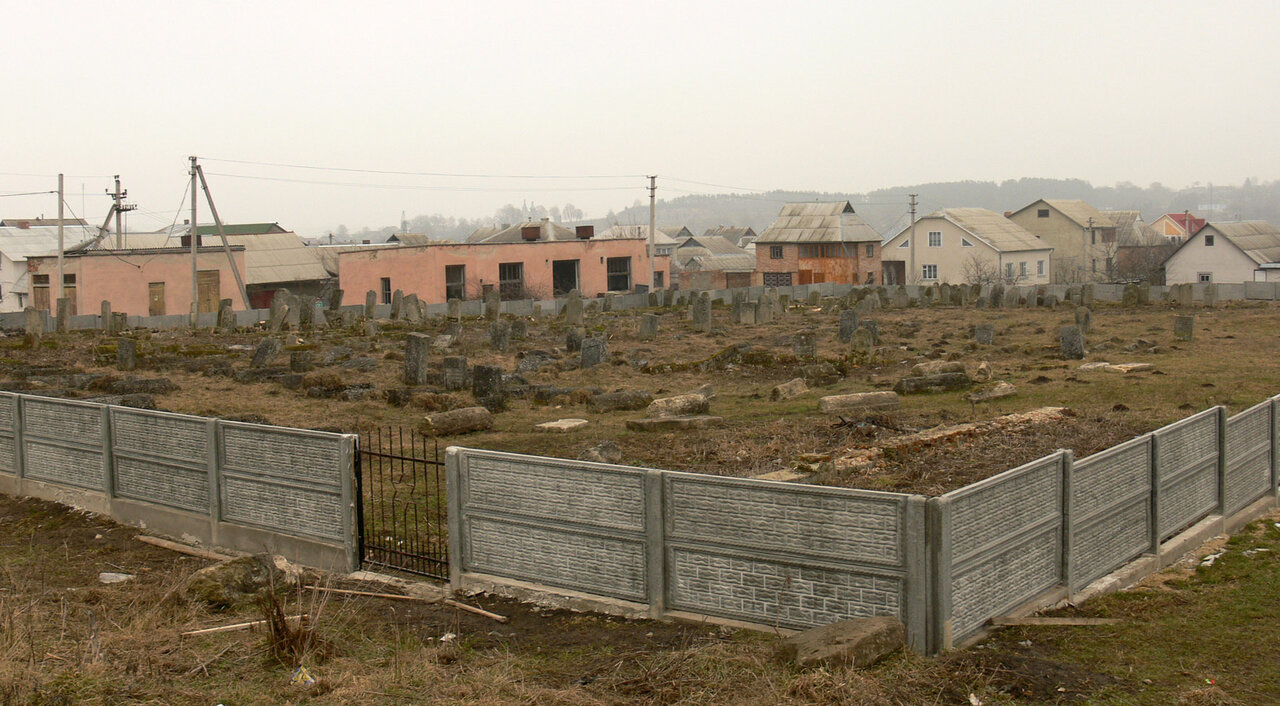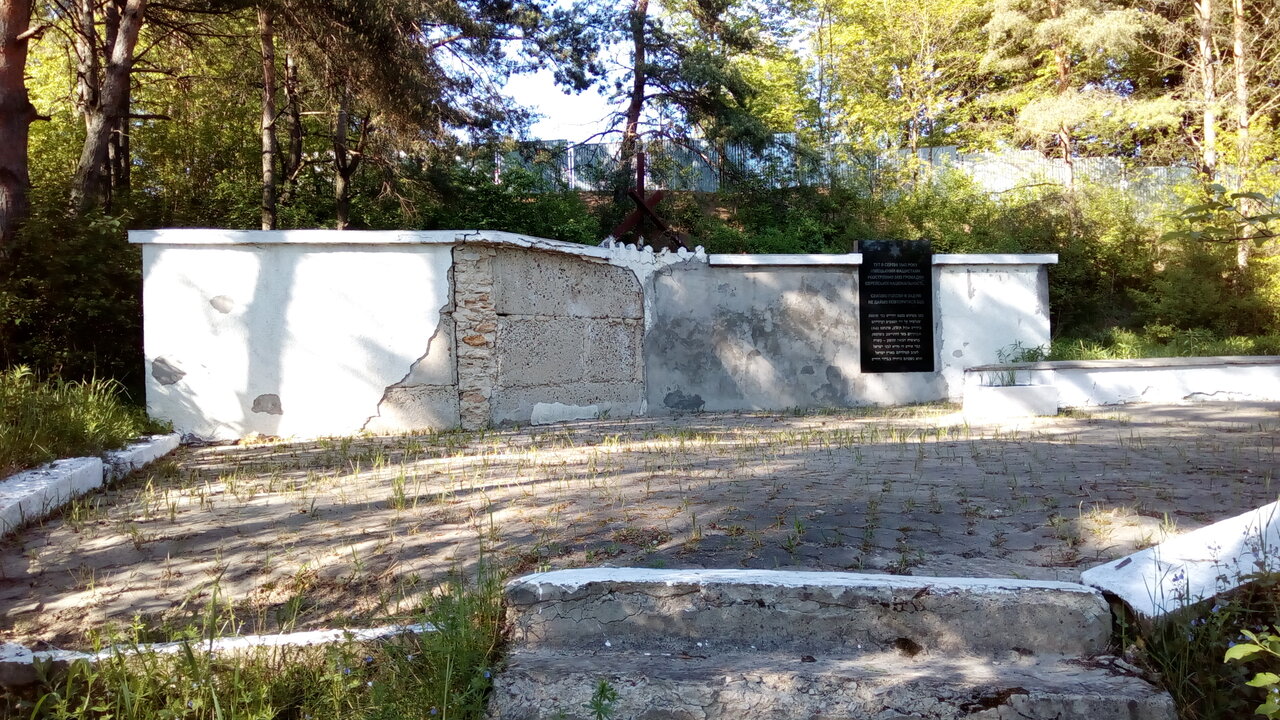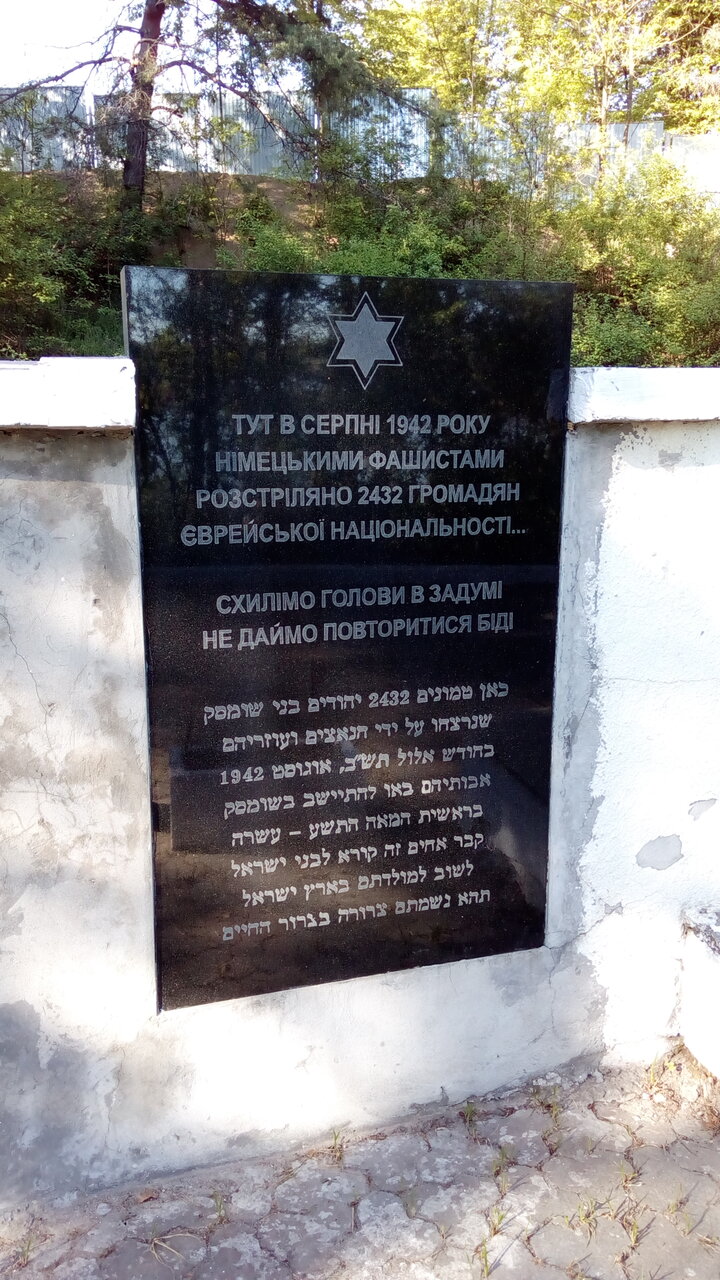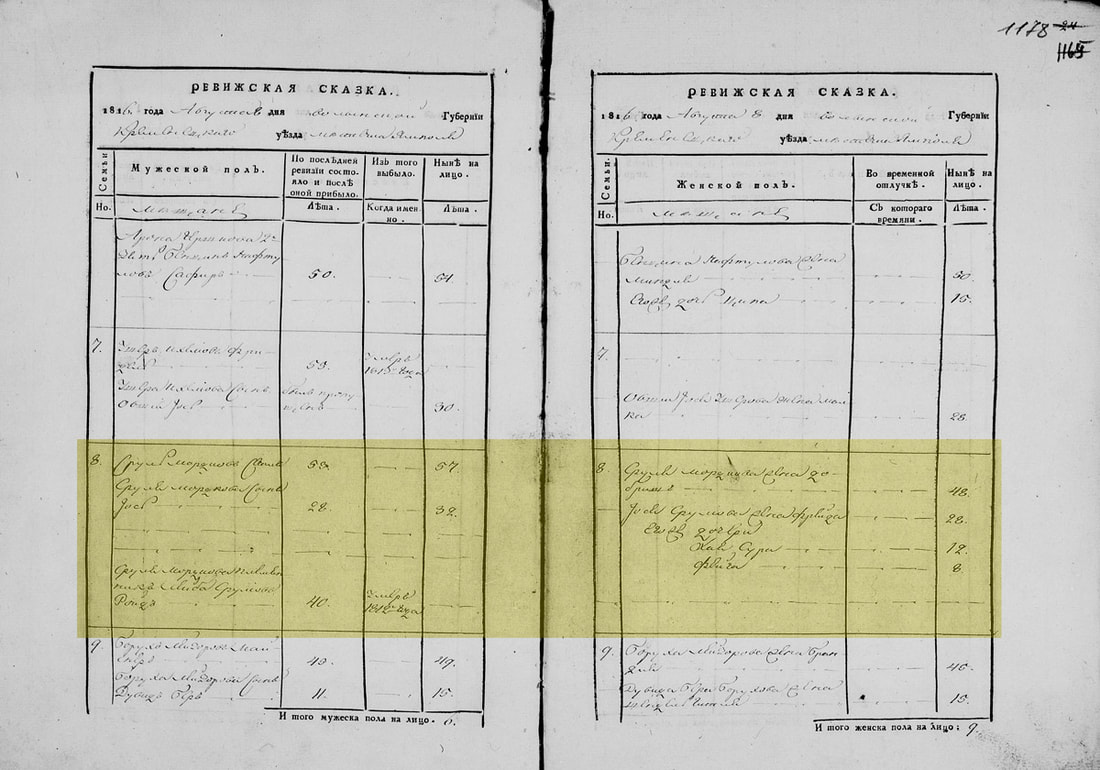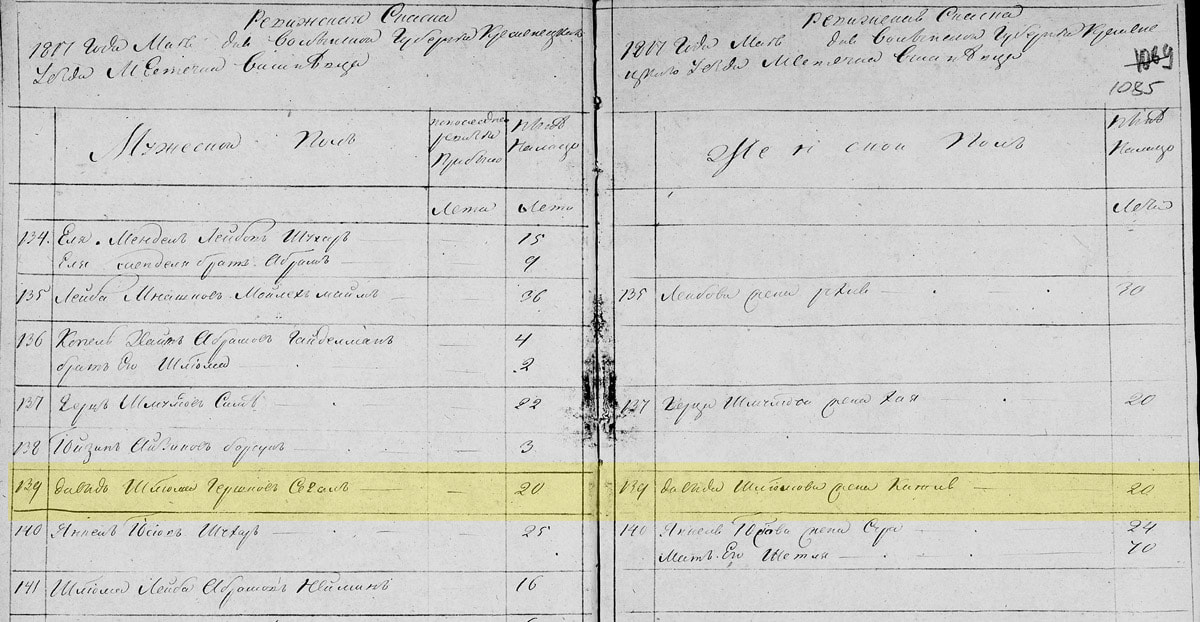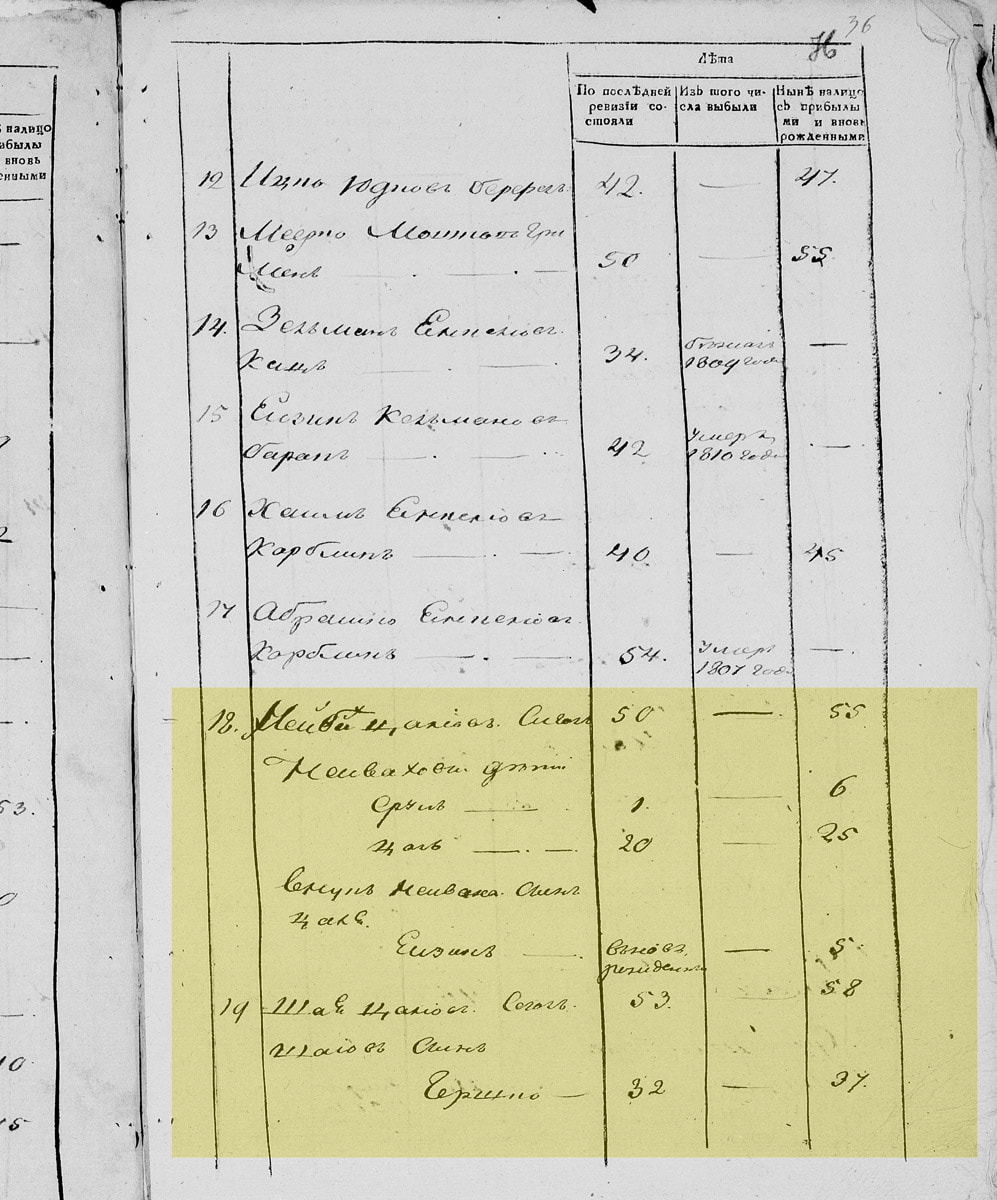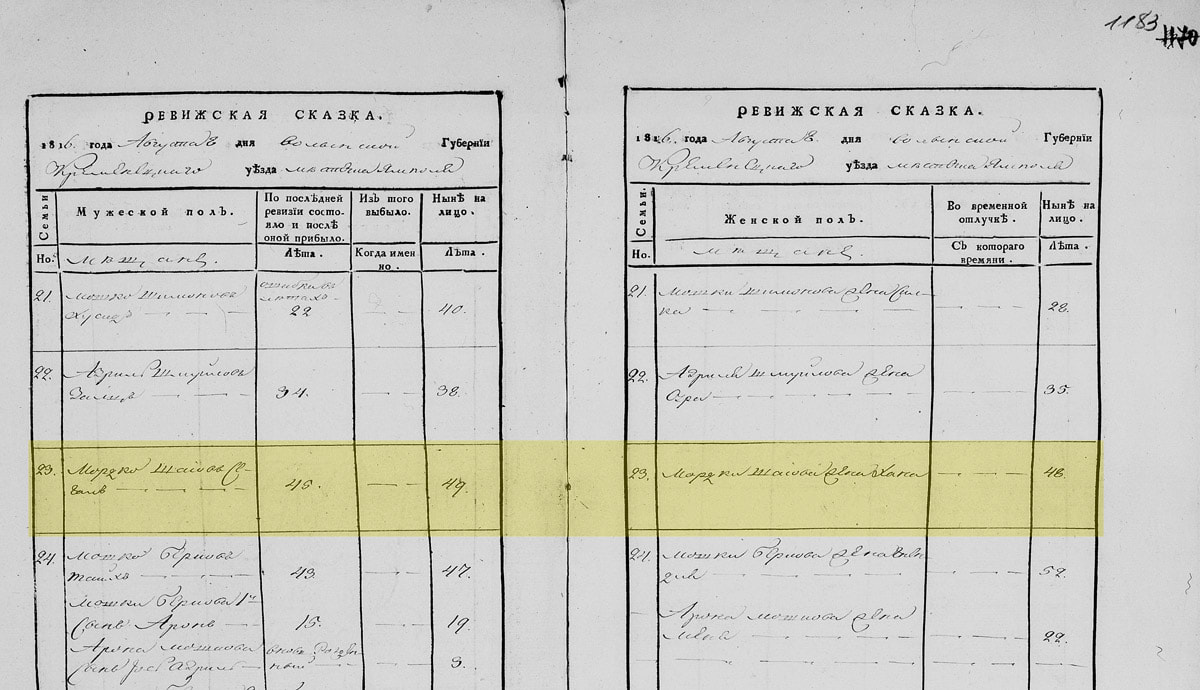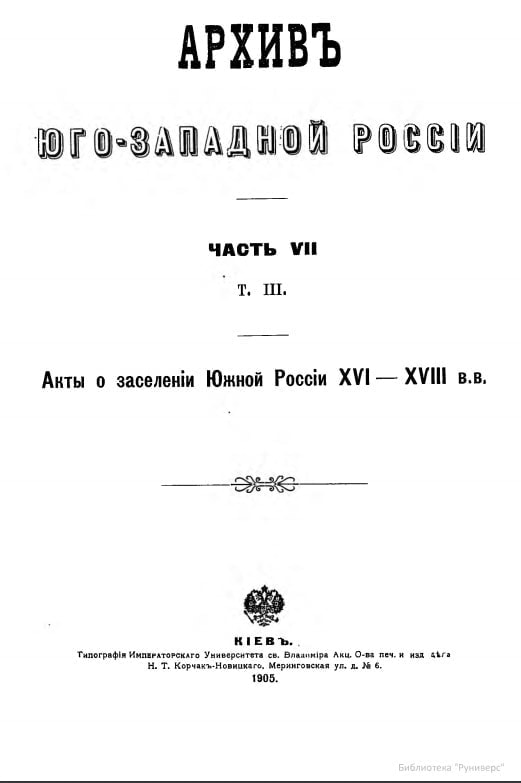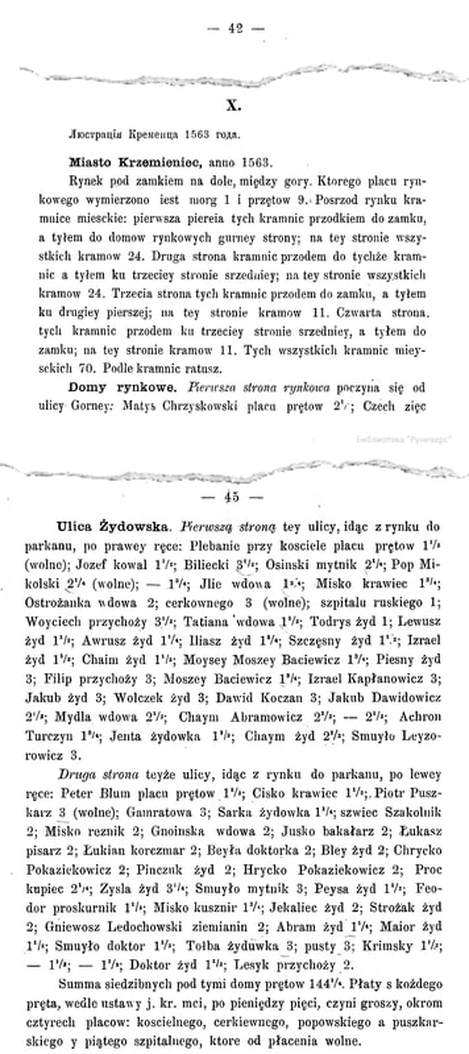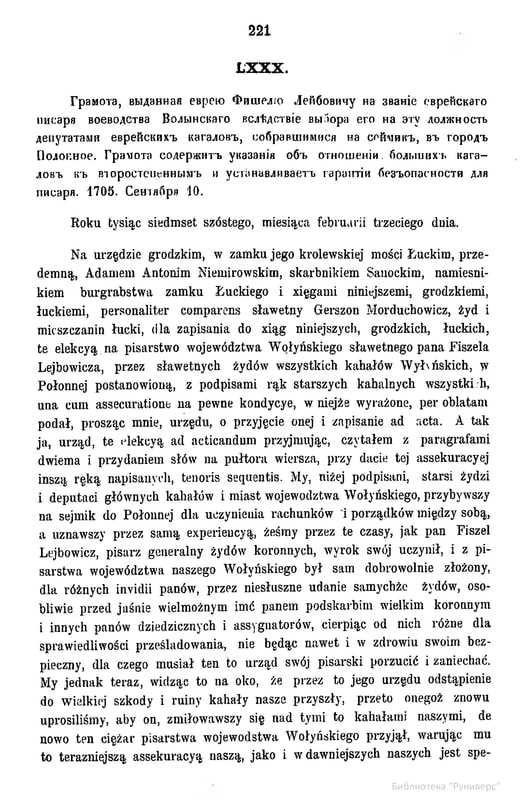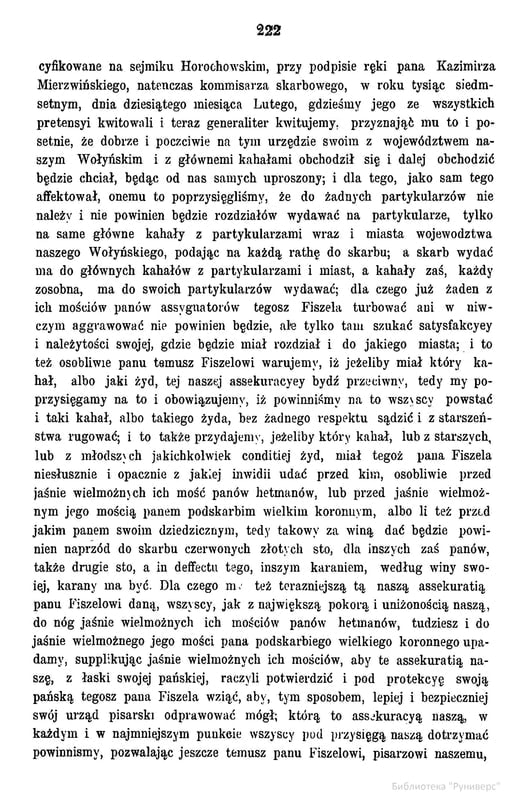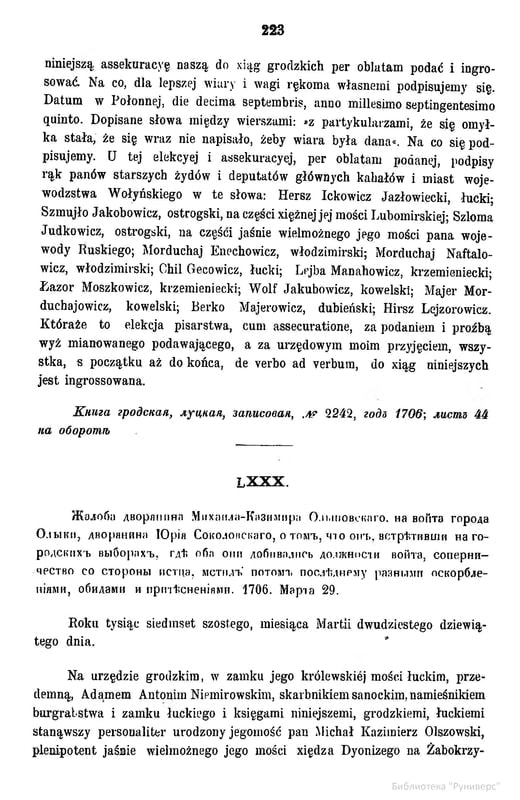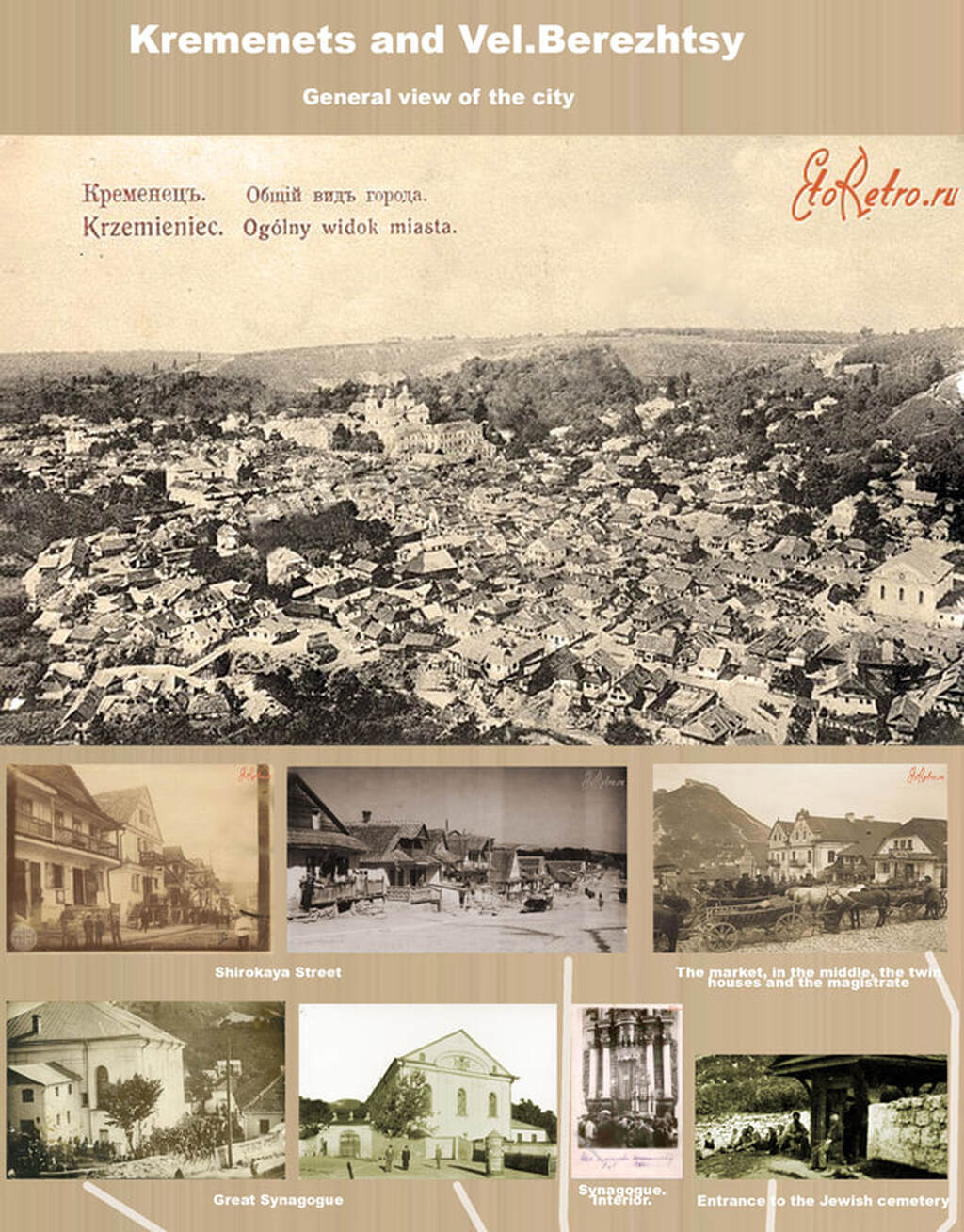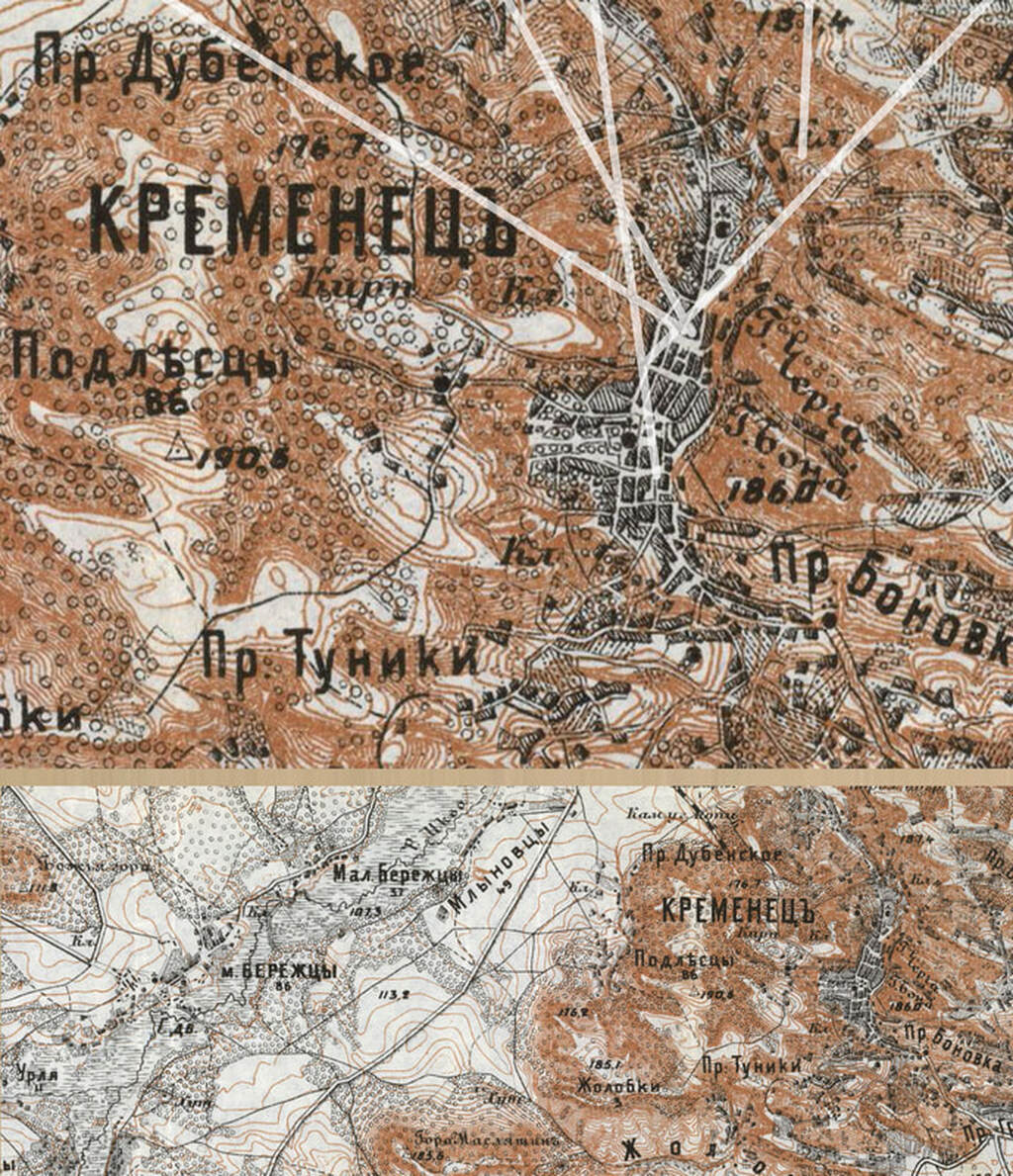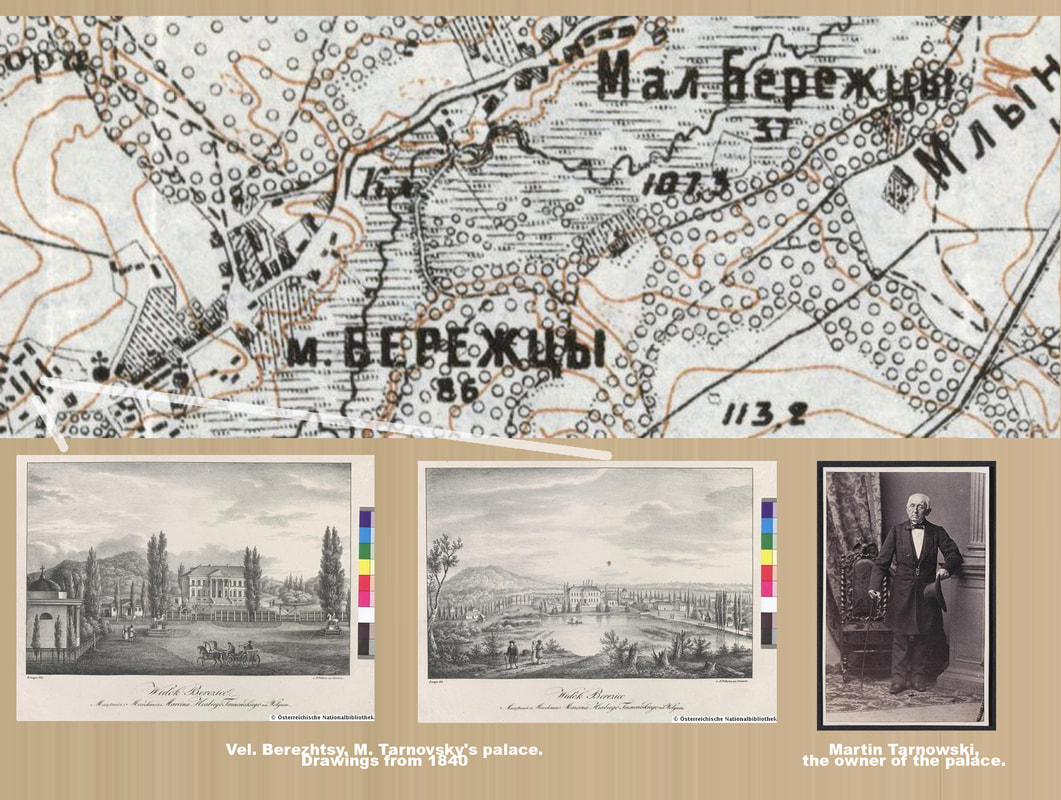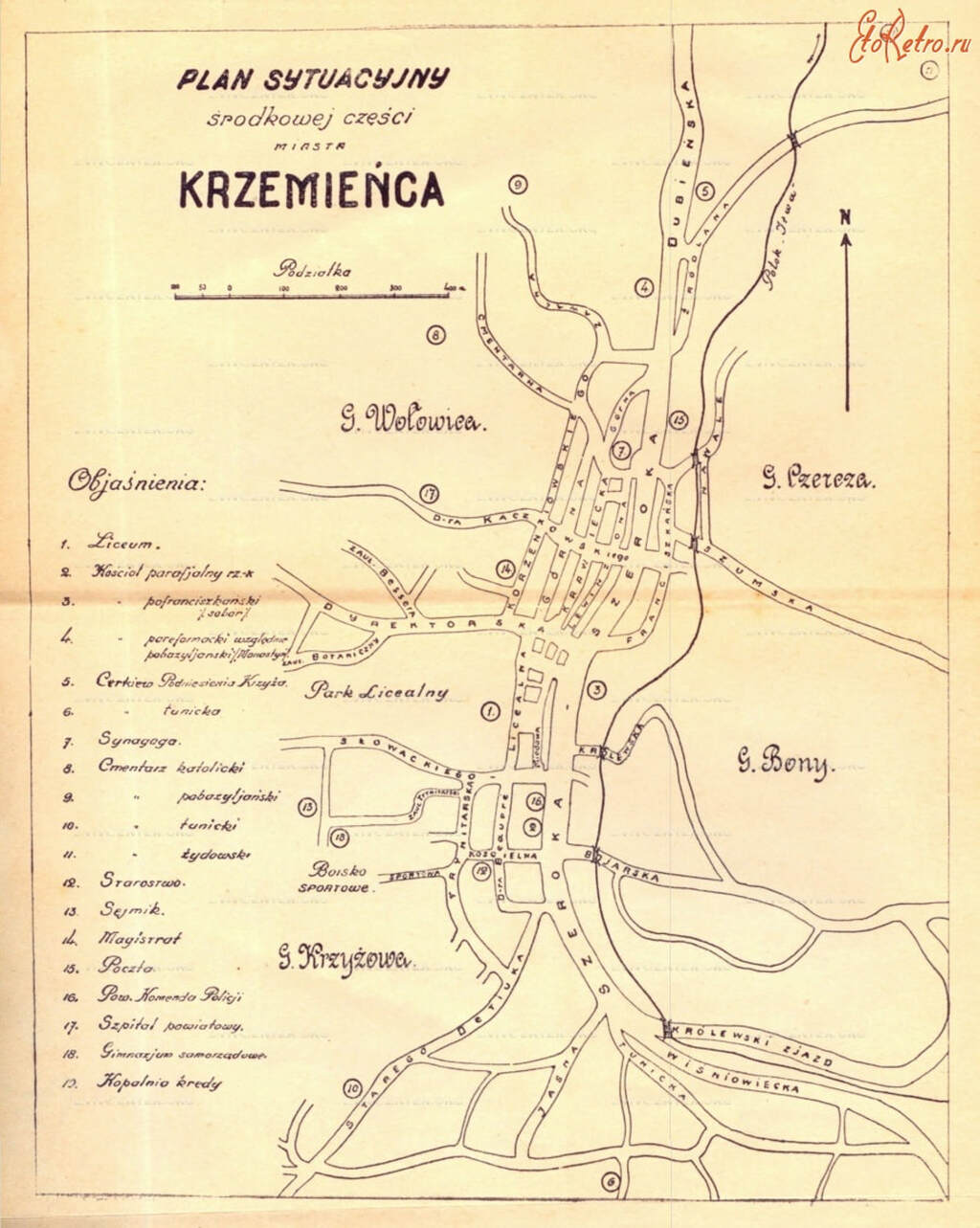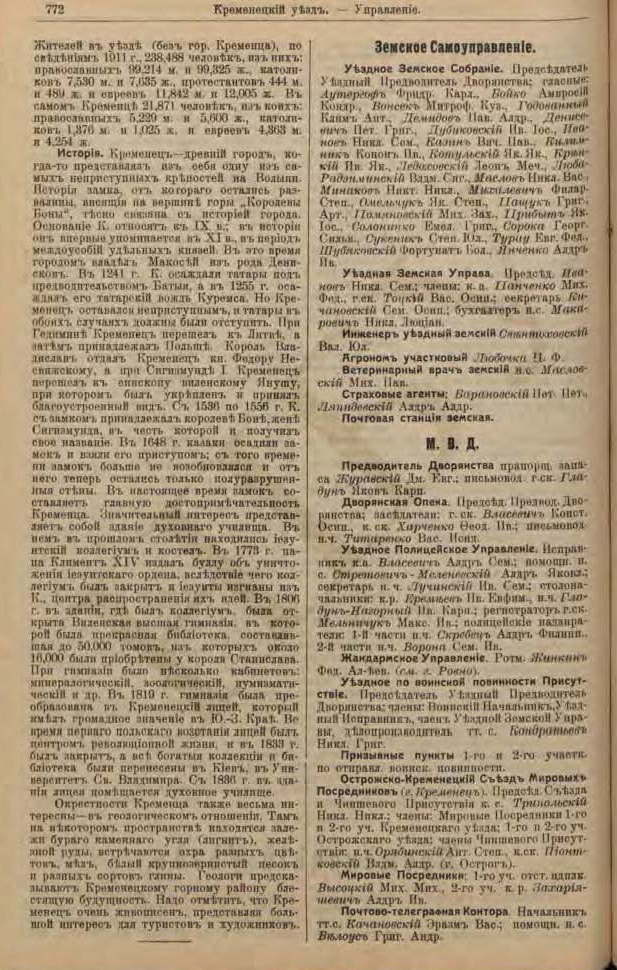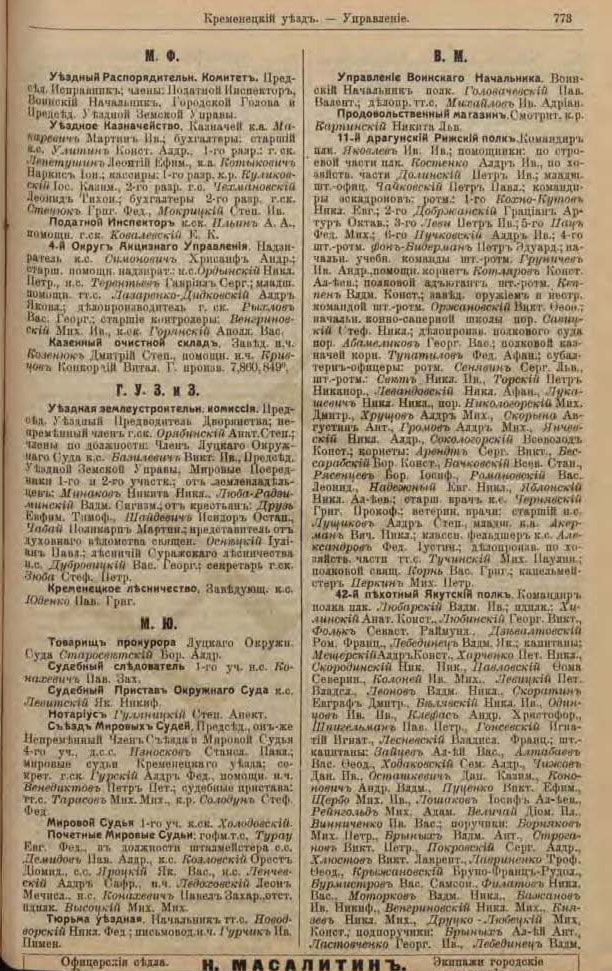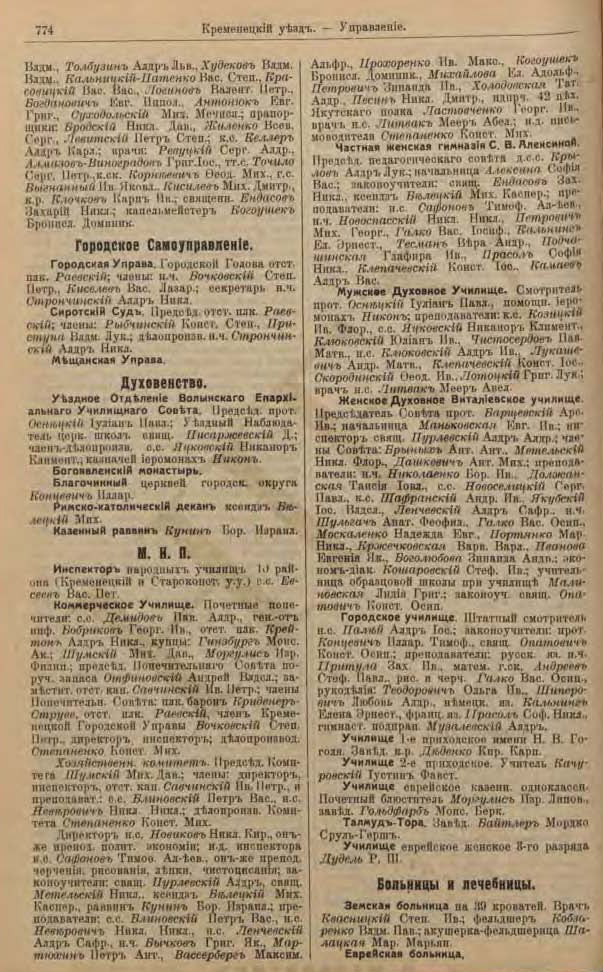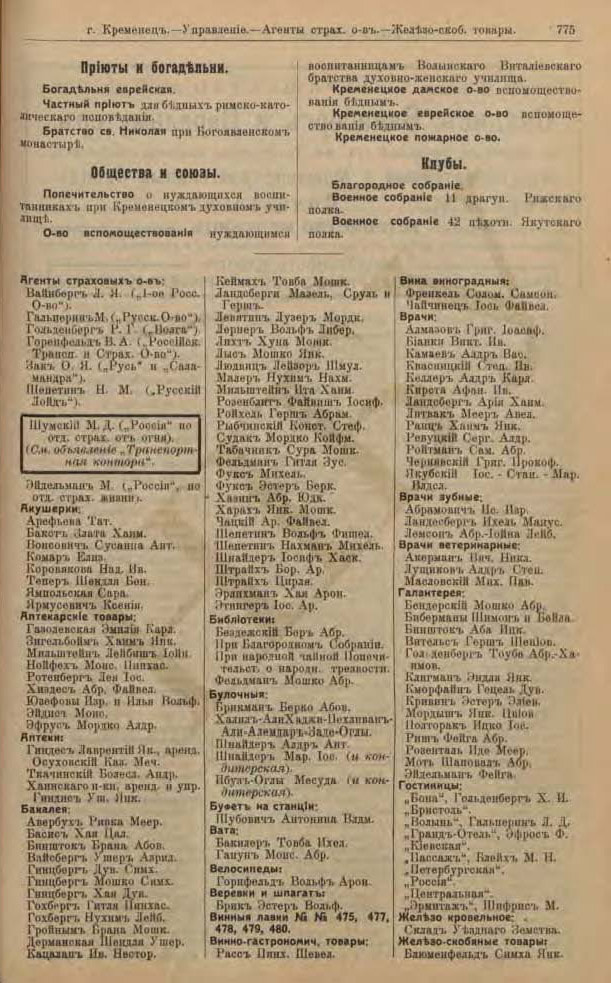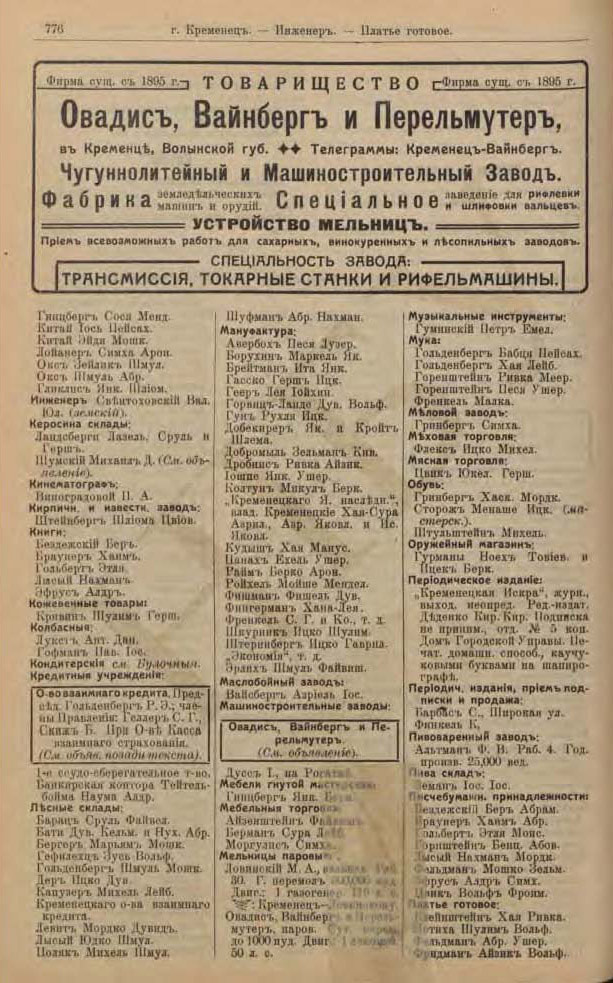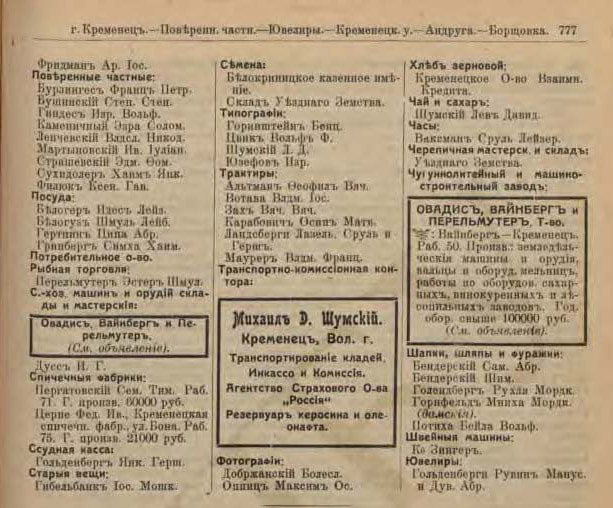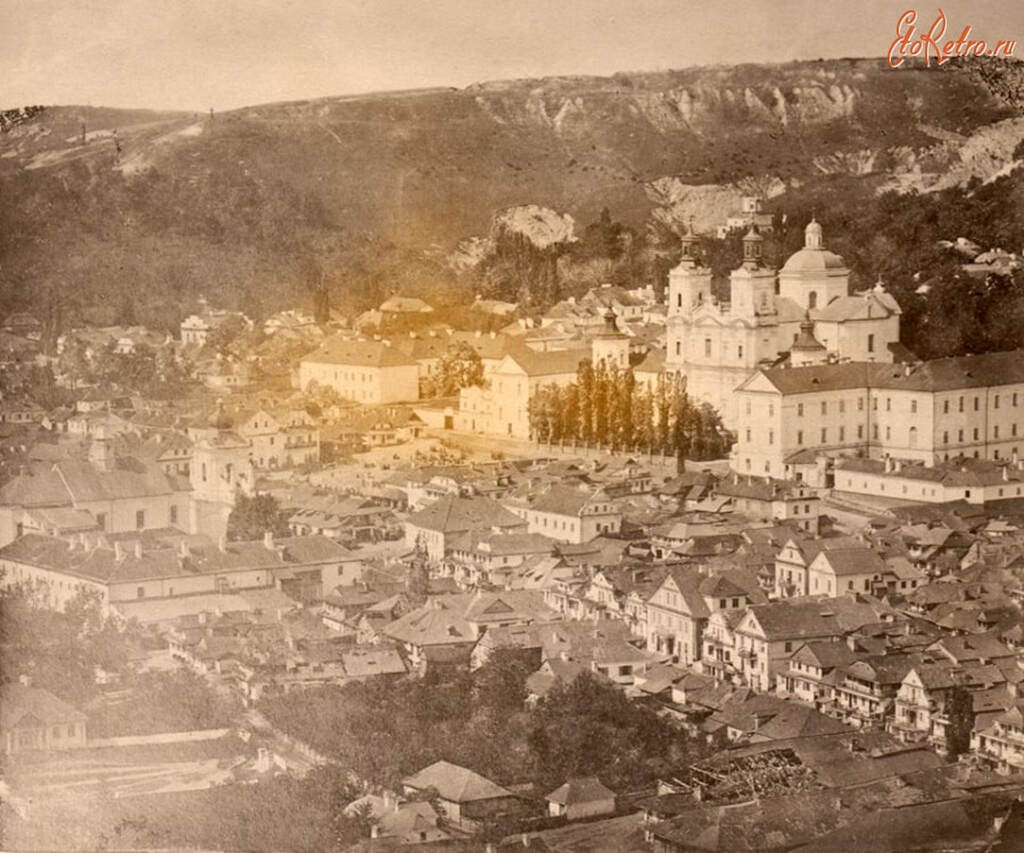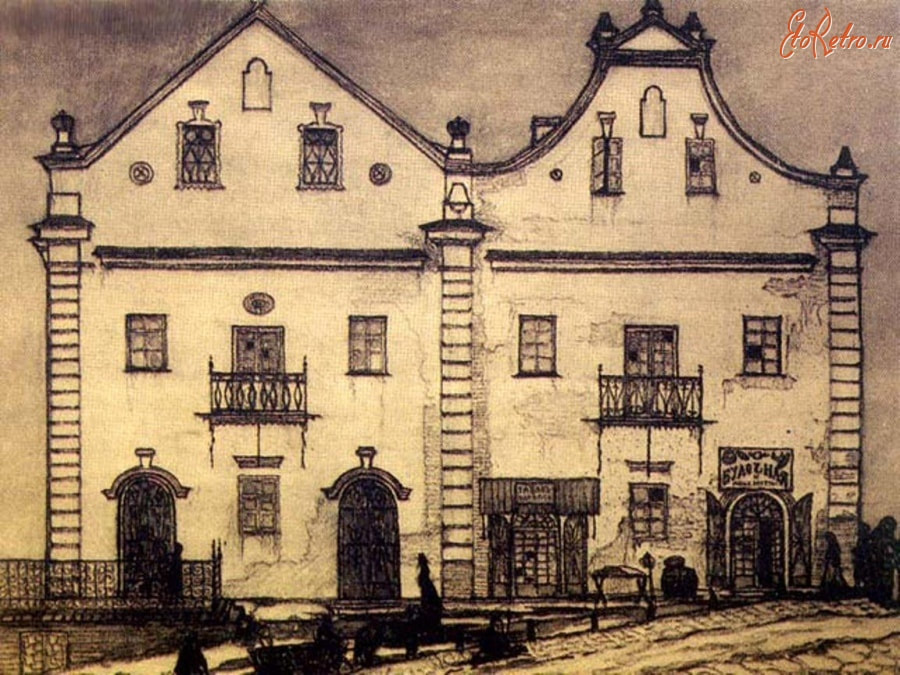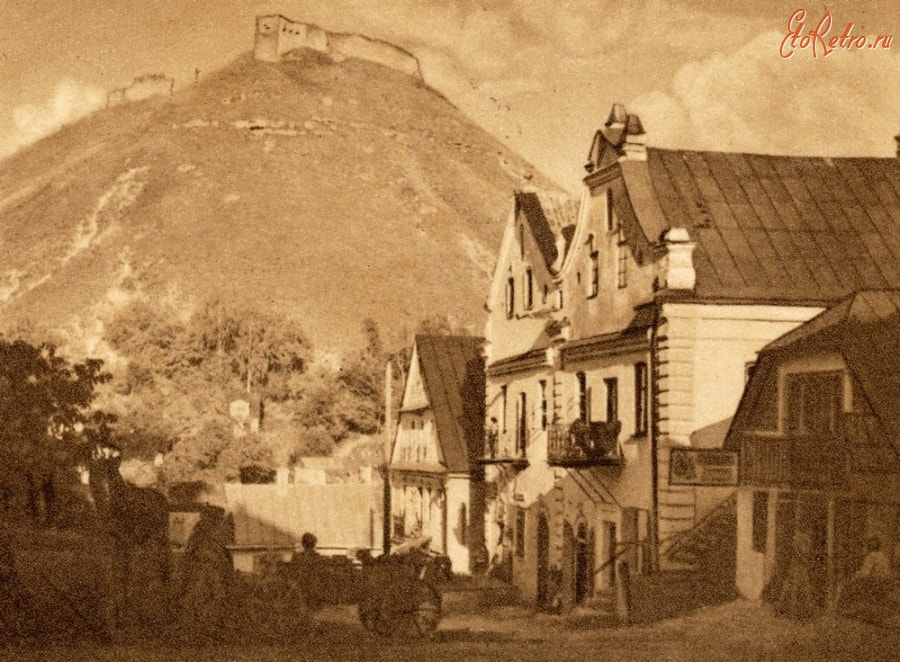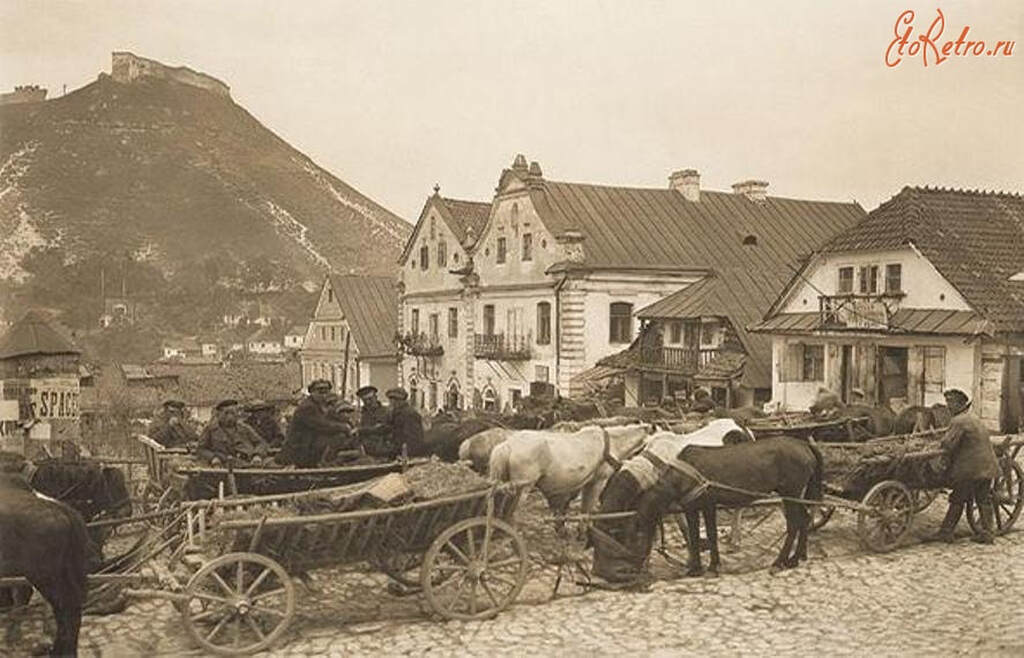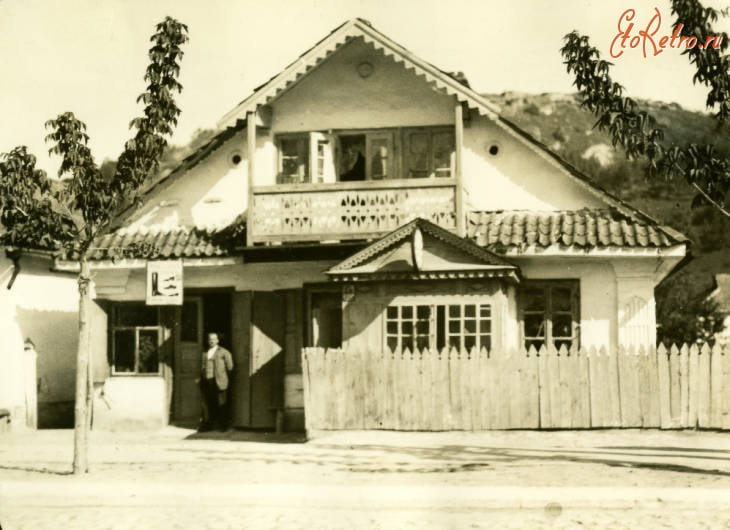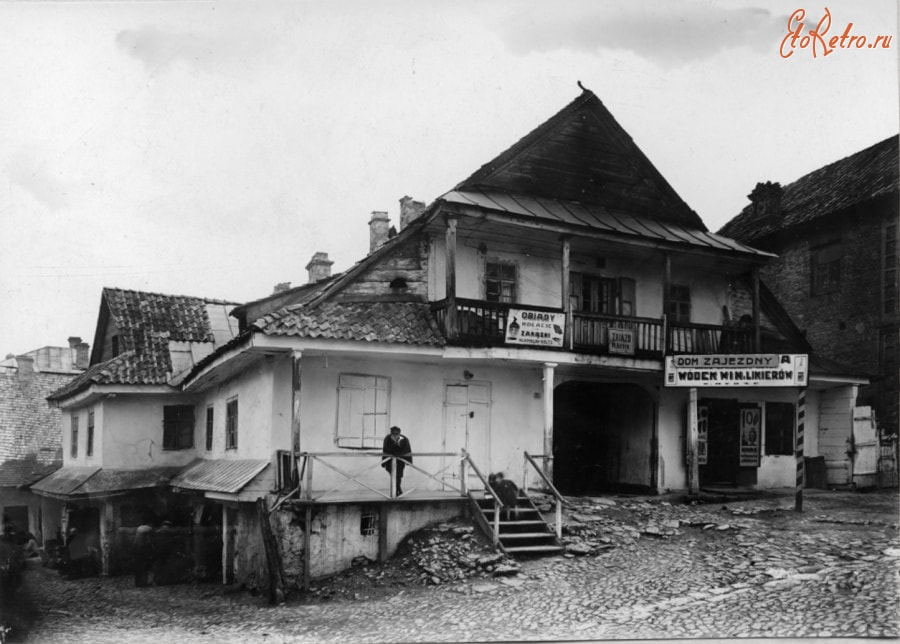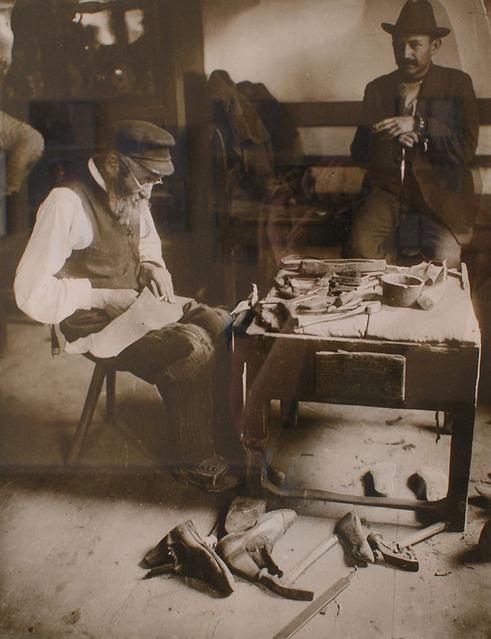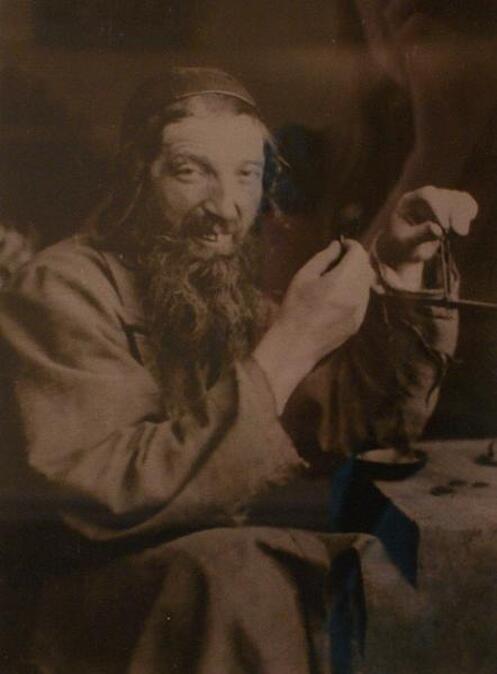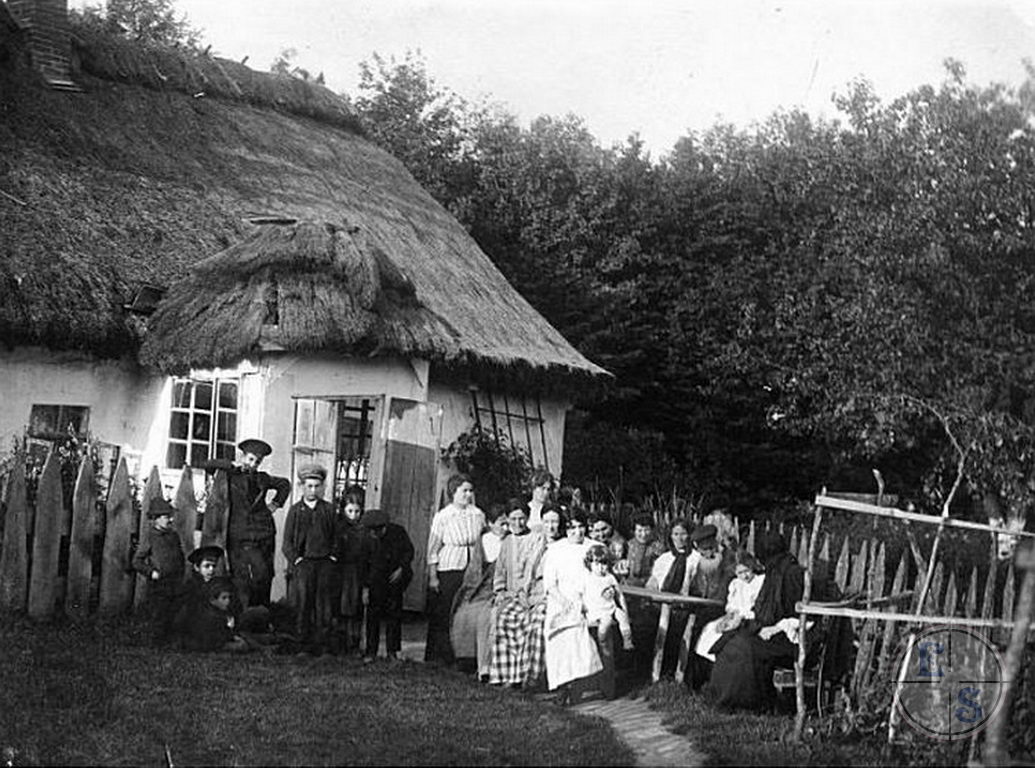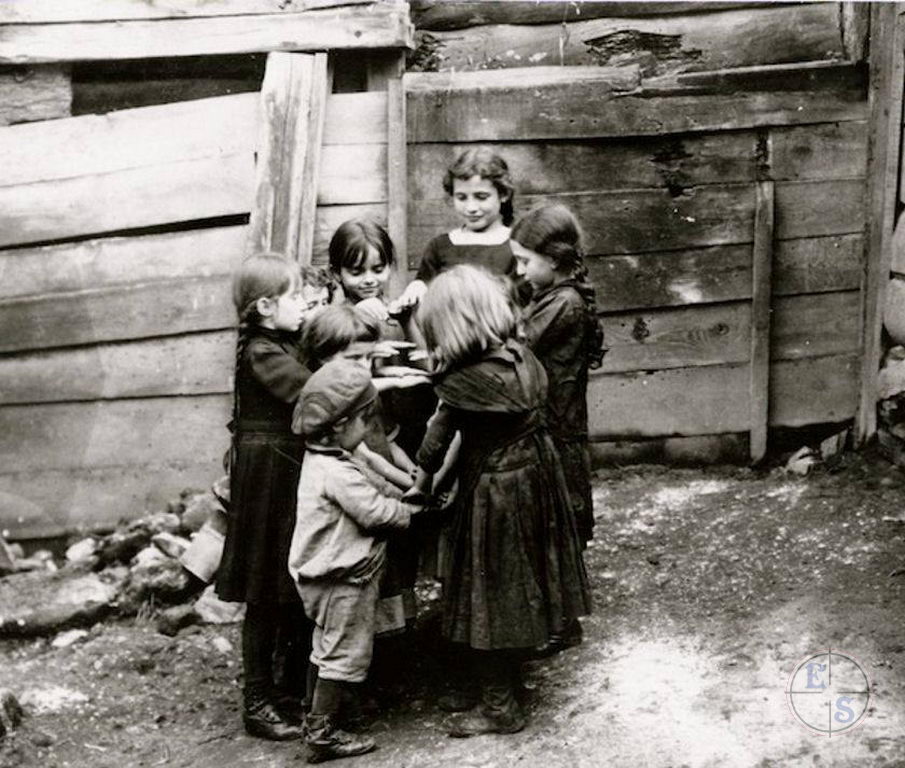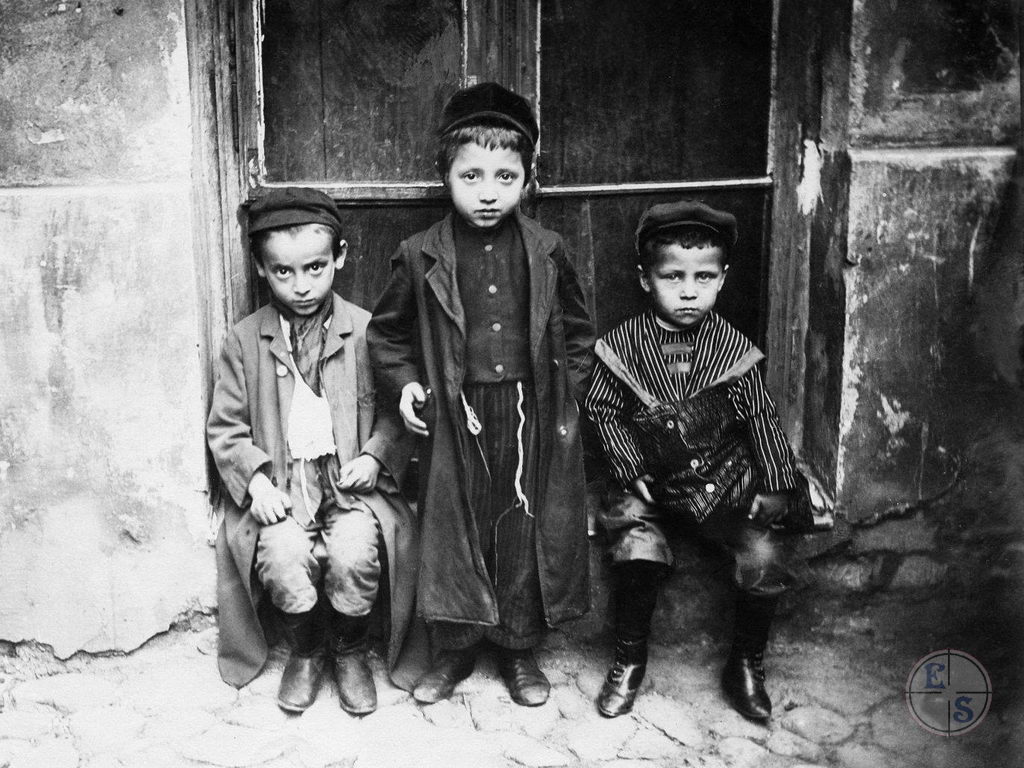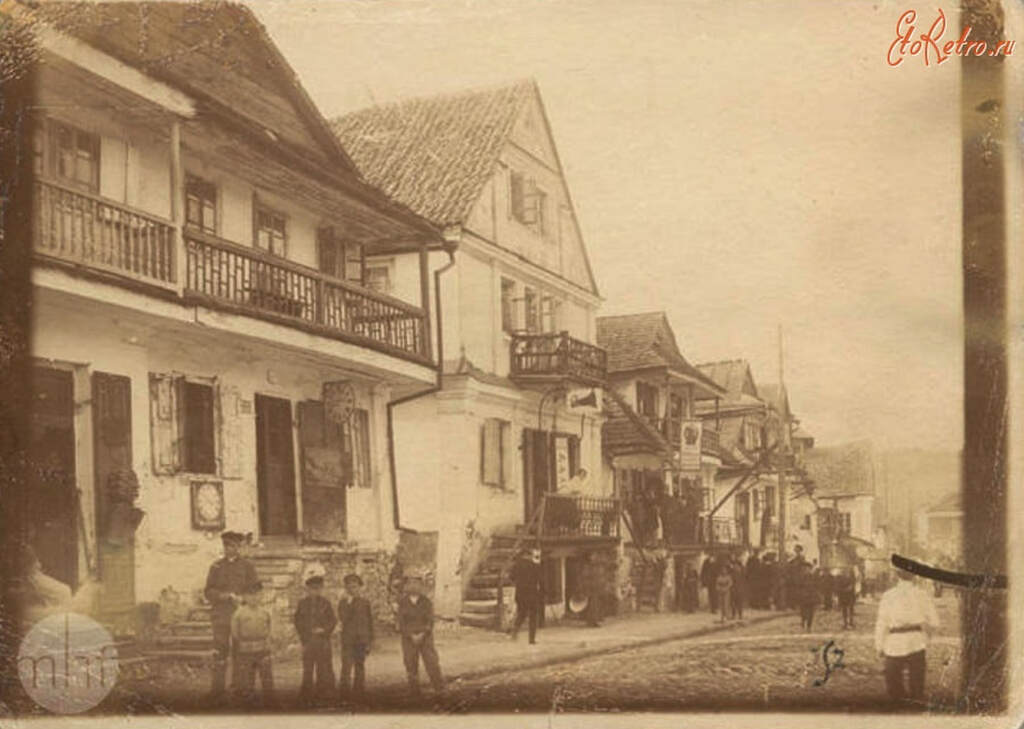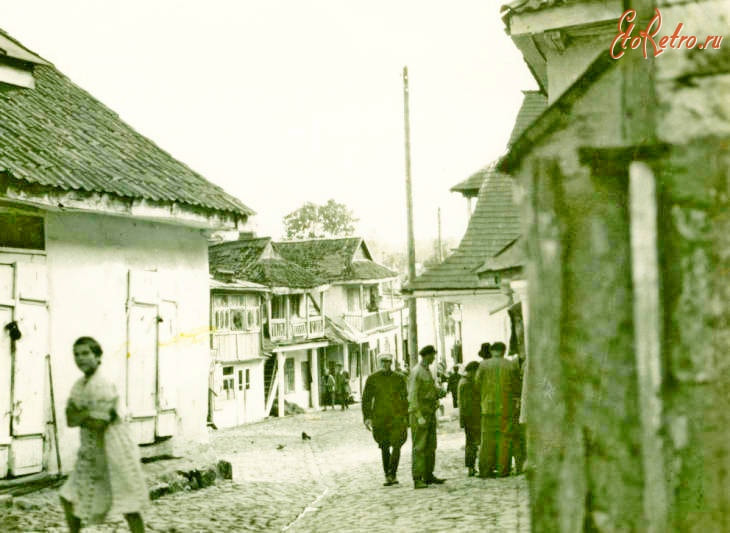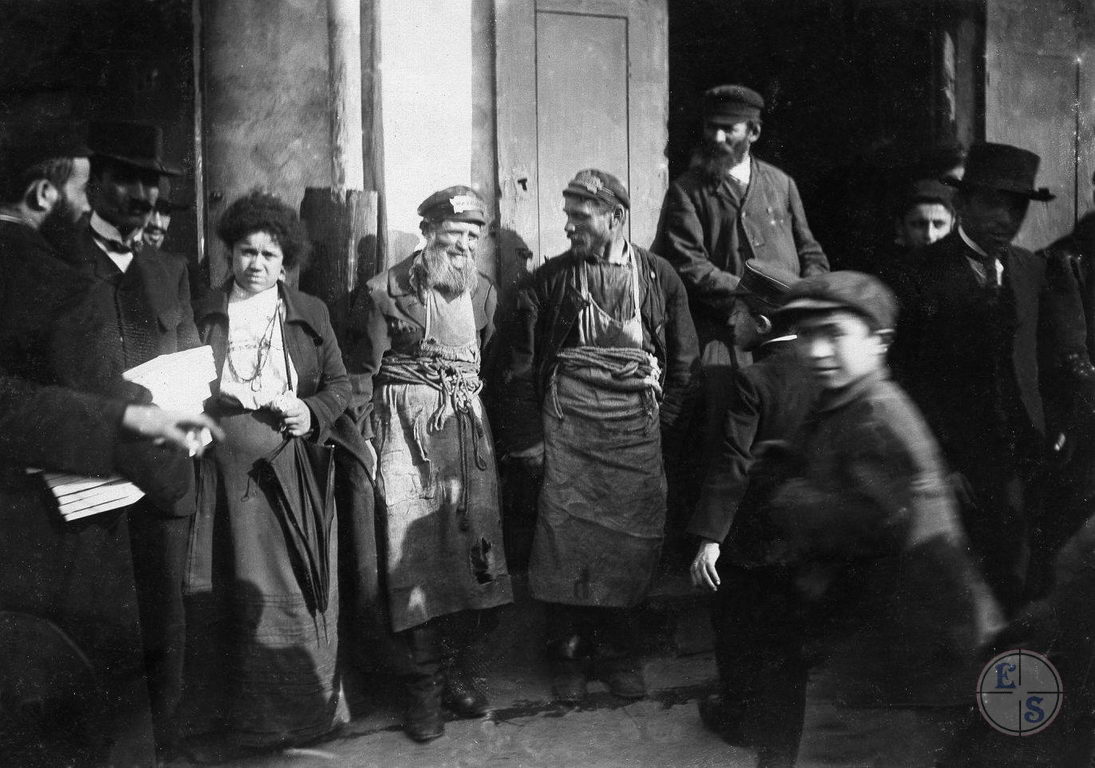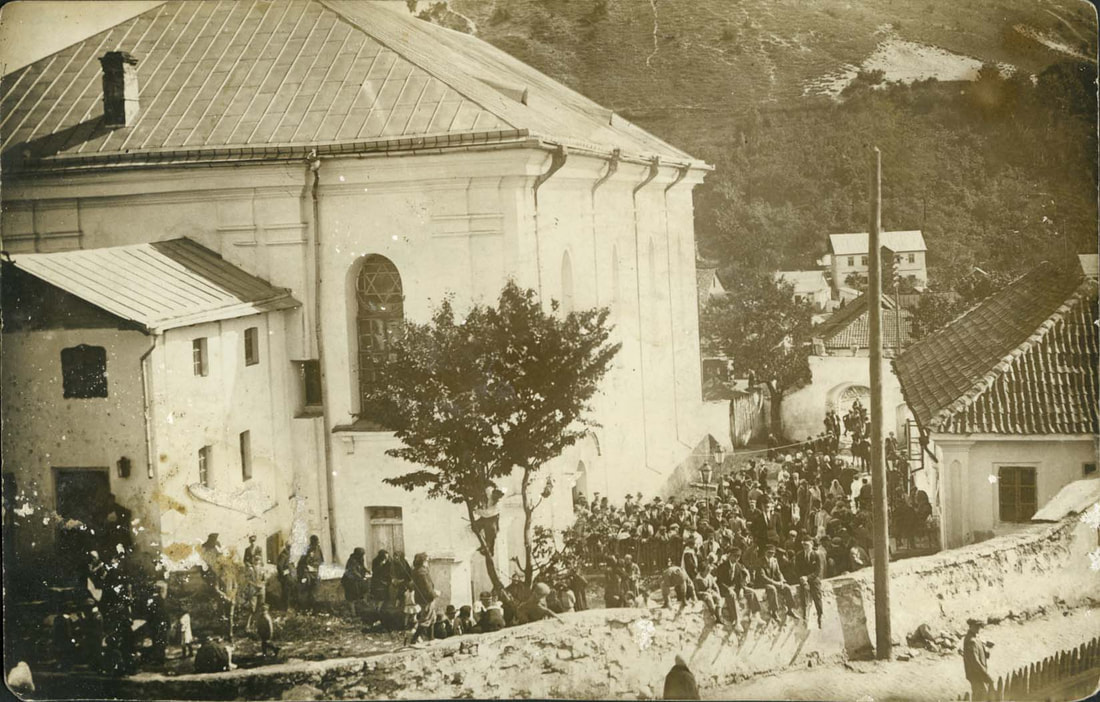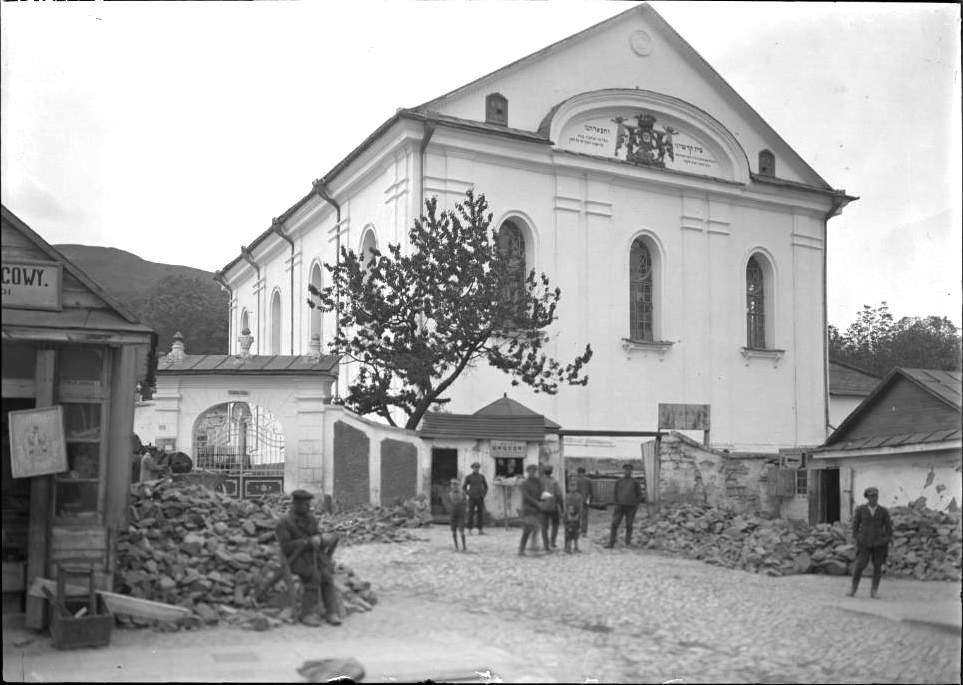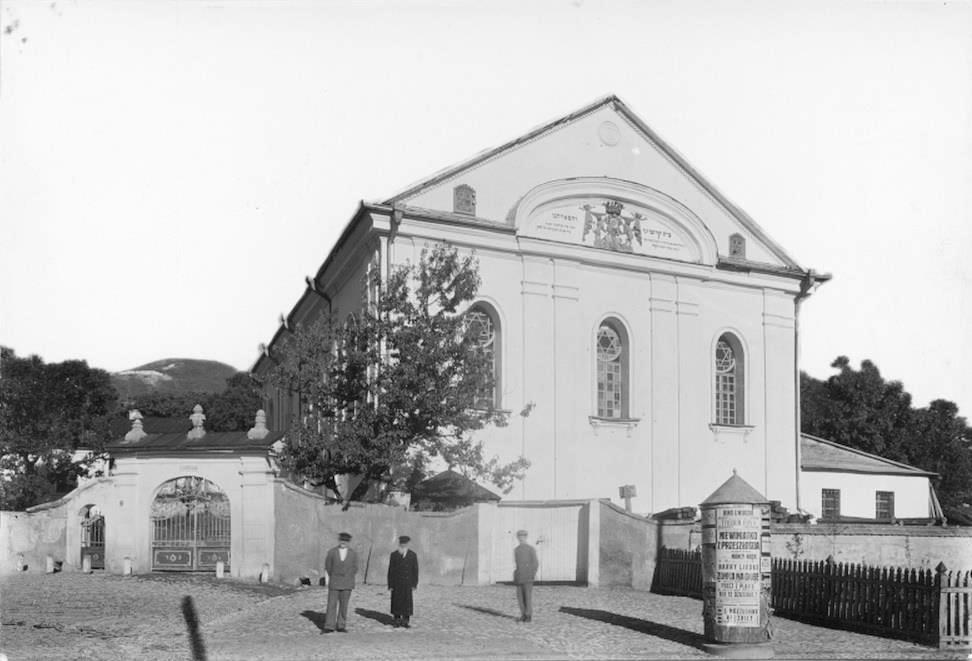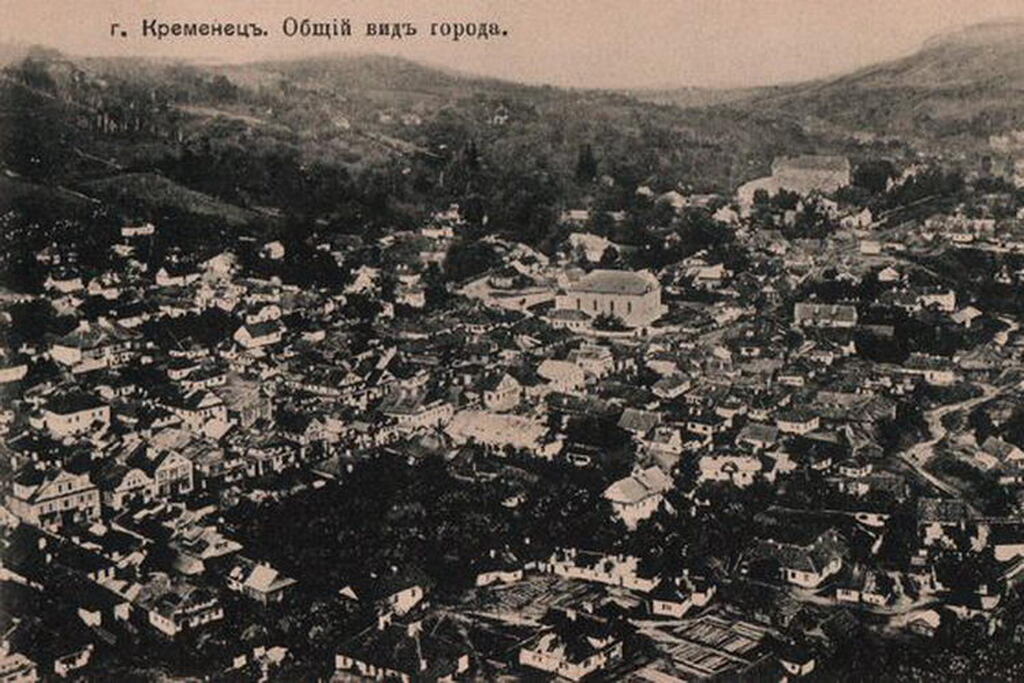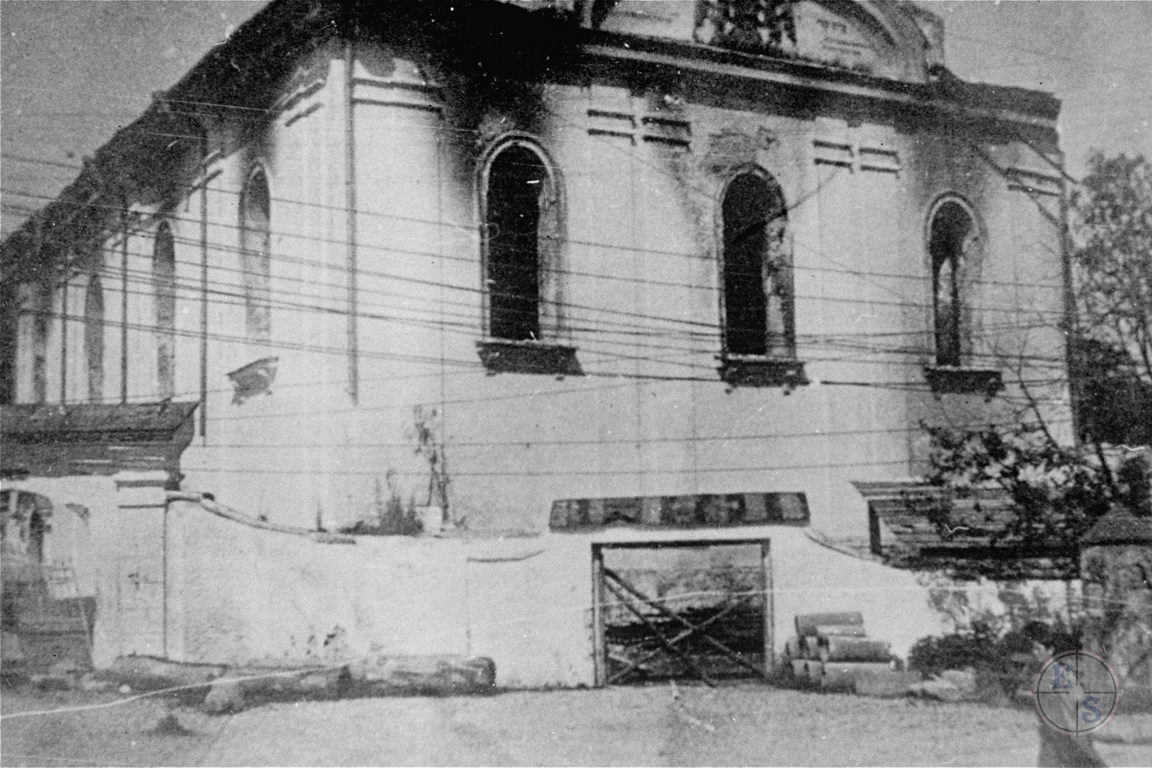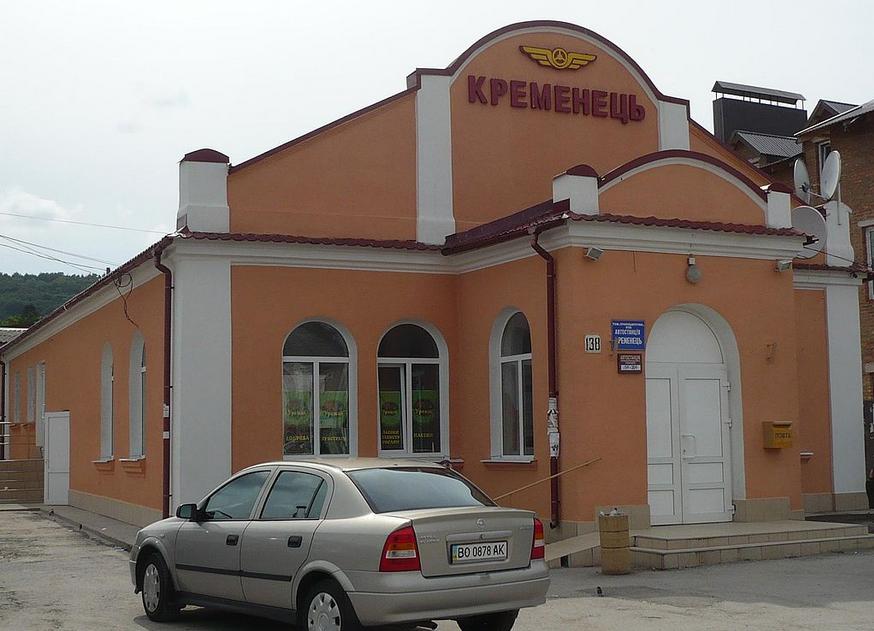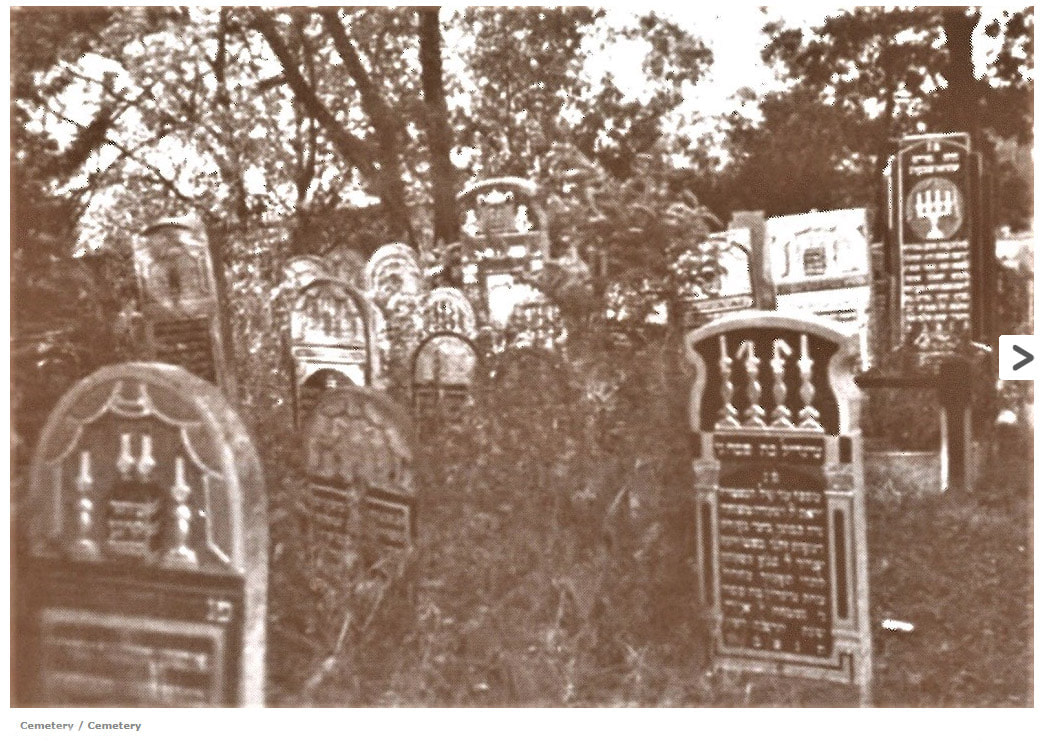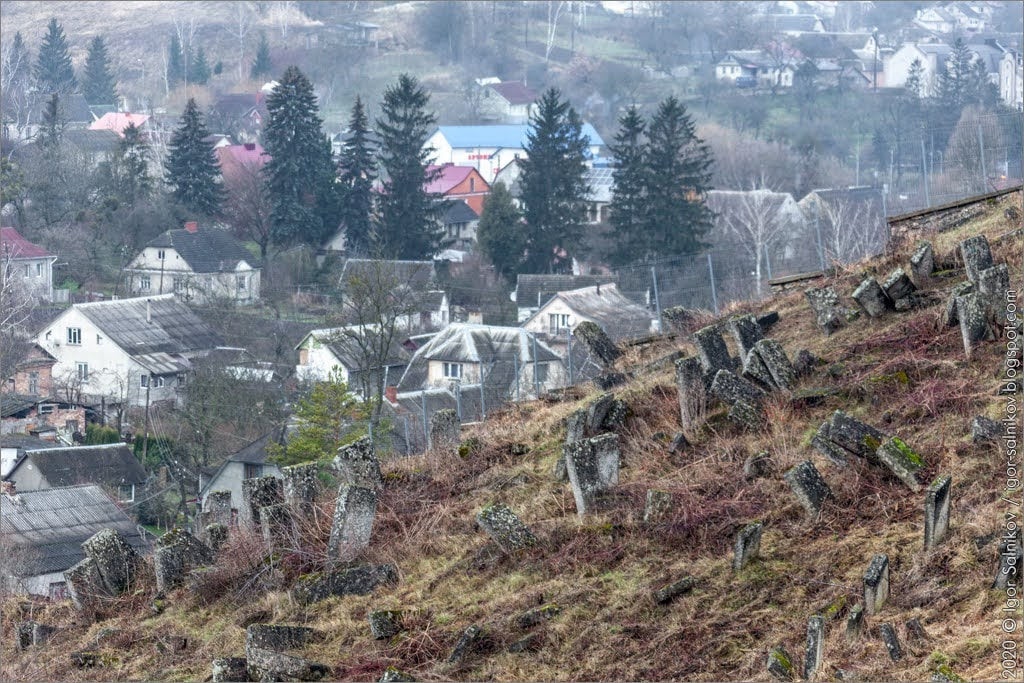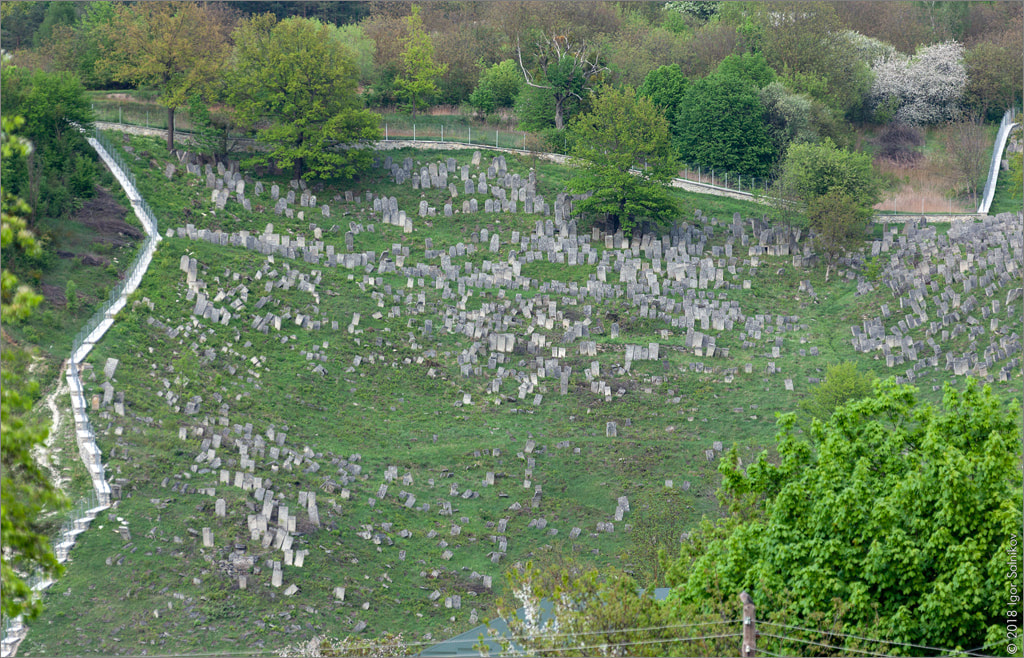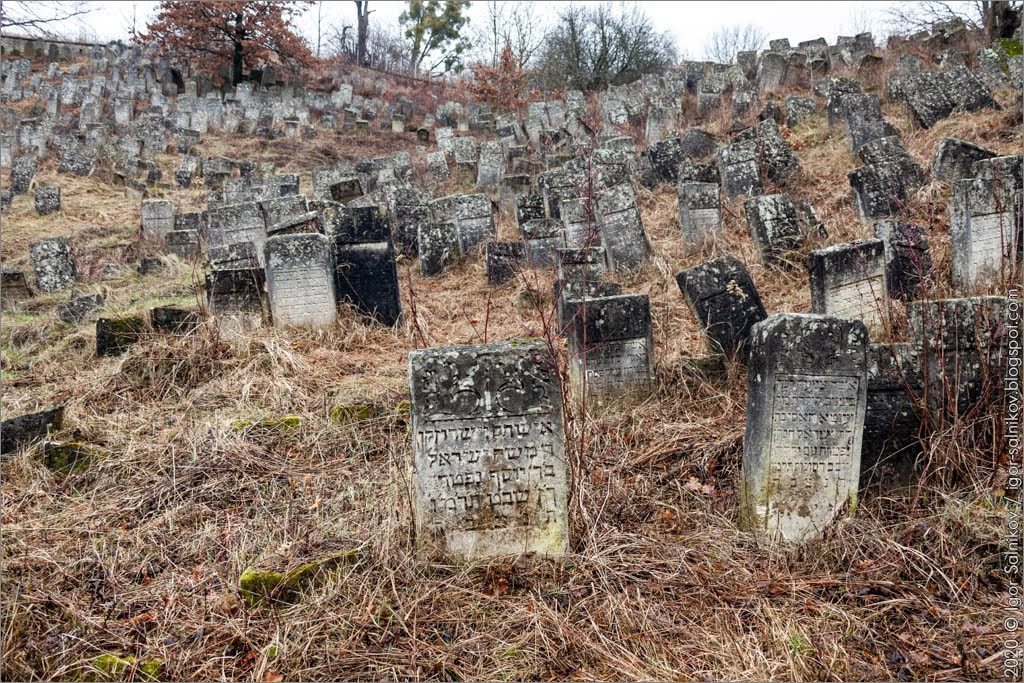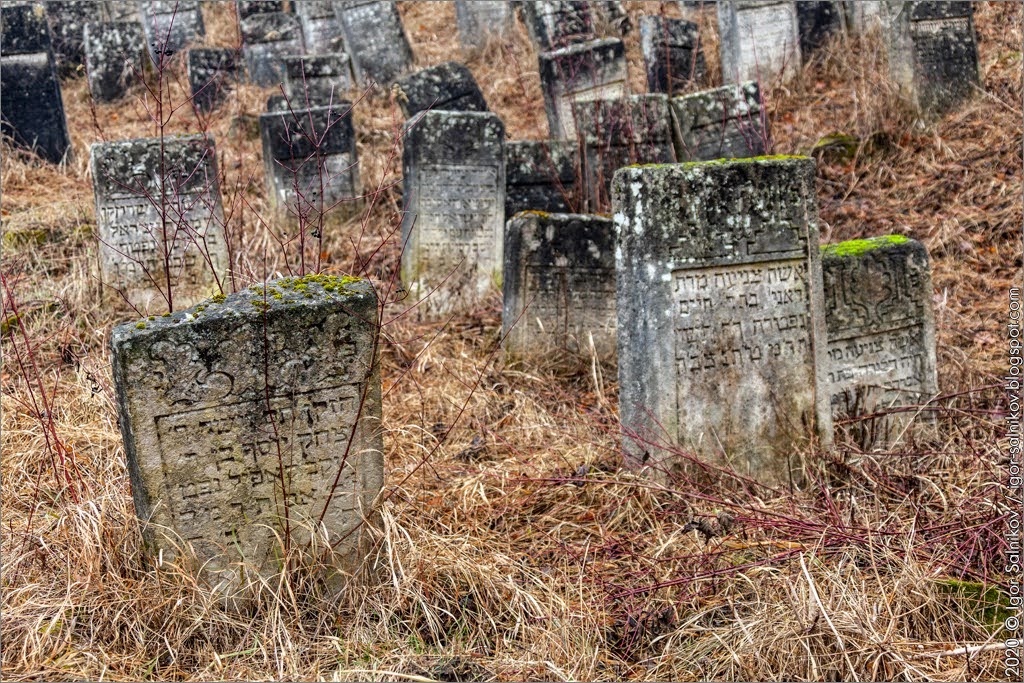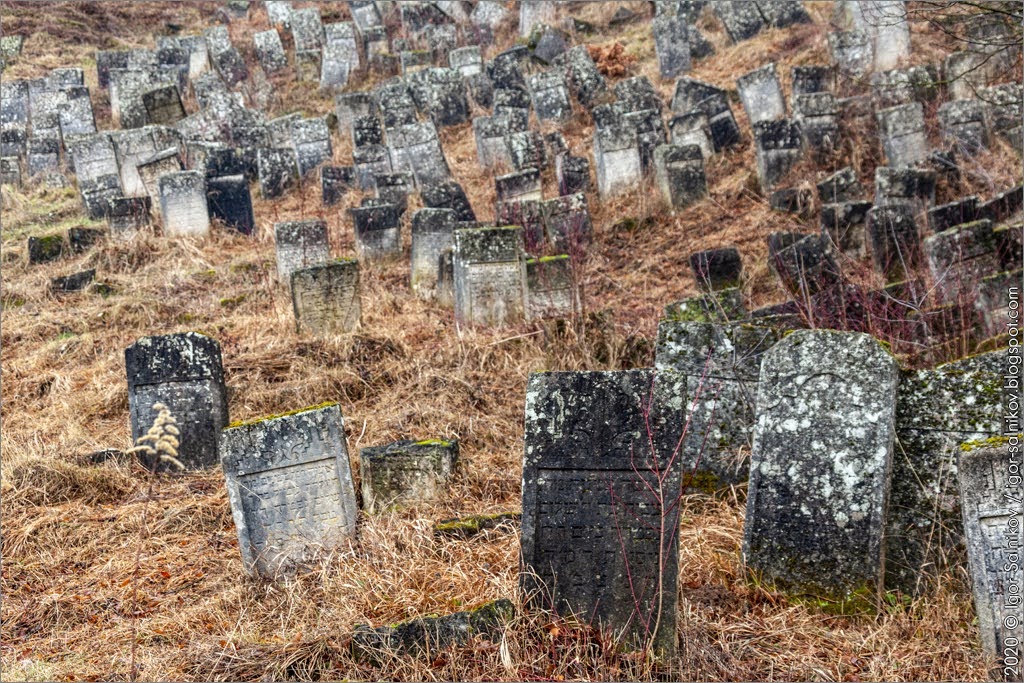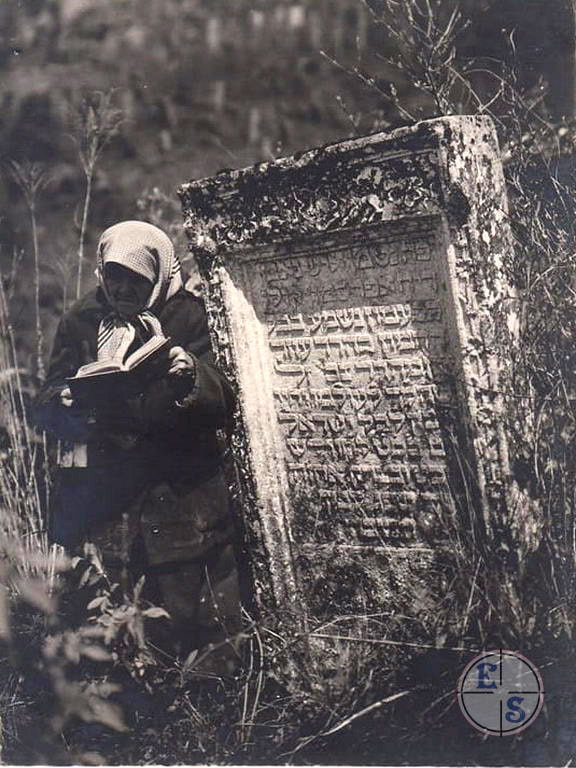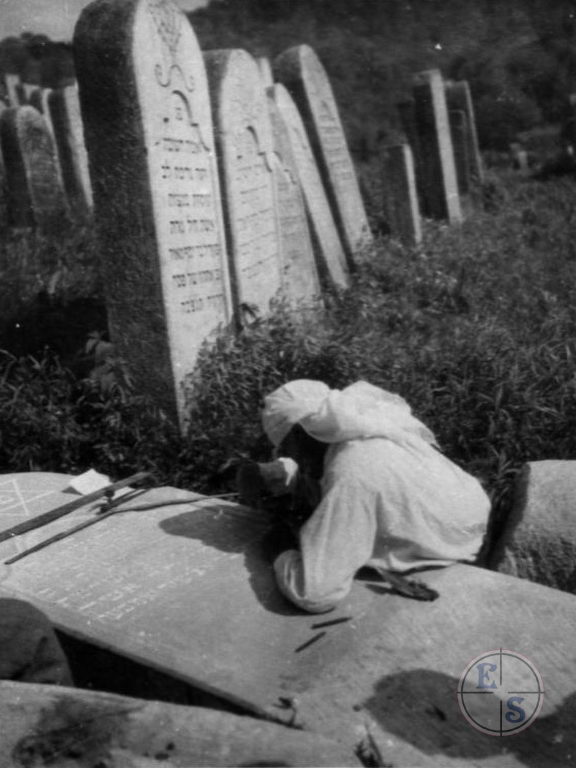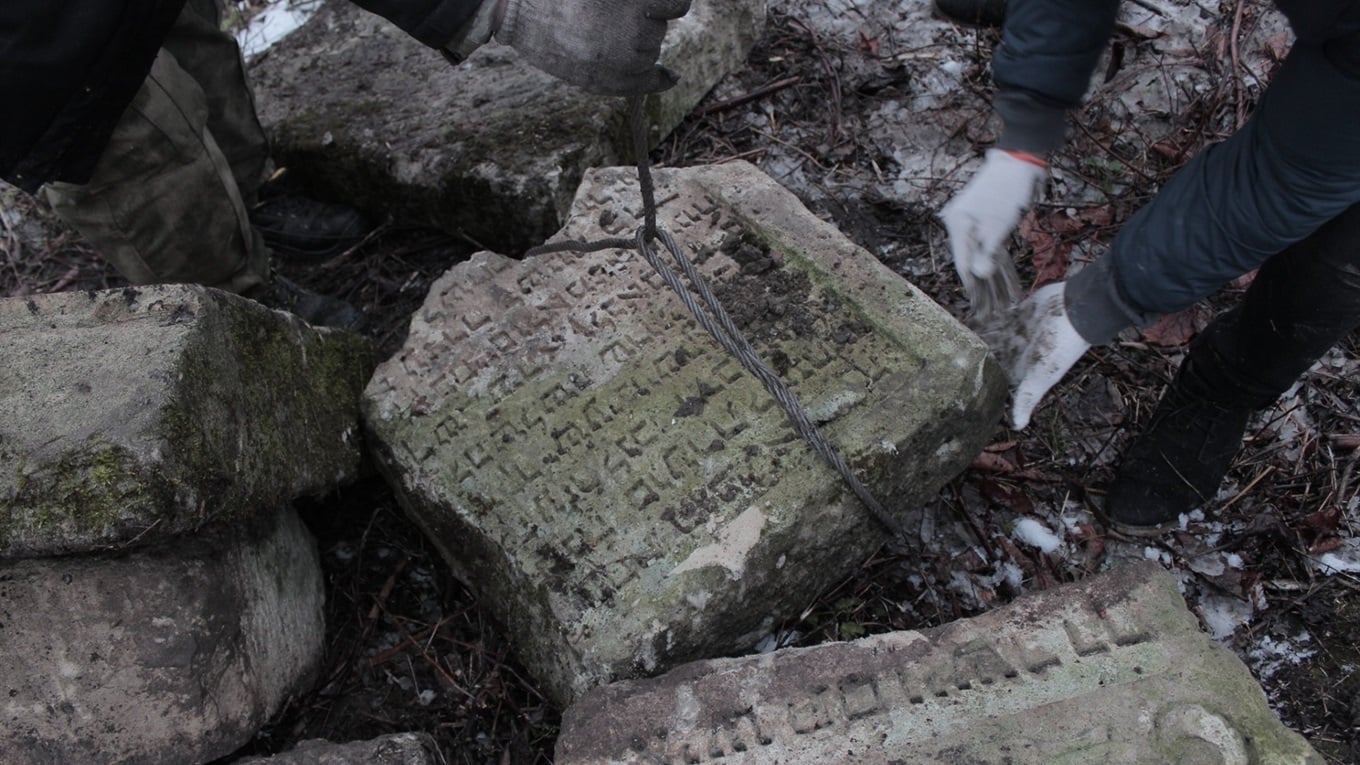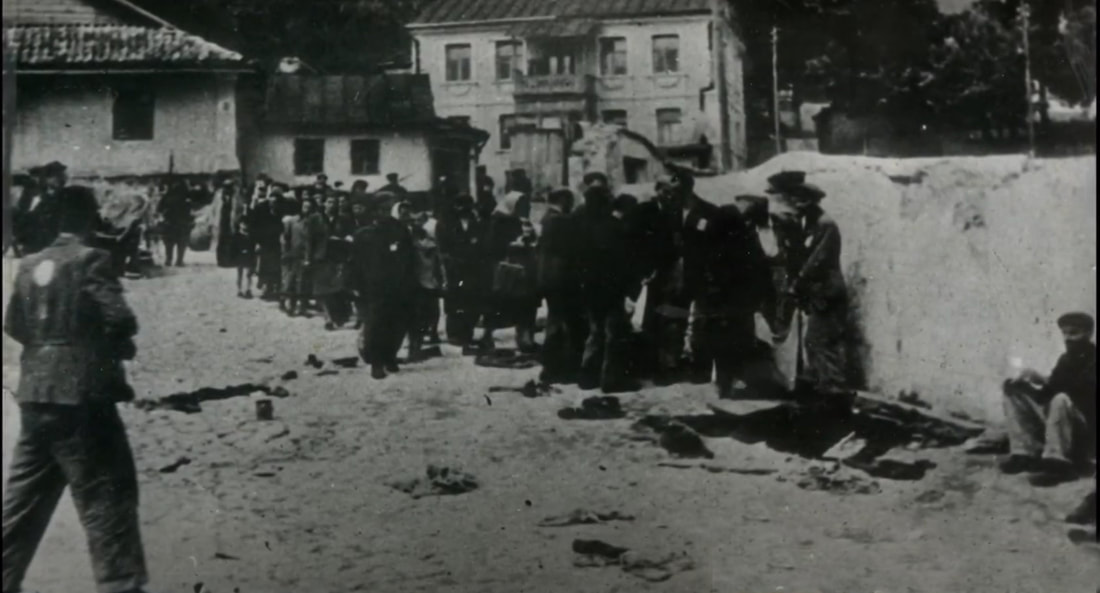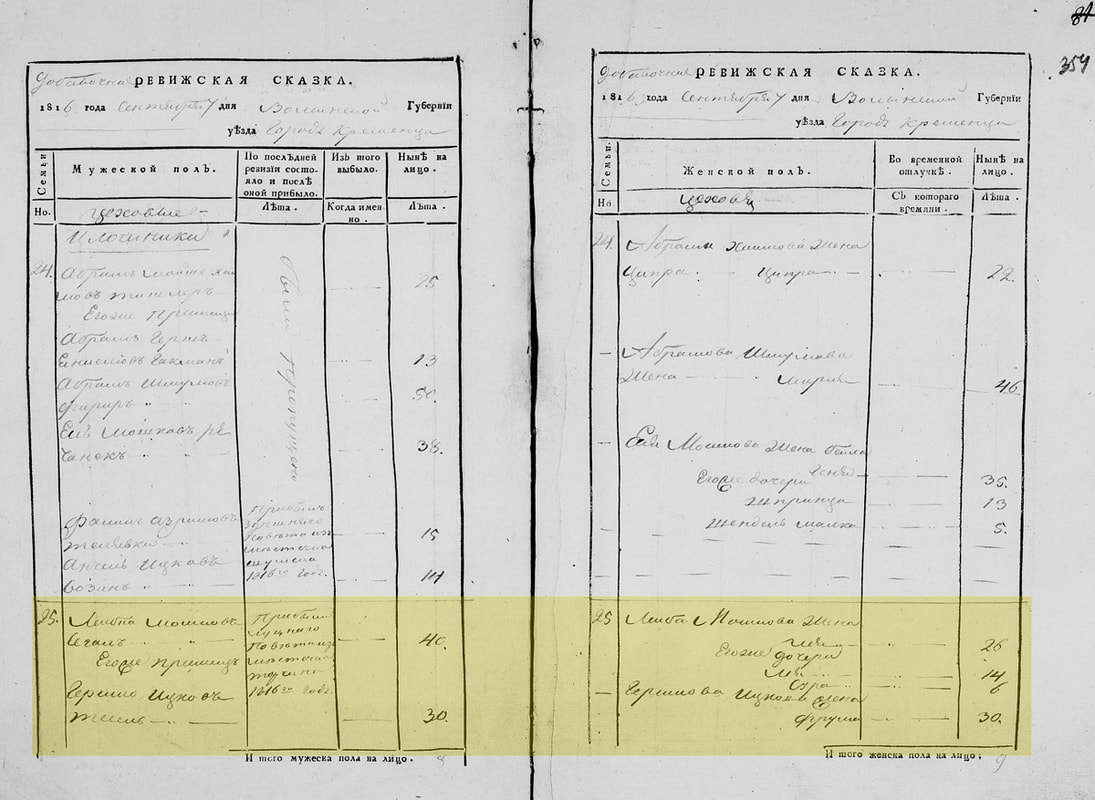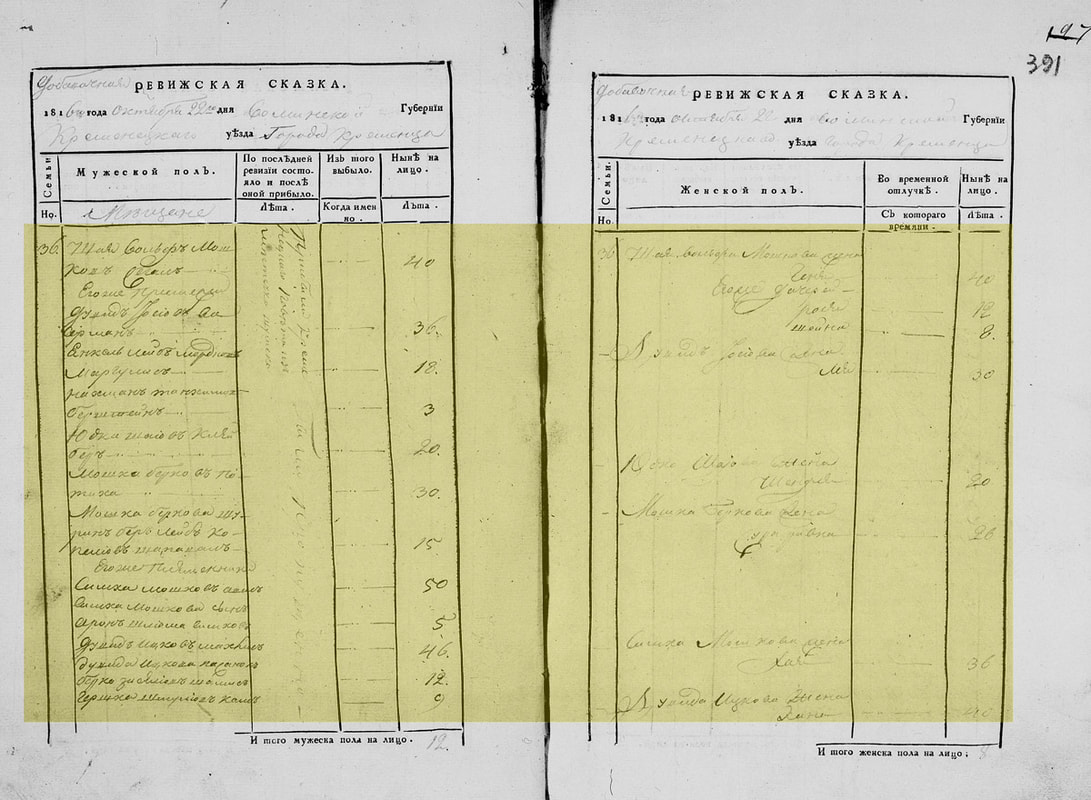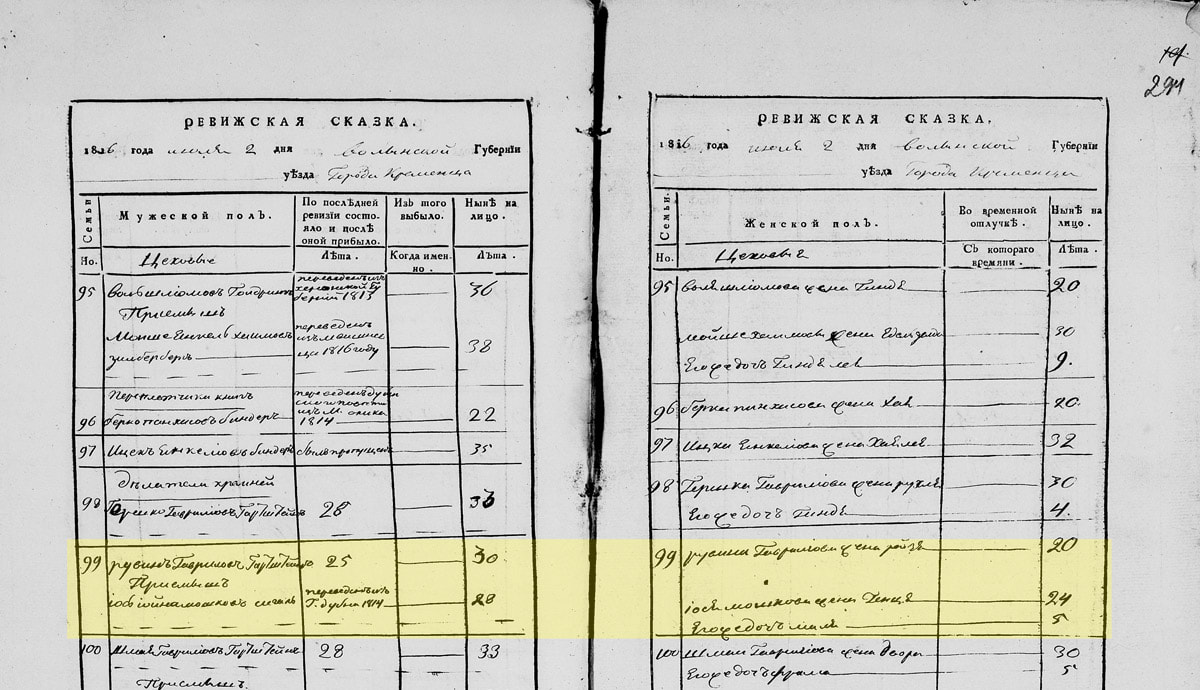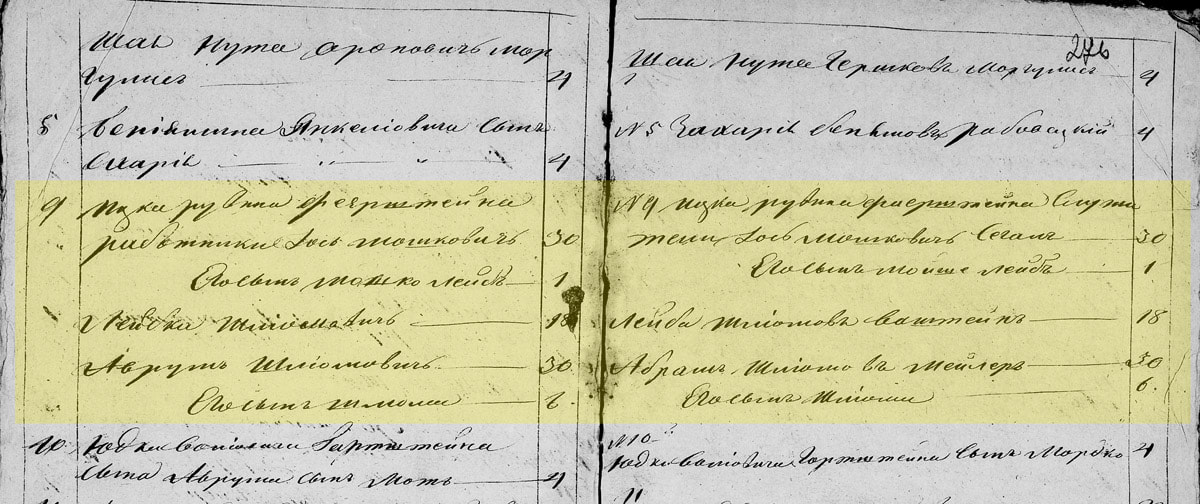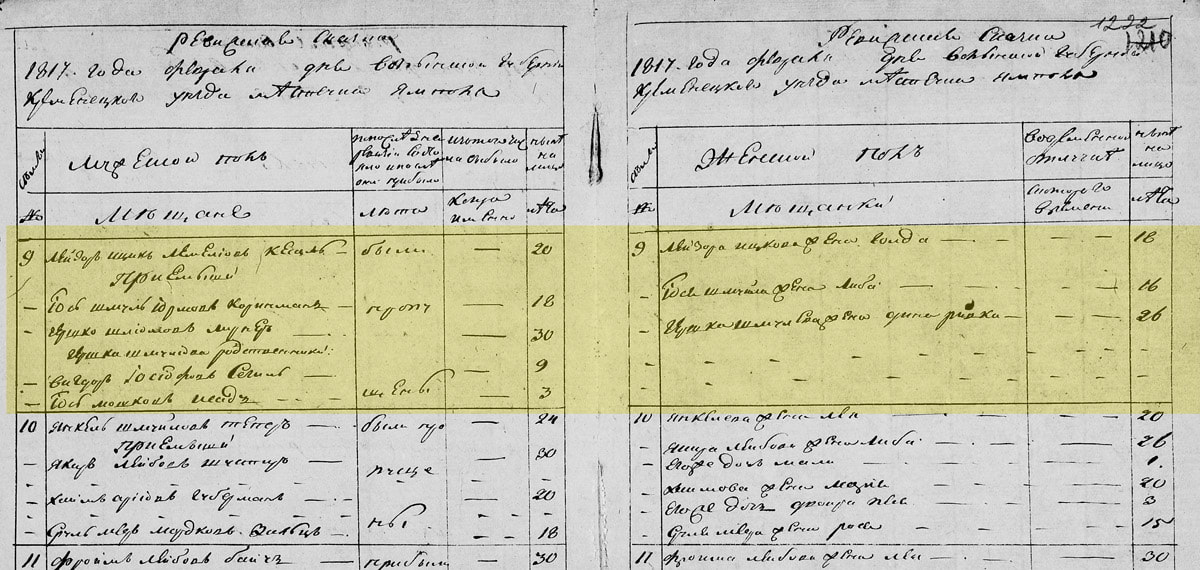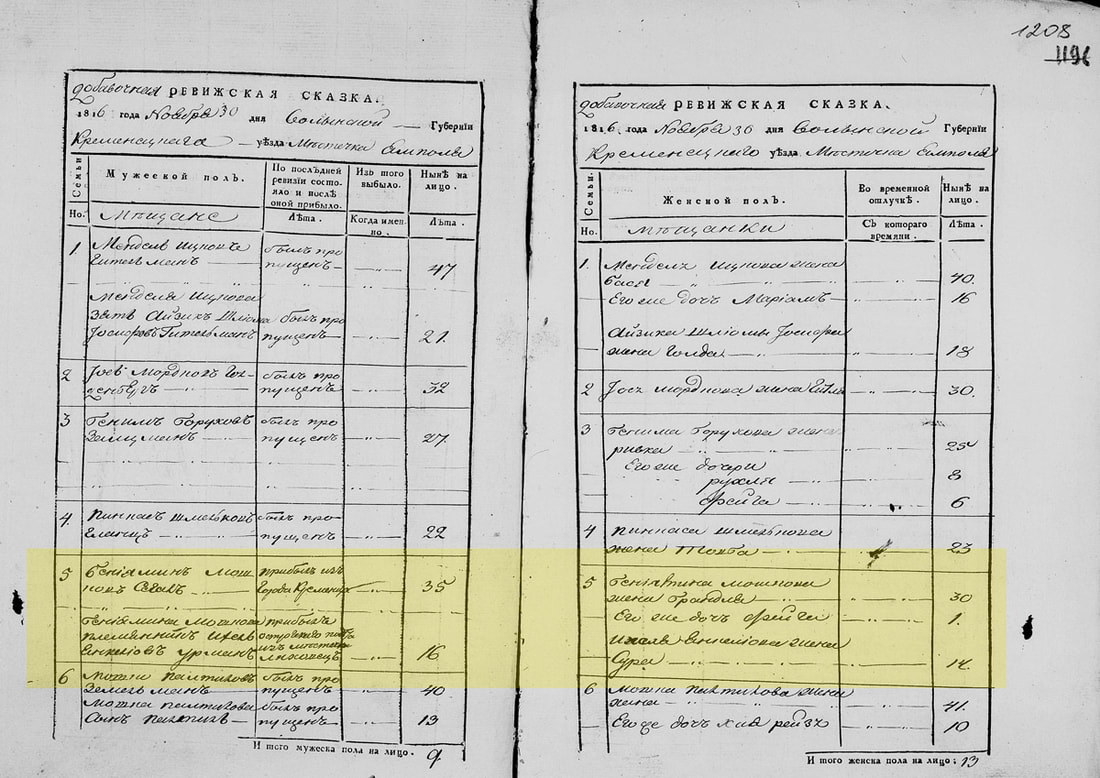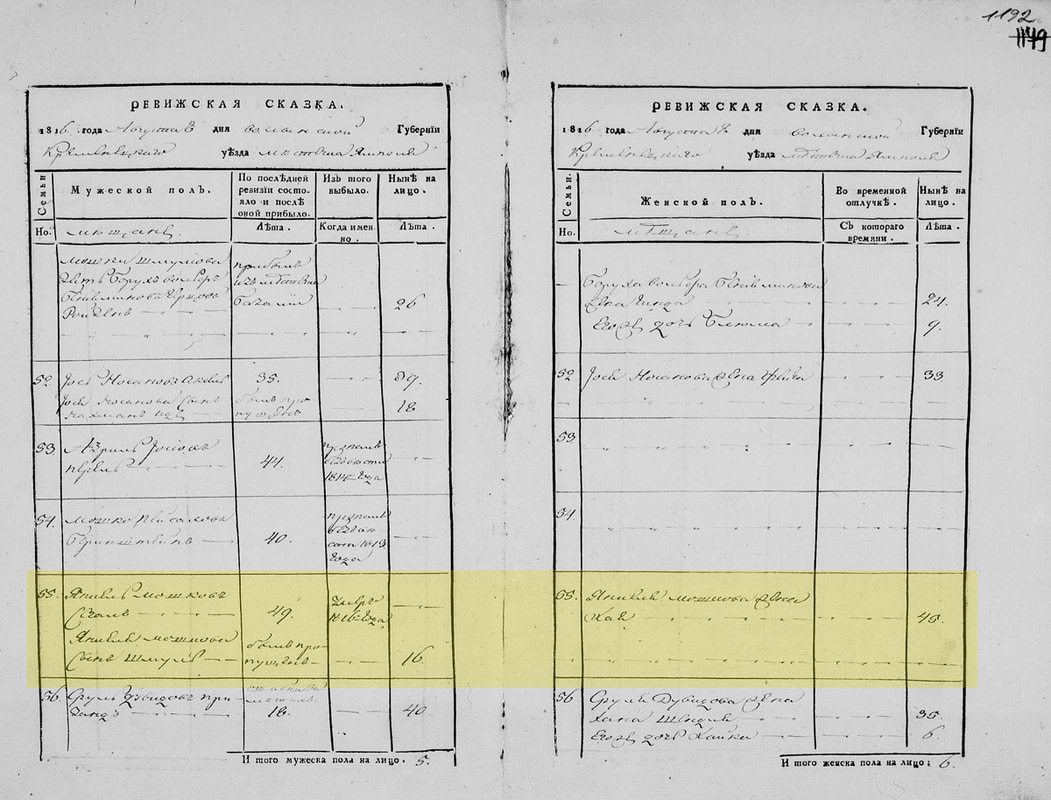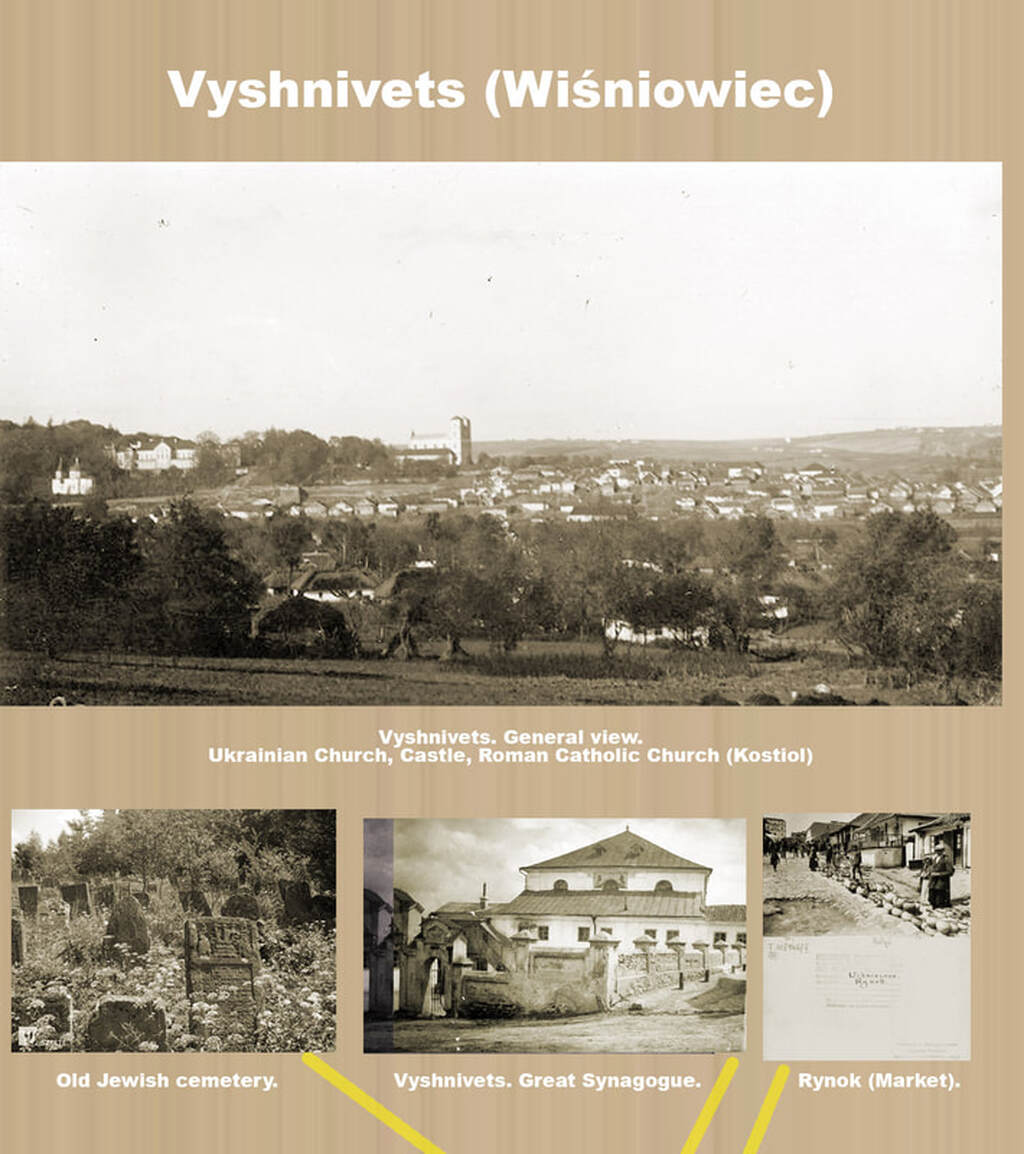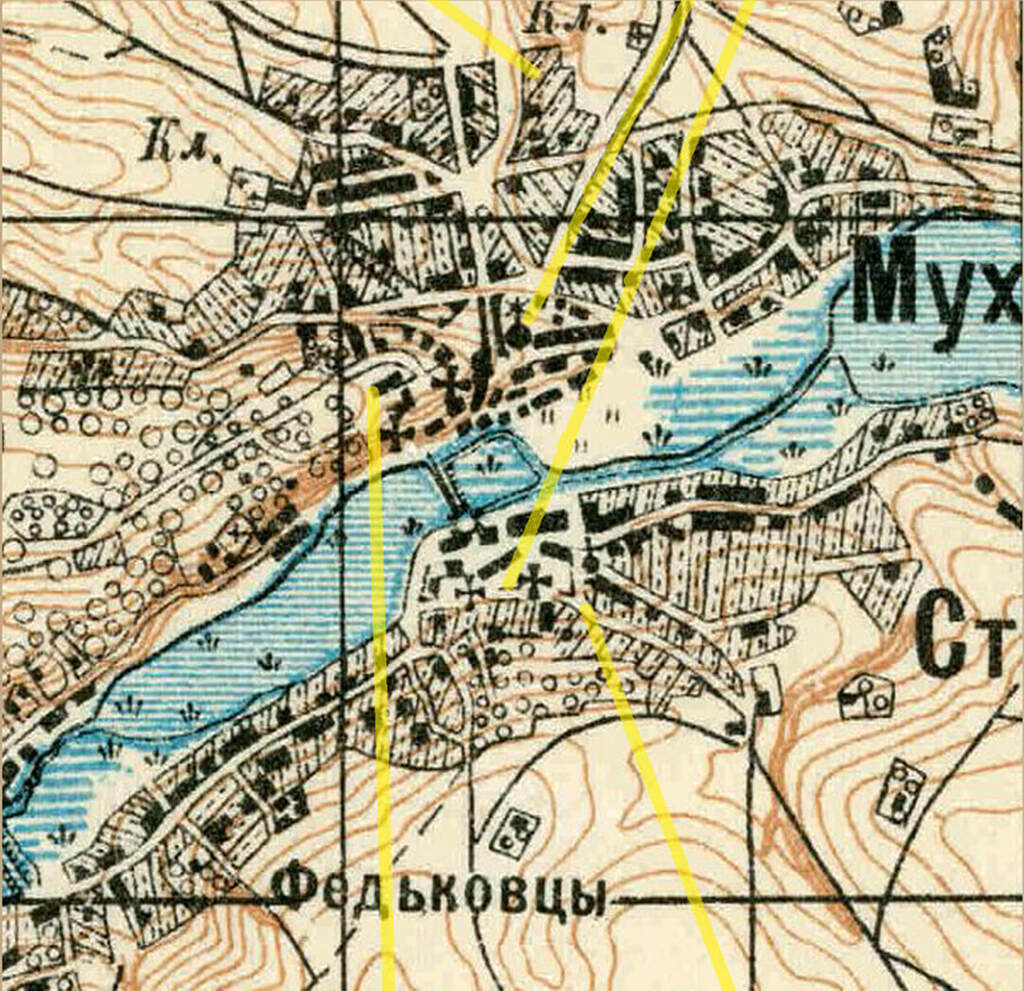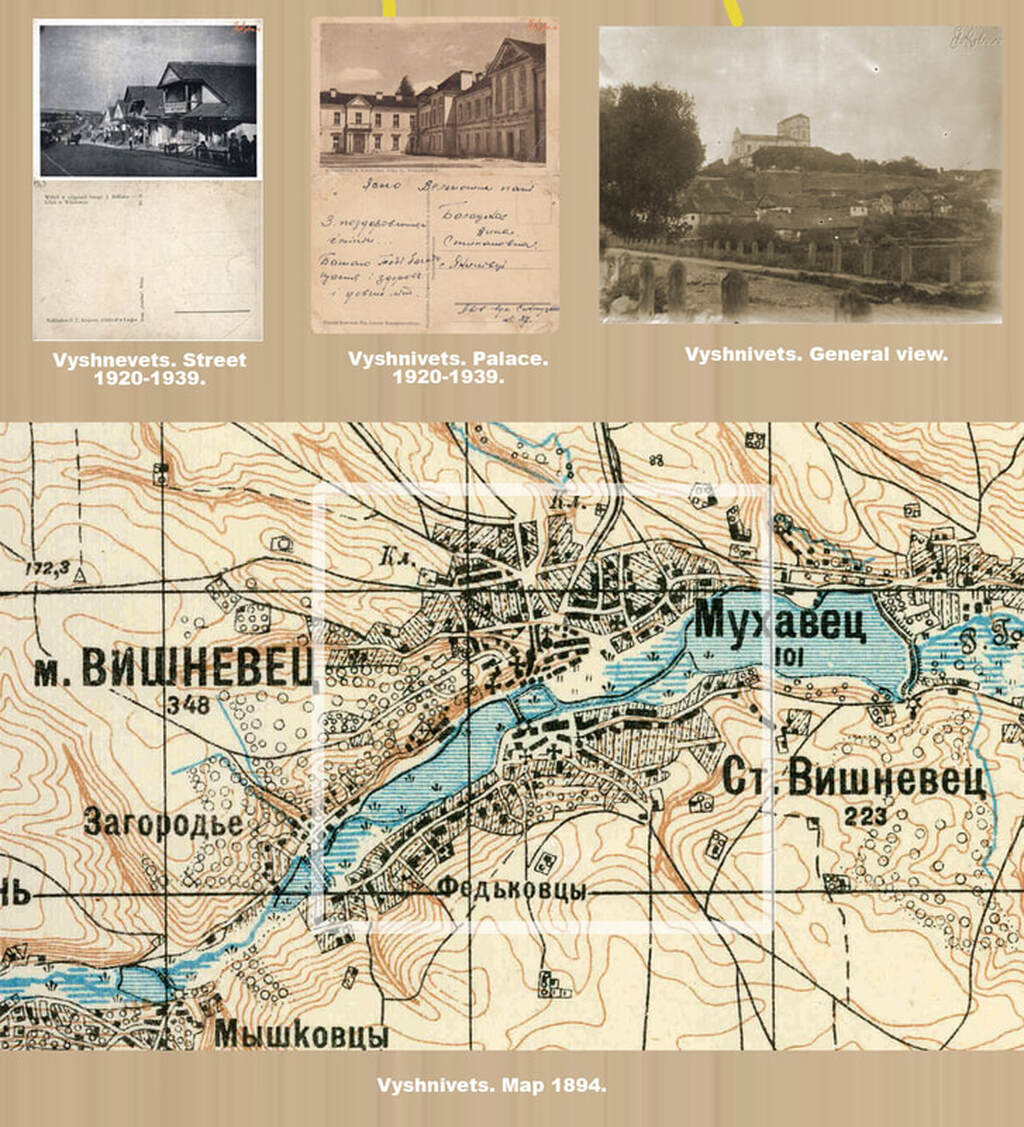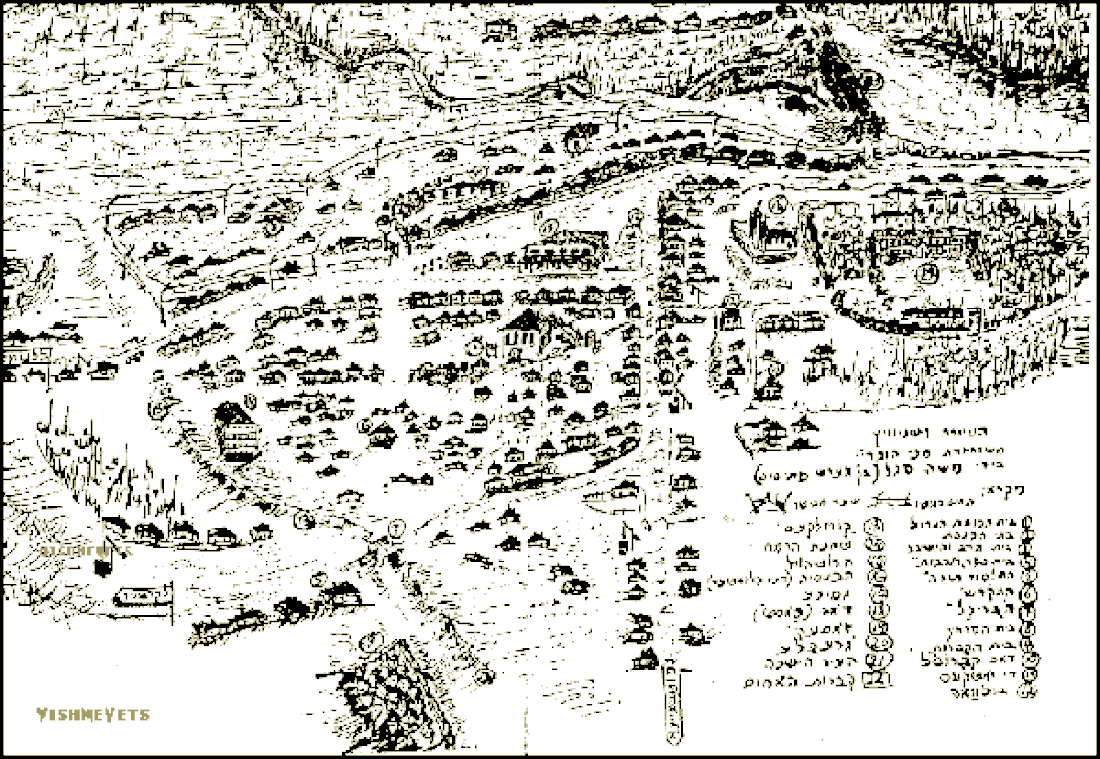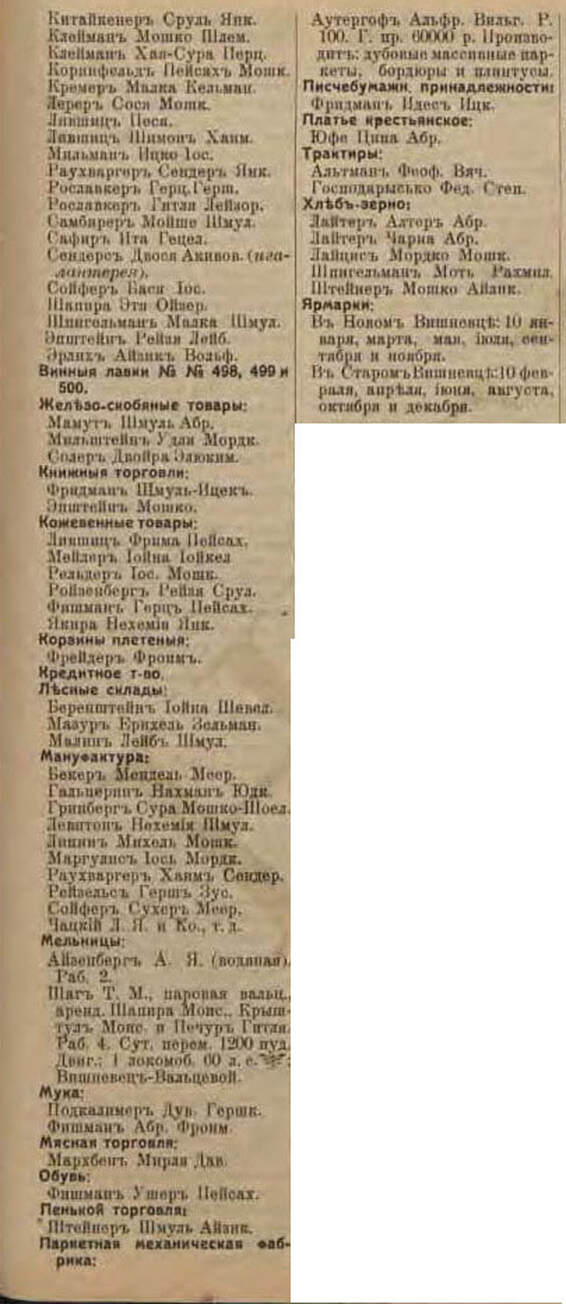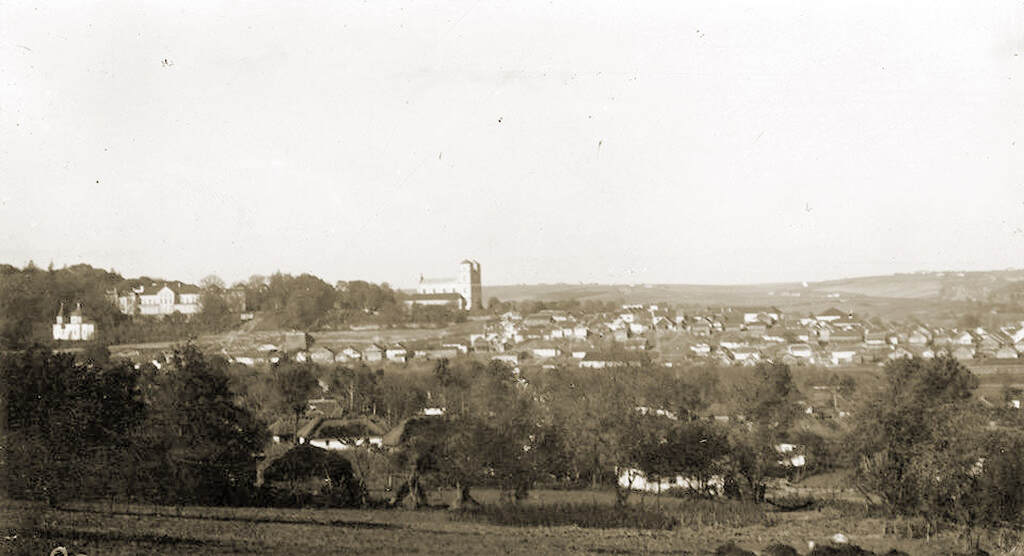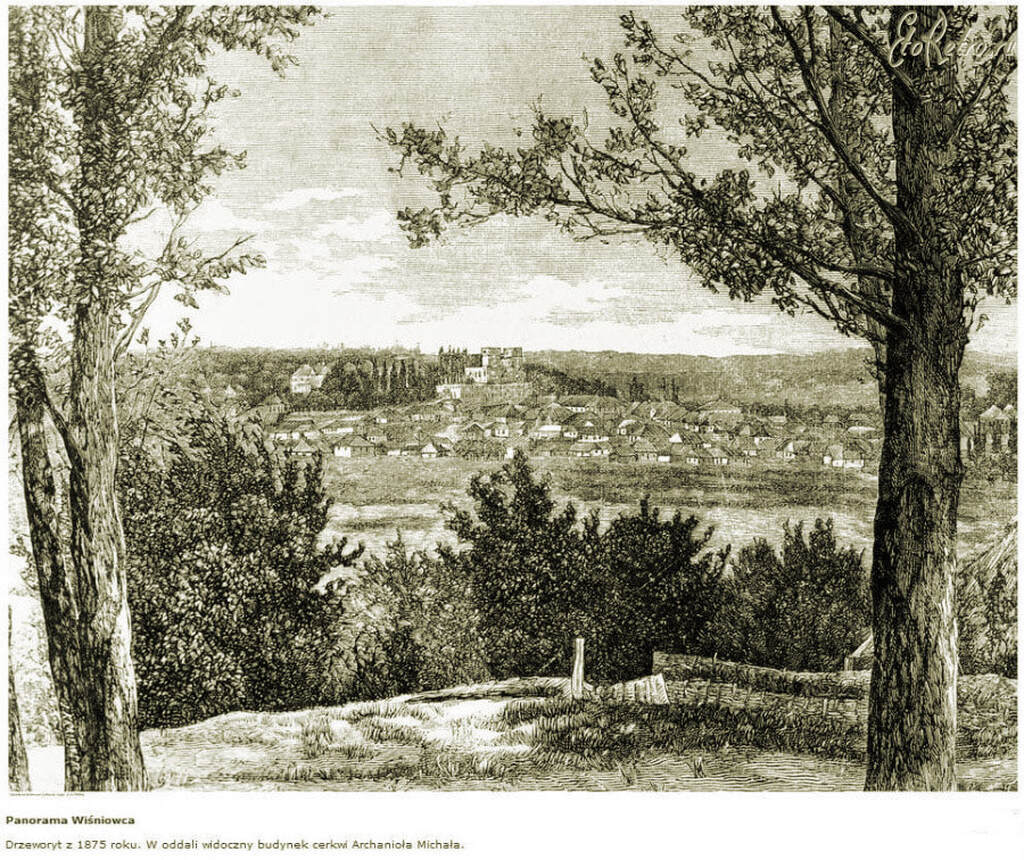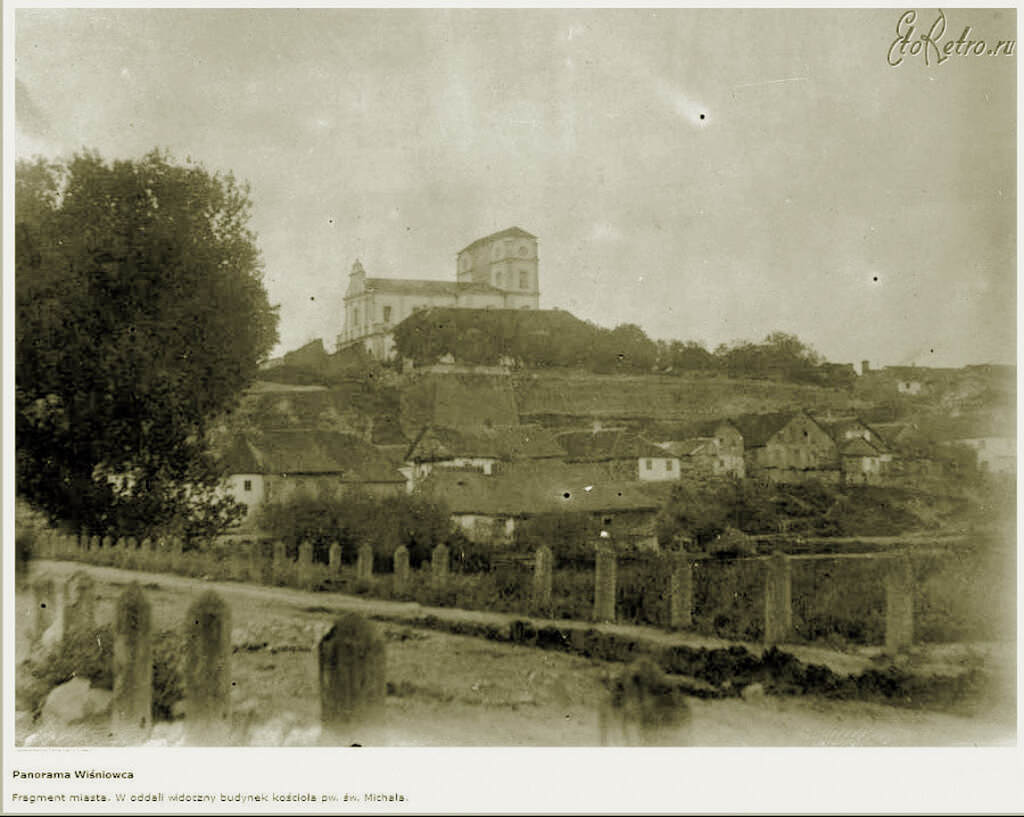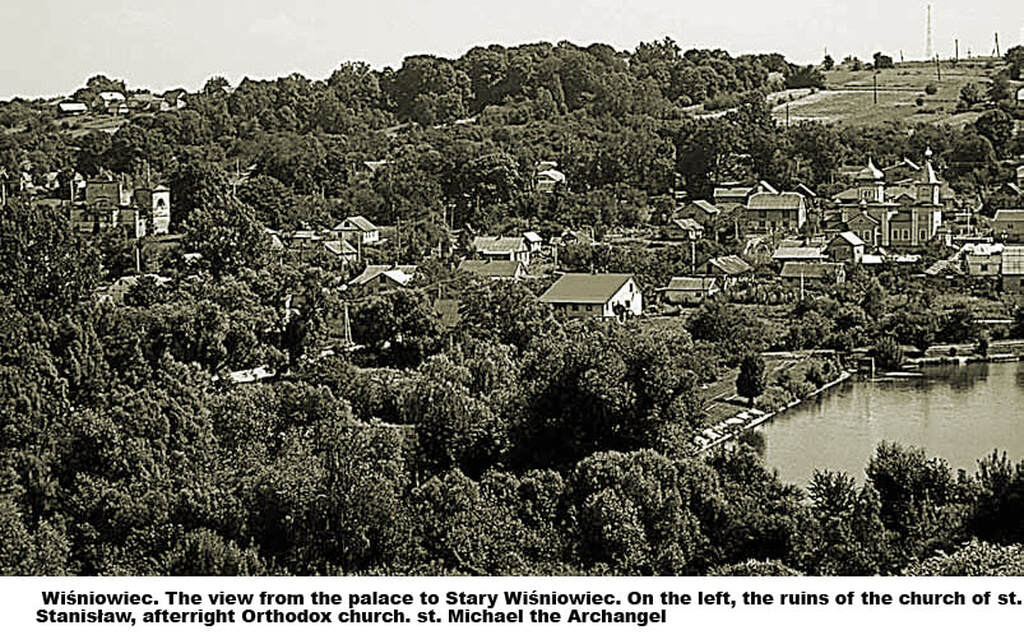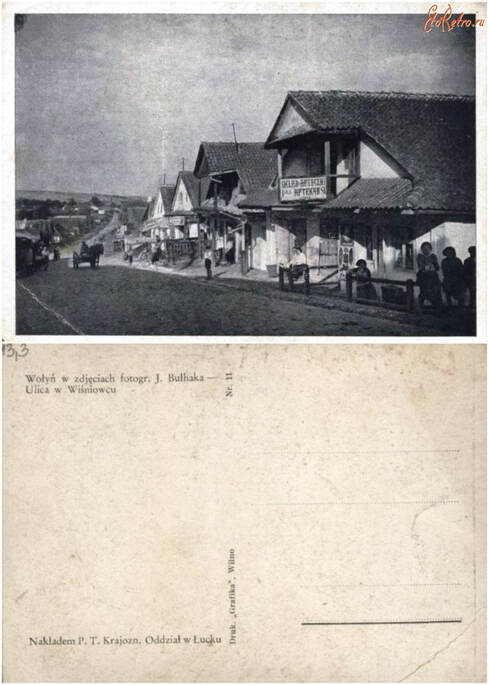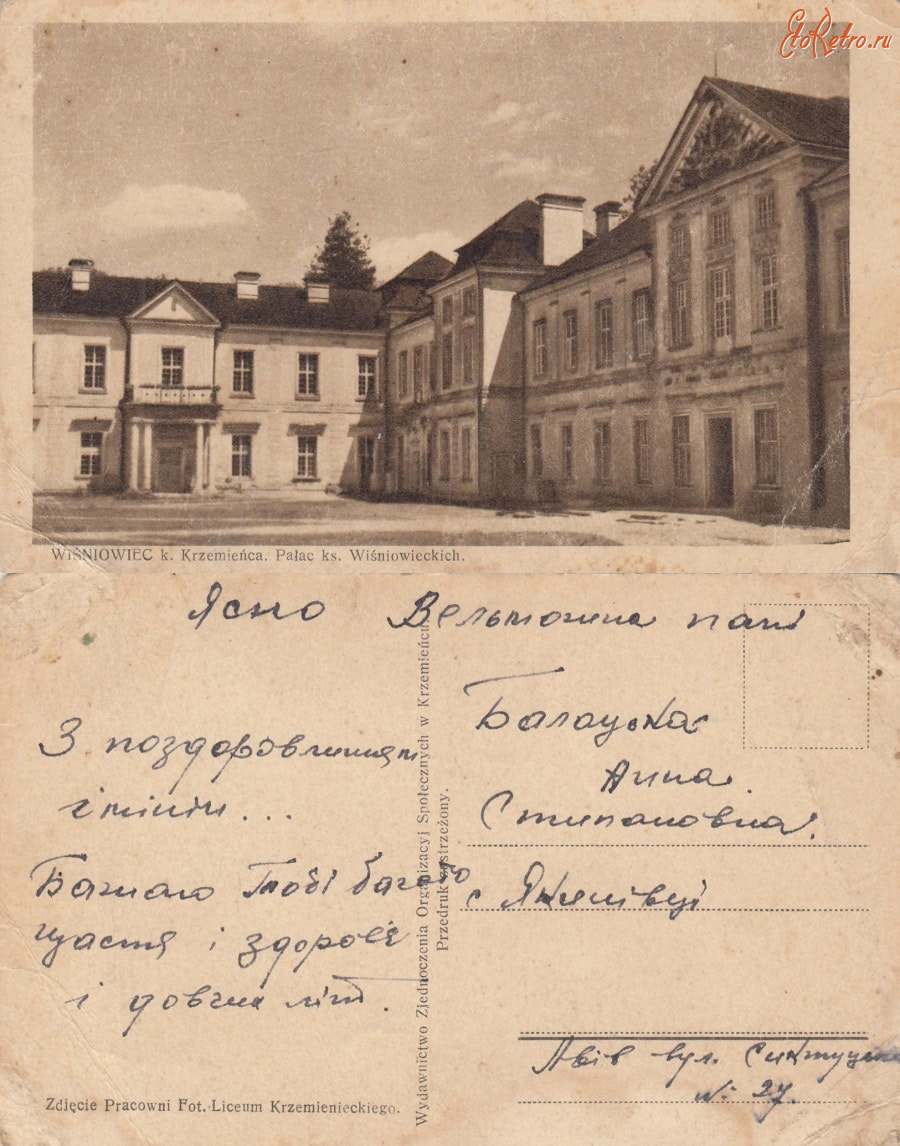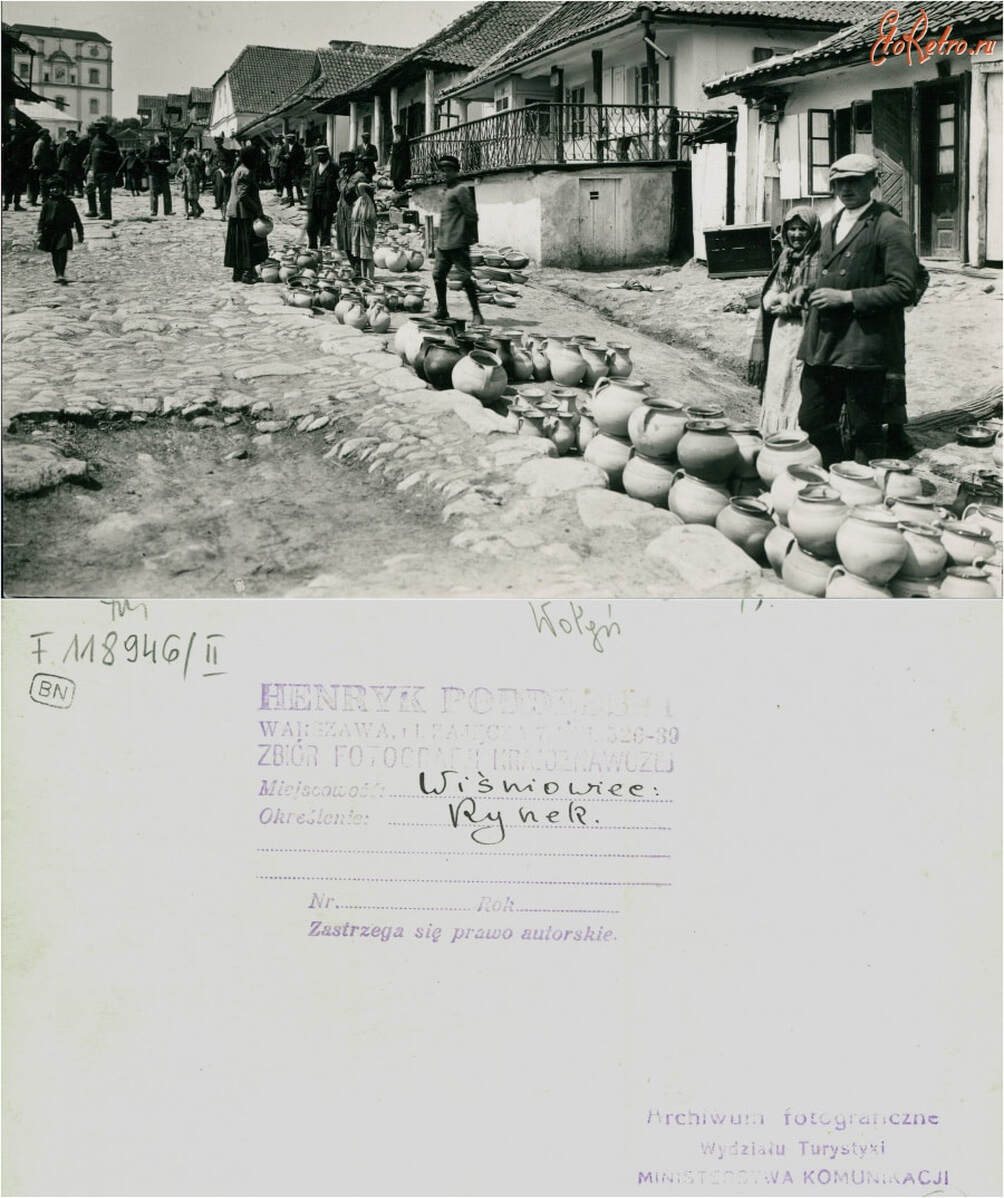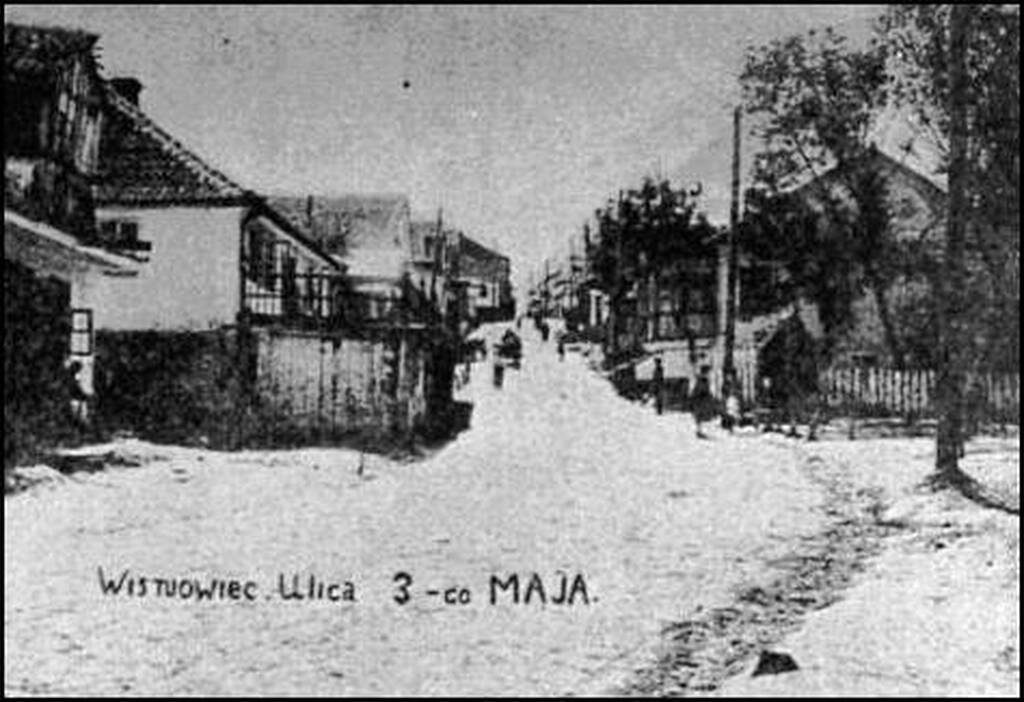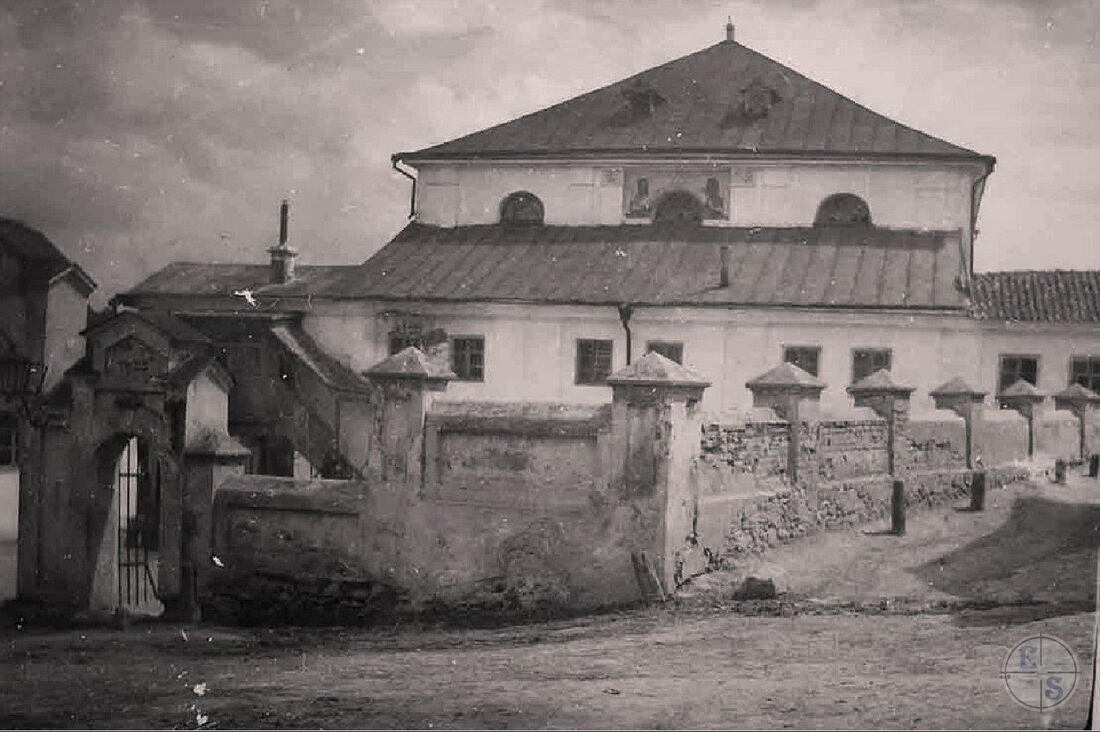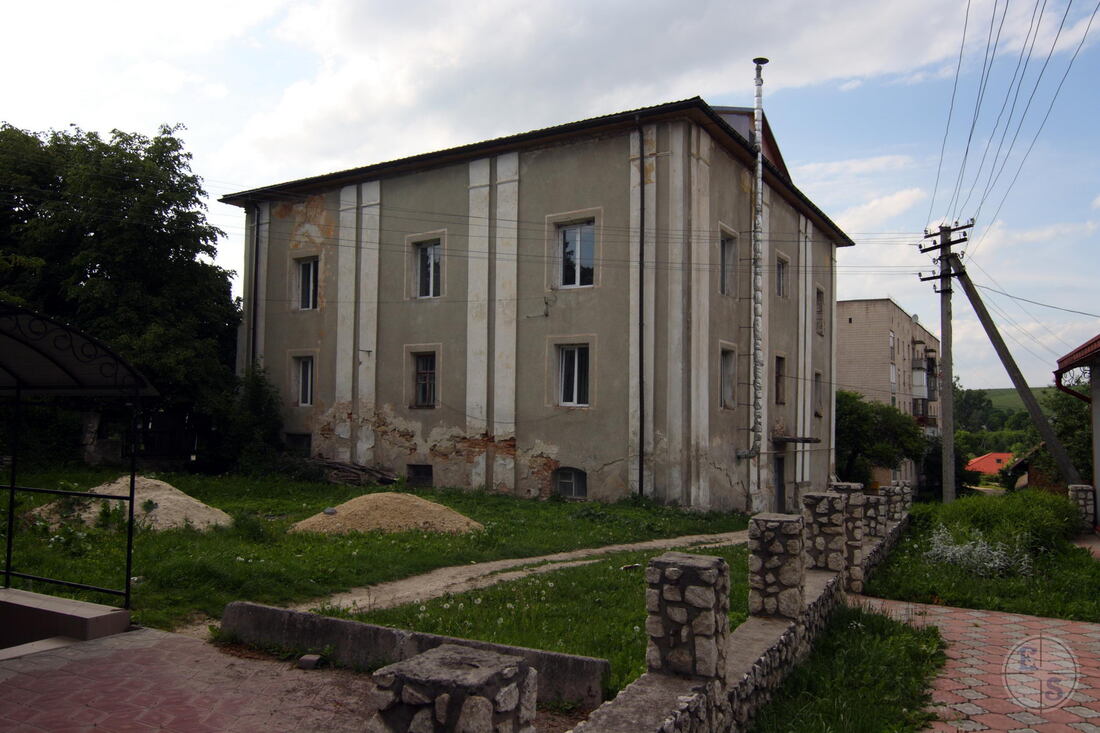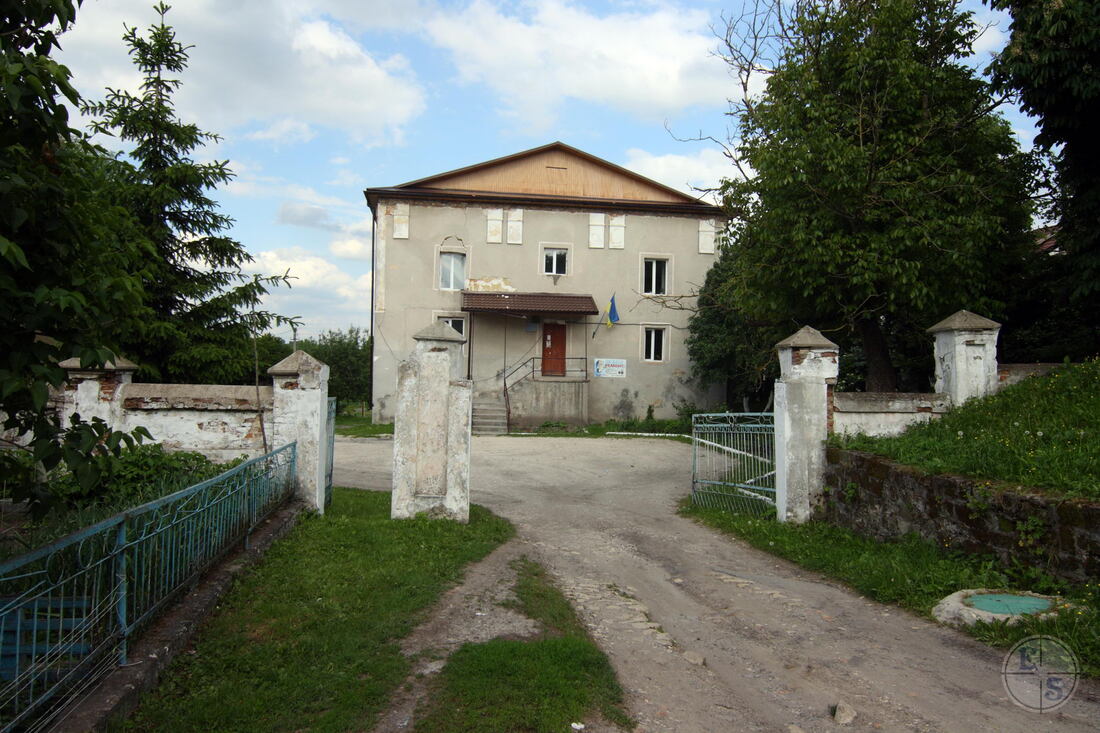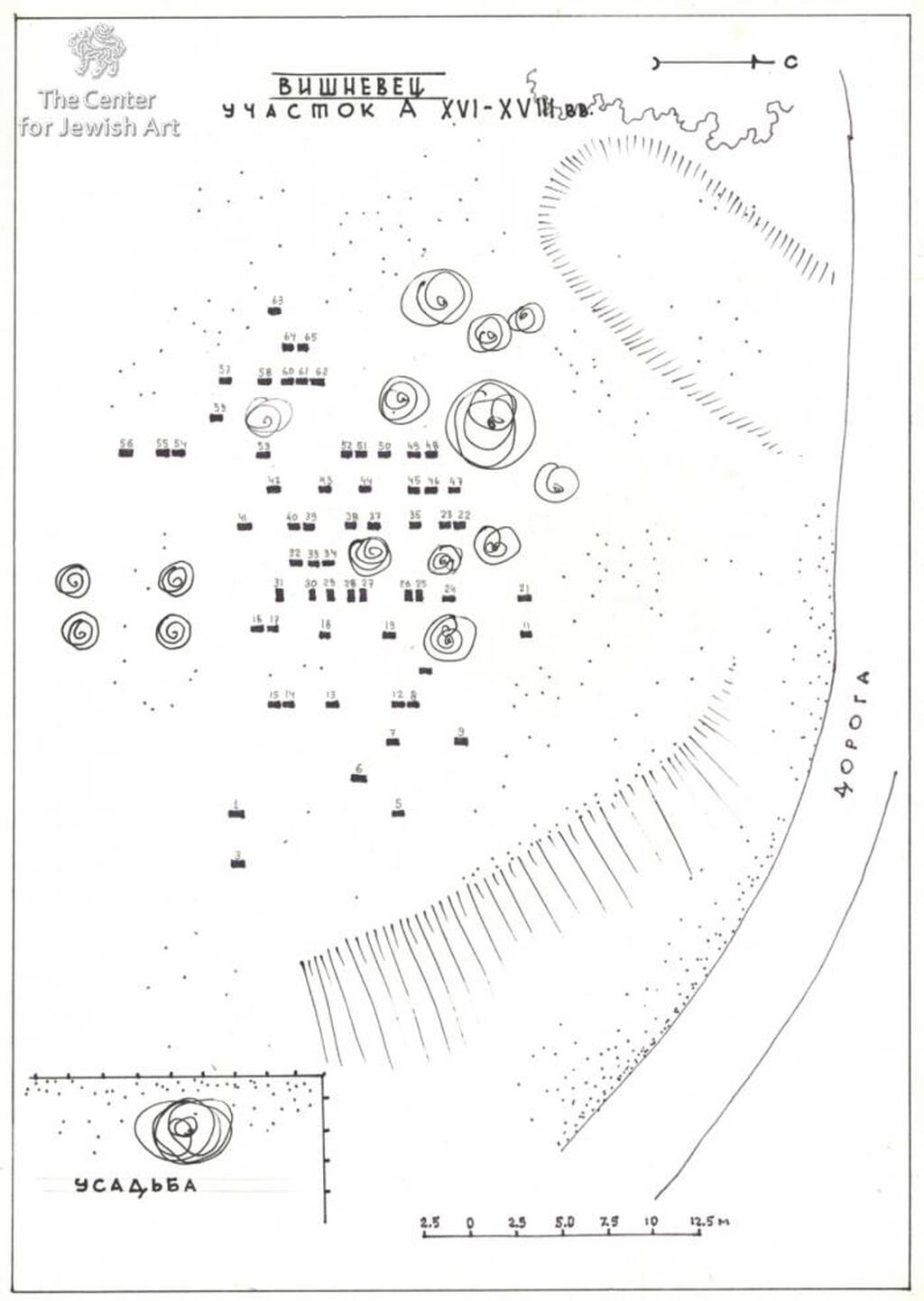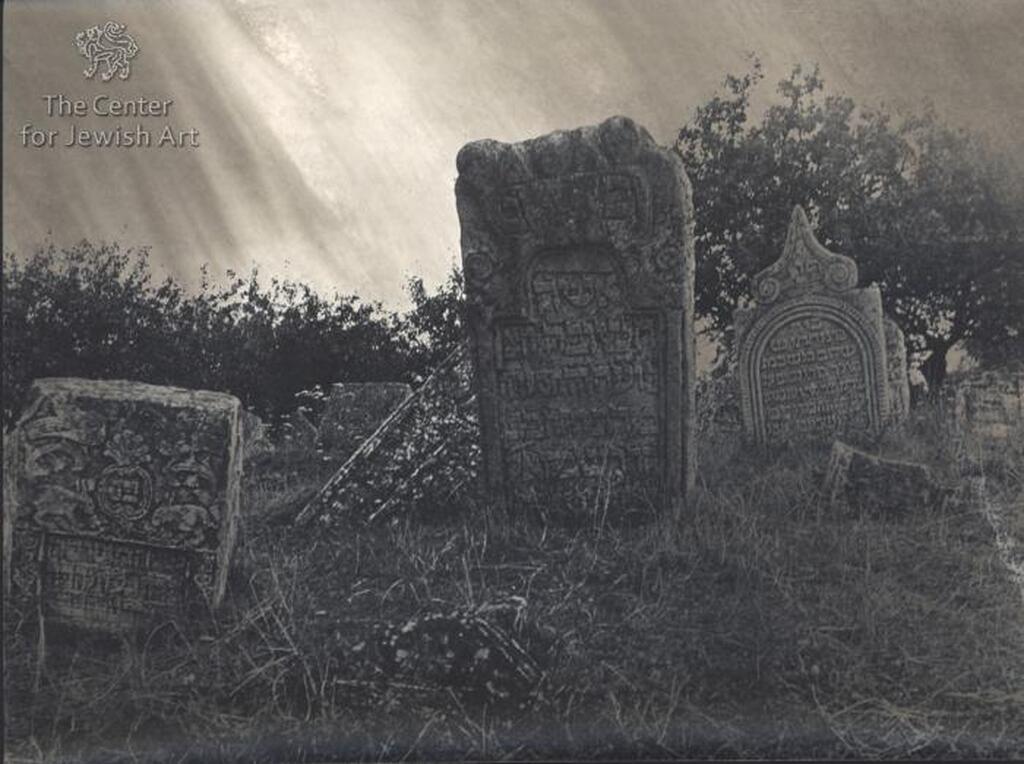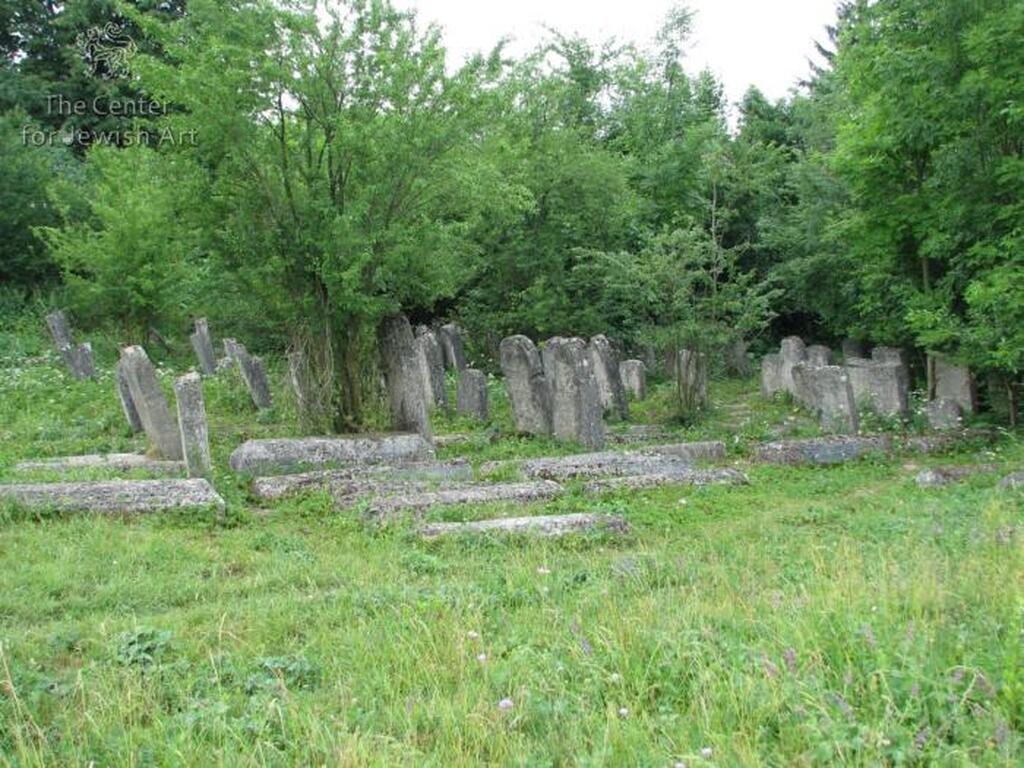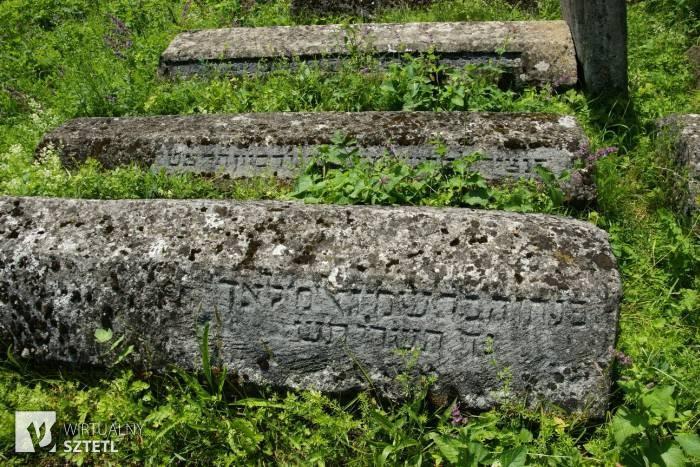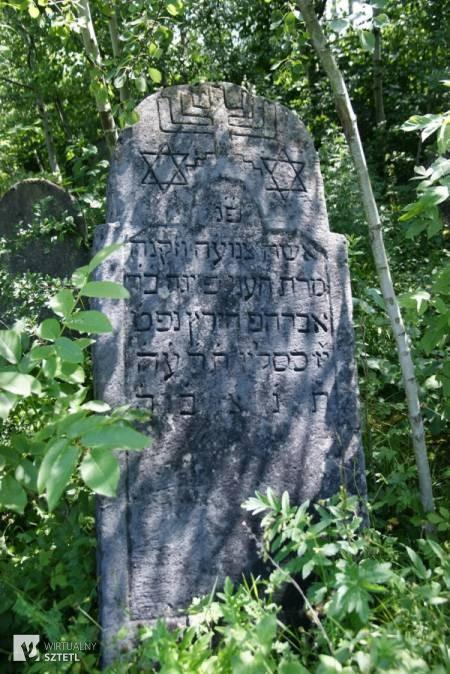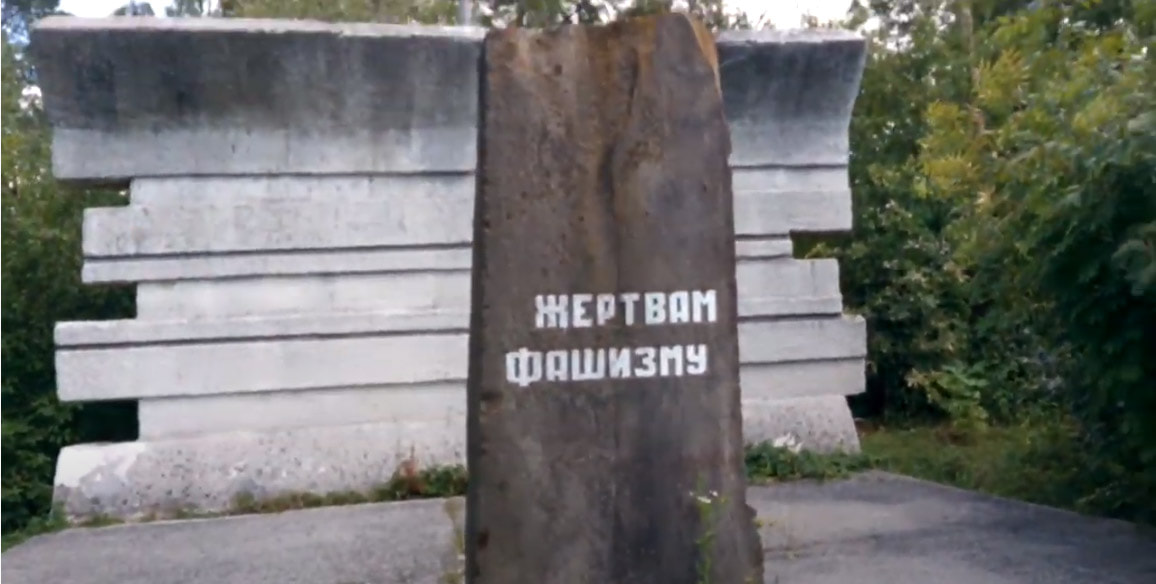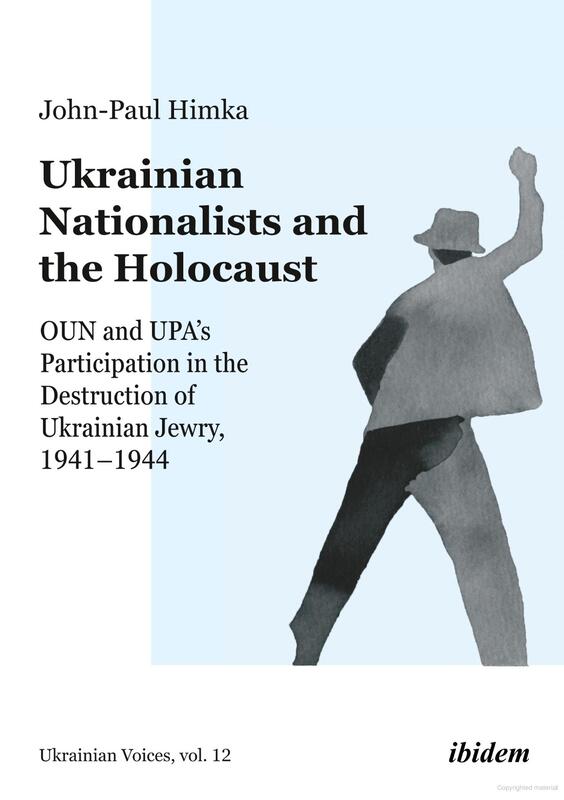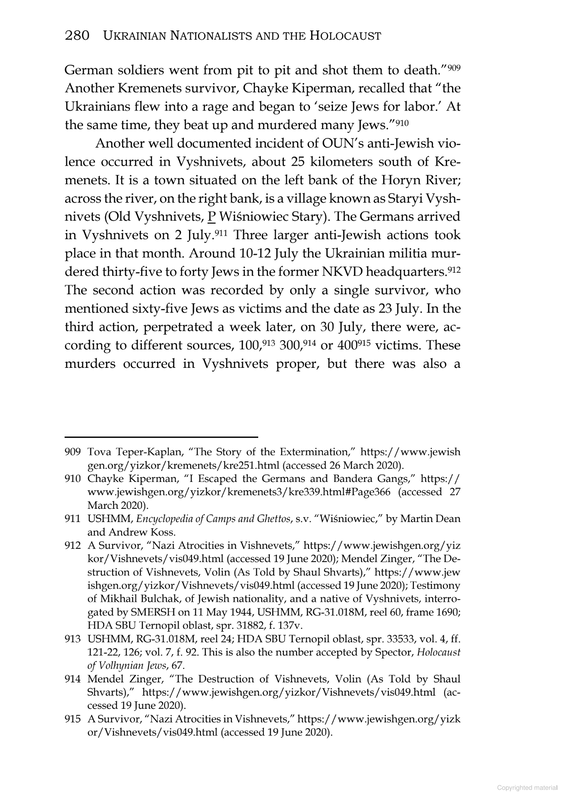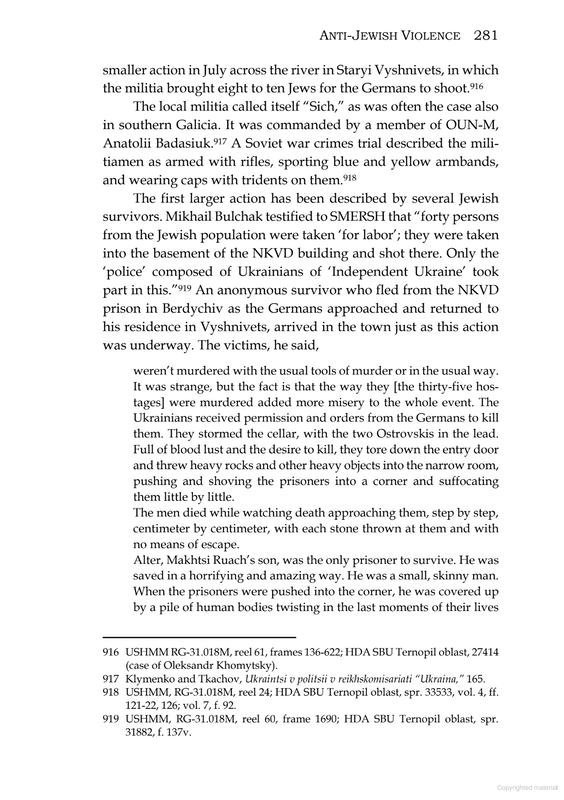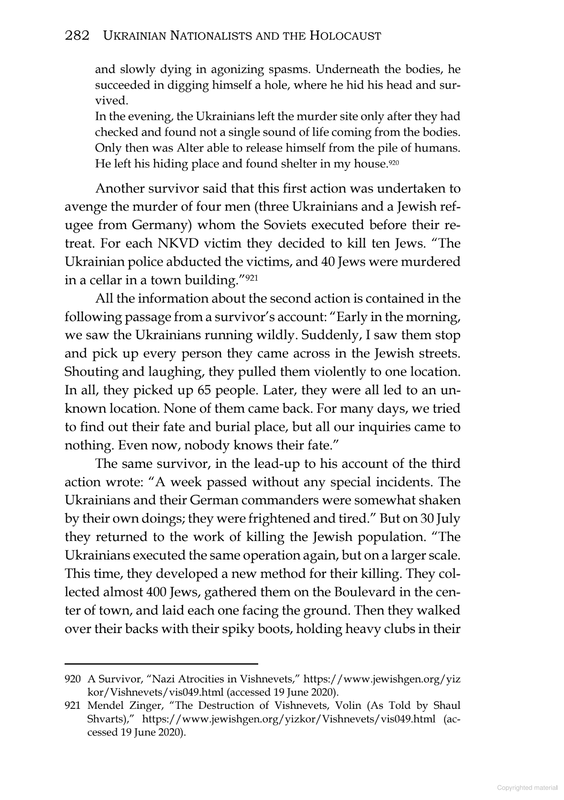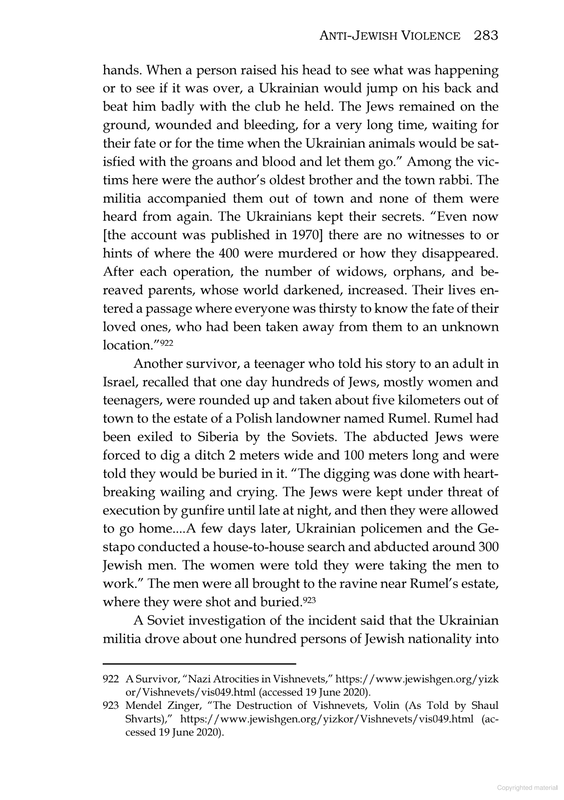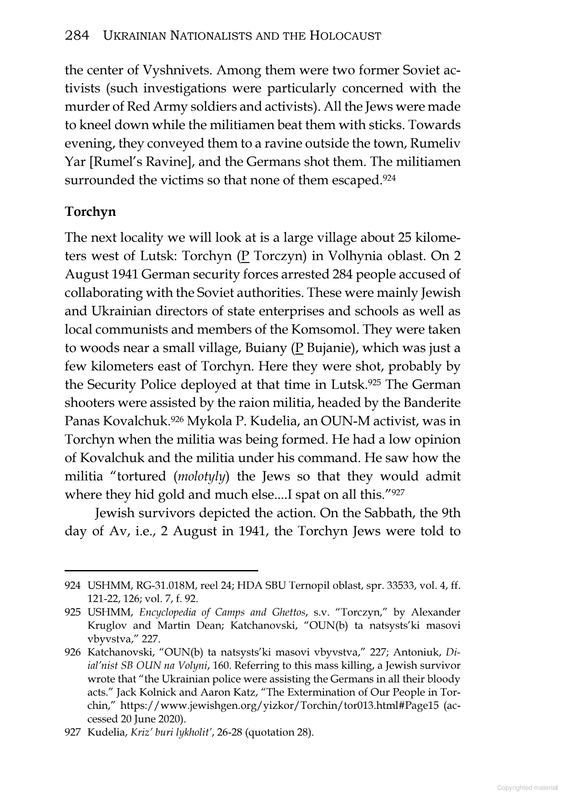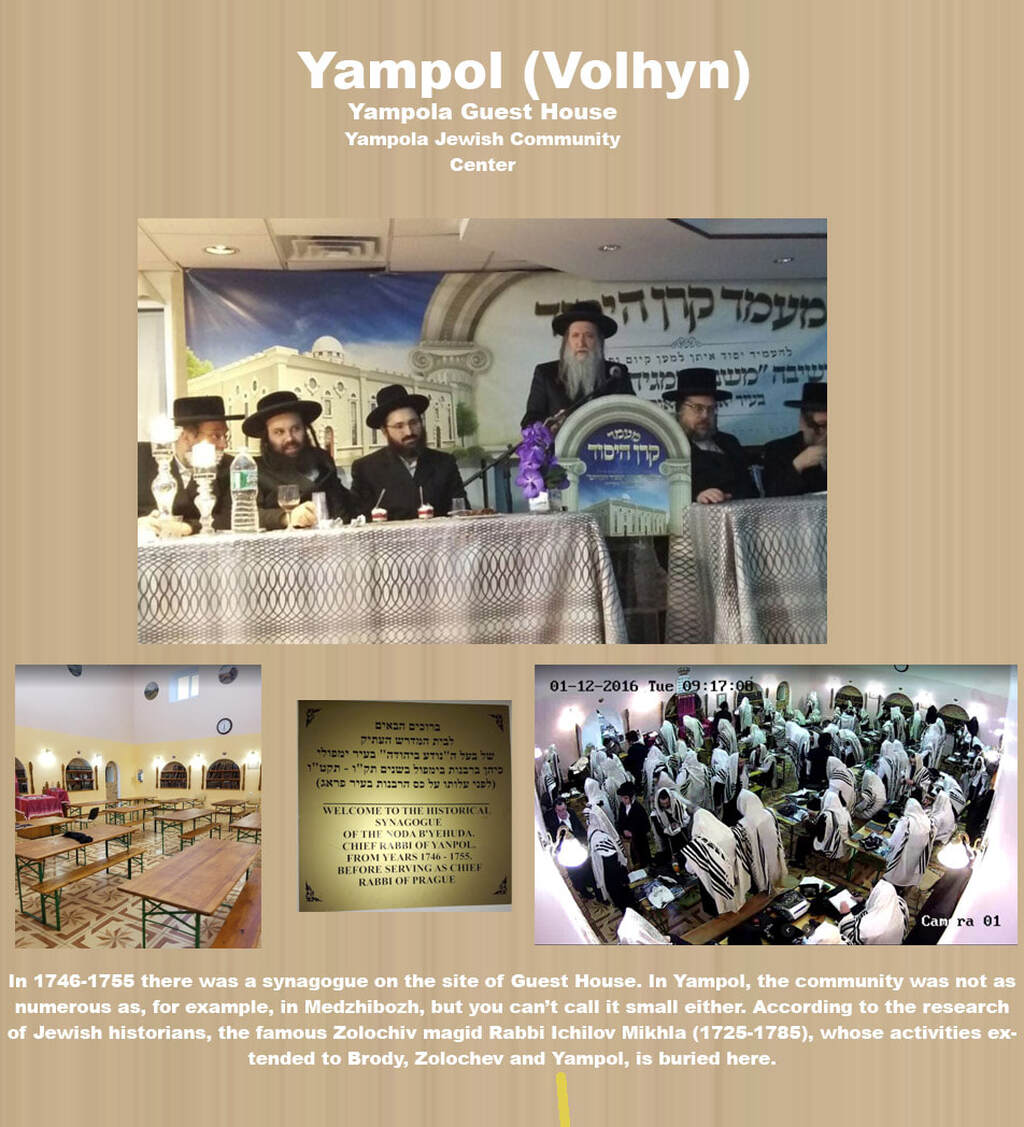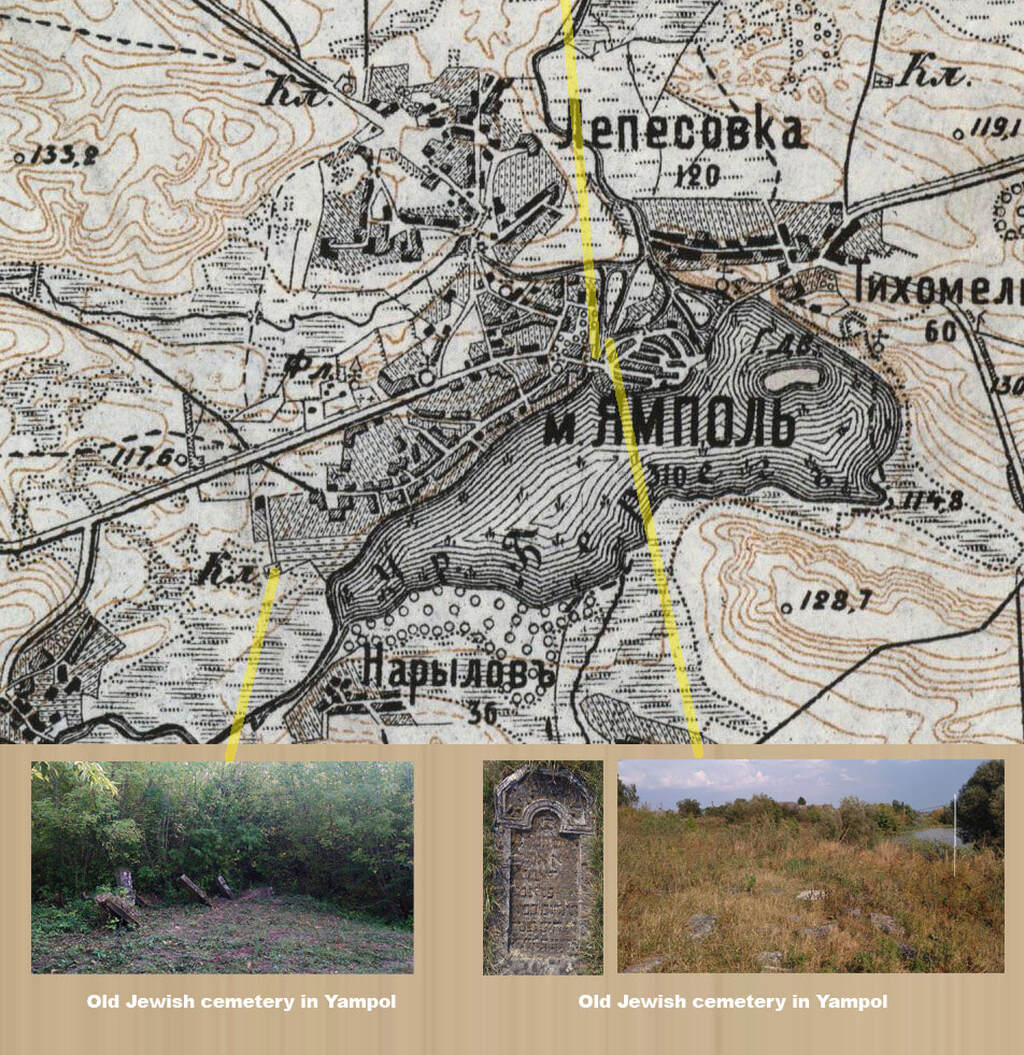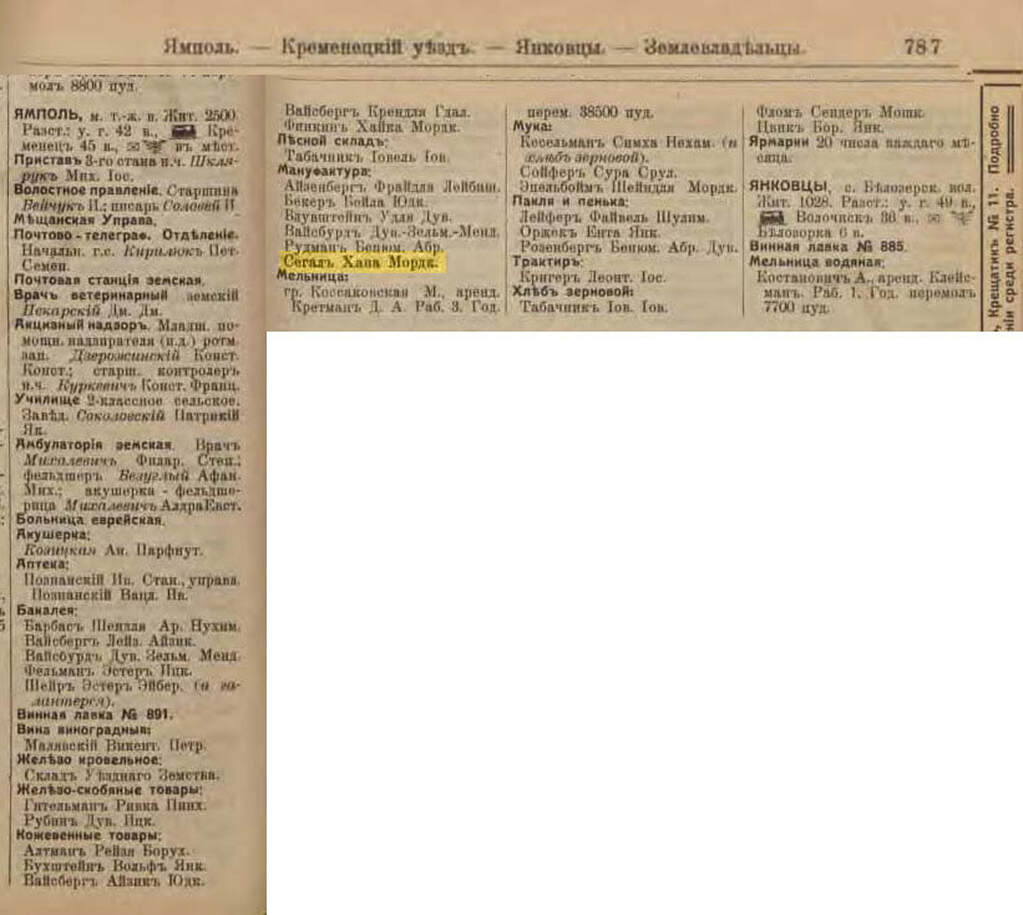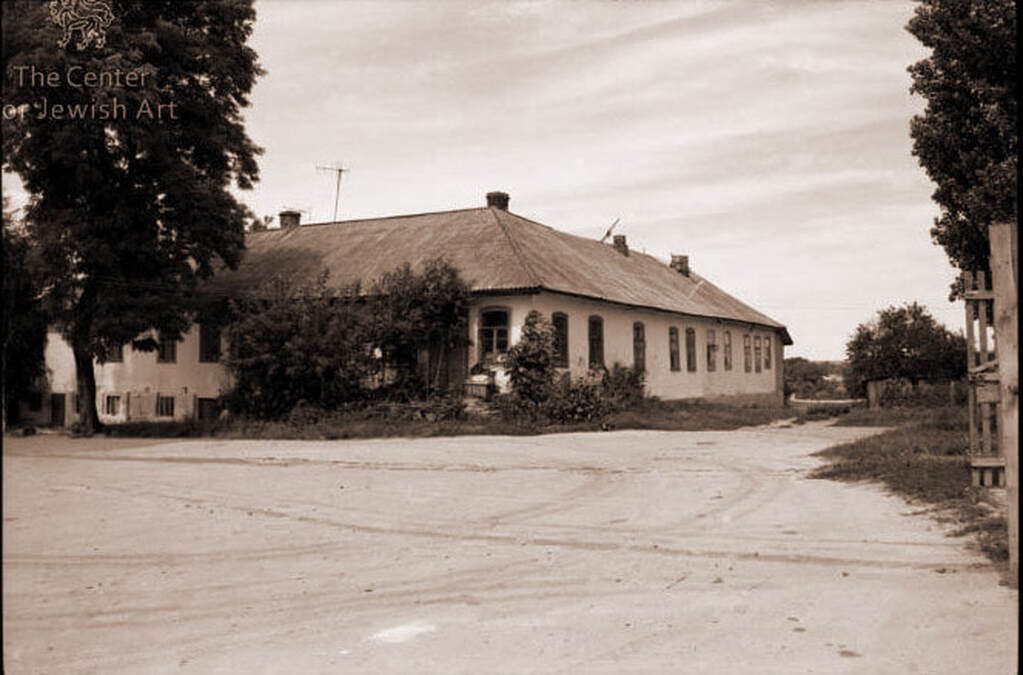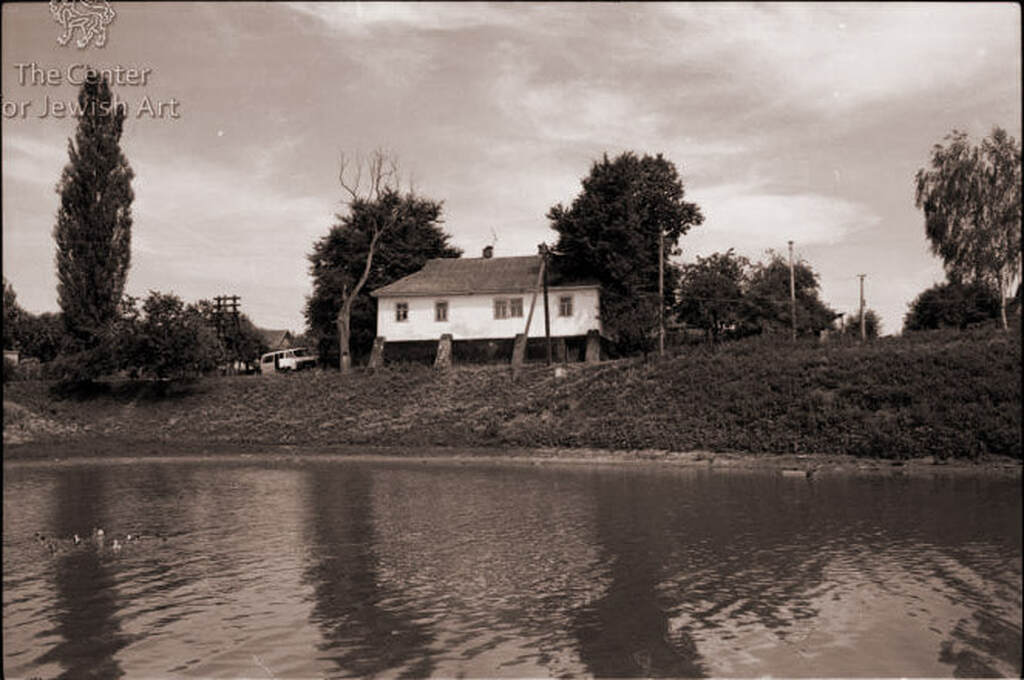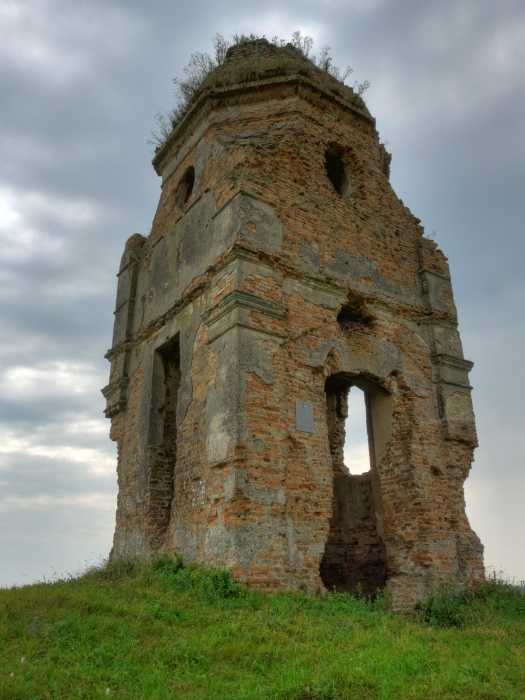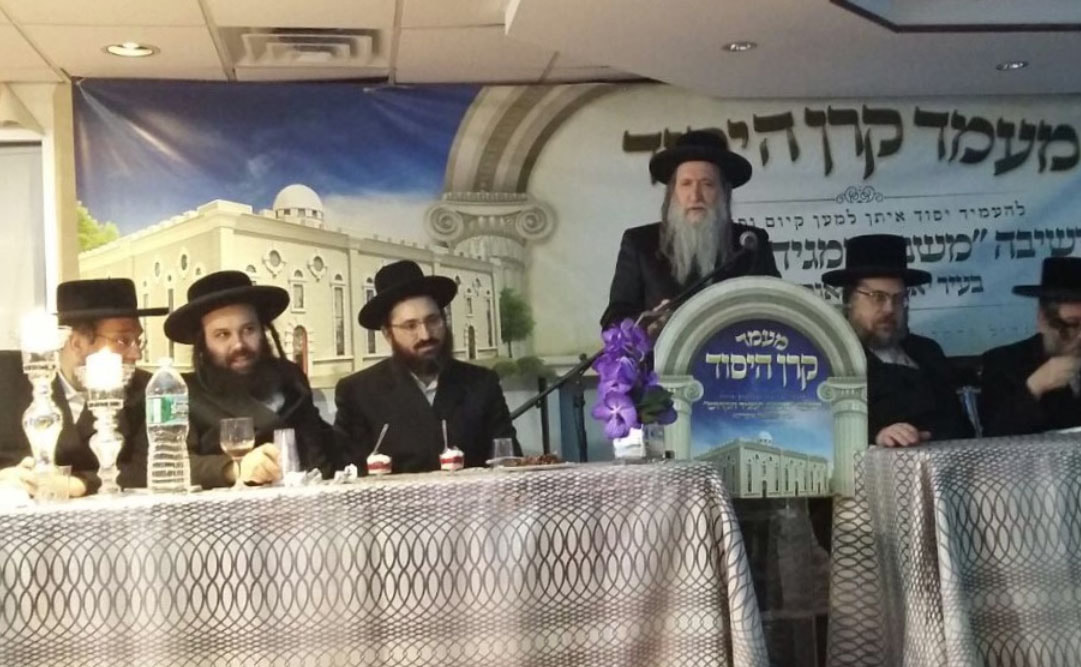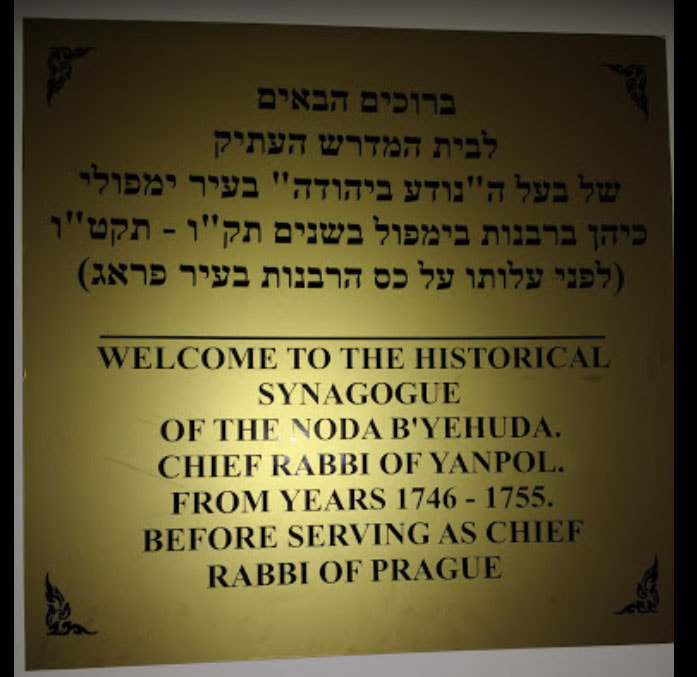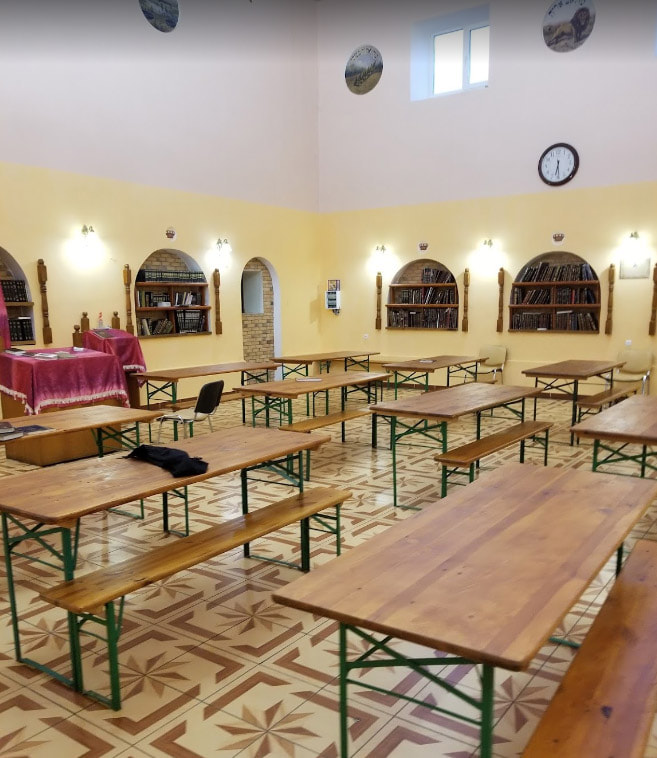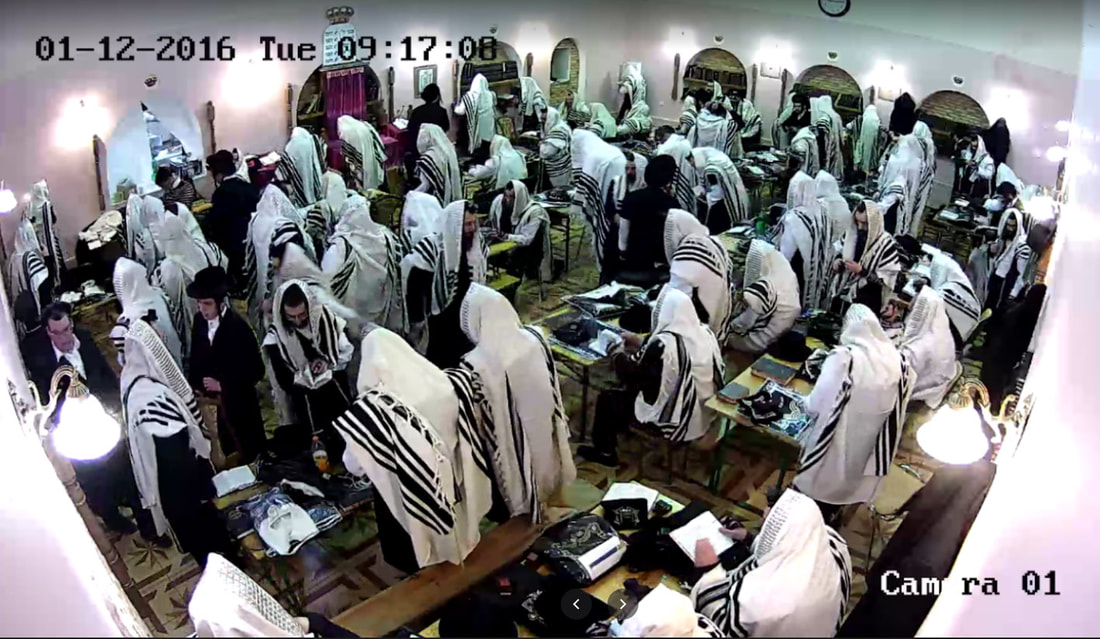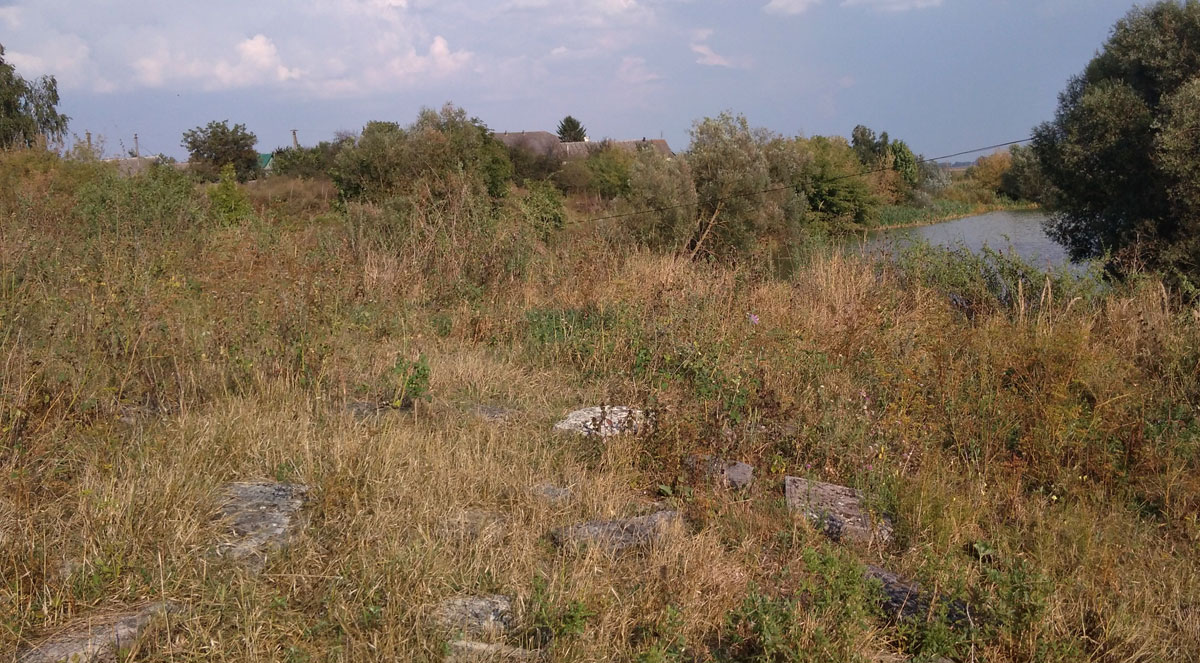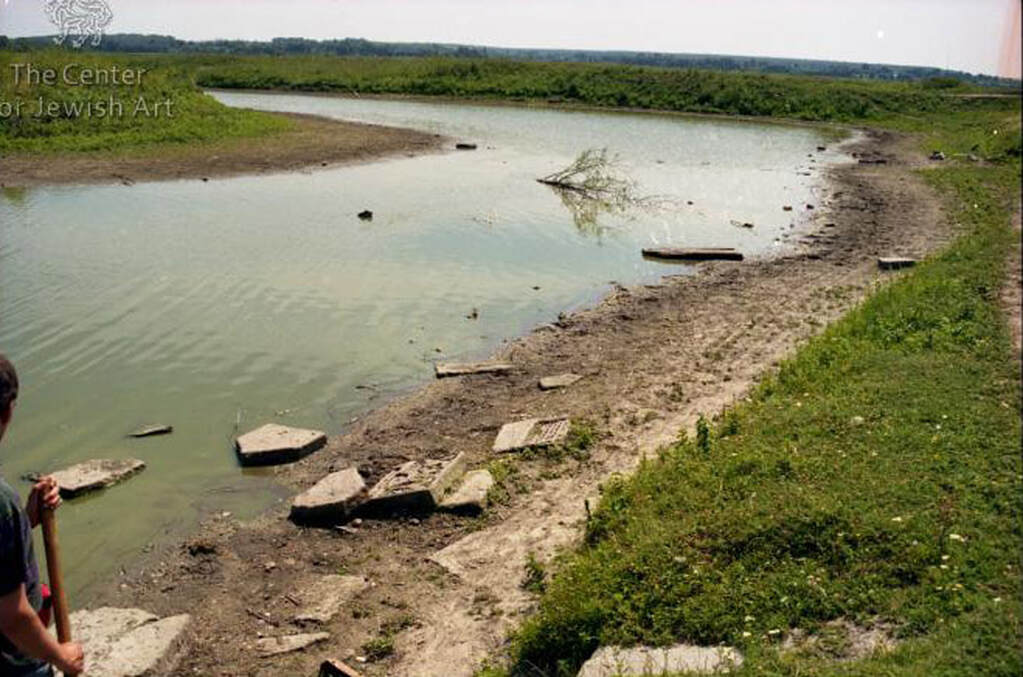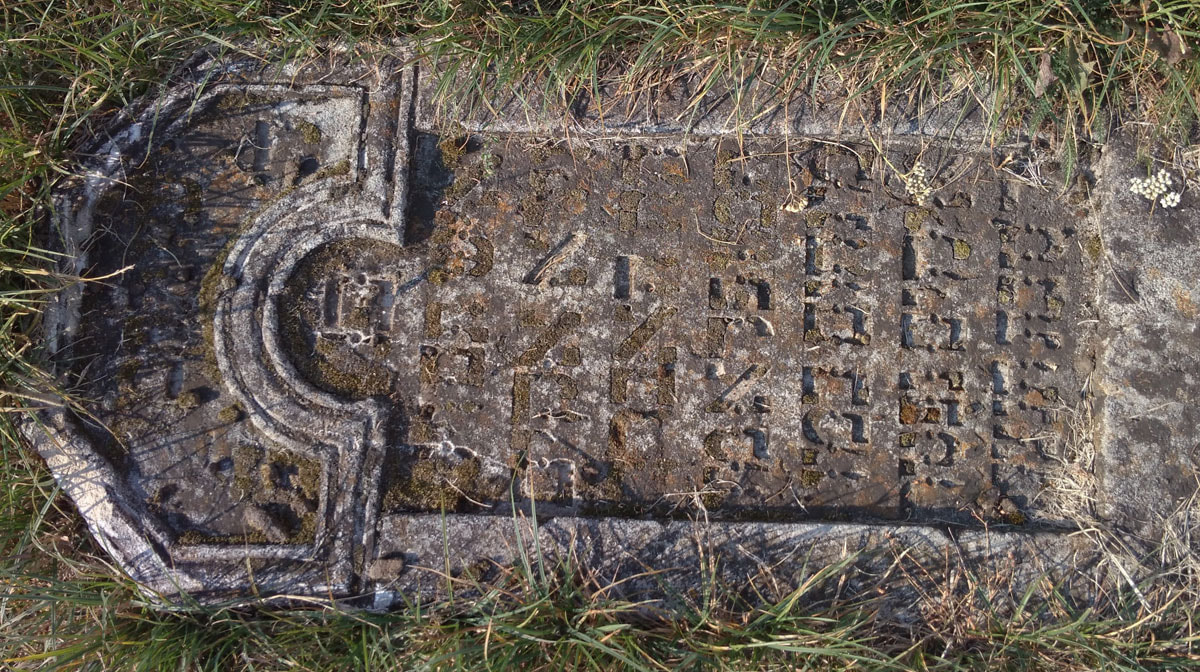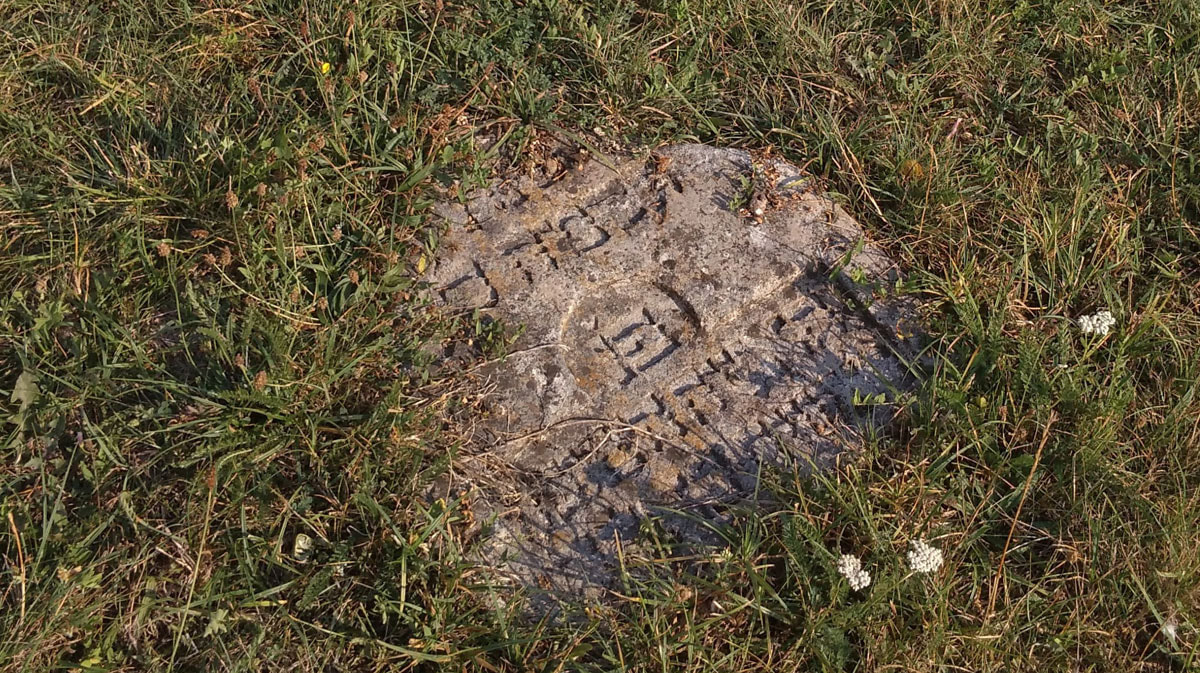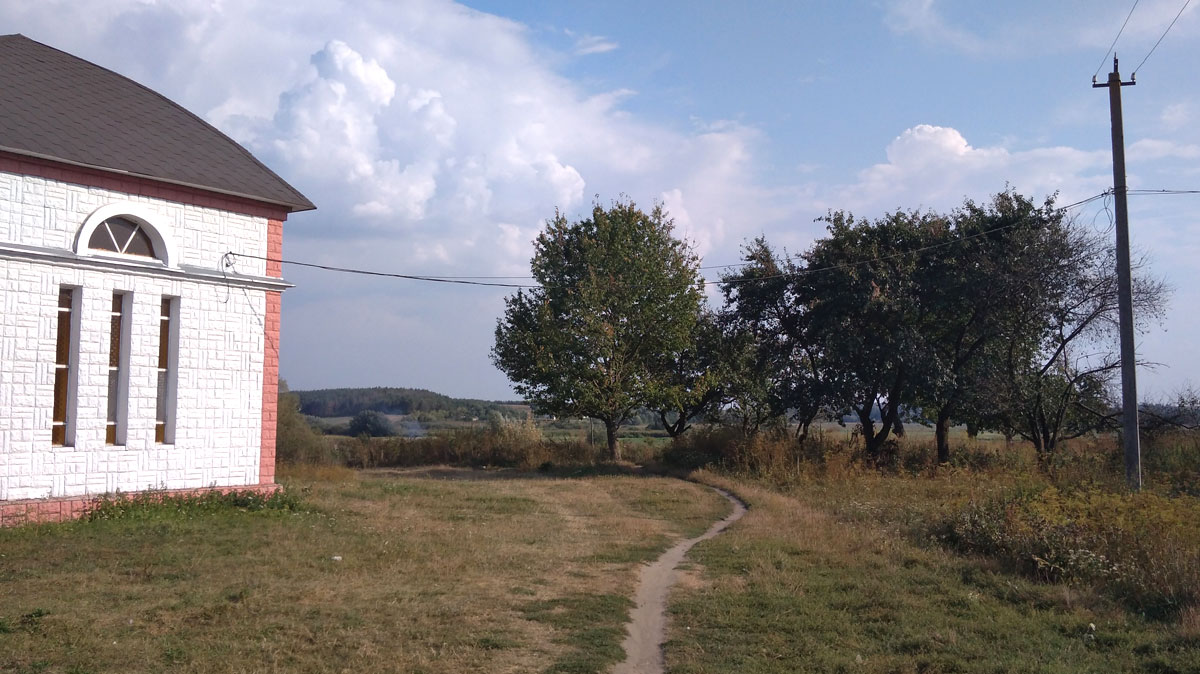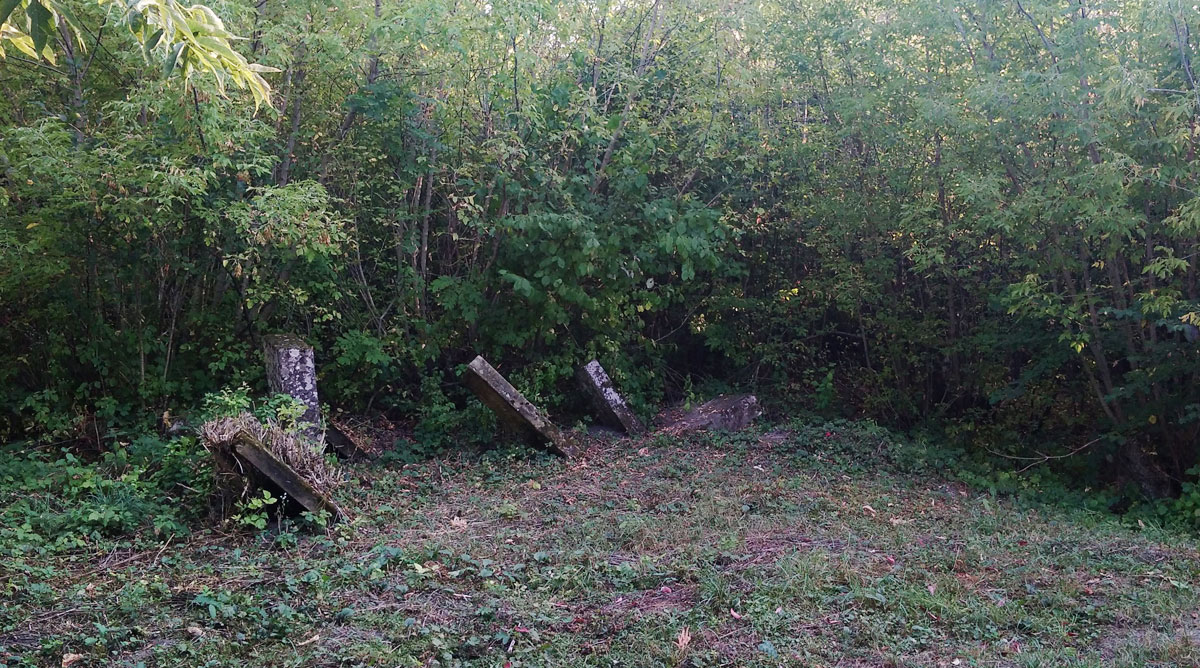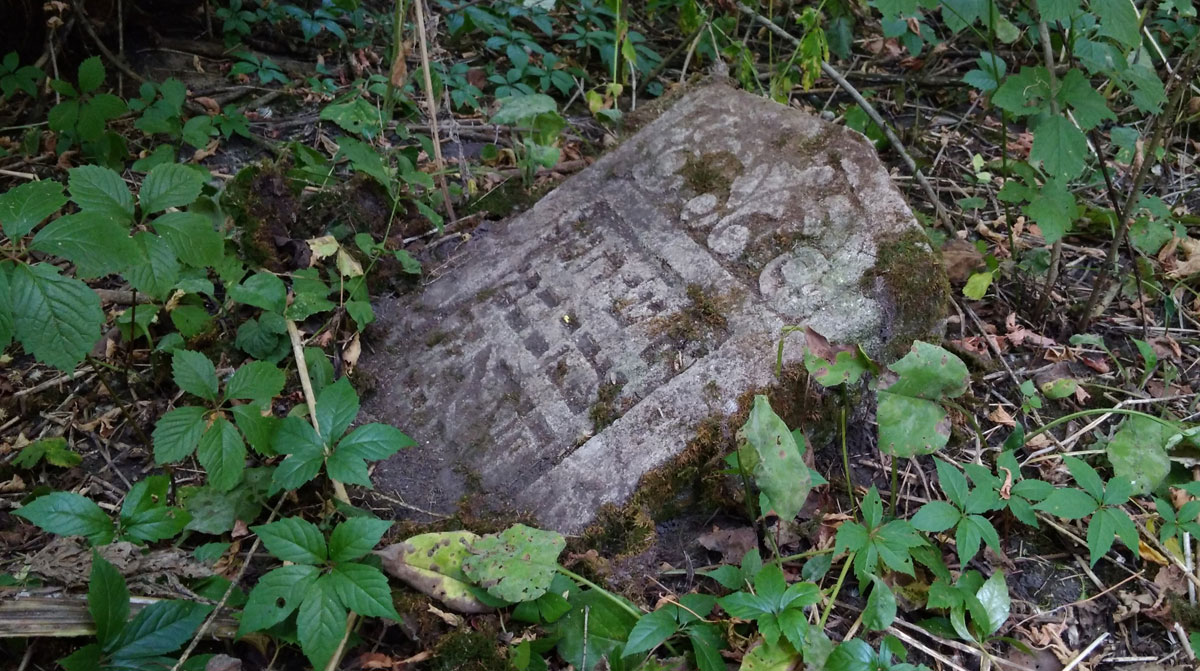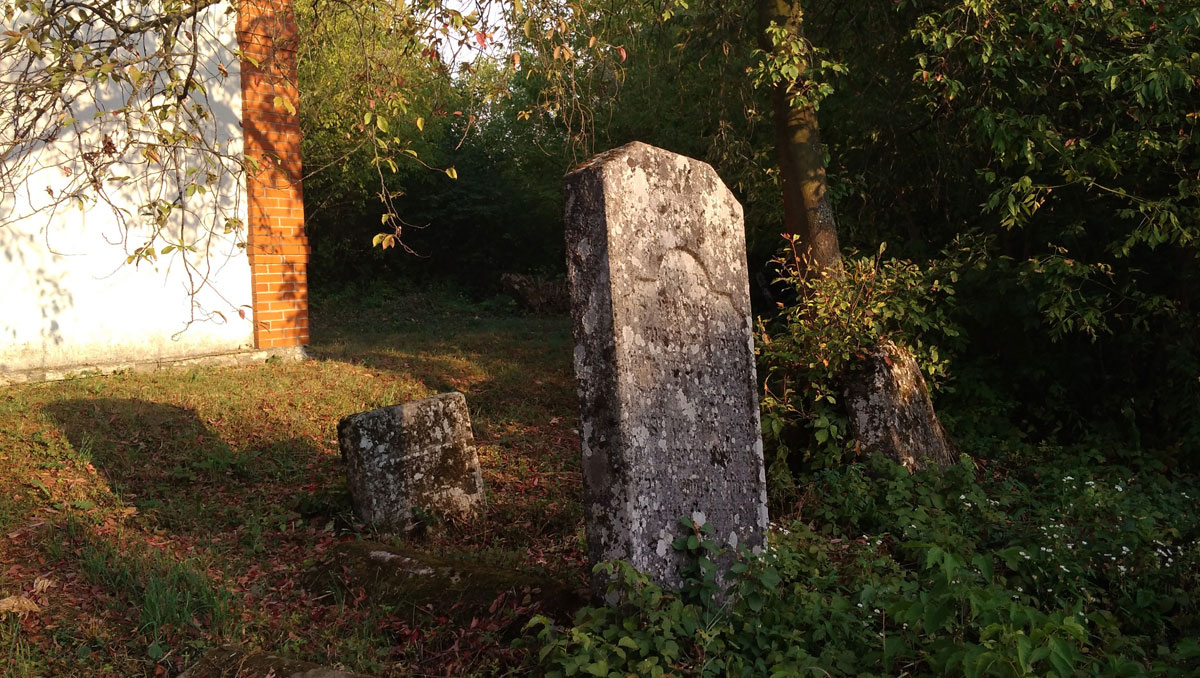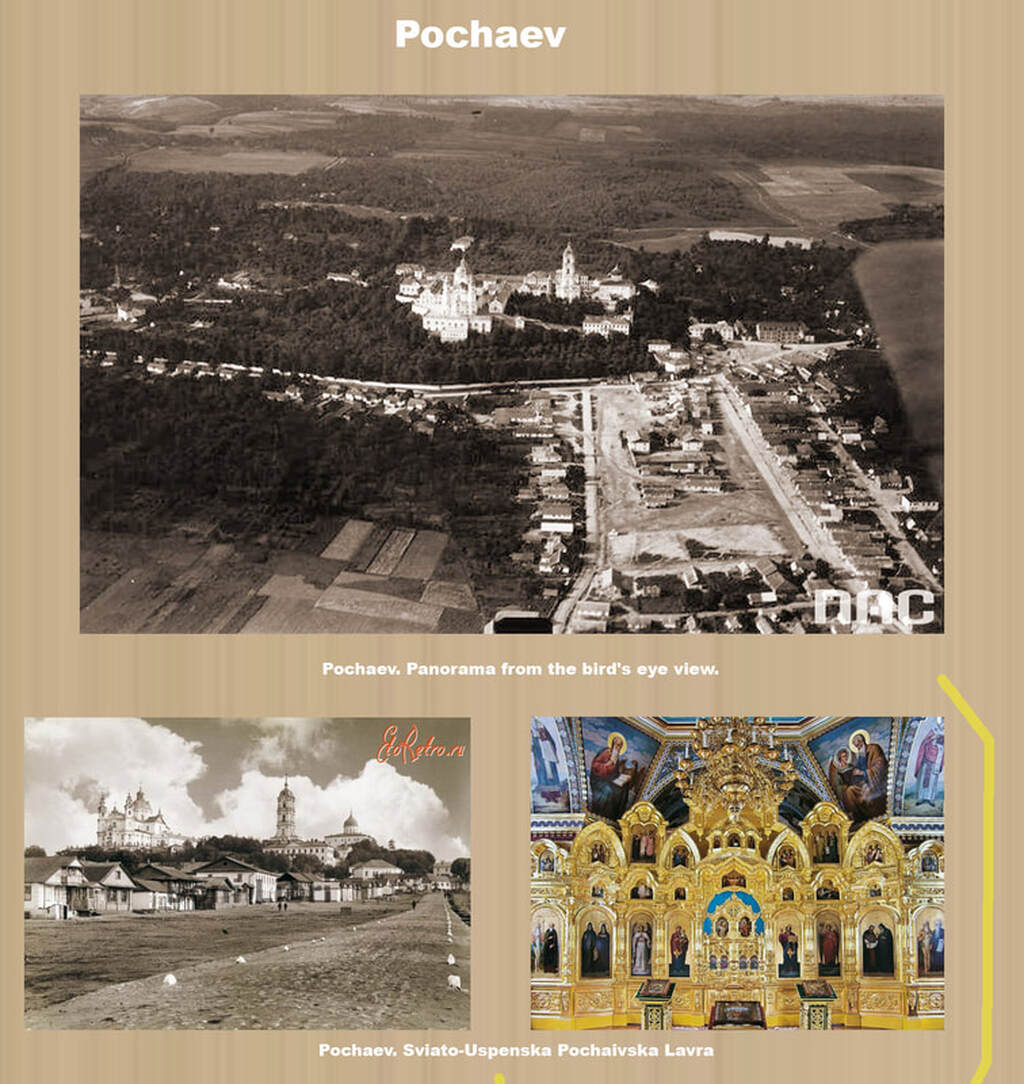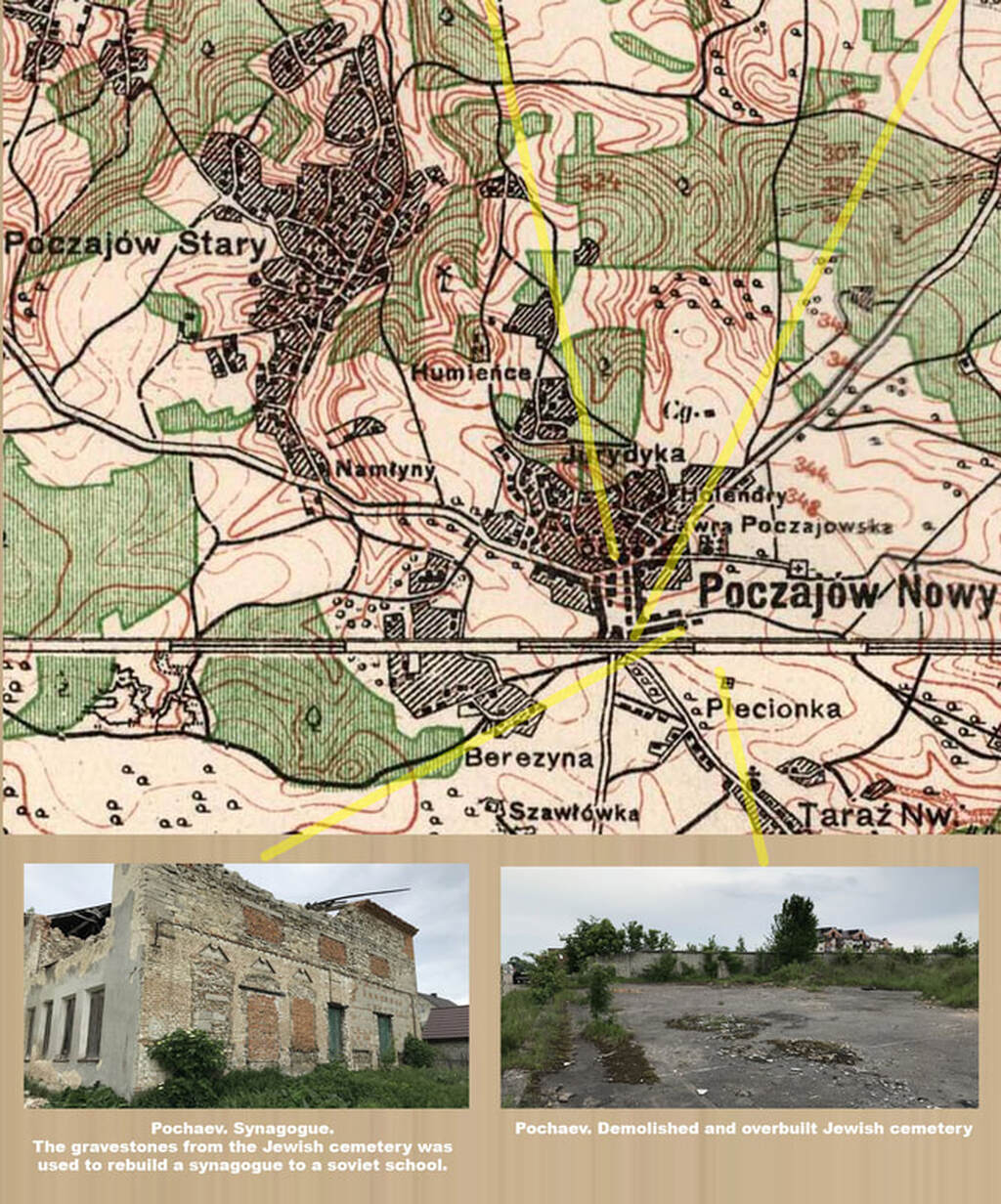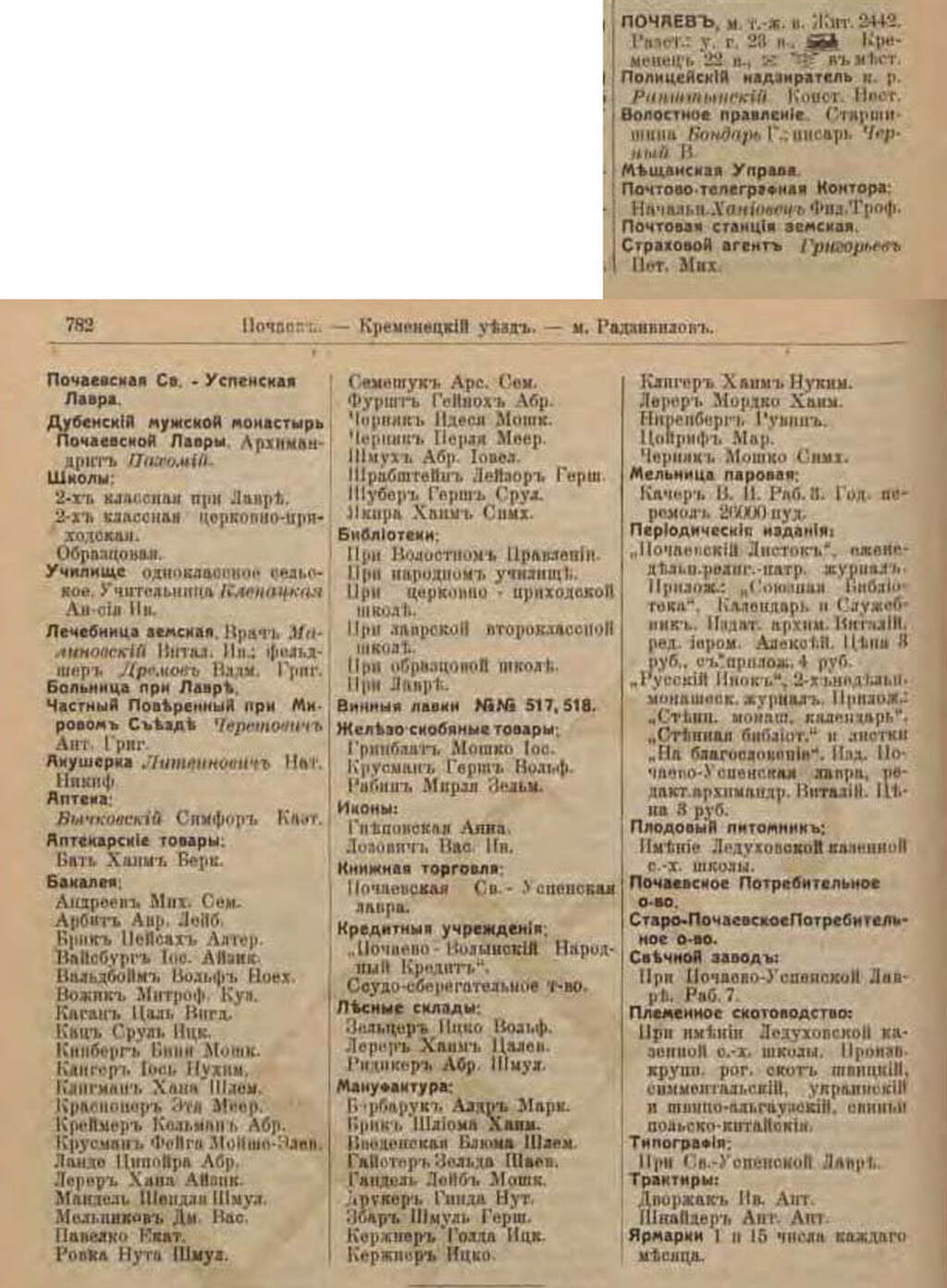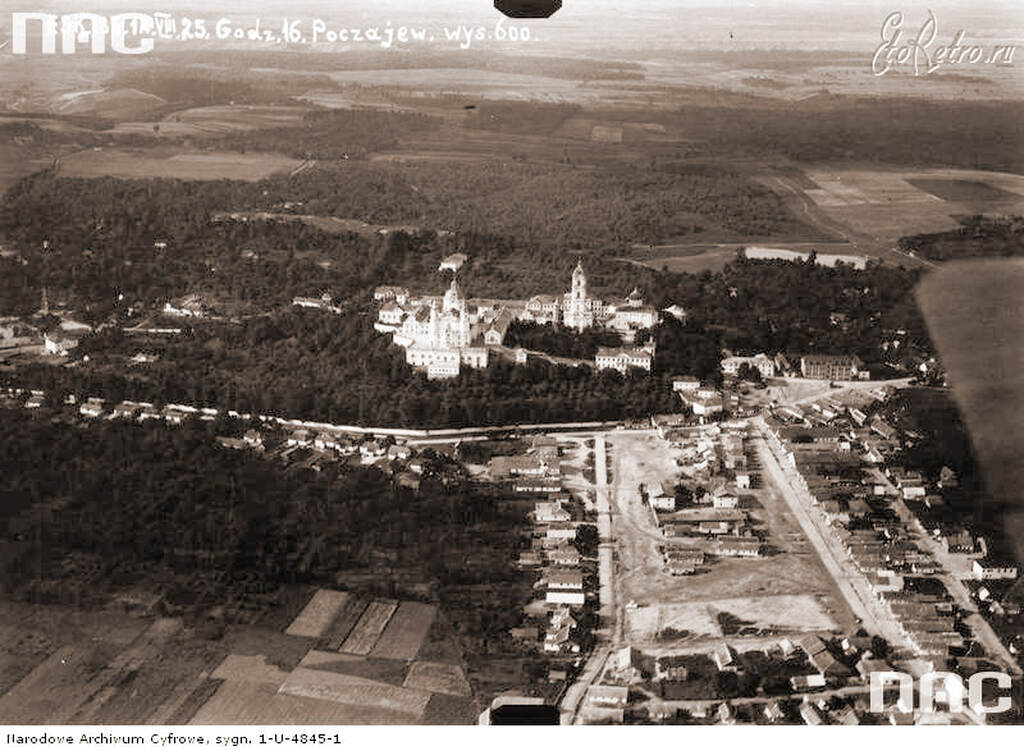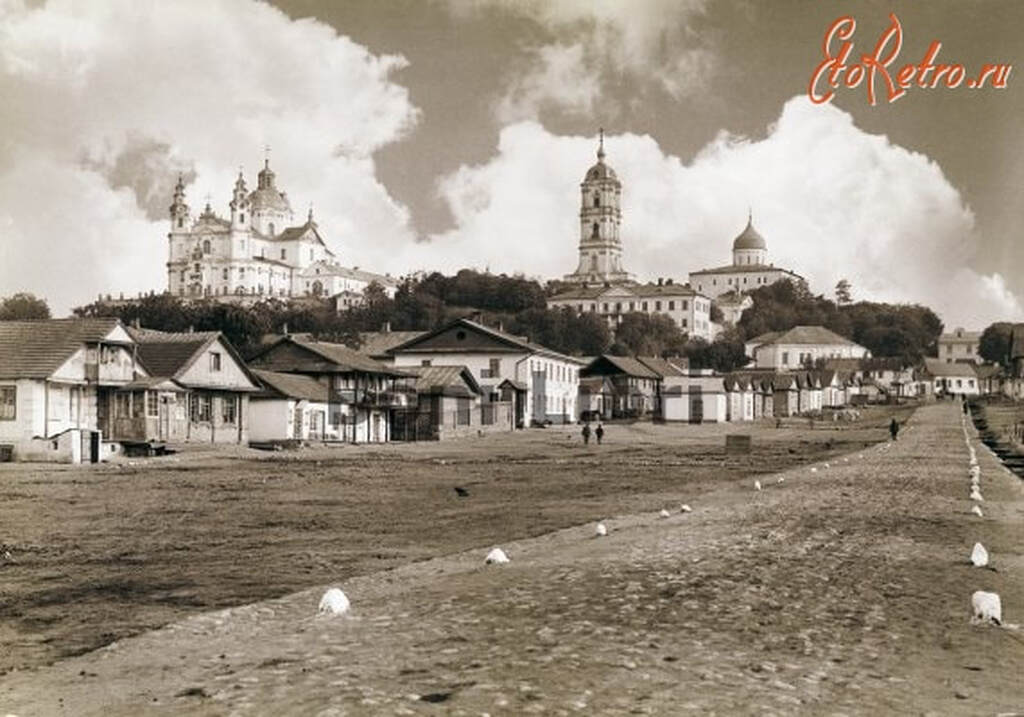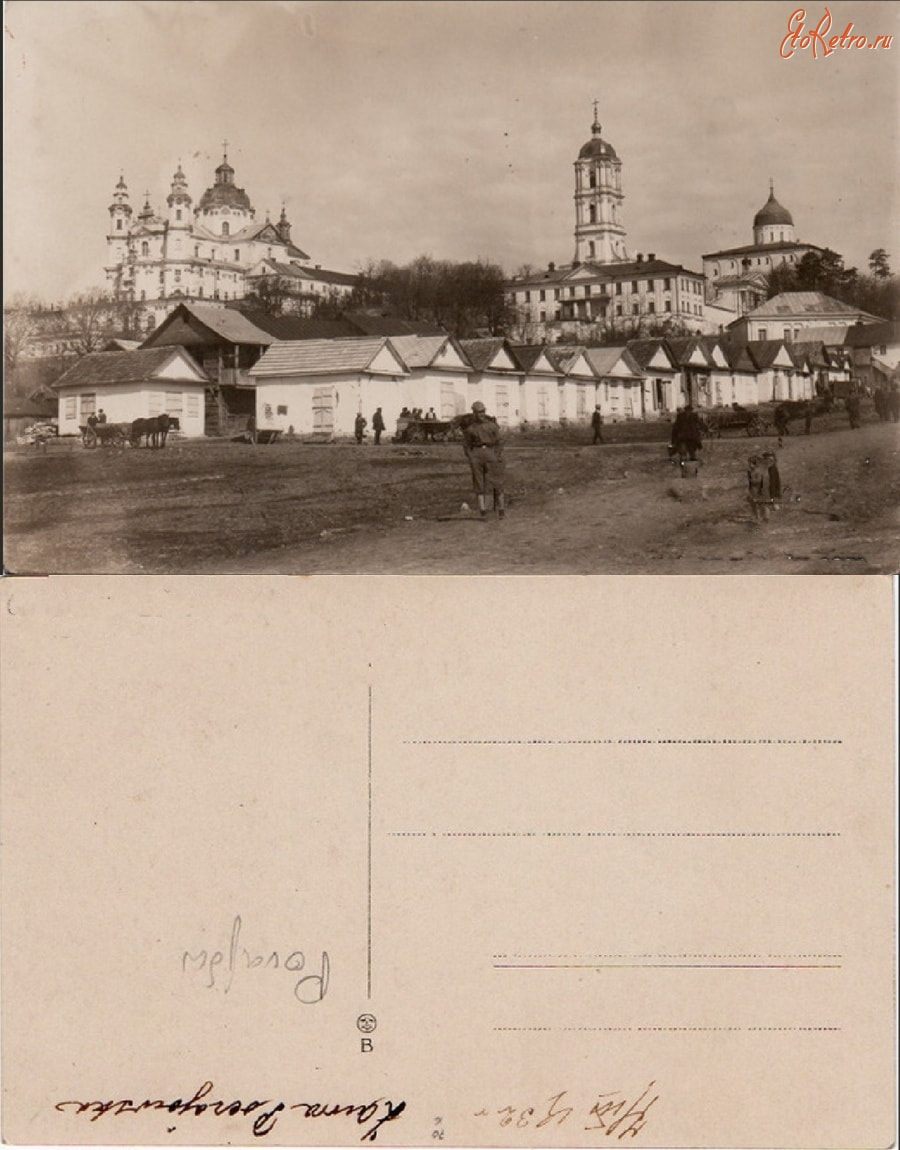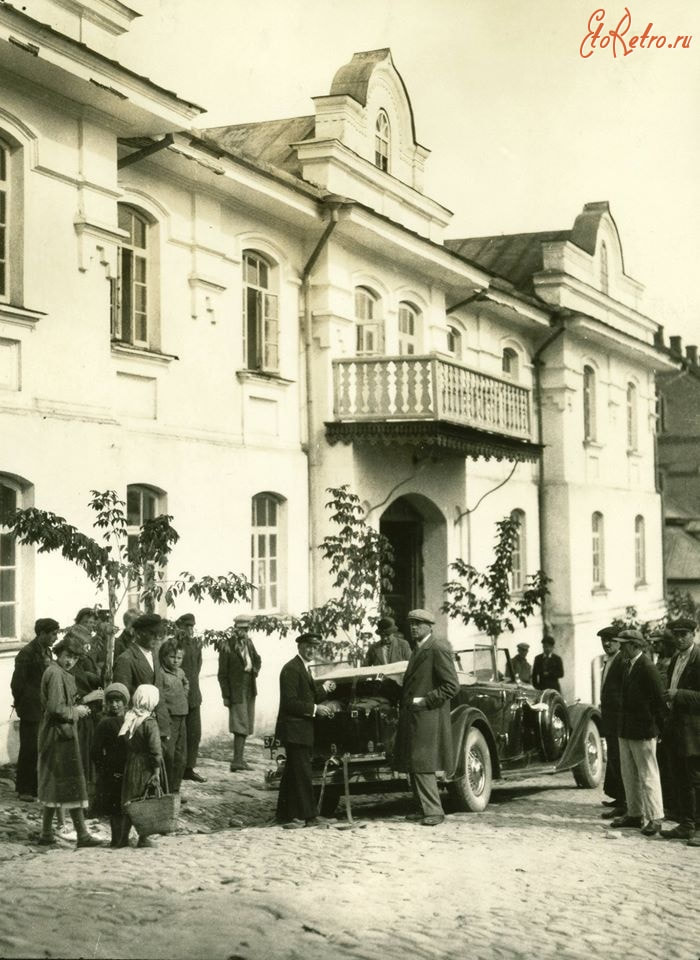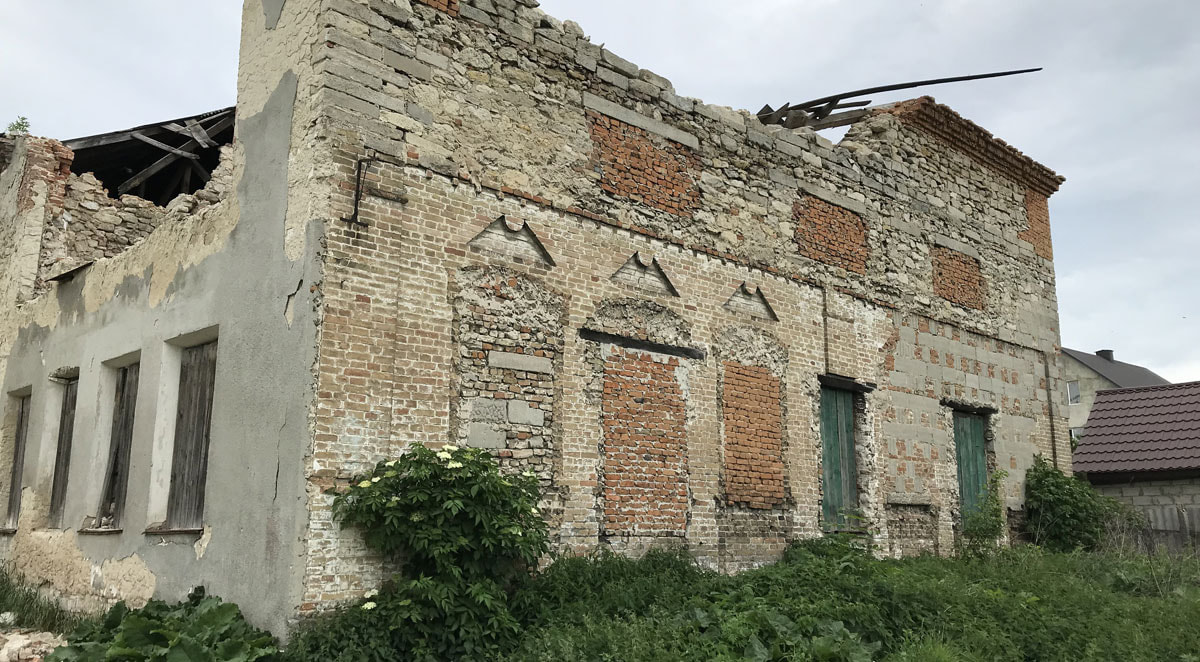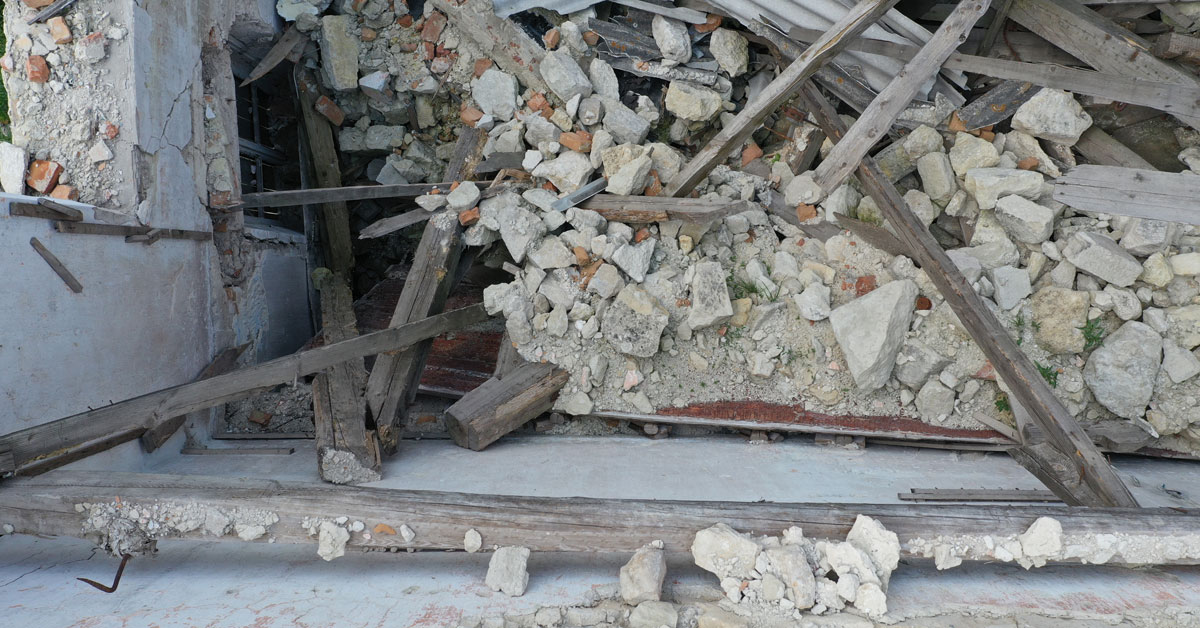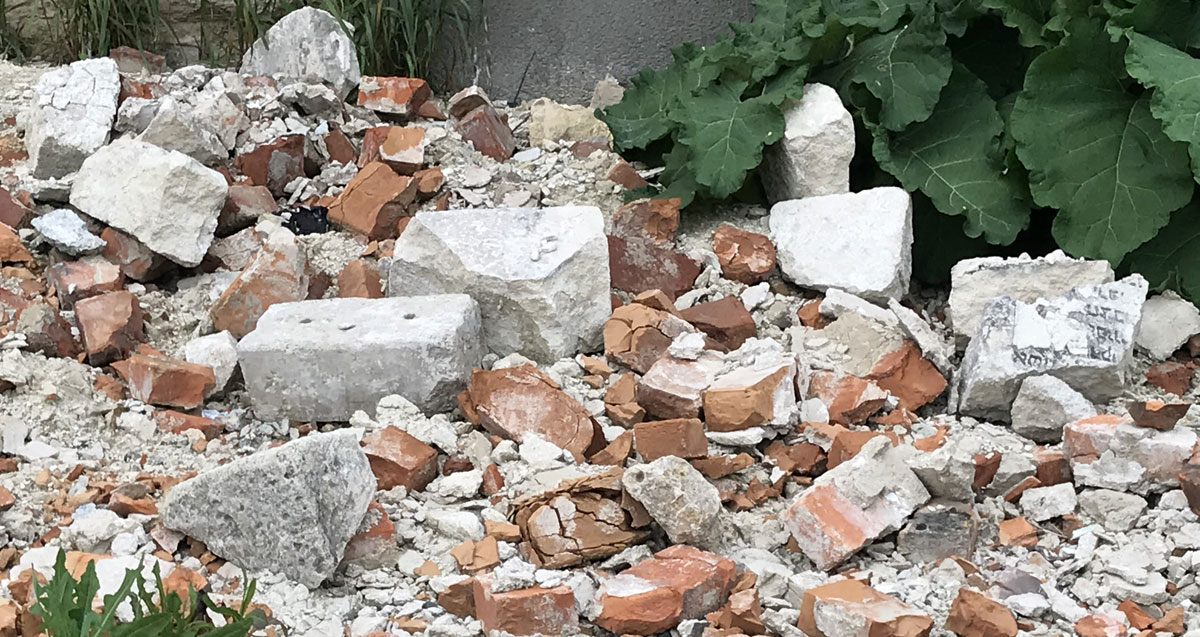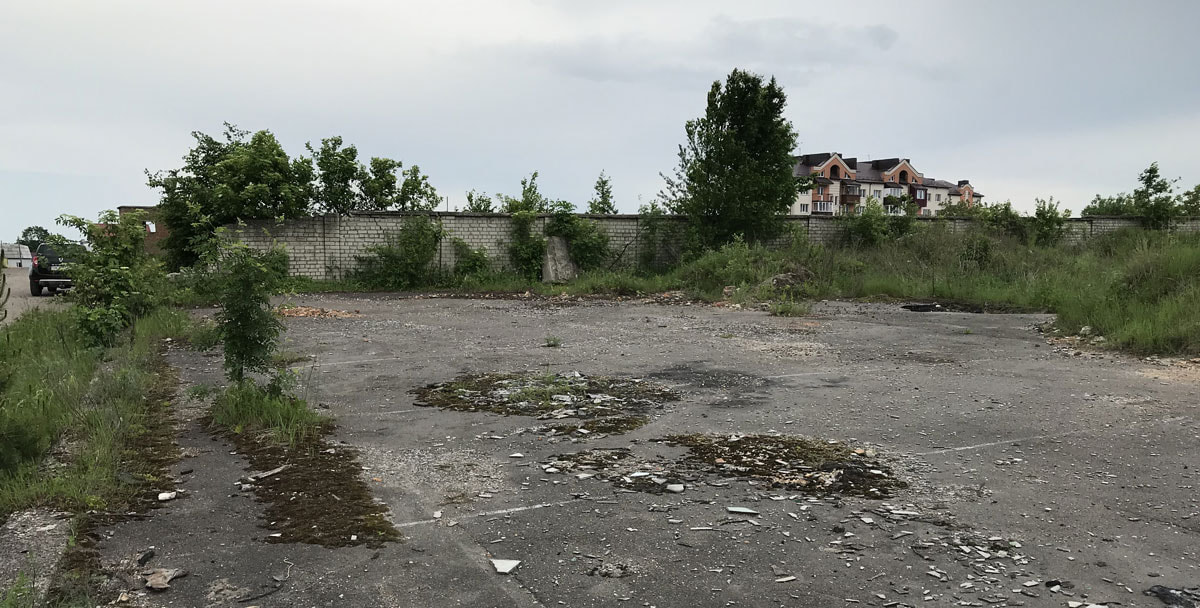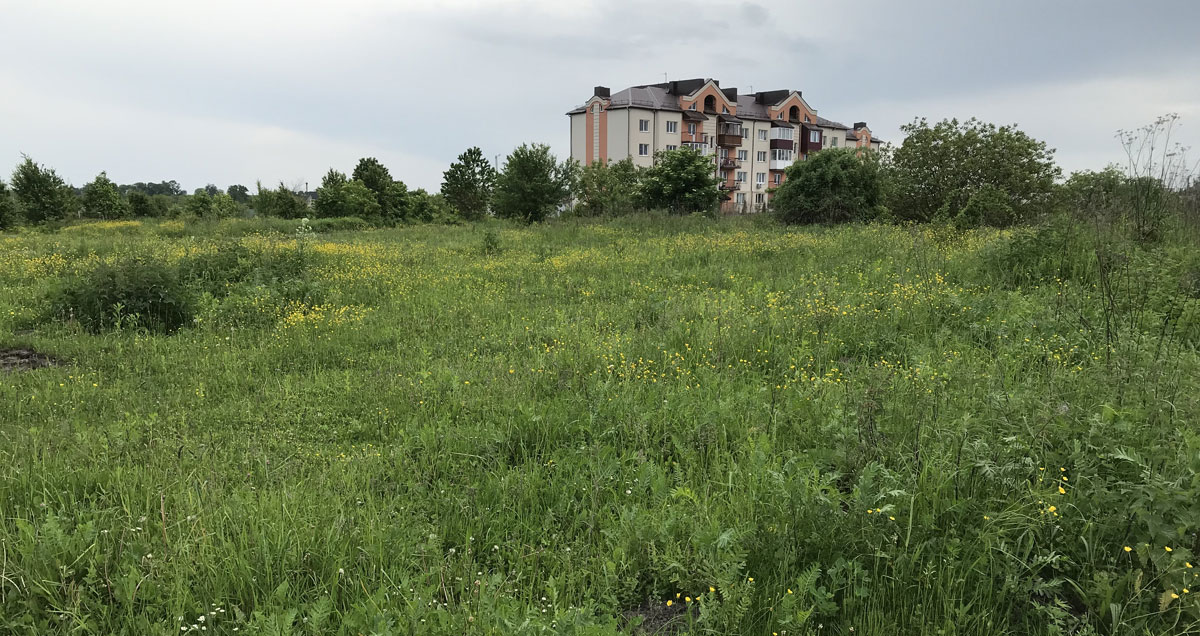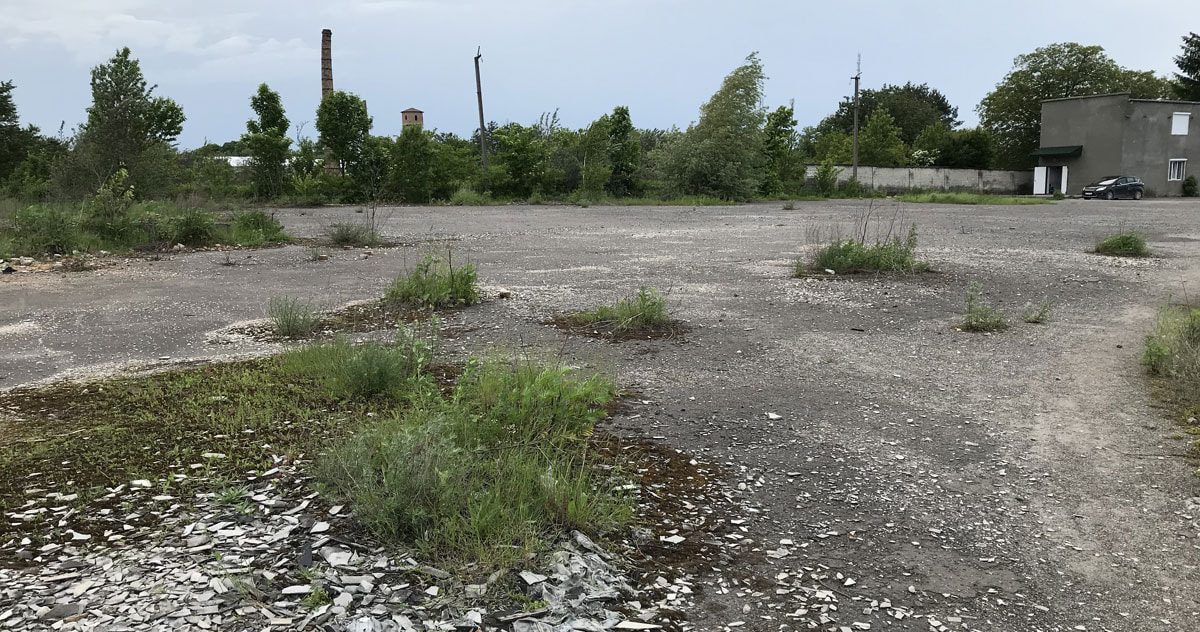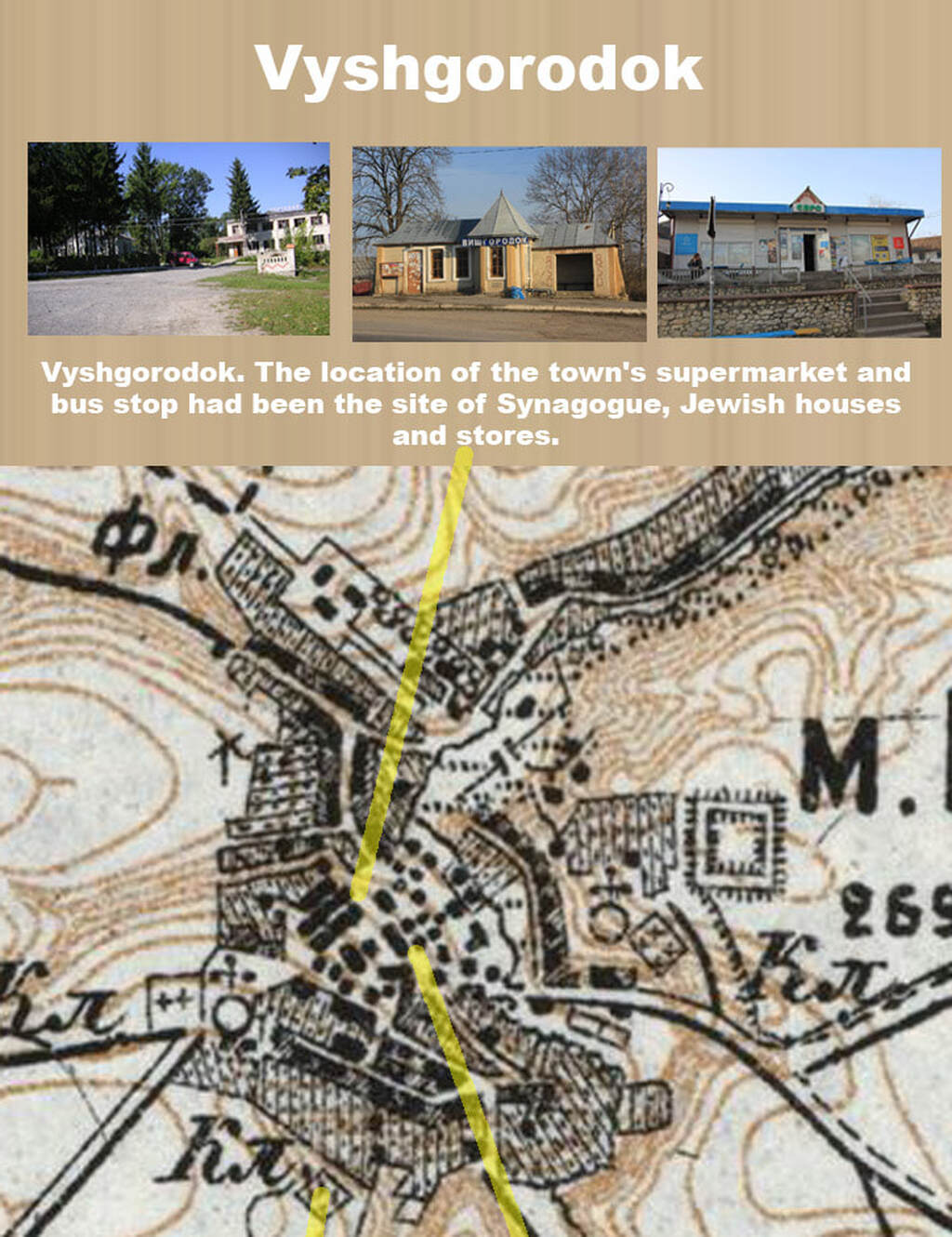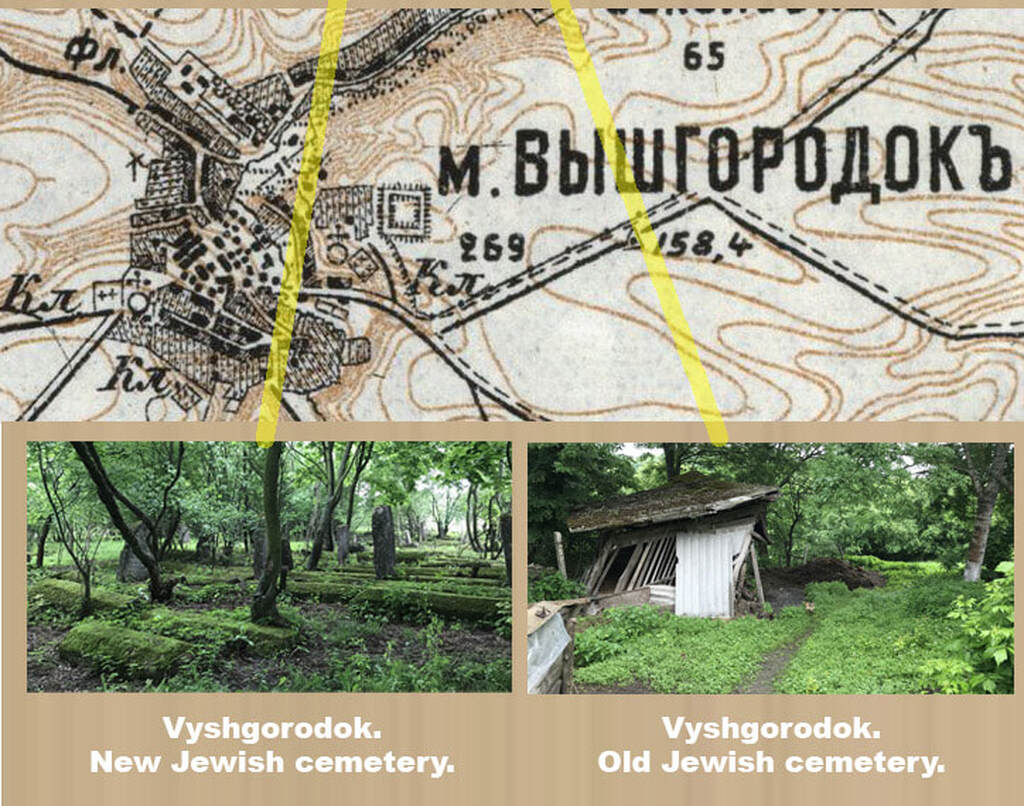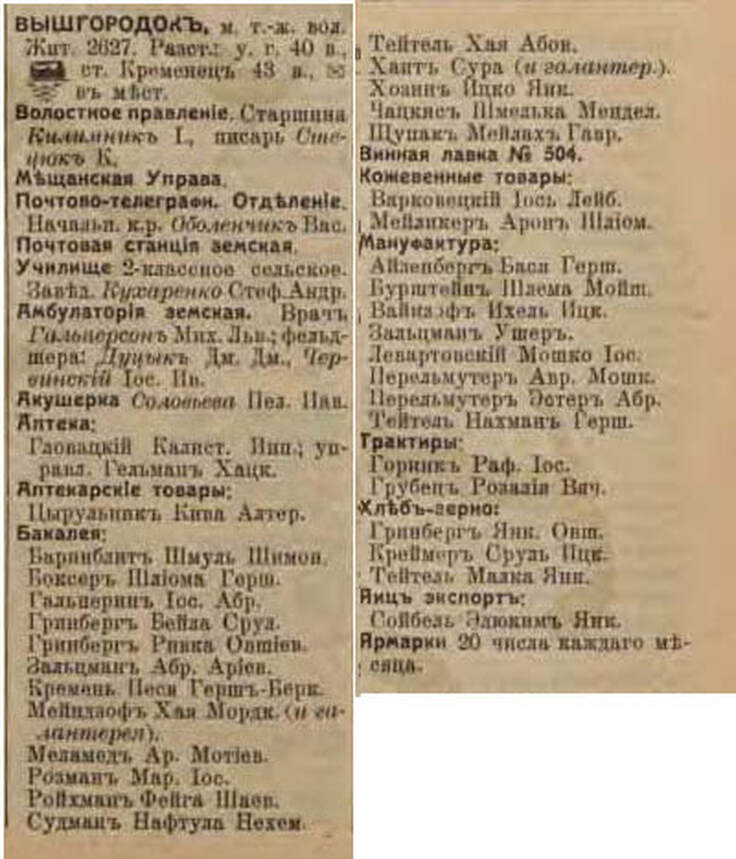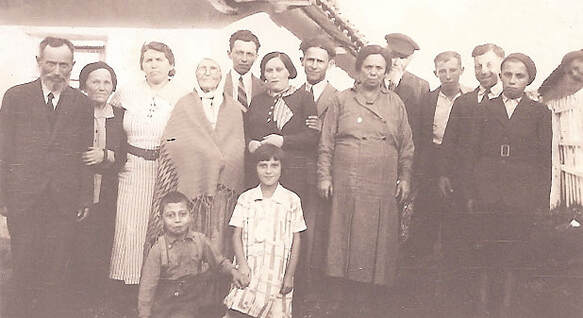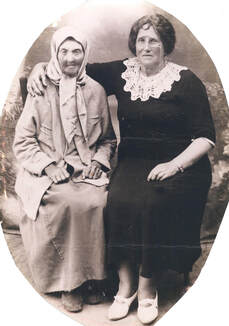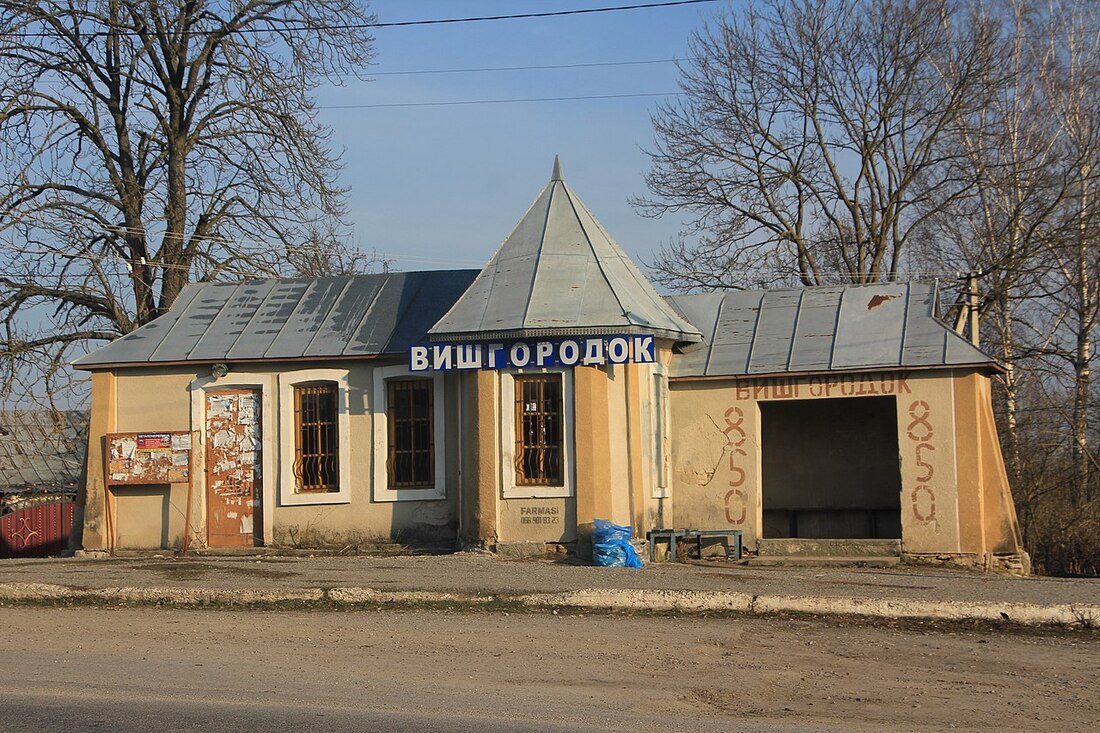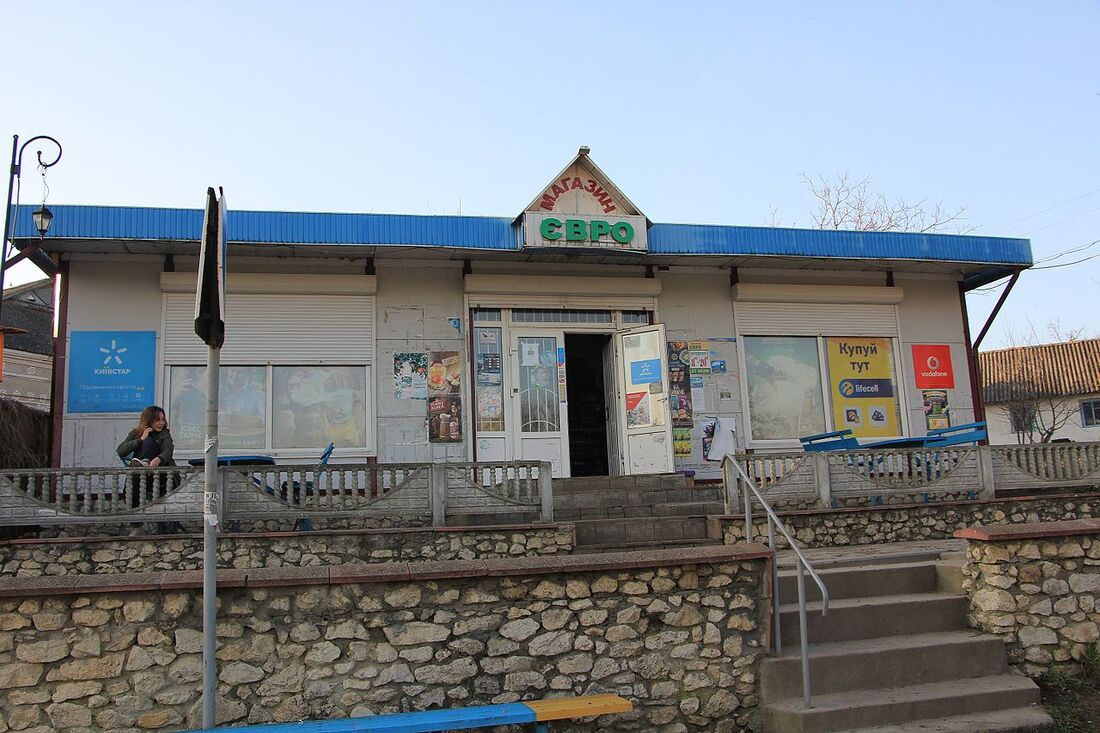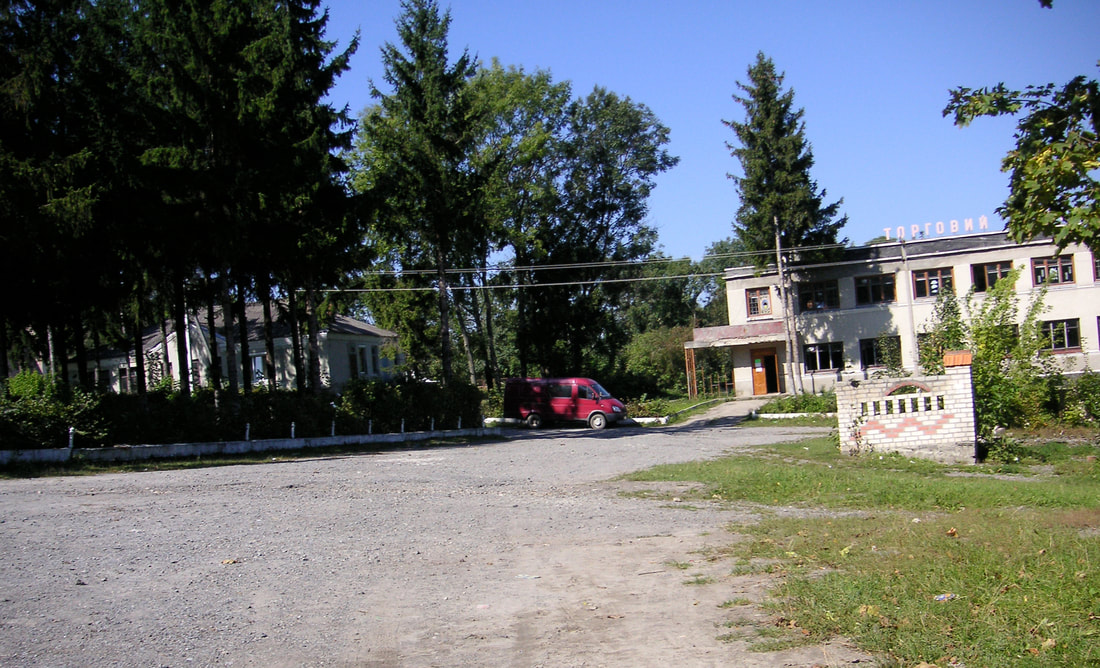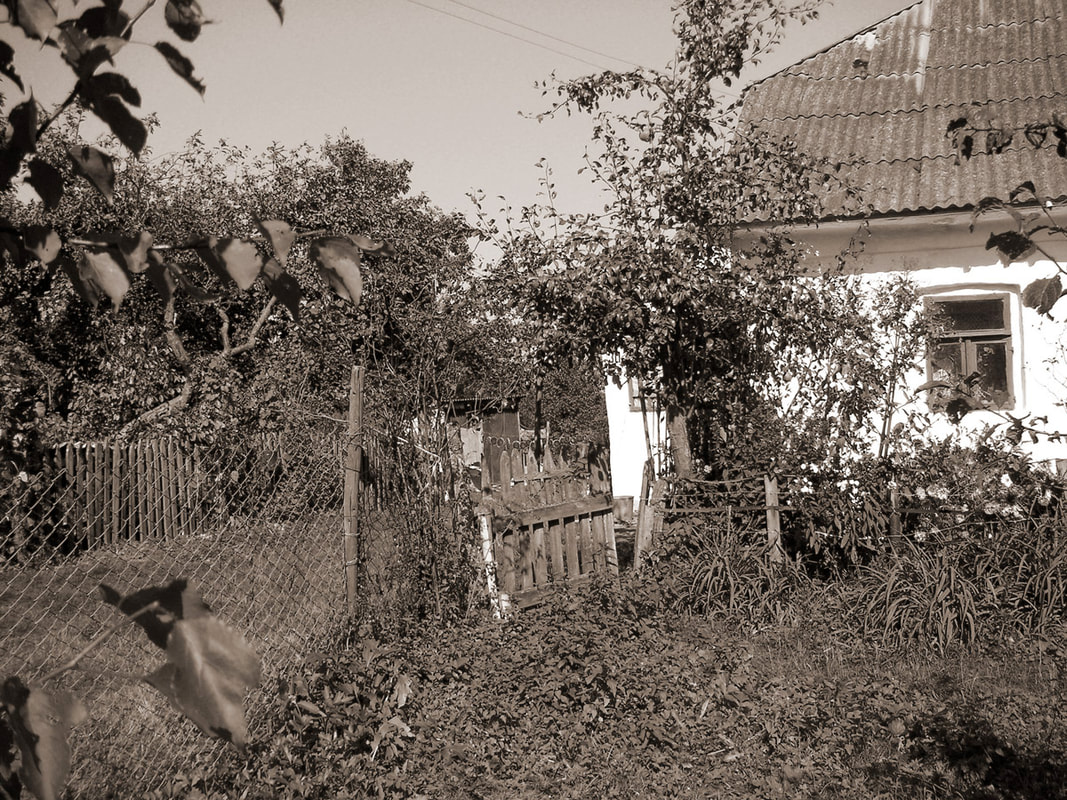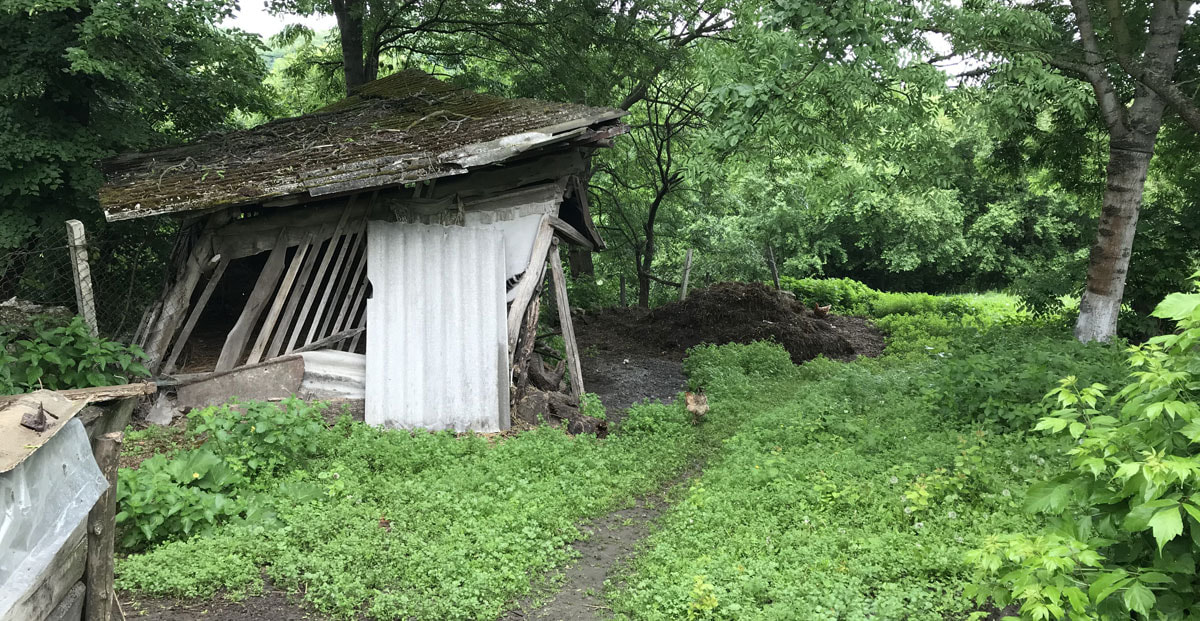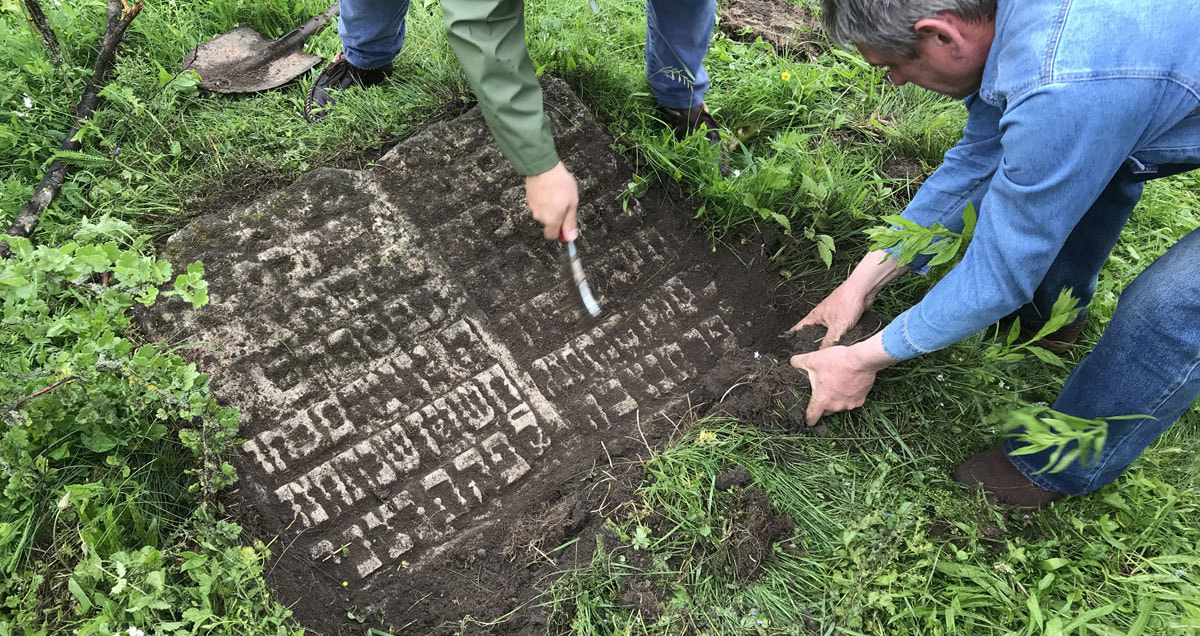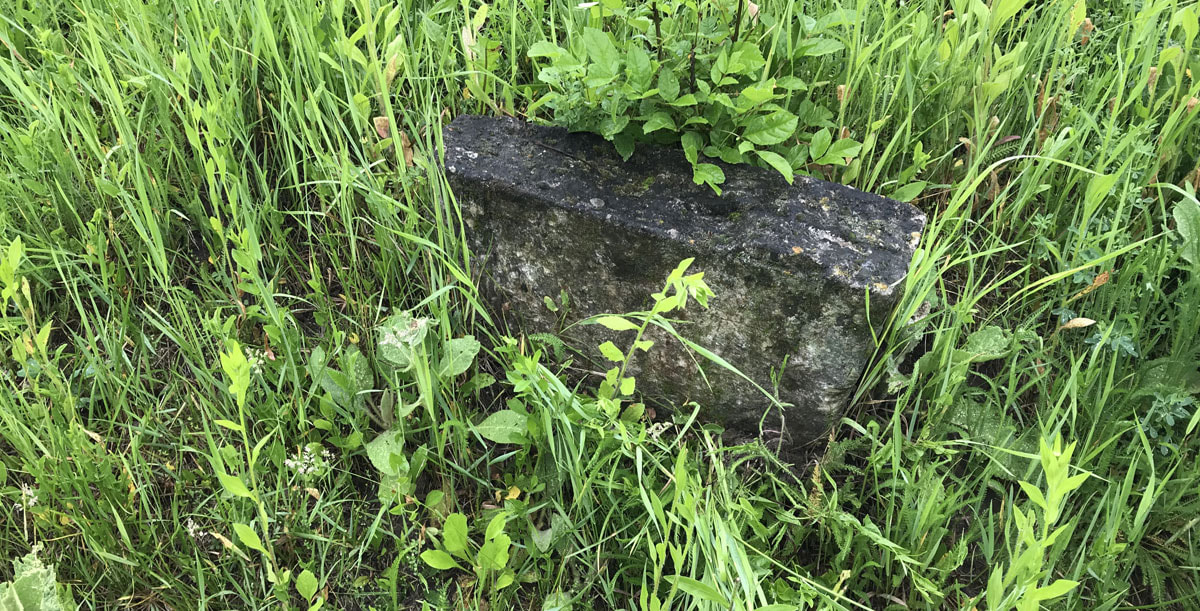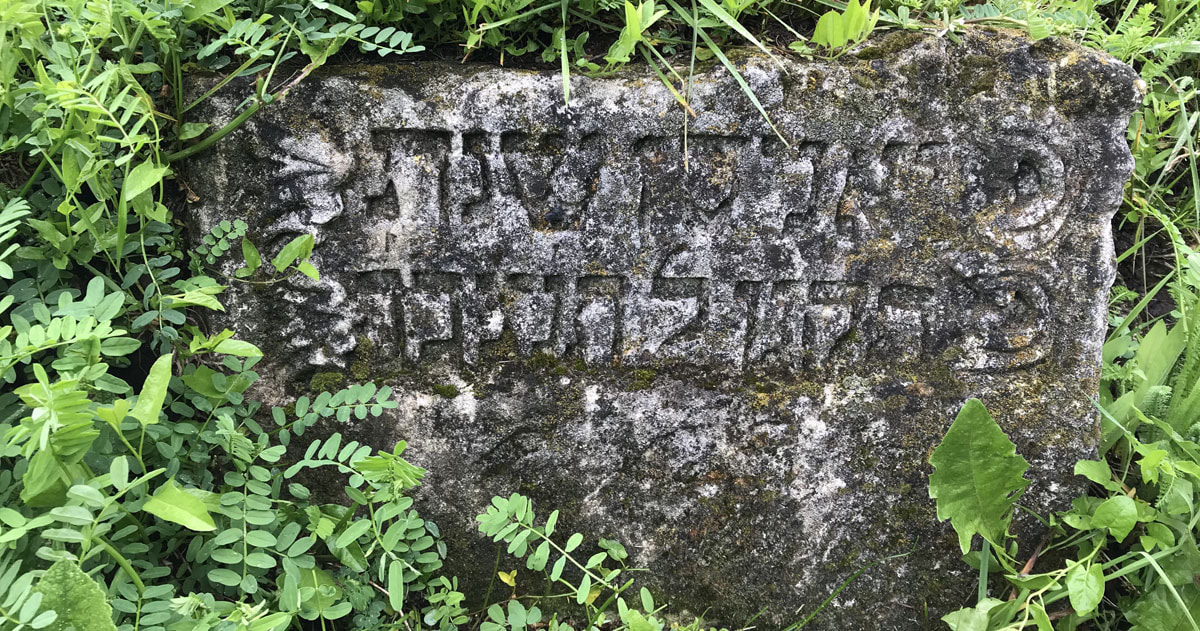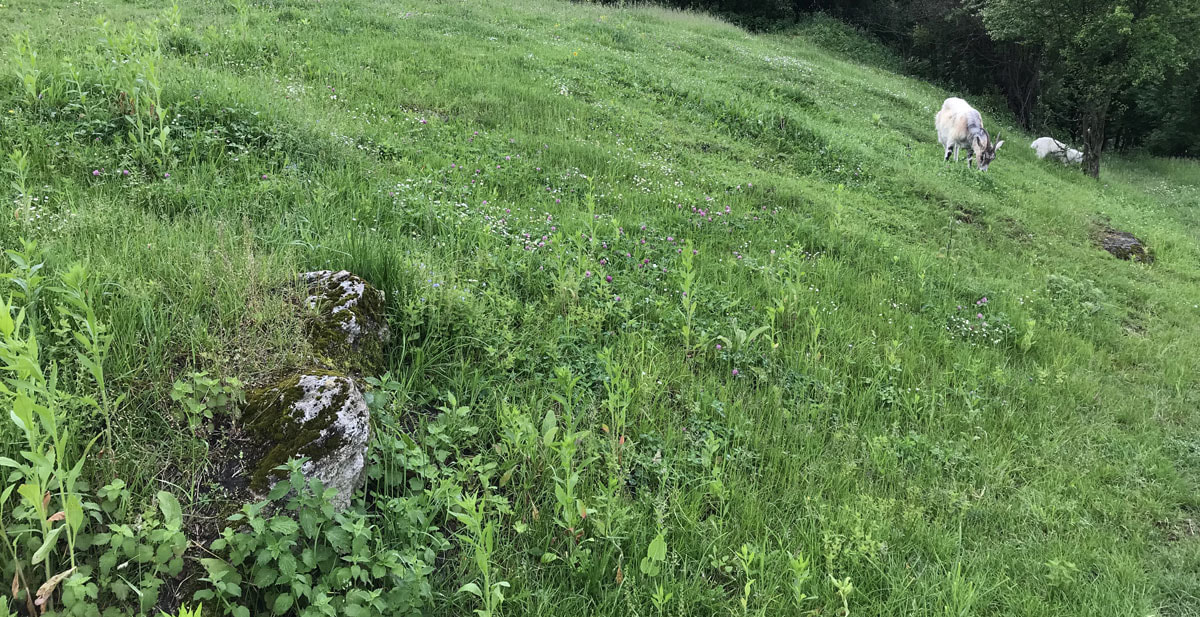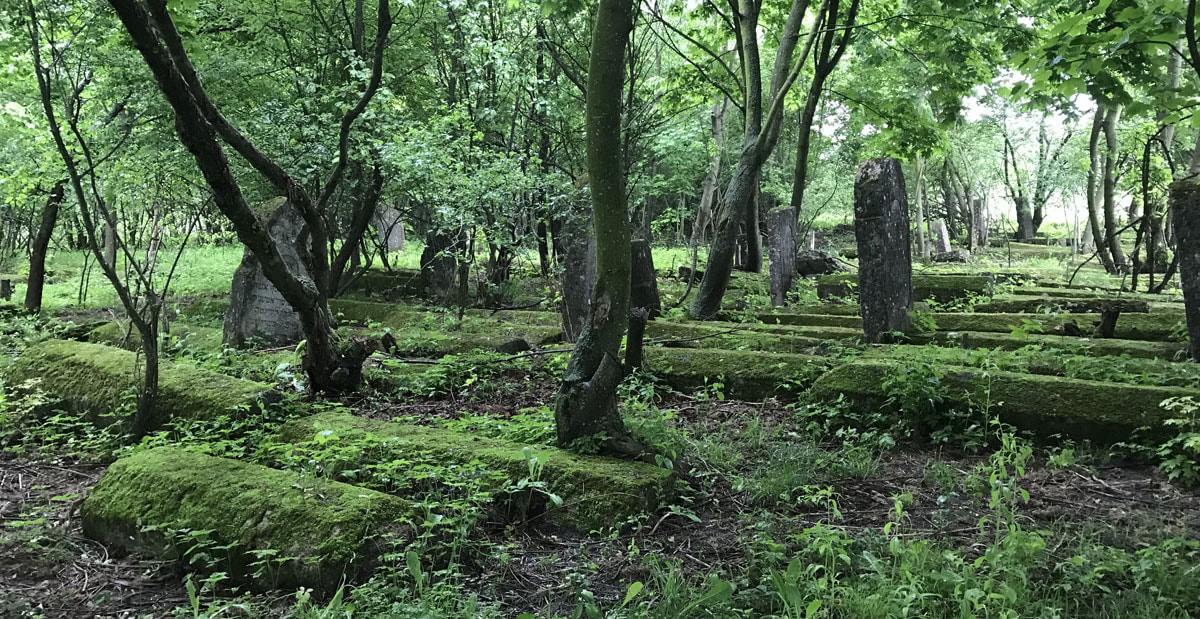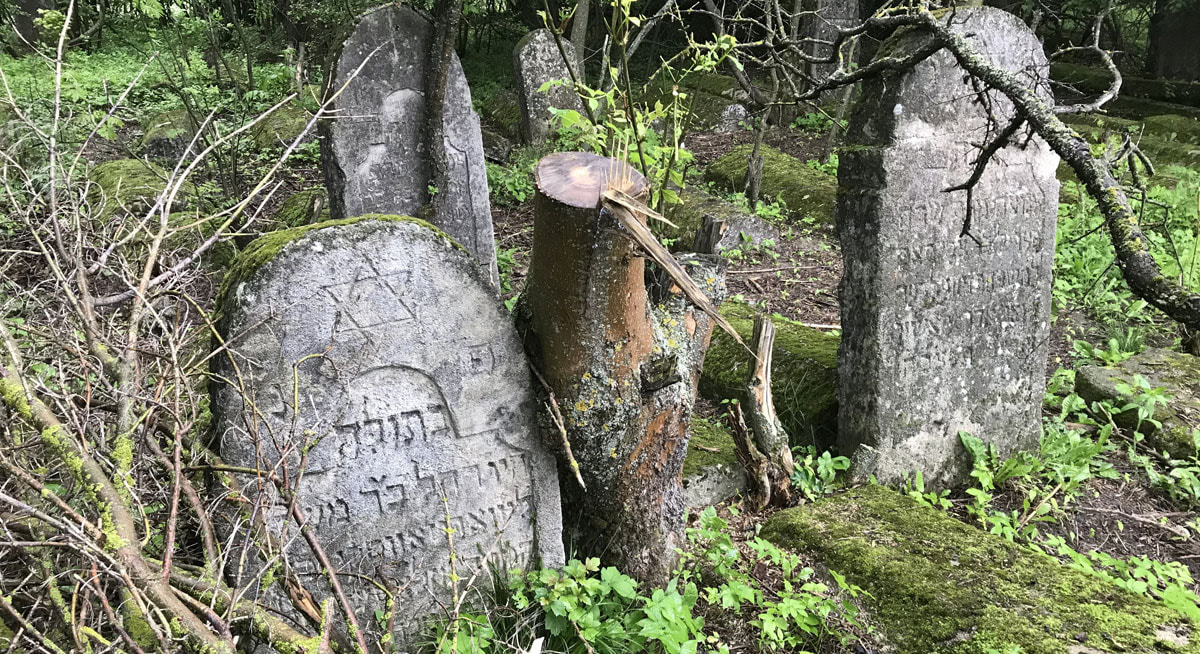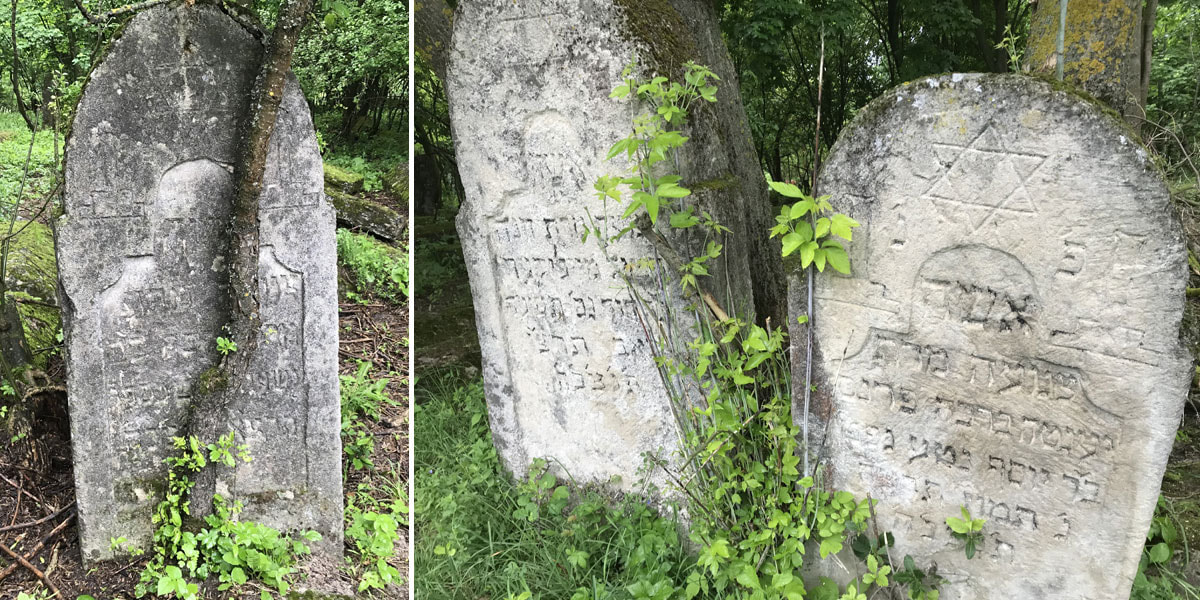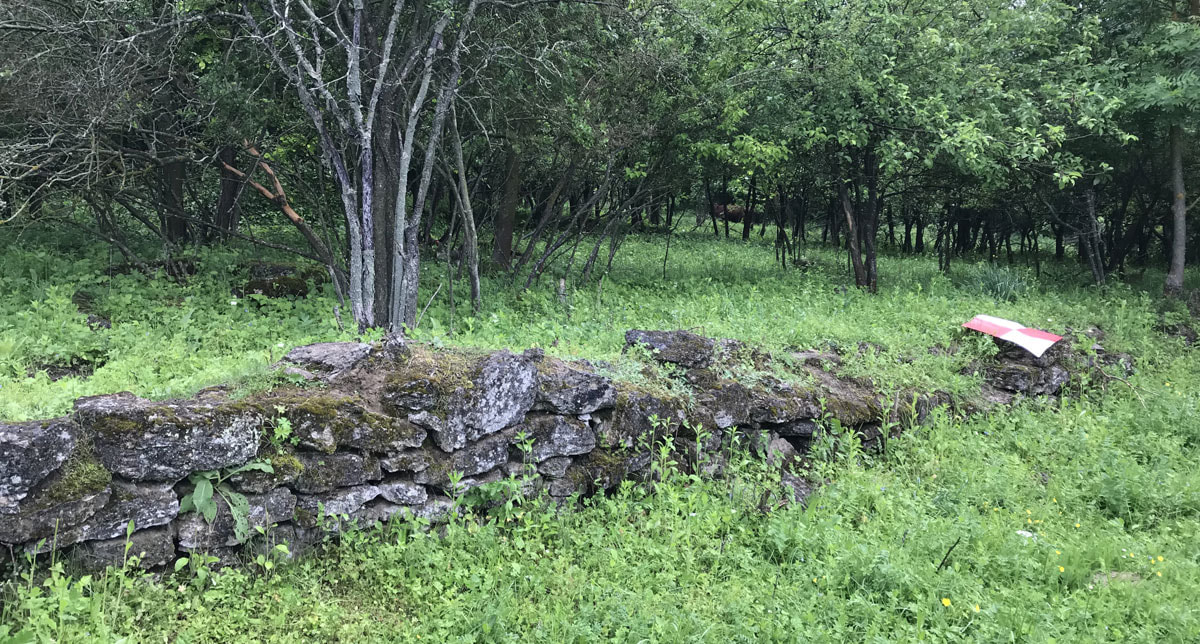CHAPTER 3 SAGALOV
Sagalov family since 1620
Sagalov family since 1620
Content
INTRODUCTION
OUR ANCESTORS UP TO THE 18TH CENTURY
SAGALOV FAMILY IN UKRAINE
DESCENDANTS OF ITSKO-AYZIK SEGAL
KHAIM BRANCH (SAGALOV TREE, DESCENDANTS OF ITSKO-AYZIK)
AYZIK SUB-BRANCH (SAGALOV TREE, DESCENDANTS OF ITSKO-AYZIK, KHAIM BRANCH)
ABRAM SUB-BRANCH (SAGALOV TREE, DESCENDANTS OF ITSKO-AYZIK, KHAIM BRANCH)
SEGALS FROM KATERINOVKA
MEER SUB-SUB-BRANCH (SAGALOV TREE, DESCENDANTS OF ITSKO-AYZIK, KHAIM BRANCH)
OVSHIA SUB-SUB-BRANCH (SAGALOV TREE, DESCENDANTS OF ITSKO-AYZIK, KHAIM BRANCH)
SEGALS FROM ANNOPOL
SHMUL SUB-SUB-BRANCH (SAGALOV TREE, DESCENDANTS OF ITSKO-AYZIK, KHAIM BRANCH)
SEGALS FROM RADIVILOV
SEGALS FROM SHUMSK
MORDKO SUB-SUB-BRANCH (SAGALOV TREE, DESCENDANTS OF ITSKO-AYZIK, KHAIM BRANCH)
SEGALS FROM KREMENETS
SEGALS FROM VYSHNIVETS
SEGALS FROM YAMPOL
SEGALS FROM POCHAEV
SEGALS FROM VISHGORODOK
MOSHKO SUB-BRANCH (SAGALOV TREE, DESCENDANTS OF ITSKO-AYZIK, KHAIM BRANCH)
SHLOMA SUB-SUB-BRANCH (SAGALOV TREE, DESCENDANTS OF ITSKO-AYZIK, KHAIM BRANCH, MOSHKO SUB-BRANCH)
LEIB SUB-SUB-BRANCH (SAGALOV TREE, DESCENDANTS OF ITSKO-AYZIK, KHAIM BRANCH, MOSHKO SUB-BRANCH)
KOS SUB-SUB-BRANCH (SAGALOV TREE, DESCENDANTS OF ITSKO-AYZIK, KHAIM BRANCH, MOSHKO SUB-BRANCH)
BERKO SUB-SUB-BRANCH (SAGALOV TREE, DESCENDANTS OF ITSKO-AYZIK, KHAIM BRANCH, MOSHKO SUB-BRANCH)
YOS SUB-SUB-BRANCH (SAGALOV TREE, DESCENDANTS OF ITSKO-AYZIK, KHAIM BRANCH, MOSHKO SUB-BRANCH)
SHIMON SUB-SUB-BRANCH (SAGALOV TREE, DESCENDANTS OF ITSKO-AYZIK, KHAIM BRANCH, MOSHKO SUB-BRANCH)
DESCENDANTS OF MOSHKO
OVSEY BRANCH (SAGALOV TREE, DESCENDANTS OF MOSHKO)
GERSHKO BRANCH (SAGALOV TREE, DESCENDANTS OF MOSHKO)
SUB-BRANCHES MOSHKO, LEIBA, ITSKO, BASIA, YANKEL, AVRUMA (SAGALOV TREE, DESCENDANTS OF MOSHKO, GERSHKO BRANCH)
SOKHARA SUB-BRANCH (SAGALOV TREE, DESCENDANTS OF MOSHKO, GERSHKO BRANCH)
DUVID SUB-BRANCH (SAGALOV TREE, DESCENDANTS OF MOSHKO, GERSHKO BRANCH)
DESCENDANTS OF GERSHKO
USHER BRANCH (SAGALOV TREE, DESCENDANTS OF GERSHKO)
VOLKO BRANCH (SAGALOV TREE, DESCENDANTS OF GERSHKO)
GERSHKO SUB-BRANCH (SAGALOV TREE, DESCENDANTS OF GERSHKO, VOLKO BRANCH)
SHENDER SUB-BRANCH (SAGALOV TREE, DESCENDANTS OF GERSHKO, VOLKO BRANCH)
MIKHAIL SUB-BRANCH (SAGALOV TREE, DESCENDANTS OF GERSHKO, VOLKO BRANCH)
SHLOMO SUB-BRANCH (SAGALOV TREE, DESCENDANTS OF GERSHKO, VOLKO BRANCH)
OUR ANCESTORS FROM FASTOV
ABRAM BRANCH (SAGALOV TREE, DESCENDANTS OF GERSHKO)
LEIB SUB-BRANCH (SAGALOV TREE, DESCENDANTS OF GERSHKO, ABRAM BRANCH)
CHASKEL LEYBOVICH FAMILY (SAGALOV TREE, DESCENDANTS OF GERSHKO, ABRAMA BRANCH, SUB-BRANCH LEIB)
DAVID-MORDUKH YOSELEVICH FAMILY (SAGALOV TREE, DESCENDANTS OF GERSHKO, ABRAM BRANCH, SUB-BRANCH LEIB)
YOS SUB BRANCH (SAGALOV TREE, DESCENDANTS OF GERSHKO, ABRAM BRANCH)
MOSHKO SUB BRANCH (SAGALOV FAMILY TREE, DESCENDANTS OF GERSHKO, ABRAM BRANCH)
MEER SUB BRANCH (SAGALOV TREE, DESCENDANTS OF GERSHKO, ABRAM BRANCH)
DUVID SUB BRANCH (SAGALOV TREE, DESCENDANTS OF GERSHKO, ABRAM BRANCH)
YANKEL SUB BRANCH (SAGALOV TREE, DESCENDANTS OF GERSHKO, ABRAM BRANCH)
RADOMYSL
RADOMYSL - BUSINESS PEOPLE IN 1895, 1899, 1913.
OTHER SAGALOV NEAR RADOMYSL
OUR ANCESTORS FROM THE CITY OF RADOMYSL
OUR ANCESTORS FROM THE CITY OF MALIN
THE ORIGIN OF JEWISH NAMES IN OUR FAMILY
SCARY TIMES FOR OUR RADOMYSL ANCESTORS
INTRODUCTION
OUR ANCESTORS UP TO THE 18TH CENTURY
SAGALOV FAMILY IN UKRAINE
DESCENDANTS OF ITSKO-AYZIK SEGAL
KHAIM BRANCH (SAGALOV TREE, DESCENDANTS OF ITSKO-AYZIK)
AYZIK SUB-BRANCH (SAGALOV TREE, DESCENDANTS OF ITSKO-AYZIK, KHAIM BRANCH)
ABRAM SUB-BRANCH (SAGALOV TREE, DESCENDANTS OF ITSKO-AYZIK, KHAIM BRANCH)
SEGALS FROM KATERINOVKA
MEER SUB-SUB-BRANCH (SAGALOV TREE, DESCENDANTS OF ITSKO-AYZIK, KHAIM BRANCH)
OVSHIA SUB-SUB-BRANCH (SAGALOV TREE, DESCENDANTS OF ITSKO-AYZIK, KHAIM BRANCH)
SEGALS FROM ANNOPOL
SHMUL SUB-SUB-BRANCH (SAGALOV TREE, DESCENDANTS OF ITSKO-AYZIK, KHAIM BRANCH)
SEGALS FROM RADIVILOV
SEGALS FROM SHUMSK
MORDKO SUB-SUB-BRANCH (SAGALOV TREE, DESCENDANTS OF ITSKO-AYZIK, KHAIM BRANCH)
SEGALS FROM KREMENETS
SEGALS FROM VYSHNIVETS
SEGALS FROM YAMPOL
SEGALS FROM POCHAEV
SEGALS FROM VISHGORODOK
MOSHKO SUB-BRANCH (SAGALOV TREE, DESCENDANTS OF ITSKO-AYZIK, KHAIM BRANCH)
SHLOMA SUB-SUB-BRANCH (SAGALOV TREE, DESCENDANTS OF ITSKO-AYZIK, KHAIM BRANCH, MOSHKO SUB-BRANCH)
LEIB SUB-SUB-BRANCH (SAGALOV TREE, DESCENDANTS OF ITSKO-AYZIK, KHAIM BRANCH, MOSHKO SUB-BRANCH)
KOS SUB-SUB-BRANCH (SAGALOV TREE, DESCENDANTS OF ITSKO-AYZIK, KHAIM BRANCH, MOSHKO SUB-BRANCH)
BERKO SUB-SUB-BRANCH (SAGALOV TREE, DESCENDANTS OF ITSKO-AYZIK, KHAIM BRANCH, MOSHKO SUB-BRANCH)
YOS SUB-SUB-BRANCH (SAGALOV TREE, DESCENDANTS OF ITSKO-AYZIK, KHAIM BRANCH, MOSHKO SUB-BRANCH)
SHIMON SUB-SUB-BRANCH (SAGALOV TREE, DESCENDANTS OF ITSKO-AYZIK, KHAIM BRANCH, MOSHKO SUB-BRANCH)
DESCENDANTS OF MOSHKO
OVSEY BRANCH (SAGALOV TREE, DESCENDANTS OF MOSHKO)
GERSHKO BRANCH (SAGALOV TREE, DESCENDANTS OF MOSHKO)
SUB-BRANCHES MOSHKO, LEIBA, ITSKO, BASIA, YANKEL, AVRUMA (SAGALOV TREE, DESCENDANTS OF MOSHKO, GERSHKO BRANCH)
SOKHARA SUB-BRANCH (SAGALOV TREE, DESCENDANTS OF MOSHKO, GERSHKO BRANCH)
DUVID SUB-BRANCH (SAGALOV TREE, DESCENDANTS OF MOSHKO, GERSHKO BRANCH)
DESCENDANTS OF GERSHKO
USHER BRANCH (SAGALOV TREE, DESCENDANTS OF GERSHKO)
VOLKO BRANCH (SAGALOV TREE, DESCENDANTS OF GERSHKO)
GERSHKO SUB-BRANCH (SAGALOV TREE, DESCENDANTS OF GERSHKO, VOLKO BRANCH)
SHENDER SUB-BRANCH (SAGALOV TREE, DESCENDANTS OF GERSHKO, VOLKO BRANCH)
MIKHAIL SUB-BRANCH (SAGALOV TREE, DESCENDANTS OF GERSHKO, VOLKO BRANCH)
SHLOMO SUB-BRANCH (SAGALOV TREE, DESCENDANTS OF GERSHKO, VOLKO BRANCH)
OUR ANCESTORS FROM FASTOV
ABRAM BRANCH (SAGALOV TREE, DESCENDANTS OF GERSHKO)
LEIB SUB-BRANCH (SAGALOV TREE, DESCENDANTS OF GERSHKO, ABRAM BRANCH)
CHASKEL LEYBOVICH FAMILY (SAGALOV TREE, DESCENDANTS OF GERSHKO, ABRAMA BRANCH, SUB-BRANCH LEIB)
DAVID-MORDUKH YOSELEVICH FAMILY (SAGALOV TREE, DESCENDANTS OF GERSHKO, ABRAM BRANCH, SUB-BRANCH LEIB)
YOS SUB BRANCH (SAGALOV TREE, DESCENDANTS OF GERSHKO, ABRAM BRANCH)
MOSHKO SUB BRANCH (SAGALOV FAMILY TREE, DESCENDANTS OF GERSHKO, ABRAM BRANCH)
MEER SUB BRANCH (SAGALOV TREE, DESCENDANTS OF GERSHKO, ABRAM BRANCH)
DUVID SUB BRANCH (SAGALOV TREE, DESCENDANTS OF GERSHKO, ABRAM BRANCH)
YANKEL SUB BRANCH (SAGALOV TREE, DESCENDANTS OF GERSHKO, ABRAM BRANCH)
RADOMYSL
RADOMYSL - BUSINESS PEOPLE IN 1895, 1899, 1913.
OTHER SAGALOV NEAR RADOMYSL
OUR ANCESTORS FROM THE CITY OF RADOMYSL
OUR ANCESTORS FROM THE CITY OF MALIN
THE ORIGIN OF JEWISH NAMES IN OUR FAMILY
SCARY TIMES FOR OUR RADOMYSL ANCESTORS
Segal Additional Records
Content
FAMOUS SCHOLARS
ABRAM SUB-BRANCH (SAGALOV TREE, DESCENDANTS OF ITSKO-AYZIK, KHAIM BRANCH)
SEGALS FROM KATERINOVKA
MEER SUB-SUB-BRANCH (SAGALOV TREE, DESCENDANTS OF ITSKO-AYZIK, KHAIM BRANCH)
OVSHIA SUB-SUB-BRANCH (SAGALOV TREE, DESCENDANTS OF ITSKO-AYZIK, KHAIM BRANCH)
SEGALS FROM ANNOPOL
SHMUL SUB-SUB-BRANCH (SAGALOV TREE, DESCENDANTS OF ITSKO-AYZIK, KHAIM BRANCH)
SEGALS FROM RADIVILOV
SEGALS FROM SHUMSK
MORDKO SUB-SUB-BRANCH (SAGALOV TREE, DESCENDANTS OF ITSKO-AYZIK, KHAIM BRANCH)
SEGALS FROM KREMENETS
SEGALS FROM VYSHNIVETS
SEGALS FROM YAMPOL
SEGALS FROM POCHAEV
SEGALS FROM VISHGORODOK
FAMOUS SCHOLARS
ABRAM SUB-BRANCH (SAGALOV TREE, DESCENDANTS OF ITSKO-AYZIK, KHAIM BRANCH)
SEGALS FROM KATERINOVKA
MEER SUB-SUB-BRANCH (SAGALOV TREE, DESCENDANTS OF ITSKO-AYZIK, KHAIM BRANCH)
OVSHIA SUB-SUB-BRANCH (SAGALOV TREE, DESCENDANTS OF ITSKO-AYZIK, KHAIM BRANCH)
SEGALS FROM ANNOPOL
SHMUL SUB-SUB-BRANCH (SAGALOV TREE, DESCENDANTS OF ITSKO-AYZIK, KHAIM BRANCH)
SEGALS FROM RADIVILOV
SEGALS FROM SHUMSK
MORDKO SUB-SUB-BRANCH (SAGALOV TREE, DESCENDANTS OF ITSKO-AYZIK, KHAIM BRANCH)
SEGALS FROM KREMENETS
SEGALS FROM VYSHNIVETS
SEGALS FROM YAMPOL
SEGALS FROM POCHAEV
SEGALS FROM VISHGORODOK
Famous Scholars
During our research on the reconstruction of our family trees, we came across stories about the founders of the Talmudic scholarship of the 13th - 16th centuries in Poland. A lot of them were Levites (Halevi/Segal). Below are descriptions of the Segals we came across.
Founders of the Talmudic scholarship of the 13th - 16th centuries in Poland
Rabbi David ben Shmuel Segal Halevi – the Taz
(5346-5427; 1586-1667)
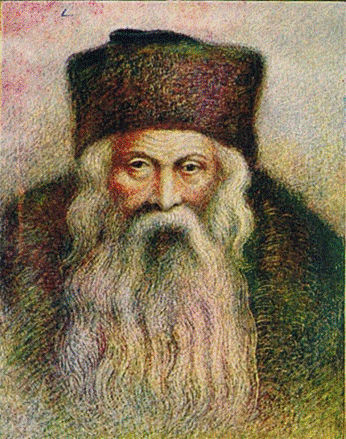 Rabbi David ben Shmuel Segal Halevi – the Taz
(5346-5427; 1586-1667)
Rabbi David ben Shmuel Segal Halevi – the Taz
(5346-5427; 1586-1667)
Rabbi David Halevi, better known as the TaZ, after the initials of his main work Turei Zahav ("Rows of Gold"), was born in Vladomir, in the Province of Volhynia. His family was famed for scholarship. His father Samuel was the son of a famous scholar Rabbi Isaac Betzalels. In addition to his scholarship, David's father was well to do, so that the young prodigy David, who had shown unusual talent for study, was fortunate enough to grow up in an atmosphere of both wealth and learning. His early, happy youth was in marked contrast to his later years, when he suffered great hardships and poverty, as we shall see later.
The young David was fortunate also in another way. He had an older half-brother called Rabbi Isaac Halevi (Charif), a great Talmud scholar who founded Yeshivoth in Vladomir, Chelm and Lvow Poland, and was the author of two books on Hebrew grammar, called "Siach Yitzchak," and "Brith Halevi." This great man dearly loved his younger brother, and became his first teacher and counsellor for many years. The affection between the two brothers never diminished in later years, and they continued to correspond with each other in writing after they had been separated. A part of this correspondence has been preserved. These letters are of great interest not only because they testify to the deep friendship and love that existed between the two brothers, but also because they contain an exchange of scholarly opinions on many problems of Jewish law.
Rabbi Isaac Halevi did not fail to recognize his younger brother's mental abilities, and did his best to encourage his literary work, which became indeed a masterpiece in the world of Halachah (Jewish law).
The young scholar married the daughter of no less famous a man than he himself later became. Rabbi David Halevi's father-in-law was Rabbi Joel Sirkes, known as the BaCH, after the initials of his commentary on the Turint entitled "Bayith Chadash" (New House). As was customary in those days, Rabbi David stayed in his father-in-law's house for several years, during which be applied himself fully to the study of the Talmud and Posekim (codifiers). This period served him as a good preparation for the great contribution which he himself was to make to this immense literature.
ii.
After Rabbi David Halevi left his father-in-law's house to make a home of his own, he accepted the position of rabbi in a small town, a position he changed several times for other small towns. During this time he suffered poverty and want, and was stricken by other misfortunes also. Several of his children died in infancy. (Many years later, towards the end of his life, two more sons of Rabbi David Halevi, who were famous scholars, were killed in a massacre in Lemberg in 1664). However, in due course Rabbi David had made a name for himself, and he was invited to become the Rabbi of the famed city of scholars-Ostrog. This was in the year 1641, and since then his poverty gave way to a life of comfort, as he had earned the recognition and respect due him. Here Rabbi David Halevi founded his own Yeshivah, but he found time also for his literary work. The leaders of this great Jewish community, many of whom were scholars of high standing, did everything in their power to help their great rabbi in his gigantic work. It was due to their influence and active cooperation that Rabbi David Halevi, by nature a shy and modest man, wrote his commentary on the first two volumes of the Shulchan Aruch, the Yoreh Deah and Orach Chaim. "Turei Zahav" was the name given to this important work, or TaZ for short.
Rabbi David Halevi's work soon won world-wide recognition and established his name among the greatest Talmudists of his day. It so happened that in the same year (5406-1646) when Rabbi David Halevi published his work, another scholarly giant, Rabbi Shabbatai Cohen of Vilna, published a similar commentary on the Yoreh Deah, entitled "Sifesei Cohen," (Lips of a Cohen), and soon became equally famous by the name "ShaCh." However, neither detracted from the fame of the other, and far from there arising any jealousy between them, they became the best of friends, although they often had conflicting opinions as to interpreting the decisions of their master, Rabbi Joseph Caro. Several years after their commentaries had first been printed, they cooperated in the publication of an edition of the Yoreh Deah, in which the text of the author Rabbi Joseph Caro was printed in the center of the page, flanked on one side by the "TaZ" and on the other by the "ShaCH." (This edition of Yoreh Deah was called "Ashrei Ravrevi.") This edition was later enlarged by the addition of other commentaries, but the form given to the Yoreh Deah by the two great commentators became the standard type for further reprintings of this book of laws over and over again, to this day.
The TaZ's commentary on the Orach Chaim was acclaimed with equal enthusiasm. It was later published in a special edition of this part of the Shulhban Aruch, similar to the above, except that here his companion-commentator was Rabbi Abraham Avlei Gumbiner, Dayan of the city of Kalish. The commentary by the latter was called "Magen Avraham," while his own was entitled "Magen David." The edition of this volume was therefore called "Maginei Eretz," (Shields of the Land). It was published by the son of Rabbi Abraham Gumbiner. This edition became the most popular book of Jewish law, inasmuch as it deals with the general aspects of Jewish daily life, while the other parts of the Shulchan Aruch deal with special subjects, such as laws of Shechitah and Kashruth, claims and damages, marriage and divorce, etc. The popularity of this volume has not diminished during the years; its influence on the preservation of Jewish traditional life has been immense. It is now as widely used and studied as ever, thus bringing immortality to three men who were responsible for it.
iii.
Rabbi David Halevi's happy period of teaching and writing in Ostrog was rudely interrupted by the cruel massacre by the inhuman Cossacks under the leadership of Chmielnicki, who led his revolt against the Polish nobility and at the same time massacred and pillaged all Jewish communities that fell into his hands. Rabbi David Halevi was fortunate enough to flee from Ostrog before it was captured by the Cossacks. He succeeded in saving also his priceless manuscripts. He was then invited to become rabbi of Lvov (Lemberg), where he continued his work to spread the knowledge of the Torah. A cruel blow was struck at the aged Rabbi David Halevi when three years before his death he lost his two older sons, Rabbi Mordecai and Rabbi Solomon Halevi, who were murdered in a pogrom in Lemberg.
Rabbi David Halevi died at the age of 81.
The lifework of this modest man and the influence of his masterpieces can hardly be appraised properly. His contribution to the tradition of the world of Halachah puts him among the greatest of our illustrious Talmudists. The TaZ is also the author of a commentary on Rashi, entitled Divre David-the Words of David-and of other works. As commentator and teacher, he accomplished great feats for the education of the Jewish people in the spirit and the knowledge of the Torah and its literature. As community leader he founded Yeshivoth, gave counsel and advice, and did his share in the violent fight against the dangerous movement of Shabbathai Tzvi's followers who threatened to undermine the basis of the Jewish law and belief. Both in his literary work and in his activities he created a strong fortress against attacks from within and without. There is no greater praise for Rabbi David Halevi, than the tribute given to him by his beloved brother and teacher, Rabbi Yitzchok Halevi who said of the TaZ: "Rabbi David Halevi's name spread over all countries and G‑d helped his work to worldwide recognition and acceptance... His heart was pure and candid as the heavens; his words were divine in their clarity and lucidity, despite their modest and pious presentation." No greater tribute could have been given to a great man.
The young David was fortunate also in another way. He had an older half-brother called Rabbi Isaac Halevi (Charif), a great Talmud scholar who founded Yeshivoth in Vladomir, Chelm and Lvow Poland, and was the author of two books on Hebrew grammar, called "Siach Yitzchak," and "Brith Halevi." This great man dearly loved his younger brother, and became his first teacher and counsellor for many years. The affection between the two brothers never diminished in later years, and they continued to correspond with each other in writing after they had been separated. A part of this correspondence has been preserved. These letters are of great interest not only because they testify to the deep friendship and love that existed between the two brothers, but also because they contain an exchange of scholarly opinions on many problems of Jewish law.
Rabbi Isaac Halevi did not fail to recognize his younger brother's mental abilities, and did his best to encourage his literary work, which became indeed a masterpiece in the world of Halachah (Jewish law).
The young scholar married the daughter of no less famous a man than he himself later became. Rabbi David Halevi's father-in-law was Rabbi Joel Sirkes, known as the BaCH, after the initials of his commentary on the Turint entitled "Bayith Chadash" (New House). As was customary in those days, Rabbi David stayed in his father-in-law's house for several years, during which be applied himself fully to the study of the Talmud and Posekim (codifiers). This period served him as a good preparation for the great contribution which he himself was to make to this immense literature.
ii.
After Rabbi David Halevi left his father-in-law's house to make a home of his own, he accepted the position of rabbi in a small town, a position he changed several times for other small towns. During this time he suffered poverty and want, and was stricken by other misfortunes also. Several of his children died in infancy. (Many years later, towards the end of his life, two more sons of Rabbi David Halevi, who were famous scholars, were killed in a massacre in Lemberg in 1664). However, in due course Rabbi David had made a name for himself, and he was invited to become the Rabbi of the famed city of scholars-Ostrog. This was in the year 1641, and since then his poverty gave way to a life of comfort, as he had earned the recognition and respect due him. Here Rabbi David Halevi founded his own Yeshivah, but he found time also for his literary work. The leaders of this great Jewish community, many of whom were scholars of high standing, did everything in their power to help their great rabbi in his gigantic work. It was due to their influence and active cooperation that Rabbi David Halevi, by nature a shy and modest man, wrote his commentary on the first two volumes of the Shulchan Aruch, the Yoreh Deah and Orach Chaim. "Turei Zahav" was the name given to this important work, or TaZ for short.
Rabbi David Halevi's work soon won world-wide recognition and established his name among the greatest Talmudists of his day. It so happened that in the same year (5406-1646) when Rabbi David Halevi published his work, another scholarly giant, Rabbi Shabbatai Cohen of Vilna, published a similar commentary on the Yoreh Deah, entitled "Sifesei Cohen," (Lips of a Cohen), and soon became equally famous by the name "ShaCh." However, neither detracted from the fame of the other, and far from there arising any jealousy between them, they became the best of friends, although they often had conflicting opinions as to interpreting the decisions of their master, Rabbi Joseph Caro. Several years after their commentaries had first been printed, they cooperated in the publication of an edition of the Yoreh Deah, in which the text of the author Rabbi Joseph Caro was printed in the center of the page, flanked on one side by the "TaZ" and on the other by the "ShaCH." (This edition of Yoreh Deah was called "Ashrei Ravrevi.") This edition was later enlarged by the addition of other commentaries, but the form given to the Yoreh Deah by the two great commentators became the standard type for further reprintings of this book of laws over and over again, to this day.
The TaZ's commentary on the Orach Chaim was acclaimed with equal enthusiasm. It was later published in a special edition of this part of the Shulhban Aruch, similar to the above, except that here his companion-commentator was Rabbi Abraham Avlei Gumbiner, Dayan of the city of Kalish. The commentary by the latter was called "Magen Avraham," while his own was entitled "Magen David." The edition of this volume was therefore called "Maginei Eretz," (Shields of the Land). It was published by the son of Rabbi Abraham Gumbiner. This edition became the most popular book of Jewish law, inasmuch as it deals with the general aspects of Jewish daily life, while the other parts of the Shulchan Aruch deal with special subjects, such as laws of Shechitah and Kashruth, claims and damages, marriage and divorce, etc. The popularity of this volume has not diminished during the years; its influence on the preservation of Jewish traditional life has been immense. It is now as widely used and studied as ever, thus bringing immortality to three men who were responsible for it.
iii.
Rabbi David Halevi's happy period of teaching and writing in Ostrog was rudely interrupted by the cruel massacre by the inhuman Cossacks under the leadership of Chmielnicki, who led his revolt against the Polish nobility and at the same time massacred and pillaged all Jewish communities that fell into his hands. Rabbi David Halevi was fortunate enough to flee from Ostrog before it was captured by the Cossacks. He succeeded in saving also his priceless manuscripts. He was then invited to become rabbi of Lvov (Lemberg), where he continued his work to spread the knowledge of the Torah. A cruel blow was struck at the aged Rabbi David Halevi when three years before his death he lost his two older sons, Rabbi Mordecai and Rabbi Solomon Halevi, who were murdered in a pogrom in Lemberg.
Rabbi David Halevi died at the age of 81.
The lifework of this modest man and the influence of his masterpieces can hardly be appraised properly. His contribution to the tradition of the world of Halachah puts him among the greatest of our illustrious Talmudists. The TaZ is also the author of a commentary on Rashi, entitled Divre David-the Words of David-and of other works. As commentator and teacher, he accomplished great feats for the education of the Jewish people in the spirit and the knowledge of the Torah and its literature. As community leader he founded Yeshivoth, gave counsel and advice, and did his share in the violent fight against the dangerous movement of Shabbathai Tzvi's followers who threatened to undermine the basis of the Jewish law and belief. Both in his literary work and in his activities he created a strong fortress against attacks from within and without. There is no greater praise for Rabbi David Halevi, than the tribute given to him by his beloved brother and teacher, Rabbi Yitzchok Halevi who said of the TaZ: "Rabbi David Halevi's name spread over all countries and G‑d helped his work to worldwide recognition and acceptance... His heart was pure and candid as the heavens; his words were divine in their clarity and lucidity, despite their modest and pious presentation." No greater tribute could have been given to a great man.
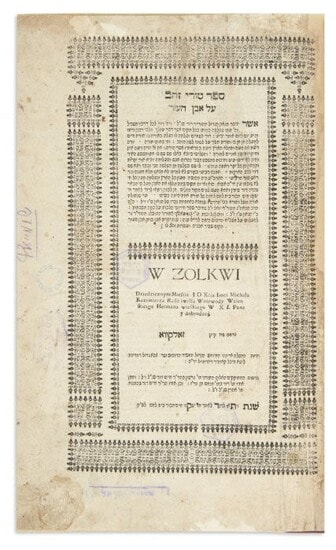
SEGAL, DAVID HALEVI
Turei Zahav [an indispensable commentary to Shulchan Aruch - Even Ha’Ezer].
FIRST EDITION. With approbation by the Noda BeYehudah.
ff. 15, (110) mispaginated. Ex-library, few marginal repairs, browned and stained in places. Modern calf-backed boards. Foloo. Vinograd, Zolkiew 195.
Zolkiew: Gershon ben Chaim David Segal et al 1754
Although Turei Zahav on Orach Chaim is the author’s most celebrated work, he was one of very few to write a thorough commentary on all four sections of the Shulchan Aruch. This portion on Even Ha’Ezer was the last to be brought to the press. David HaLevi Segal (1586-1667), known as the Turei Zahav (also abbreviated to TaZ) after the title of this significant halachic commentary, came to be recognized as one of the great rabbinic authorities of his time.
Turei Zahav [an indispensable commentary to Shulchan Aruch - Even Ha’Ezer].
FIRST EDITION. With approbation by the Noda BeYehudah.
ff. 15, (110) mispaginated. Ex-library, few marginal repairs, browned and stained in places. Modern calf-backed boards. Foloo. Vinograd, Zolkiew 195.
Zolkiew: Gershon ben Chaim David Segal et al 1754
Although Turei Zahav on Orach Chaim is the author’s most celebrated work, he was one of very few to write a thorough commentary on all four sections of the Shulchan Aruch. This portion on Even Ha’Ezer was the last to be brought to the press. David HaLevi Segal (1586-1667), known as the Turei Zahav (also abbreviated to TaZ) after the title of this significant halachic commentary, came to be recognized as one of the great rabbinic authorities of his time.
Rabbi Yechezkel HaLevi (Segal) Landau
(8 October 1713 – 29 April 1793)
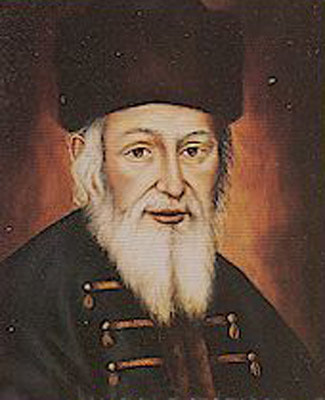 Rabbi Yechezkel HaLevi (Segal) Landau
Rabbi Yechezkel HaLevi (Segal) Landau
Most of my information about Rav Landau comes from the introductions to the second volume of Noda B’Yehuda, by his sons, Rav Shmuel, the editor, and Yaakovka, who encouraged the project and wrote a longer piece. Yechezkel Landau was born in Apta in 1713, to Yehuda, a wealthy, scholarly businessman, and Chaya, the saintly daughter of the chief rabbi of Dubnow. In Rav Yechezkel’s own introduction to the first volume, he thanks Rav Yitzchak Isaac Segal, his teacher from age 11 to 13. During his adolescence, he moved to Brody to study there. By the age of 20 or so, the community of Brody appointed him as one of its main dayanim. Rav Yechezkel stayed in that position for about a decade, after which he was appointed the rabbi of Yampol. After a decade, in 1755, he was chosen as the chief rabbi of one of the most important Jewish communities and cities in Europe, Prague.
In Prague, the Noda B’Yehuda continued his local rabbinic duties. His son praised him for not fleeing Prague before the Siege of Prague (1757) but staying and being of major help. His reputation drew many promising Talmudic students to study with him, the most famous of whom was Rav Avraham Danzig, author of Chayei Adam. He also was a major spokesman on both halachic matters and questions of the time, such as the attitude toward Moses Mendelson and the Haskala movement (while enjoying a broad base of knowledge that included sciences, the Noda B’yehuda was a strong opponent). In one of his most famous rulings, he opposed autopsies except those related to a specific urgent need.
In Prague, the Noda B’Yehuda continued his local rabbinic duties. His son praised him for not fleeing Prague before the Siege of Prague (1757) but staying and being of major help. His reputation drew many promising Talmudic students to study with him, the most famous of whom was Rav Avraham Danzig, author of Chayei Adam. He also was a major spokesman on both halachic matters and questions of the time, such as the attitude toward Moses Mendelson and the Haskala movement (while enjoying a broad base of knowledge that included sciences, the Noda B’yehuda was a strong opponent). In one of his most famous rulings, he opposed autopsies except those related to a specific urgent need.
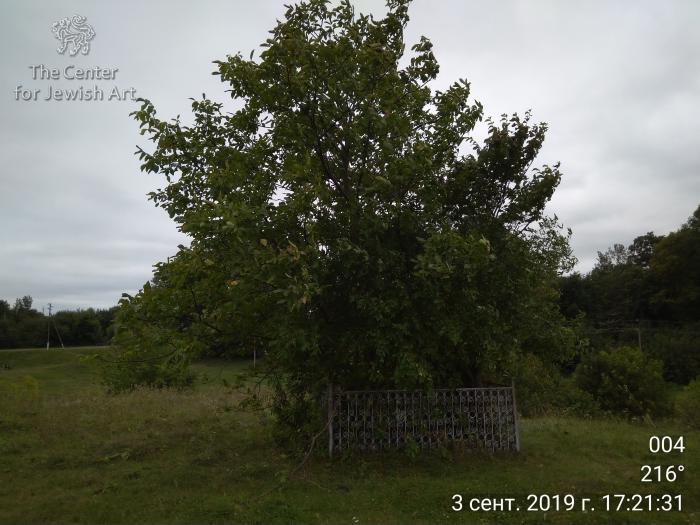 Noda be-Yehudah. Manuscripts and Printed Books
Noda be-Yehudah. Manuscripts and Printed Books
One of the principal sources of Jewish law of his age.
The best known work of the great halkhic authority R' Yechezkel ben Yehuda Landau (8 October 1713 – 29 April 1793), and one of the principal sources of Jewish law of his age. Famous decisions within this collection of responsa include those limiting autopsy to prevent a clear and present danger in known others. This collection was esteemed by rabbis and scholars, both for its logic and for its independence with regard to the rulings of other Acharonim as well as its simultaneous adherence to the writings of the Rishonim.
R' Landau was born in Opatów, Poland, to a family that traced its lineage back to Rashi, and attended yeshiva at Ludmir and Brody. In Brody, he was appointed dayan (rabbinical judge) in 1734, and in 1745 he became rabbi of Yampol. While in Yampol, he attempted to mediate between R' Jacob Emden and R' Jonathan Eybeschütz. His role in this famous controversy is described as "tactful" and brought him to the attention of the community of Prague—where, in 1755, he was appointed rabbi. He also established a Yeshiva there; Avraham Danzig, author of Chayei Adam, is amongst his best known students.
R' Landau was highly esteemed by his own community and many others, and stood high in favor in government circles. In addition to his rabbinical tasks, he was able to intercede with the government on various occasions when anti-Semitic measures had been introduced. Though not opposed to secular knowledge, he objected to "that culture which came from Berlin", in particular Moses Mendelssohn's translation of the Pentateuch.
The book was printed in Sudikov. Sudilkov is a town located in the Ukraine in Kamenets-Podolski region. While it was considered a lesser brother to the great printing center of Slavuta, the Sudilkov press was strong on the reissue of classics and essential works. The town was also known for its production of Talitot (prayer shawls).
Finely designed and printed title page with architectural frame. Foliate columns flank the text; above, a ornate crowned tops a cartouche, enclosed in foliage and flanked by two lions. The same frame is used on B.1381, printed in the same year by the same printer.
The best known work of the great halkhic authority R' Yechezkel ben Yehuda Landau (8 October 1713 – 29 April 1793), and one of the principal sources of Jewish law of his age. Famous decisions within this collection of responsa include those limiting autopsy to prevent a clear and present danger in known others. This collection was esteemed by rabbis and scholars, both for its logic and for its independence with regard to the rulings of other Acharonim as well as its simultaneous adherence to the writings of the Rishonim.
R' Landau was born in Opatów, Poland, to a family that traced its lineage back to Rashi, and attended yeshiva at Ludmir and Brody. In Brody, he was appointed dayan (rabbinical judge) in 1734, and in 1745 he became rabbi of Yampol. While in Yampol, he attempted to mediate between R' Jacob Emden and R' Jonathan Eybeschütz. His role in this famous controversy is described as "tactful" and brought him to the attention of the community of Prague—where, in 1755, he was appointed rabbi. He also established a Yeshiva there; Avraham Danzig, author of Chayei Adam, is amongst his best known students.
R' Landau was highly esteemed by his own community and many others, and stood high in favor in government circles. In addition to his rabbinical tasks, he was able to intercede with the government on various occasions when anti-Semitic measures had been introduced. Though not opposed to secular knowledge, he objected to "that culture which came from Berlin", in particular Moses Mendelssohn's translation of the Pentateuch.
The book was printed in Sudikov. Sudilkov is a town located in the Ukraine in Kamenets-Podolski region. While it was considered a lesser brother to the great printing center of Slavuta, the Sudilkov press was strong on the reissue of classics and essential works. The town was also known for its production of Talitot (prayer shawls).
Finely designed and printed title page with architectural frame. Foliate columns flank the text; above, a ornate crowned tops a cartouche, enclosed in foliage and flanked by two lions. The same frame is used on B.1381, printed in the same year by the same printer.
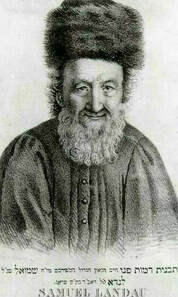 Rav Shmuel Landau
Rav Shmuel Landau
The Noda B’yehuda’s writings are a valuable part of any serious Jewish library. It is interesting that he picked titles to commemorate his parents. His work on several Talmudic tractates is named the Tzlach, abbreviation of "A Memorial for the Spirit of Chaya." His monumental work of responsa, the Noda B’Yehuda (Known in Yehuda), is named for his father. He explained that the reason that he, Yechezkel, is known, is because he is a son of the illustrious Yehuda. He published the first volume in his lifetime. According to his son, it was a most aesthetic (in addition to brilliant) volume which he paid for with his own money and that he made no effort to profit from sales. It took 17 years after his death in 1793 for the second volume to be published. As both brothers wrote, Rav Shmuel was so busy as his father’s successor in Prague that he did not get around to editing the manuscripts his father gave him. Yaakovka and others from Brody told him firmly that the Torah world would not accept further delay. This volume includes notes and some responsa of Rav Shmuel.
Segal family since 1620
Abram Sub-Branch (Sagalov tree, descendants of Itsko-Ayzik, Khaim Branch )
Segals from Katerinovka /(Katerburg)
KATERYNOVKA (Ukrainian: Катеринівка, Polish: Katrynburg) until 1944 Katerburg (Russian: Катербург; Yiddish: קאַטערבורג, romanized: Katerburg) is a village and a former town in Western Ukraine. Administratively part of Kremenets Raion of the Ternopil Oblast, the village has 391 inhabitants. Katerynivka belongs to Kremenets urban hromada, one of the hromadas of Ukraine.
Initially founded in the Middle Ages as a village, the settlement was first mentioned in 1421. Throughout the ages the village bore the name of Wierzbica. The village featured a Catholic church founded by Count Plater in 1692 or 1700. In the 18th century the village's owner, Józef Plater, the castellan of Troki, turned it into a small town and renamed to Katrynburg in honour of his wife, Katarzyna Plater (née Sosnowska or Sobieska, sources differ). The name was soon shortened to Katerburg and remained in use until 1944. With time the town passed into the hands of the Ożarowski family. Between 1856 and 1877 (Mieczysław Orłowicz cites 1854-1897) Countess Cecylia Ożarowska erected a new church to replace the old one. After the January Uprising the town was confiscated from the Plater family and donated to Russian general Nikolay Bobrikov. In 1890 the church was also confiscated by the tsarist authorities and donated to a newly established Orthodox community, while the Catholic parish dissolved.
In the 19th century the town was primarily Jewish. According to 1870 data, the town had 106 houses and 815 inhabitants, 92 percent of them of Jewish ancestry. Soon after Poland regained its independence in 1918 the town of Katerburg was attached to powiat of Krzemieniec and since 1 October 1933 became a seat of a separate municipality. In 1920 the town's church was reclaimed by the Catholics. By 1929 the town had roughly 1000 inhabitants.
Following the outbreak of World War II the town was captured by the Red Army in accordance with the Molotov-Ribbentrop Pact. In January 1940 the village of Katerburg became an administrative center of raion and in October of that year its seat was moved to a nearby town of Dederkały (modern Velyki Dederkaly). After the end of Nazi-Soviet cooperation and the outbreak of hostilities between Germany and the Soviet Union, the town was soon captured by the Wehrmacht. Roughly 400 of the town's inhabitants were rushed into a small ghetto created in the town by the Germans. The ghetto was liquidated on 10 August 1942: officers of the Sicherheitsdienst aided by military police and Ukrainian militias mass murdered 312 Polish citizens, most of them of Jewish ancestry. Several dozen people had died before that date of hunger and diseases. Another mass murder took place on 7–8 May 1943, when Ukrainian nationalists murdered 28 Poles, 10 Jews and 2 mixed Polish-Ukrainian families as part of their widespread massacres of Poles in Volhynia and Eastern Galicia. The remaining Poles fled and the town remained almost completely deserted for the remainder of World War II.
Initially founded in the Middle Ages as a village, the settlement was first mentioned in 1421. Throughout the ages the village bore the name of Wierzbica. The village featured a Catholic church founded by Count Plater in 1692 or 1700. In the 18th century the village's owner, Józef Plater, the castellan of Troki, turned it into a small town and renamed to Katrynburg in honour of his wife, Katarzyna Plater (née Sosnowska or Sobieska, sources differ). The name was soon shortened to Katerburg and remained in use until 1944. With time the town passed into the hands of the Ożarowski family. Between 1856 and 1877 (Mieczysław Orłowicz cites 1854-1897) Countess Cecylia Ożarowska erected a new church to replace the old one. After the January Uprising the town was confiscated from the Plater family and donated to Russian general Nikolay Bobrikov. In 1890 the church was also confiscated by the tsarist authorities and donated to a newly established Orthodox community, while the Catholic parish dissolved.
In the 19th century the town was primarily Jewish. According to 1870 data, the town had 106 houses and 815 inhabitants, 92 percent of them of Jewish ancestry. Soon after Poland regained its independence in 1918 the town of Katerburg was attached to powiat of Krzemieniec and since 1 October 1933 became a seat of a separate municipality. In 1920 the town's church was reclaimed by the Catholics. By 1929 the town had roughly 1000 inhabitants.
Following the outbreak of World War II the town was captured by the Red Army in accordance with the Molotov-Ribbentrop Pact. In January 1940 the village of Katerburg became an administrative center of raion and in October of that year its seat was moved to a nearby town of Dederkały (modern Velyki Dederkaly). After the end of Nazi-Soviet cooperation and the outbreak of hostilities between Germany and the Soviet Union, the town was soon captured by the Wehrmacht. Roughly 400 of the town's inhabitants were rushed into a small ghetto created in the town by the Germans. The ghetto was liquidated on 10 August 1942: officers of the Sicherheitsdienst aided by military police and Ukrainian militias mass murdered 312 Polish citizens, most of them of Jewish ancestry. Several dozen people had died before that date of hunger and diseases. Another mass murder took place on 7–8 May 1943, when Ukrainian nationalists murdered 28 Poles, 10 Jews and 2 mixed Polish-Ukrainian families as part of their widespread massacres of Poles in Volhynia and Eastern Galicia. The remaining Poles fled and the town remained almost completely deserted for the remainder of World War II.
Map of Katerburg, 1913.
Katerburg business directory. 1913.
Jewish Cemetery
The earliest known Jewish community was in 17-18th century. 1939 Jewish population (census) was 384. The Jewish Community was effected by 1680 Khmelnitsky pogroms and 1919-1920 Civil War. The Jewish cemetery was established in 17-18th century with last known Hasidic (Karlin Stolin) Jewish burial in 1941. No other towns or villages used this cemetery. The isolated rural (agricultural) flat land has no sign or marker. Reached by turning directly off a public road, access is open to all. No wall, fence, or gate surrounds the site. There are 21 to 100 stones, most in original location with less than 25% of surviving common tombstones toppled or broken, dated from 17th to 20th century. No stones were removed. The site contains marked mass graves. The municipality owns the property used for Jewish cemetery. Adjacent properties are agricultural. The cemetery boundaries are unchanged since 1939. Rarely, local residents visit. The cemetery was not vandalized in the last ten years. There is no maintenance. Within the limits of the cemetery there are no structures. Vegetation overgrowth is a seasonal problem, preventing access and disturbing graves and stones. Serious threat: vegetation. Moderate threat: pollution. Slight threat: uncontrolled access, weather erosion, vandalism and proposed nearby development.
Region Ternopyl, District Kremenets', Settlement Katerynivka,
Site address
To reach the cemetery, turn to the dirt road opposite the last house on the western outskirt of the village. Proceed for 500 metres. The cemetery is located in the woods on the left of the road.
GPS coordinates 50.00397, 25.87362, Perimeter length 446 metres
Type and height of existing fence -The cemetery has a fence installed in November 2019 by ESJF.
Number of existing gravestones
About 100
Date of oldest tombstone
1876 (oldest found by ESJF expedition)
Date of newest tombstone
1920 (latest found by ESJF expedition)
Land ownership, Property of local community, Preserved construction on site
Region Ternopyl, District Kremenets', Settlement Katerynivka,
Site address
To reach the cemetery, turn to the dirt road opposite the last house on the western outskirt of the village. Proceed for 500 metres. The cemetery is located in the woods on the left of the road.
GPS coordinates 50.00397, 25.87362, Perimeter length 446 metres
Type and height of existing fence -The cemetery has a fence installed in November 2019 by ESJF.
Number of existing gravestones
About 100
Date of oldest tombstone
1876 (oldest found by ESJF expedition)
Date of newest tombstone
1920 (latest found by ESJF expedition)
Land ownership, Property of local community, Preserved construction on site
Old Jewish cemetery.
Matsevs.
Meer Sub-Sub-Branch (Sagalov tree, descendants of Itsko-Ayzik, Khaim Branch)
Family of Leizer Meerovich Segal (1745)( Sagalov tree, descendants of Itsko-Ayzik, Khaim Branch)
Family of Leizer Meerovich Segal (1745)( Sagalov tree, descendants of Itsko-Ayzik, Khaim Branch)
State Archive of the Ternopil region.
Revision tales about the Jews of the Volyn province for 1811.
In this document of 1811, among the male Jews appears the family's of our relatives:
- Leizer Meerovich Segal, age 56 in the Revision tales 1806, born in 1750, who lived in the shtetl of Katerinovka /(Katerburg),
- Kisel Leizerovich Segal, age 37, born in 1774, who lived in the shtetl of Katerinovka /(Katerburg),
- Mordko Leizerovich Segal, age 35, born in 1776, who lived in the shtetl of Katerinovka /(Katerburg),
Mordko Leizerovich son - Shloma, age 10, born in 1801, who lived in the shtetl of Katerinovka /(Katerburg),
- Moshko Leibovich Segal, age 25 in the Revision tales 1806, born in 1781, who lived in the shtetl of Katerinovka /(Katerburg).
Revision tales about the Jews of the Volyn province for 1811.
In this document of 1811, among the male Jews appears the family's of our relatives:
- Leizer Meerovich Segal, age 56 in the Revision tales 1806, born in 1750, who lived in the shtetl of Katerinovka /(Katerburg),
- Kisel Leizerovich Segal, age 37, born in 1774, who lived in the shtetl of Katerinovka /(Katerburg),
- Mordko Leizerovich Segal, age 35, born in 1776, who lived in the shtetl of Katerinovka /(Katerburg),
Mordko Leizerovich son - Shloma, age 10, born in 1801, who lived in the shtetl of Katerinovka /(Katerburg),
- Moshko Leibovich Segal, age 25 in the Revision tales 1806, born in 1781, who lived in the shtetl of Katerinovka /(Katerburg).
State Archive of the Ternopil region.
Revision tales about the Jews of the Volyn province. 1817.
In this document of 1817, among the male Jews appears the family's of our relatives:
- Leizer Meerovich Segal, age 72, born in 1745, who lived in the shtetl of Katerinovka /(Katerburg).
Revision tales about the Jews of the Volyn province. 1817.
In this document of 1817, among the male Jews appears the family's of our relatives:
- Leizer Meerovich Segal, age 72, born in 1745, who lived in the shtetl of Katerinovka /(Katerburg).
Family of Abramko Leizerovich Segal (1769 - 1814)( Sagalov tree, descendants of Itsko-Ayzik, Khaim Branch)
Family of Abramko Leizerovich Segal (1769 - 1814)( Sagalov tree, descendants of Itsko-Ayzik, Khaim Branch)
State Archive of the Ternopil region.
Revision tales about the Jews of the Volyn province for 1811.
In this document of 1811, among the male Jews appears the family's of our relatives:
- Abramko Leizerovich Segal, age 42, born in 1769, who lived in the shtetl of Katerinovka /(Katerburg).
Revision tales about the Jews of the Volyn province for 1811.
In this document of 1811, among the male Jews appears the family's of our relatives:
- Abramko Leizerovich Segal, age 42, born in 1769, who lived in the shtetl of Katerinovka /(Katerburg).
State Archive of the Ternopil region.
Revision tales about the Jews of the Volyn province. 1816
In this document of 1816, among the male Jews appears the family's of our relatives:
- Abramko Leizerovich Segal, age 42 in the Revision tales 1811, born in 1769, died in 1814, who lived in the shtetl of Katerinovka /(Katerburg).
Revision tales about the Jews of the Volyn province. 1816
In this document of 1816, among the male Jews appears the family's of our relatives:
- Abramko Leizerovich Segal, age 42 in the Revision tales 1811, born in 1769, died in 1814, who lived in the shtetl of Katerinovka /(Katerburg).
Family of Khaim-Shloma Abramovich Segal (1791)( Sagalov tree, descendants of Itsko-Ayzik, Khaim Branch)
Family of Khaim-Shloma Abramovich Segal (1791)( Sagalov tree, descendants of Itsko-Ayzik, Khaim Branch)
State Archive of the Ternopil region.
Revision tales about the Jews of the Volyn province. 1816
In this document of 1816, among the male Jews appears the family's of our relatives:
- Khaim-Shloma Abramovich Segal, age 25, born in 1791, who lived in the shtetl of Katerinovka /(Katerburg),
- Khaim-Shloma Abramovich's wife - Shejntsia, age 27, born in 1789,
- Khaim-Shloma Abramovich's daughter - Mindlia, age 2, born in 1814.
Revision tales about the Jews of the Volyn province. 1816
In this document of 1816, among the male Jews appears the family's of our relatives:
- Khaim-Shloma Abramovich Segal, age 25, born in 1791, who lived in the shtetl of Katerinovka /(Katerburg),
- Khaim-Shloma Abramovich's wife - Shejntsia, age 27, born in 1789,
- Khaim-Shloma Abramovich's daughter - Mindlia, age 2, born in 1814.
State Archive of the Ternopil region.
Revision tales about the Jews of the Volyn province. 1817
In this document of 1817, among the male Jews appears the family's of our relatives:
- Shloma Abramovich Segal, age 25, born in 1791, who lived in the shtetl of Katerinovka /(Katerburg),
- Shloma Abramovich's wife - Yudlia, age 22, born in 1795,
- Shloma Abramovich's daughter - Dvoira-Feiga, age 1, born in 1816.
Revision tales about the Jews of the Volyn province. 1817
In this document of 1817, among the male Jews appears the family's of our relatives:
- Shloma Abramovich Segal, age 25, born in 1791, who lived in the shtetl of Katerinovka /(Katerburg),
- Shloma Abramovich's wife - Yudlia, age 22, born in 1795,
- Shloma Abramovich's daughter - Dvoira-Feiga, age 1, born in 1816.
Family of Anshel Abramovich Segal (1786)( Sagalov tree, descendants of Itsko-Ayzik, Khaim Branch)
State Archive of the Ternopil region.
Revision tales about the Jews of the Volyn province. 1816
In this document of 1816, among the male Jews appears the family's of our relatives:
- Gershko Abramovich Segal, age 40, born in 1776, who lived in the shtetl of Annopol,
- Gershko Abramovich's son - Yankel, age 13, born in 1803,
- Gershko Abramovich's son - Mordko, age 4, born in 1812,
- Gershko Abramovich's son-in-law - Avrum Gevshiovich, age 18, born in 1798,
- Anshel Abramovich Segal, age 30, born in 1786, who lived in the shtetl of Annopol,
- Anshel Abramovich's son - Yos, age 3, born in 1813,
- Anshel Abramovich's wife - Shejntsia, age 27, born in 1789,
- Khaim-Shloma Abramovich's daughter - Mindlia, age 2, born in 1814.
Revision tales about the Jews of the Volyn province. 1816
In this document of 1816, among the male Jews appears the family's of our relatives:
- Gershko Abramovich Segal, age 40, born in 1776, who lived in the shtetl of Annopol,
- Gershko Abramovich's son - Yankel, age 13, born in 1803,
- Gershko Abramovich's son - Mordko, age 4, born in 1812,
- Gershko Abramovich's son-in-law - Avrum Gevshiovich, age 18, born in 1798,
- Anshel Abramovich Segal, age 30, born in 1786, who lived in the shtetl of Annopol,
- Anshel Abramovich's son - Yos, age 3, born in 1813,
- Anshel Abramovich's wife - Shejntsia, age 27, born in 1789,
- Khaim-Shloma Abramovich's daughter - Mindlia, age 2, born in 1814.
Family of Kisel Leizerovich Segal (1775)( Sagalov tree, descendants of Itsko-Ayzik, Khaim Branch)
State Archive of the Ternopil region.
Revision tales about the Jews of the Volyn province. 1816
In this document of 1816, among the male Jews appears the family's of our relatives:
- Kisel Leizerovich Segal, age 41, born in 1775, who lived in the shtetl of Katerburg,
- Kisel Leizerovich's wife - Gitlia, age 41, born in 1775,
- Kisel Leizerovich's daughter - Ester, age 16, born in 1800,
- Kisel Leizerovich's daughter - Khana, age 8, born in 1808,
- Kisel Leizerovich's daughter - Dvoira, age 2, born in 1814,
- Mordko Leizerovich Segal, age 39, born in 1777, who lived in the shtetl of Katerburg,
- Mordko Leizerovich's son - Nukhim-Shloma, age 20, born in 1796,
- Mordko Leizerovich's son - Shloma, age 10 in the Revision tales 1811, born in 1801,
- Mordko Leizerovich's wife - Zislia, age 38, born in 1778,
- Mordko Leizerovich's daughter - Mishkot, age 7, born in 1809.
Revision tales about the Jews of the Volyn province. 1816
In this document of 1816, among the male Jews appears the family's of our relatives:
- Kisel Leizerovich Segal, age 41, born in 1775, who lived in the shtetl of Katerburg,
- Kisel Leizerovich's wife - Gitlia, age 41, born in 1775,
- Kisel Leizerovich's daughter - Ester, age 16, born in 1800,
- Kisel Leizerovich's daughter - Khana, age 8, born in 1808,
- Kisel Leizerovich's daughter - Dvoira, age 2, born in 1814,
- Mordko Leizerovich Segal, age 39, born in 1777, who lived in the shtetl of Katerburg,
- Mordko Leizerovich's son - Nukhim-Shloma, age 20, born in 1796,
- Mordko Leizerovich's son - Shloma, age 10 in the Revision tales 1811, born in 1801,
- Mordko Leizerovich's wife - Zislia, age 38, born in 1778,
- Mordko Leizerovich's daughter - Mishkot, age 7, born in 1809.
State Archive of the Ternopil region.
Revision tales about the Jews of the Volyn province. 1817
In this document of 1817, among the male Jews appears the family's of our relatives:
- Khaim Kiselevich Segal, age 9, born in 1808, who lived in the shtetl of Katerinovka /(Katerburg).
Revision tales about the Jews of the Volyn province. 1817
In this document of 1817, among the male Jews appears the family's of our relatives:
- Khaim Kiselevich Segal, age 9, born in 1808, who lived in the shtetl of Katerinovka /(Katerburg).
State Archive of the Ternopil region.
Revision tales about the Jews of the Volyn province. 1817
In this document of 1817, among the male Jews appears the family's of our relatives:
- Shloma Mordkovich Segal, age 16, born in 1801, who lived in the shtetl of Katerinovka /(Katerburg),
- Shloma Mordkovich's wife - Rukhlia, age 14, born in 1803.
Revision tales about the Jews of the Volyn province. 1817
In this document of 1817, among the male Jews appears the family's of our relatives:
- Shloma Mordkovich Segal, age 16, born in 1801, who lived in the shtetl of Katerinovka /(Katerburg),
- Shloma Mordkovich's wife - Rukhlia, age 14, born in 1803.
Family of Mordko Leizerovich Segal (1777)( Sagalov tree, descendants of Itsko-Ayzik, Khaim Branch)
State Archive of the Ternopil region.
Revision tales about the Jews of the Volyn province. 1816
In this document of 1816, among the male Jews appears the family's of our relatives:
- Kisel Leizerovich Segal, age 41, born in 1775, who lived in the shtetl of Katerburg,
- Kisel Leizerovich's wife - Gitlia, age 41, born in 1775,
- Kisel Leizerovich's daughter - Ester, age 16, born in 1800,
- Kisel Leizerovich's daughter - Khana, age 8, born in 1808,
- Kisel Leizerovich's daughter - Dvoira, age 2, born in 1814,
- Mordko Leizerovich Segal, age 39, born in 1777, who lived in the shtetl of Katerburg,
- Mordko Leizerovich's son - Nukhim-Shloma, age 20, born in 1796,
- Mordko Leizerovich's son - Shloma, age 10 in the Revision tales 1811, born in 1801,
- Mordko Leizerovich's wife - Zislia, age 38, born in 1778,
- Mordko Leizerovich's daughter - Mishkot, age 7, born in 1809.
Revision tales about the Jews of the Volyn province. 1816
In this document of 1816, among the male Jews appears the family's of our relatives:
- Kisel Leizerovich Segal, age 41, born in 1775, who lived in the shtetl of Katerburg,
- Kisel Leizerovich's wife - Gitlia, age 41, born in 1775,
- Kisel Leizerovich's daughter - Ester, age 16, born in 1800,
- Kisel Leizerovich's daughter - Khana, age 8, born in 1808,
- Kisel Leizerovich's daughter - Dvoira, age 2, born in 1814,
- Mordko Leizerovich Segal, age 39, born in 1777, who lived in the shtetl of Katerburg,
- Mordko Leizerovich's son - Nukhim-Shloma, age 20, born in 1796,
- Mordko Leizerovich's son - Shloma, age 10 in the Revision tales 1811, born in 1801,
- Mordko Leizerovich's wife - Zislia, age 38, born in 1778,
- Mordko Leizerovich's daughter - Mishkot, age 7, born in 1809.
Family of Khaim Leizerovich Segal (1787)( Sagalov tree, descendants of Itsko-Ayzik, Khaim Branch)
State Archive of the Ternopil region.
Revision tales about the Jews of the Volyn province. 1823
In this document of 1823, among the male Jews appears the family's of our relatives:
- Khaim Leizerovich Segal, age 36, born in 1787, who lived in the shtetl of Vyshgorodok,
- Khaim Leizerovich's son - Abramko, age 18, born in 1805,
- Khaim Leizerovich's wife - Freida, age 35, born in 1788,
- Khaim Leizerovich's daughter - India, age 13, born in 1810,
- Khaim Leizerovich's daughter - Malka, age 6, born in 1817,
- Khaim Leizerovich's daughter - Feiga, age 3, born in 1820.
Revision tales about the Jews of the Volyn province. 1823
In this document of 1823, among the male Jews appears the family's of our relatives:
- Khaim Leizerovich Segal, age 36, born in 1787, who lived in the shtetl of Vyshgorodok,
- Khaim Leizerovich's son - Abramko, age 18, born in 1805,
- Khaim Leizerovich's wife - Freida, age 35, born in 1788,
- Khaim Leizerovich's daughter - India, age 13, born in 1810,
- Khaim Leizerovich's daughter - Malka, age 6, born in 1817,
- Khaim Leizerovich's daughter - Feiga, age 3, born in 1820.
Family of Yos Meerovich Segal (1783)( Sagalov tree, descendants of Itsko-Ayzik, Khaim Branch)
State Archive of the Ternopil region.
Revision tales about the Jews of the Volyn province. 1817
In this document of 1817, among the male Jews appears the family's of our relatives:
- Yos Meerovich Segal, age 34, born in 1783, who lived in the shtetl of Shumsk,
- Yos Meerovich's wife - Khaia-Sura, age 27, born in 1790.
Revision tales about the Jews of the Volyn province. 1817
In this document of 1817, among the male Jews appears the family's of our relatives:
- Yos Meerovich Segal, age 34, born in 1783, who lived in the shtetl of Shumsk,
- Yos Meerovich's wife - Khaia-Sura, age 27, born in 1790.
Family of Mordko Meerovich Segal (1796)( Sagalov tree, descendants of Itsko-Ayzik, Khaim Branch)
State Archive of the Ternopil region.
Revision tales about the Jews of the Volyn province. 1816
In this document of 1816, among the male Jews appears the family's of our relatives:
- Mordko Meerovich Segal, age 20, born in 1796, who lived in the shtetl of Pochaev,
- Mordko Meerovich's wife - Rifka, age 20, born in 1796,
- Mordko Meerovich's daughter - Leia-Basia, age 3, born in 1813.
Revision tales about the Jews of the Volyn province. 1816
In this document of 1816, among the male Jews appears the family's of our relatives:
- Mordko Meerovich Segal, age 20, born in 1796, who lived in the shtetl of Pochaev,
- Mordko Meerovich's wife - Rifka, age 20, born in 1796,
- Mordko Meerovich's daughter - Leia-Basia, age 3, born in 1813.
Family of Meer-Gersh Leibovich Segal (1777)( Sagalov tree, descendants of Itsko-Ayzik, Khaim Branch)
State Archive of the Ternopil region.
Revision tales about the Jews of the Volyn province. 1816
In this document of 1816, among the male Jews appears the family's of our relatives:
- Meer-Gersh Leibovich Segal, age 39, born in 1777, who lived in the shtetl of Radzivilov,
- Meer-Gersh Leibovich's wife - Dishlia, age 40, born in 1776,
- Meer-Gersh Leibovich's son - Itsek, age 25, born in 1791,
- Itsek Gershkovich's wife - Toiba, age 25, born in 1791,
- Itsek Gershkovich's daughter - Freida-Leia, age 3, born in 1813.
Revision tales about the Jews of the Volyn province. 1816
In this document of 1816, among the male Jews appears the family's of our relatives:
- Meer-Gersh Leibovich Segal, age 39, born in 1777, who lived in the shtetl of Radzivilov,
- Meer-Gersh Leibovich's wife - Dishlia, age 40, born in 1776,
- Meer-Gersh Leibovich's son - Itsek, age 25, born in 1791,
- Itsek Gershkovich's wife - Toiba, age 25, born in 1791,
- Itsek Gershkovich's daughter - Freida-Leia, age 3, born in 1813.
Family of Moshko Leibovich Segal (1781)( Sagalov tree, descendants of Itsko-Ayzik, Khaim Branch)
State Archive of the Ternopil region.
Revision tales about the Jews of the Volyn province for 1811.
In this document of 1811, among the male Jews appears the family's of our relatives:
- Leizer Meerovich Segal, age 56 in the Revision tales 1806, born in 1750, who lived in the shtetl of Katerinovka /(Katerburg),
- Kisel Leizerovich Segal, age 37, born in 1774, who lived in the shtetl of Katerinovka /(Katerburg),
- Mordko Leizerovich Segal, age 35, born in 1776, who lived in the shtetl of Katerinovka /(Katerburg),
Mordko Leizerovich son - Shloma, age 10, born in 1801, who lived in the shtetl of Katerinovka /(Katerburg),
- Moshko Leibovich Segal, age 25 in the Revision tales 1806, born in 1781, who lived in the shtetl of Katerinovka /(Katerburg).
Revision tales about the Jews of the Volyn province for 1811.
In this document of 1811, among the male Jews appears the family's of our relatives:
- Leizer Meerovich Segal, age 56 in the Revision tales 1806, born in 1750, who lived in the shtetl of Katerinovka /(Katerburg),
- Kisel Leizerovich Segal, age 37, born in 1774, who lived in the shtetl of Katerinovka /(Katerburg),
- Mordko Leizerovich Segal, age 35, born in 1776, who lived in the shtetl of Katerinovka /(Katerburg),
Mordko Leizerovich son - Shloma, age 10, born in 1801, who lived in the shtetl of Katerinovka /(Katerburg),
- Moshko Leibovich Segal, age 25 in the Revision tales 1806, born in 1781, who lived in the shtetl of Katerinovka /(Katerburg).
Ovshia Sub-Sub-Branch (Sagalov tree, descendants of Itsko-Ayzik, Khaim Branch )
Family of Itsko-Zavel Ovshievicha Segal (1777)( Sagalov tree, descendants of Itsko-Ayzik, Khaim Branch)
State Archive of the Ternopil region.
Revision tales about the Jews of the Volyn province. 1816
In this document of 1816, among the male Jews appears the family's of our relatives:
- Itsko-Zavel Ovshievich Segal, age 35, born in 1781, who lived in the shtetl of Katerburg,
- Itsko-Zavel Ovshievich's wife - Malka, age 33, born in 1783,
- Itsko-Zavel Ovshievich's daughter - Freida, age 16, born in 1800,
State Archive of the Ternopil region.
Revision tales about the Jews of the Volyn province. 1817
In this document of 1817, among the male Jews appears the family's of our relatives:
- Itsko Ovshievich Segal, age 40, born in 1777, who lived in the shtetl of Katerburg,
- Itsko Ovshievich's wife - Mindlia, age 24, born in 1793,
- Itsko Ovshievich's son - Yankel-Udko, age 16, born in 1801,
- Itsko Ovshievich's son - Khaim, age 14, born in 1803,
- Itsko Ovshievich's son - Faibish, age 2, born in 1815,
- Itsko Ovshievich's daughter - Mariam, age 12, born in 1805.
Revision tales about the Jews of the Volyn province. 1816
In this document of 1816, among the male Jews appears the family's of our relatives:
- Itsko-Zavel Ovshievich Segal, age 35, born in 1781, who lived in the shtetl of Katerburg,
- Itsko-Zavel Ovshievich's wife - Malka, age 33, born in 1783,
- Itsko-Zavel Ovshievich's daughter - Freida, age 16, born in 1800,
State Archive of the Ternopil region.
Revision tales about the Jews of the Volyn province. 1817
In this document of 1817, among the male Jews appears the family's of our relatives:
- Itsko Ovshievich Segal, age 40, born in 1777, who lived in the shtetl of Katerburg,
- Itsko Ovshievich's wife - Mindlia, age 24, born in 1793,
- Itsko Ovshievich's son - Yankel-Udko, age 16, born in 1801,
- Itsko Ovshievich's son - Khaim, age 14, born in 1803,
- Itsko Ovshievich's son - Faibish, age 2, born in 1815,
- Itsko Ovshievich's daughter - Mariam, age 12, born in 1805.
Family of Khaim Yankelevich Segal (1815)( Sagalov tree, descendants of Itsko-Ayzik, Khaim Branch)
State Archive of the Ternopil region.
Revision tales about the Jews of the Volyn province. 1817.
In this document of 1817, among the male Jews appears the family's of our relatives:
- Khaim Yankelevich Segal, age 2, born in 1815, who lived in the shtetl of Katerburg.
Revision tales about the Jews of the Volyn province. 1817.
In this document of 1817, among the male Jews appears the family's of our relatives:
- Khaim Yankelevich Segal, age 2, born in 1815, who lived in the shtetl of Katerburg.
Family of Gershel Yankelevich Segal (1809)( Sagalov tree, descendants of Itsko-Ayzik, Khaim Branch)
State Archive of the Ternopil region.
Revision tales about the Jews of the Volyn province. 1817.
In this document of 1817, among the male Jews appears the family's of our relatives:
- Gershel Yankelevich Segal, age 8, born in 1809, who lived in the shtetl of Katerburg.
Revision tales about the Jews of the Volyn province. 1817.
In this document of 1817, among the male Jews appears the family's of our relatives:
- Gershel Yankelevich Segal, age 8, born in 1809, who lived in the shtetl of Katerburg.
Family of Abram-Itsko Fibishevich Segal (1786)( Sagalov tree, descendants of Itsko-Ayzik, Khaim Branch)
State Archive of the Ternopil region.
Revision tales about the Jews of the Volyn province. 1816
In this document of 1816, among the male Jews appears the family's of our relatives:
- Avrum-Itsko Faibishovich Segal, age 30, born in 1786, who lived in the shtetl of Katerburg,
- Avrum-Itsko Faibishovich's wife - Sura, age 28, born in 1788,
Revision tales about the Jews of the Volyn province. 1816
In this document of 1816, among the male Jews appears the family's of our relatives:
- Avrum-Itsko Faibishovich Segal, age 30, born in 1786, who lived in the shtetl of Katerburg,
- Avrum-Itsko Faibishovich's wife - Sura, age 28, born in 1788,
State Archive of the Ternopil region.
Revision tales about the Jews of the Volyn province. 1817.
In this document of 1817, among the male Jews appears the family's of our relatives:
- Avrum-Itsko Faibishovich Segal, age 31, born in 1786, who lived in the shtetl of Katerburg,
- Avrum-Itsko Faibishovich's wife - Sura, age 31, born in 1786,
- Avrum-Itsko Faibishovich's son - Faibish-Yoikel, age 5, born in 1812,
- Avrum-Itsko Faibishovich's daughter - Shnakha, age 1, born in 1816.
Revision tales about the Jews of the Volyn province. 1817.
In this document of 1817, among the male Jews appears the family's of our relatives:
- Avrum-Itsko Faibishovich Segal, age 31, born in 1786, who lived in the shtetl of Katerburg,
- Avrum-Itsko Faibishovich's wife - Sura, age 31, born in 1786,
- Avrum-Itsko Faibishovich's son - Faibish-Yoikel, age 5, born in 1812,
- Avrum-Itsko Faibishovich's daughter - Shnakha, age 1, born in 1816.
Family of Avrum Ovshievicha Segal (1798)( Sagalov tree, descendants of Itsko-Ayzik, Khaim Branch)
State Archive of the Ternopil region.
Revision tales about the Jews of the Volyn province. 1816
In this document of 1816, among the male Jews appears the family's of our relatives:
- Avrum Ovshievich Segal, age 18, born in 1798, who lived in the shtetl of Annopol,
- Avrum Ovshievich's wife - Livsha, age 16, born in 1800,
Revision tales about the Jews of the Volyn province. 1816
In this document of 1816, among the male Jews appears the family's of our relatives:
- Avrum Ovshievich Segal, age 18, born in 1798, who lived in the shtetl of Annopol,
- Avrum Ovshievich's wife - Livsha, age 16, born in 1800,
Segals from Annopol
Information from:
http://jewua.org/annopol/
ANNOPOL (before 1761 – Glinniki), a village in the Slavutsky district, Khmelnitsky region. Settlement is mentioned first time in 1602.
Since 1793 became a part of Russia. In the XIX – early XX it was a shtetl in Ostrog yezd, Volyn guberniya. In 1923-1930 Annopol was a center of a district.
Beginning
Jews settled there in the XVII century.
Since the 1770s Annopol played a prominent role in the Hasidism movement. In Annopol lived Dov-ber from Mezerich and his son Avrom “Ha-Malach” (“Angel”) (1741-1776, Fastov), who later became a Tzaddik in Fastov.
Dov Ber ruled in religious communities of Rivne and Mezhyrich, for which he received a title of Great Magid from Mezhirichi. For further spread of Hasidism to west tzadik Dov Ber chose Hannopil where lived a large Jewish community. He lived here 12 years, died and was buried in a Jewish cemetery.
In Annopol studied Schneur Zalman from Lyadi. After the death of Dov-Ber in Annopol settled his disciple and successor, Meshulam Zusya Annopolsky (? -1800), who did much to spread Hasidism in Volyn. Zusi’s son-Zvi Menachem Mendel (? -1814) was a Tzaddik in Annopol after his father’s death. In the 19th century Jews in Annopol were involved in wholesale and intermediary trade of agricultural products or were a craftsmen.
In 1845 the annual budget of Annopol Jewish community was 149 roubles. There were two synagogues (stone and wood) in 1858.
There were synagogues and an alms-house in 1890. Bund and the Zionist groups operated illegally between 1910-1916 in Annopol. On November 30, 1917 peasants who came to a fair organized a pogrom.
During the Civil War local German Vitcke organized Jewish pogrom. 8 Jews were killed. This man organized Jewish pogroms in Kilikiev, Slavuta, Berezdov and Velikiy Sknit too. These pogroms were investigated in 1937 and protocols are available in archive.
After Civil War
After WWI and the Civil War Jewish population began to decrease. Between 1920 and 1934 rabbi was Aron-Uri-Leib Klimnovich. There were 5 synagogues, four-year Yiddish school, in which children were not forced to write on Saturdays.
In May 1924 there was registered Jewish religious community, the head of community became Kogan Wolf Lvovich. The largest synagogue was brick with 8 copies of Torah.
Jewish population of Annopol:
1784 – 215 Jews
1847 – 1626 Jews
1897 – 1812 (82%)
1923 – 1008 Jews
1926 – 1278 (67,4%)
1931 – 1280 Jews
2000 – 0 Jews
In 1925 was founded the Union of Jewish craftsmen. In the middle of 1920’s among Jews in Annopol were – 175 workers, 45 employees, 123 craftsman, 232 poor peasant, 458 – peasants of average means, three affluent peasant, 22 clergymen. Members of OZET were 110 Jews. There was a Jewish library.Jewish collective farm was created in 1930.
At April 4, 1927 in Hannopol lived 1313 Jews and Poles, there were 241 Jewish households. In the same year in the 4-year Jewish school studied 102 children in 4 groups, worked two teachers.
In 1931 was created Annopol Jewish national village council. In this year Jewish population was 1280 people.
Since the beginning of collectivization in the shtetl was organized a Jewish collective farm. In 1930s there were Jewish Council, seven-year Hebrew School (closed in 1939) and Jewish Kindergarten. In 1940, in 9 grade of Hannopil School studied 43 students, only five of them were Ukrainian and Polish, the rest were Jewish children. Ukrainians, Poles and Jews lived in the shtetl in friendship and helping one another.
In 1932-1933 Annopol Jews suffered from Holodomor.
Description of pogroms in Annpol, 1919-1920:
To the Central Section for the Relief of Victims of Pogroms:
From Krupnik, a Citizen of the Town of Annopol
"From the very first day of the occupation of Ukraine by the Petlurist forces, small detachments of Petlurists began to arrive in the town of Annopol, who unmercifully looted the Jewish population, but did no killing. After one occurrence, when a Petlurist robbed a soldier who had just returned from captivity in Germany and who offered resistance, the Petlurists began beating people up, and in one day eight were killed and about sixty wounded. The wounded, afraid of being shot, did not show themselves on the street, and died for lack of treatment.
For about two months the Jews lay in cellars and bathhouses. They did not hide in synagogues, because there had been a case in which the Petlurists had plundered Jews who were hiding in a synagogue. The Jewish Community was functioning officially, but was not active, because on the first day of the arrival of the Petlurists its president, Holtzmann, was arrested and shot.
Small bands of five or ten men rode into the town, and, not finding the inhabitants, would look in cellars and in the cemetery and other places, and if they found inhabitants would take them home and demand that they show them the places where their property and money were hidden. If they were not shown and were not given money, they would kill them. Contributions were imposed almost every day. At first they would impose levies of a hundred or fifty thousand; but later, when the resources of the place ran out and many of the inhabitants had been killed, they took three thousand or even only one thousand each time. Besides money they took clothing, pillows, samovars. In a word, they robbed the town of a sum amounting to three or four millions. The dead amount to fifteen, among them a girl of sixteen, shot on the street without any reason.
The Petlurists ran around the streets shouting, “Kill the Jews, even the Jewish children.” At a meeting which took place in the town the Petlurist officers appeared and cried shame on each other because the Jews had driven them out of Berdichev. The Christian population did not move a finger to help the Jews. They took from the Jews not only money, but even fodder for the horses, and the Jews had to buy of the Christian population everything that the Petlurists needed, even tallow.
After the Peilurists left, the population looked to the bolsheviki as saviors, but were disappointed in their expectations, since the bolsheviki also made themselves felt. The units which came looted the population, and what the Petlurists didn’t take the bolshevik units took. The actions of the Taraschan regiment may serve as an example. When the Taraschan regiment was transported to Rovno, they stopped for the night in Annopol, and all night long plundered the place, so that on the next day they carried away the loot in carts.
But more than that, fifteen men of this same regiment remained as garrison. They opened the shops and scattered abroad the goods which the Petlurists had left. There was a case in which the head of the detachment imposed a levy of 15,000 rubles, of which 11,000 was paid. But in spite of the levies and improper requisitions without the issuance of revolutionary orders, nevertheless the population remained content with the bolshevist regiments, because at least they did not kill. The “Kombed” (Committee of the Poor), which was organized after the departure of the Petlurists, made every effort to aid the hundred and fifty families who had lost all. For this purpose it started a mill going, which belonged to a land-owner Ivkov, and it is distributing among the poorest population what is received for the grinding of flour. But this is a drop in the bucket. There is no clothing, and very little medical aid (there is a hospital), while in the town and the surrounding district typhus is raging, so that the situation is desperate. The Committee of the Poor also distributes salt to the population, but in very small quantities; a pound of salt costs 30 to 35 rubles and there is none to be had in town. Medicines are distributed free, but many drugs are not to be had in town. There are no longer either rich or poor, so that there are no means for furnishing medicines. The population is reckoned at 6,000, and of these 150 families are entirely without means, while the remaining six or seven hundred families are living from hand to mouth.
In attaching hereto the certificate issued by the Annopol Committee of the Poor, I beg you to grant aid in money to the extent of 500 rubles for each Jewish family, so that thereby at least for the time being the population may be relieved, until the formation in the canton of a Committee of Relief, and until the Committee of the Poor may be able to give more help. The prices in Annopol are frightful. A pound of bread costs seven or eight rubles, whereas two weeks ago it cost four rubles. Work of every sort is at a standstill, the shops are closed, so that even at seven rubles there is no bread. Therefore I, the emissary of the Committee of the Poor, beg you to supply aid for the physically and morally crushed population. For five years now, that is, since the beginning of the war, Annopol has been living on the basis of military activities, and at every change of government Annopol has borne on its shoulders all the weight of violence and destruction. Hence I beg you to hear the voice crying in the wilderness and send financial aid to the extent of 500 rubles for each family. The local Committee of the Poor will take upon itself the handling of the money and the furnishing of relief; it is acquainted with local conditions. If the section decides to grant money, I beg you to hand it over to me, personally, since money sent through various institutions is a long time in arriving.
Supplementary Report
The population was principally employed in the grain and lumber business. There are tanneries, and many workmen; it was a very wealthy town. It is proposed to use the money for the establishment of a dining-hall and hospital. The 150 families in want, mostly artisans, even if the instruments of production could be furnished them, would have no work to do and no orders. The amount requested is for first aid. Typhus is raging; there is a hospital, with inventory and list; but there are no supplies and hence it is not functioning.
http://jewua.org/annopol/
ANNOPOL (before 1761 – Glinniki), a village in the Slavutsky district, Khmelnitsky region. Settlement is mentioned first time in 1602.
Since 1793 became a part of Russia. In the XIX – early XX it was a shtetl in Ostrog yezd, Volyn guberniya. In 1923-1930 Annopol was a center of a district.
Beginning
Jews settled there in the XVII century.
Since the 1770s Annopol played a prominent role in the Hasidism movement. In Annopol lived Dov-ber from Mezerich and his son Avrom “Ha-Malach” (“Angel”) (1741-1776, Fastov), who later became a Tzaddik in Fastov.
Dov Ber ruled in religious communities of Rivne and Mezhyrich, for which he received a title of Great Magid from Mezhirichi. For further spread of Hasidism to west tzadik Dov Ber chose Hannopil where lived a large Jewish community. He lived here 12 years, died and was buried in a Jewish cemetery.
In Annopol studied Schneur Zalman from Lyadi. After the death of Dov-Ber in Annopol settled his disciple and successor, Meshulam Zusya Annopolsky (? -1800), who did much to spread Hasidism in Volyn. Zusi’s son-Zvi Menachem Mendel (? -1814) was a Tzaddik in Annopol after his father’s death. In the 19th century Jews in Annopol were involved in wholesale and intermediary trade of agricultural products or were a craftsmen.
In 1845 the annual budget of Annopol Jewish community was 149 roubles. There were two synagogues (stone and wood) in 1858.
There were synagogues and an alms-house in 1890. Bund and the Zionist groups operated illegally between 1910-1916 in Annopol. On November 30, 1917 peasants who came to a fair organized a pogrom.
During the Civil War local German Vitcke organized Jewish pogrom. 8 Jews were killed. This man organized Jewish pogroms in Kilikiev, Slavuta, Berezdov and Velikiy Sknit too. These pogroms were investigated in 1937 and protocols are available in archive.
After Civil War
After WWI and the Civil War Jewish population began to decrease. Between 1920 and 1934 rabbi was Aron-Uri-Leib Klimnovich. There were 5 synagogues, four-year Yiddish school, in which children were not forced to write on Saturdays.
In May 1924 there was registered Jewish religious community, the head of community became Kogan Wolf Lvovich. The largest synagogue was brick with 8 copies of Torah.
Jewish population of Annopol:
1784 – 215 Jews
1847 – 1626 Jews
1897 – 1812 (82%)
1923 – 1008 Jews
1926 – 1278 (67,4%)
1931 – 1280 Jews
2000 – 0 Jews
In 1925 was founded the Union of Jewish craftsmen. In the middle of 1920’s among Jews in Annopol were – 175 workers, 45 employees, 123 craftsman, 232 poor peasant, 458 – peasants of average means, three affluent peasant, 22 clergymen. Members of OZET were 110 Jews. There was a Jewish library.Jewish collective farm was created in 1930.
At April 4, 1927 in Hannopol lived 1313 Jews and Poles, there were 241 Jewish households. In the same year in the 4-year Jewish school studied 102 children in 4 groups, worked two teachers.
In 1931 was created Annopol Jewish national village council. In this year Jewish population was 1280 people.
Since the beginning of collectivization in the shtetl was organized a Jewish collective farm. In 1930s there were Jewish Council, seven-year Hebrew School (closed in 1939) and Jewish Kindergarten. In 1940, in 9 grade of Hannopil School studied 43 students, only five of them were Ukrainian and Polish, the rest were Jewish children. Ukrainians, Poles and Jews lived in the shtetl in friendship and helping one another.
In 1932-1933 Annopol Jews suffered from Holodomor.
Description of pogroms in Annpol, 1919-1920:
To the Central Section for the Relief of Victims of Pogroms:
From Krupnik, a Citizen of the Town of Annopol
"From the very first day of the occupation of Ukraine by the Petlurist forces, small detachments of Petlurists began to arrive in the town of Annopol, who unmercifully looted the Jewish population, but did no killing. After one occurrence, when a Petlurist robbed a soldier who had just returned from captivity in Germany and who offered resistance, the Petlurists began beating people up, and in one day eight were killed and about sixty wounded. The wounded, afraid of being shot, did not show themselves on the street, and died for lack of treatment.
For about two months the Jews lay in cellars and bathhouses. They did not hide in synagogues, because there had been a case in which the Petlurists had plundered Jews who were hiding in a synagogue. The Jewish Community was functioning officially, but was not active, because on the first day of the arrival of the Petlurists its president, Holtzmann, was arrested and shot.
Small bands of five or ten men rode into the town, and, not finding the inhabitants, would look in cellars and in the cemetery and other places, and if they found inhabitants would take them home and demand that they show them the places where their property and money were hidden. If they were not shown and were not given money, they would kill them. Contributions were imposed almost every day. At first they would impose levies of a hundred or fifty thousand; but later, when the resources of the place ran out and many of the inhabitants had been killed, they took three thousand or even only one thousand each time. Besides money they took clothing, pillows, samovars. In a word, they robbed the town of a sum amounting to three or four millions. The dead amount to fifteen, among them a girl of sixteen, shot on the street without any reason.
The Petlurists ran around the streets shouting, “Kill the Jews, even the Jewish children.” At a meeting which took place in the town the Petlurist officers appeared and cried shame on each other because the Jews had driven them out of Berdichev. The Christian population did not move a finger to help the Jews. They took from the Jews not only money, but even fodder for the horses, and the Jews had to buy of the Christian population everything that the Petlurists needed, even tallow.
After the Peilurists left, the population looked to the bolsheviki as saviors, but were disappointed in their expectations, since the bolsheviki also made themselves felt. The units which came looted the population, and what the Petlurists didn’t take the bolshevik units took. The actions of the Taraschan regiment may serve as an example. When the Taraschan regiment was transported to Rovno, they stopped for the night in Annopol, and all night long plundered the place, so that on the next day they carried away the loot in carts.
But more than that, fifteen men of this same regiment remained as garrison. They opened the shops and scattered abroad the goods which the Petlurists had left. There was a case in which the head of the detachment imposed a levy of 15,000 rubles, of which 11,000 was paid. But in spite of the levies and improper requisitions without the issuance of revolutionary orders, nevertheless the population remained content with the bolshevist regiments, because at least they did not kill. The “Kombed” (Committee of the Poor), which was organized after the departure of the Petlurists, made every effort to aid the hundred and fifty families who had lost all. For this purpose it started a mill going, which belonged to a land-owner Ivkov, and it is distributing among the poorest population what is received for the grinding of flour. But this is a drop in the bucket. There is no clothing, and very little medical aid (there is a hospital), while in the town and the surrounding district typhus is raging, so that the situation is desperate. The Committee of the Poor also distributes salt to the population, but in very small quantities; a pound of salt costs 30 to 35 rubles and there is none to be had in town. Medicines are distributed free, but many drugs are not to be had in town. There are no longer either rich or poor, so that there are no means for furnishing medicines. The population is reckoned at 6,000, and of these 150 families are entirely without means, while the remaining six or seven hundred families are living from hand to mouth.
In attaching hereto the certificate issued by the Annopol Committee of the Poor, I beg you to grant aid in money to the extent of 500 rubles for each Jewish family, so that thereby at least for the time being the population may be relieved, until the formation in the canton of a Committee of Relief, and until the Committee of the Poor may be able to give more help. The prices in Annopol are frightful. A pound of bread costs seven or eight rubles, whereas two weeks ago it cost four rubles. Work of every sort is at a standstill, the shops are closed, so that even at seven rubles there is no bread. Therefore I, the emissary of the Committee of the Poor, beg you to supply aid for the physically and morally crushed population. For five years now, that is, since the beginning of the war, Annopol has been living on the basis of military activities, and at every change of government Annopol has borne on its shoulders all the weight of violence and destruction. Hence I beg you to hear the voice crying in the wilderness and send financial aid to the extent of 500 rubles for each family. The local Committee of the Poor will take upon itself the handling of the money and the furnishing of relief; it is acquainted with local conditions. If the section decides to grant money, I beg you to hand it over to me, personally, since money sent through various institutions is a long time in arriving.
Supplementary Report
The population was principally employed in the grain and lumber business. There are tanneries, and many workmen; it was a very wealthy town. It is proposed to use the money for the establishment of a dining-hall and hospital. The 150 families in want, mostly artisans, even if the instruments of production could be furnished them, would have no work to do and no orders. The amount requested is for first aid. Typhus is raging; there is a hospital, with inventory and list; but there are no supplies and hence it is not functioning.
Map of Annopol 1907.
Annopol business directory. 1913.
Photos of Annopol
Photos of Annopol
S An-sky in Annopol synagogue with the town elders talking about miraculous deeds of Rabbi Zusia of Annopol 1912-14 courtesy of Benyamin Lukin.
Jews in Annopol, photo by S. An-sky ethnographic expedition in 1910’s.
Annapol's Synagogues
In 1845 the annual budget of Annopol Jewish community was 149 roubles. There were two synagogues (stone and wood) in 1858.
There were synagogues and an alms-house in 1890. Bund and the Zionist groups operated illegally between 1910-1916 in Annopol.
After WWI and the Civil War Jewish population began to decrease. Between 1920 and 1934 rabbi was Aron-Uri-Leib Klimnovich. There were 5 synagogues, four-year Yiddish school, in which children were not forced to write on Saturdays.
In May 1924 there was registered Jewish religious community, the head of community became Kogan Wolf Lvovich. The largest synagogue was brick with 8 copies of Torah.
November 5, 1935 general meeting of Hannopil Jewish workers took place, there were present 185 members of cooperatives, MTS workers, factory and farm. At the meeting was discussed and approved indictment of Feinstein Leybysh who taught Torah to 12-year-old son Nuhim Rosenstein. At this meeting was approved the closure of all synagogues in shtetl.
Building of the synagogue “Berezner Kloyz” was transferred to the warehouse of rural consumer societies, “Shylhen” synagogue – under farm club, “Beis-Hamedrosh” synagogue – under the Pioneer Club.
One of the closure reason for the “Trysker Kloyz” synagogue was that the Chairman of community was 108 years old and he is sick. Building of the synagogue was given to a local farm and in the synagogue “Oster Kloyz” was opened a workshop. (Khmelnitskiy Archiv, fond 762, op.1, d.1031).
There were synagogues and an alms-house in 1890. Bund and the Zionist groups operated illegally between 1910-1916 in Annopol.
After WWI and the Civil War Jewish population began to decrease. Between 1920 and 1934 rabbi was Aron-Uri-Leib Klimnovich. There were 5 synagogues, four-year Yiddish school, in which children were not forced to write on Saturdays.
In May 1924 there was registered Jewish religious community, the head of community became Kogan Wolf Lvovich. The largest synagogue was brick with 8 copies of Torah.
November 5, 1935 general meeting of Hannopil Jewish workers took place, there were present 185 members of cooperatives, MTS workers, factory and farm. At the meeting was discussed and approved indictment of Feinstein Leybysh who taught Torah to 12-year-old son Nuhim Rosenstein. At this meeting was approved the closure of all synagogues in shtetl.
Building of the synagogue “Berezner Kloyz” was transferred to the warehouse of rural consumer societies, “Shylhen” synagogue – under farm club, “Beis-Hamedrosh” synagogue – under the Pioneer Club.
One of the closure reason for the “Trysker Kloyz” synagogue was that the Chairman of community was 108 years old and he is sick. Building of the synagogue was given to a local farm and in the synagogue “Oster Kloyz” was opened a workshop. (Khmelnitskiy Archiv, fond 762, op.1, d.1031).
Jewish Cemetery
Annopol Jewish cemetery with Ohel of Maggid of Mezritch and Rabbi Meshulam Zusha of Hanipol, 2020
Cemetery was founded in XVIII century. On Tuesday, the 19th day of Kislev 5533 (1772), Rabbi DovBer, successor to the Baal Shem Tov, leader of the Hassidic movement and teacher of Rabbi Schneur Zalman, returned his soul to his Maker, and his earthly remains were interred in Annopol Jewish Cemetery. Rabbi Meshulam Zusya Annopolsky (? -1800) is buried here too. Ohel was constructed above both graves.
Ohel in 2020.
Jewish cemetery was vandalized during WWII, ohel was destroyed. After the war last Slavuta Rabbi Menachem-Nachum Shapiro marked Holy Place of Tzadikim graves by concrete. In 1988 in Annopol arrived Lubavitcher Hasidim from Moscow and according to size of practically disappeared concrete restored the monument on the graves of Dov-Ber and Meshulam-Zusi.
Inside ohel.
Matsevs.
Holocaust
Annopol was occupied by Germans forces July 7, 1941. Local police was headed by german Zachyk who worked at the ethanol factory before the war. In the first days of the occupation ordered to Jews to sew yellow six-pointed star of David on the outerwear.
In 20’s July 1941 local policemen killed 25 Jewish man in the field at northern outskirts of the village. Relatives were allowed to bury them at Jewish cemetery.
At the July 28, 1941 Jewish men were forced to dig three pits in career of brick factory on the outskirts of the village, next to the hospital. There were killed more than 200 Jews(part of them was from Kilikiev village). After the war the remains of murdered Jews were reburied to the Jewish cemetery. Monument was erected on this mass grave. In the end of August were killed more than 100 jews.
September 6, 1941 Jews were impose on ransom 80.000 rubles. In the autumn 1941 Nazis created Jewish ghetto, there were forced Jews from surrounding villages (Velikiy Sknit, Maliy Sknit, Dovjik and others)
Ripa family (Paraska and Mark) save Sonya Bider who escaped from ghetto.
Annopol was occupied by Germans forces July 7, 1941. Local police was headed by german Zachyk who worked at the ethanol factory before the war. In the first days of the occupation ordered to Jews to sew yellow six-pointed star of David on the outerwear.
In 20’s July 1941 local policemen killed 25 Jewish man in the field at northern outskirts of the village. Relatives were allowed to bury them at Jewish cemetery.
At the July 28, 1941 Jewish men were forced to dig three pits in career of brick factory on the outskirts of the village, next to the hospital. There were killed more than 200 Jews(part of them was from Kilikiev village). After the war the remains of murdered Jews were reburied to the Jewish cemetery. Monument was erected on this mass grave. In the end of August were killed more than 100 jews.
September 6, 1941 Jews were impose on ransom 80.000 rubles. In the autumn 1941 Nazis created Jewish ghetto, there were forced Jews from surrounding villages (Velikiy Sknit, Maliy Sknit, Dovjik and others)
Ripa family (Paraska and Mark) save Sonya Bider who escaped from ghetto.
Shmul Sub-Sub-Branch (Sagalov tree, descendants of Itsko-Ayzik, Khaim Branch )
Family of Shimon-Abram Shmulevich Segal (1756)( Sagalov tree, descendants of Itsko-Ayzik, Khaim Branch)
State Archive of the Ternopil region.
Revision tales about the Jews of the Volyn province. 1816
In this document of 1816, among the male Jews appears the family's of our relatives:
- Shimon-Abram Shmulevich Segal, age 60, born in 1756, who lived in the shtetl of Annopol,
- Shimon-Abram Shmulevich's wife - Tsirlia, age 55, born in 1761,
- Shimon-Abram Shmulevich's son - Khizer, age 16 in the Revision tales 1811 , born in 1795, died in 1815,
- Shimon-Abram Shmulevich's son - Shmul, age 17, born in 1799,
- Shmul Shimon-Abramovich's wife - Rukhlia, age 18, born in 1798.
Revision tales about the Jews of the Volyn province. 1816
In this document of 1816, among the male Jews appears the family's of our relatives:
- Shimon-Abram Shmulevich Segal, age 60, born in 1756, who lived in the shtetl of Annopol,
- Shimon-Abram Shmulevich's wife - Tsirlia, age 55, born in 1761,
- Shimon-Abram Shmulevich's son - Khizer, age 16 in the Revision tales 1811 , born in 1795, died in 1815,
- Shimon-Abram Shmulevich's son - Shmul, age 17, born in 1799,
- Shmul Shimon-Abramovich's wife - Rukhlia, age 18, born in 1798.
Family of Berko Shmulevich Segal (1778)( Sagalov tree, descendants of Itsko-Ayzik, Khaim Branch)
State Archive of the Ternopil region.
Revision tales about the Jews of the Volyn province. 1816
In this document of 1816, among the male Jews appears the family's of our relatives:
- Berko Shmulevich Segal, age 38, born in 1778, who lived in the shtetl of Katerburg,
- Berko Shmulevich's wife - Mariam, age 35, born in 1781,
- Berko Shmulevich's daughter - Priva, age 12, born in 1804.
Revision tales about the Jews of the Volyn province. 1816
In this document of 1816, among the male Jews appears the family's of our relatives:
- Berko Shmulevich Segal, age 38, born in 1778, who lived in the shtetl of Katerburg,
- Berko Shmulevich's wife - Mariam, age 35, born in 1781,
- Berko Shmulevich's daughter - Priva, age 12, born in 1804.
Family of Shaia Berkovich Segal (1798)( Sagalov tree, descendants of Itsko-Ayzik, Khaim Branch)
State Archive of the Ternopil region.
Revision tales about the Jews of the Volyn province. 1816
In this document of 1816, among the male Jews appears the family's of our relatives:
- Shaia Berkovich Segal, age 19, born in 1798, who lived in the shtetl of Katerburg,
- Shaia Berkovich's wife - Khana, age 17, born in 1800,
- Shaia Berkovich's brother - Pinkhas, age 15, born in 1802,
- Shaia Berkovich's brother - Moshko, age 9, born in 1808.
Revision tales about the Jews of the Volyn province. 1816
In this document of 1816, among the male Jews appears the family's of our relatives:
- Shaia Berkovich Segal, age 19, born in 1798, who lived in the shtetl of Katerburg,
- Shaia Berkovich's wife - Khana, age 17, born in 1800,
- Shaia Berkovich's brother - Pinkhas, age 15, born in 1802,
- Shaia Berkovich's brother - Moshko, age 9, born in 1808.
Segals from Radivilov (Radziwillow)
Information from:
https://www.jewishgen.org/yizkor/Radzivilov/rad012.html
https://www.encyclopedia.com/religion/encyclopedias-almanacs-transcripts-and-maps/radziwillow
RADZIWILLOW (since 1940, Chervonoarmeisk ), town in Volhynia, today in Rovno district, Ukraine. A Jewish community existed in Radziwillow from the end of the 16th century. In 1787 the owner of the town, K. Miączyński, obtained permission from King Stanislaus ii Augustus (Poniatowski) to establish a printing press for Hebrew books. At that time Jewish merchants and contractors founded an explosives factory in the town. From 298 Jews who paid poll tax in 1765, the community increased to 3,064 in 1857 and 4,322 (59 percent of the total population) in 1897.
The Town and Its History
Translated by Mary Jane Shubow
Radzivilov is a border town on the Slovenya (Slonyuvka) stream, Kremenets district, 26 versts[2] from Pochaev, 5 versts from Krupets, 3 versts southwest of the Radzivilov train station, and 283 versts from Zhitomir, situated in a straight line with the city of Brody.
In 1870, there were 1,077 households in Radzivilov and 2,864 residents, of whom 79% were Jews (today the population is more than 7,400). There were a Pravoslavic church and a small chapel, a Catholic church, two Jewish synagogues, nine study halls, a grade–A customs house, a postal and telegraph office, three candle factories, a brick factory, a lime furnace, a flourmill, 124 stores, 248 craftsmen, and two market areas.
In 1876, merchandise worth 4,377,224 rubles was exported abroad via the local customs house, and merchandise worth 3,323,190 rubles was imported. In the past, local tradesmen had carried out smuggling deals on a large scale …
The train station is on the railroad line that goes from Zdolbunov up to the Galician border and connects with the Galician Karl Ludwig Road, 85 versts from Zdolbunov.
Radzivilov, the town's name, shows that its beginning is connected with the noblemen of the house of Radzivil, who had family connections with King John III and possessed considerable estates in Ukraine. It is not known who placed the town's foundations or why. In any event, it is clear that the settlement is not from ancient times, and its proximity to Brody allowed the town to grow as it should have. In 1775, when the town had 146 houses, its owner was Ignacy Malchevsky, head of the ministerial office. Afterward it was inherited by the sons of the Miyonchinsky family. One of them, General Kayetan Miyonchinsky, received a permit to establish a printing house for Hebrew and Yiddish books on February 10, 1787.
General Miyonchinsky's property was repossessed by his creditors during his lifetime after he lost and wasted it all on card games and drinking. Radzivilov fell to his primary lender, the Warsaw banker Karl Shults, who did a great deal to contribute to its growth. At that time, the famous tannery was founded here by Piotr Parisot in accordance with a permit of July 24, 1789, which he received from King Stanisław August. Radzivilov went from Shults's ownership to the Turan family, and then to today's owners, Graf Gorzynski. On July 1, 1863, a military battalion struck camp near Radzivilov under Jozef Vysotsky's command. Vysotsky had come from Galicia with the intention of penetrating Volhynia.
History of the Jews in Radzivilov
by Dr. N. M. Gelber
Translated by Mary Jane Shubow
The town's name points to the fact that its beginning was connected to the Prince of Radzivil's family, but it is not known when or by whom the town was founded.
The proximity of Brody hampered Radzivilov's growth. It is known that Ignacy Malchevsky was the town's owner in 1775, and Miyonchinsky inherited the town afterward. General Gaetan Miyonchinsky, a member of this family, obtained a permit to establish a printing house for Hebrew and Yiddish books on February 19, 1787.
During General Miyonchinsky's lifetime, the town owed the Warsaw banker Shults considerable sums, and after the town became his, he did a great deal to further its growth. When he owned the town, the renowned tannery was founded by Parisot, based on a permit from King Stanislaw August dated July 24, 1789.
The ownership of the town passed from Shults to the nobleman Gorzhynski.
In 1775 there were 298 Jews in the town.
In 1772, when Brody was transferred to Austrian possession, the trade route, which until then had gone through Brody, went to Radzivilov for only a brief time, even though Poland made every effort to draw tradesmen from Brody to Radzivilov by giving them all kinds of incentives. Only after some time did the tradesmen of Brody begin to send large quantities of merchandise via Radzivilov. And so Yitschak Tishminitski and Moshe Danovits of Brody sent large quantities of salt from Brody via Radzivilov, and from there they brought crops to Brody that they sent to Germany. Also, Brody wholesalers Leyzer Bik and Fayvel Herts sent large quantities of salt to Lithuania via Radzivilov.
In 1788, some Jews from Brody, among them Duvid Asherovich, who was known as a lead, medical products, and graphite merchant, founded a gunpowder factory. It is not known how long this factory existed.
The first printing house already existed in 1818, when Haredim, A New Collection, by Rabbi Yosef, son of Mordekhay of Kremenets, and Midrash Shmuel on Ethics of the Fathers were both published.
At the beginning of 1819, the printer Yehonatan left the town, leaving his place open “for the famous, exalted rabbinic exalted person,” our teacher the rabbi Pinchas son of Asher Zelig Barats. He purchased typographic material for the printer in the town of Poritzk and then enriched it with various letters. With the help of expert workers, he completed the printing of five sections of Chok L'Yisrael during 1819. After completing this book, he published an expensive edition of The Kuzari and also a second section of Sifre with Zera Avraham's commentary.
Due to competition from printers in Slavuta, the printer had to stop working, and he sold the rights to publish the book Chok L'Yisrael to the printer R' Aharon son of Yone. He sold the typographic material to Rabbi Yakov Finkelman of Berdichev. In one of the two printing houses that existed in this town, a prayer book containing Hasidic prayers and intentions was printed under the supervision of Rabbi Avraham Yehoshue Heshil of Opatów.[3]
During the Polish rebellion of 1830–1831, General Dvernitski's army corps operated in the vicinity of Radzivilov, with the support of the Radzivilov Jews.
In the years 1832–1835, merchandise worth approximately 15,000 rubles passed through Radzivilov, which benefited from the free city of Brody, a commercial center.
In 1870, 1,077 houses and 2,864 residents were counted in the town, but the number of Jews among them is not known. By 1888, the number of residents had grown to approximately 7,400, half of whom were Jewish. In 1897, there were 7,313 residents, including 4,322 Jews.
In 1910, there was a Jewish school in the town that included a class for crafts, a women's school, a Talmud Torah, and a number of cheders run by private teachers. There were also 2 synagogues and 14 houses of prayer, a Jewish hospital, and a home for invalids.
Most of the Jews, who owned 124 stores, worked in commerce. They also owned three candle factories, a brick factory, a lime furnace, and a flourmill. Twenty–four different craftsmen were counted in the town–all of whom were Jews.
With the outbreak of World War I in 1914, Cossacks from a border corps conducted searches among the Jews, and while they were at it, they robbed and looted everything in their way. They also beat and arrested Jews, and some Jewish families were exiled to Siberia.
The town, which went back and forth between the Russians and the Austrians several times, suffered during the war years. A large part of the town was destroyed, and only a few Jewish residents remained. It was easier for the Jews during the Austrian occupation. The occupation authorities let them choose a community leader. At that time, Mr. Zaks was chosen as the head.
After the revolution, the Jews began to return to the town, and life began to return to normal. A democratic community was organized, and Mr. Moshe–Duvid Balaban was chosen as its chairman. Public life continued to develop–and then uprisings and changes in authority harmful to the Jews began. A group called Haganah [self–defense] was set up to protect the Jewish residents' property and honor. And indeed, the Haganah was very effective in carrying out its mission, especially when the authorities were changing, times that were always a cause of concern and constant fear.
This situation continued until the Polish armies conquered the region. The Jews hoped that now a stable and progressive government would arrive, but they were quickly disappointed. General Haller's soldiers began to torture the Jews, cutting off their sidecurls and beards, hitting and insulting them, humiliating and degrading them.
Fortunately, this situation lasted for only a short time. With the stabilization of the government, things improved, and life returned to normal for the most part.
In 1921, when Poland was independent, the number of Radzivilov residents was 4,240, including 2,036 (48%) Jews. In 1935, the entire population came to about 12,000, of which two thirds were Jews.
Radziwillow map 1915.
Radziwillov business directory. 1913.
Photos of Radziwillow
Pharmacy. ~1915.
Market square. ~ 1915
Zemstvo's hospital. ~1915
Radzivilov. Lipovaya street. ~ 1915
School. Radziwillow, 1930.
Officers' Assembly House, 1814.
The regiment, which had an aircraft at its disposal,
was stationed at Radziwillow.
The regiment, which had an aircraft at its disposal,
was stationed at Radziwillow.
Great Synagogue
The New Great Synagogue. 1930.
The Radzivil Synagogue and the Ark That Was Struck by Lightning
Translated by Tina Lunson
The Great Synagogue in Radzivil was famous throughout all of Ukraine for its extraordinary architecture and rare originality.
Although a wooden synagogue, it was built very high, with magnificent hand–carved cornices and turned balconies, with spiral steps leading up to the women's synagogue and even higher up to the windows of the four–cornered carved spire at the top of the roof. There was a round “hat” over the spire that looked like a huge satin yarmulke. Inside, the soffit was painted with the 12 zodiacal signs. The walls were adorned with unusual paintings based on verses from the Bible, such as “The mountains skipped like rams, the hills like young sheep,” “Our hands were spread like the eagles of the heavens,” “He made my feet like a doe's feet,” “Horse and rider are thrown into the sea,” and others.
And just like the paintings, the citations themselves were painted in splendid color combinations. The letters were large and beautifully illuminated. It was clear that the anonymous artist loved the graphic arts very much, as was noticeable in the other verses and prayers written in the calligraphy with which he had adorned all four walls of the unique synagogue.
It is written in the Radzivil Jewish community record book that in the time of the righteous R' Itsikel of Radzivil, Velvele of Zbaraz–son of Yechiel–Mikhel of Zloczow–came to Radzivil for a Sabbath and prayed in the Great Synagogue.
He loved the synagogue very much and could not praise it highly enough. After the Sabbath, when he left, while saying his goodbyes, he blessed the town, as was his custom, and also blessed the synagogue that it should never be destroyed and that no fire should ever touch it.
It turned out later that his blessing was fulfilled completely.
It was in 1883, the Sunday beginning the week for the Torah portion Va–etchanan, at ten o'clock in the morning, that a hellish fire broke out. The fire came from a butcher's house, where he was frying chicken fat. The day was sunny and hot, and the flames engulfed almost the whole town. Most of the Radzivil houses were wooden, and some with straw roofs were the first to catch fire. They quickly burned to their foundations. The other houses, those of brick, held out longer before they also caught fire. The fire raged for two whole days. The Radzivil residents, kith and kin, with the few possessions they had been able to save, gathered in the cemetery, which was a distance from the town. The whole town was wiped out then; the fire had destroyed everything except the wooden synagogue. It was not even touched by the fire.
All the other holy places, such as the Husiatyn kloyz, the Trisk kloyz, the Rabbi's Study Hall, the Barani Study Hall, all the study halls that were joined to the Great Synagogue–they were all obliterated by the fire. But by some miracle, the old great wooden synagogue remained whole, untouched. The fire had no power over her.
***
The elders in Radzivil know to tell about another remarkable event that took place later, with the same blessed synagogue.
This happened 10 years after the Great Fire.
Even then Radzivil was rebuilt, with the help of our Jewish brethren–kind-hearted people, children of kind-hearted people. Jews were again involved in trade and successful in making a living. The community council decided–to memorialize the great miracle of the synagogue being saved from the fire, and also because it was the repository of the Torah scrolls saved from the other holy places that had not been spared–that they should make a new, large Holy Ark that would accommodate all the scrolls.
The heads of the community traveled to Kremenets and brought a famous woodcarver from there who was widely known in all Ukraine as a skilled Jew.
The artist–carver worked for a whole year on the Holy Ark and turned out to be an extraordinarily capable craftsman who created a rare work of art: carved lions and leopards, deer and does, eagles, doves, small and large creatures, and all kinds of flowers. Experts would come from distant towns especially to look at the Holy Ark and to wonder at its structure and the fine carvings.
And the carver, when he had finished his work, etched into the Holy Ark–far underneath–his name: “Ozer son of R' Yechiel, a masterpiece.”
Five months after the Holy Ark was finished, on the first day of Shavuos, at two o'clock in the afternoon, there was a sudden cloudburst of rain, with thunder and lightning. A strike of lightning broke out over the synagogue and split the spire cover on the roof, came into the interior of the synagogue and burned out the name of the carver underneath, including “a masterpiece.”
It happened that a short time later it was learned that the same carver had previously created similar carvings in a Catholic church.
People saw a kind of desecration of the holy in that, and it became clear why a bolt from heaven had burned out his name along with “a masterpiece.”
During the Expedition's visit to Radzivil, there was already no vestige of the old synagogue. The millionaire Moshe Ginzburg–known by the title Baron, who had been born in Radzivil and became a millionaire during the Russo–Japanese War–generously supported his hometown Radzivil and built a series of buildings for benevolent institutions. At the same time, he also rebuilt the old synagogue and completely “modernized” it, both from the exterior and interior. The old brass candelabras and hanging lamps were discarded, and electric lights were installed in their place. The walls bore no trace of the bygone paintings. And so every trace of the onetime heritage of the old–fashioned beauty and majesty of Radzivil's blessed old synagogue was erased.
Translated by Tina Lunson
The Great Synagogue in Radzivil was famous throughout all of Ukraine for its extraordinary architecture and rare originality.
Although a wooden synagogue, it was built very high, with magnificent hand–carved cornices and turned balconies, with spiral steps leading up to the women's synagogue and even higher up to the windows of the four–cornered carved spire at the top of the roof. There was a round “hat” over the spire that looked like a huge satin yarmulke. Inside, the soffit was painted with the 12 zodiacal signs. The walls were adorned with unusual paintings based on verses from the Bible, such as “The mountains skipped like rams, the hills like young sheep,” “Our hands were spread like the eagles of the heavens,” “He made my feet like a doe's feet,” “Horse and rider are thrown into the sea,” and others.
And just like the paintings, the citations themselves were painted in splendid color combinations. The letters were large and beautifully illuminated. It was clear that the anonymous artist loved the graphic arts very much, as was noticeable in the other verses and prayers written in the calligraphy with which he had adorned all four walls of the unique synagogue.
It is written in the Radzivil Jewish community record book that in the time of the righteous R' Itsikel of Radzivil, Velvele of Zbaraz–son of Yechiel–Mikhel of Zloczow–came to Radzivil for a Sabbath and prayed in the Great Synagogue.
He loved the synagogue very much and could not praise it highly enough. After the Sabbath, when he left, while saying his goodbyes, he blessed the town, as was his custom, and also blessed the synagogue that it should never be destroyed and that no fire should ever touch it.
It turned out later that his blessing was fulfilled completely.
It was in 1883, the Sunday beginning the week for the Torah portion Va–etchanan, at ten o'clock in the morning, that a hellish fire broke out. The fire came from a butcher's house, where he was frying chicken fat. The day was sunny and hot, and the flames engulfed almost the whole town. Most of the Radzivil houses were wooden, and some with straw roofs were the first to catch fire. They quickly burned to their foundations. The other houses, those of brick, held out longer before they also caught fire. The fire raged for two whole days. The Radzivil residents, kith and kin, with the few possessions they had been able to save, gathered in the cemetery, which was a distance from the town. The whole town was wiped out then; the fire had destroyed everything except the wooden synagogue. It was not even touched by the fire.
All the other holy places, such as the Husiatyn kloyz, the Trisk kloyz, the Rabbi's Study Hall, the Barani Study Hall, all the study halls that were joined to the Great Synagogue–they were all obliterated by the fire. But by some miracle, the old great wooden synagogue remained whole, untouched. The fire had no power over her.
***
The elders in Radzivil know to tell about another remarkable event that took place later, with the same blessed synagogue.
This happened 10 years after the Great Fire.
Even then Radzivil was rebuilt, with the help of our Jewish brethren–kind-hearted people, children of kind-hearted people. Jews were again involved in trade and successful in making a living. The community council decided–to memorialize the great miracle of the synagogue being saved from the fire, and also because it was the repository of the Torah scrolls saved from the other holy places that had not been spared–that they should make a new, large Holy Ark that would accommodate all the scrolls.
The heads of the community traveled to Kremenets and brought a famous woodcarver from there who was widely known in all Ukraine as a skilled Jew.
The artist–carver worked for a whole year on the Holy Ark and turned out to be an extraordinarily capable craftsman who created a rare work of art: carved lions and leopards, deer and does, eagles, doves, small and large creatures, and all kinds of flowers. Experts would come from distant towns especially to look at the Holy Ark and to wonder at its structure and the fine carvings.
And the carver, when he had finished his work, etched into the Holy Ark–far underneath–his name: “Ozer son of R' Yechiel, a masterpiece.”
Five months after the Holy Ark was finished, on the first day of Shavuos, at two o'clock in the afternoon, there was a sudden cloudburst of rain, with thunder and lightning. A strike of lightning broke out over the synagogue and split the spire cover on the roof, came into the interior of the synagogue and burned out the name of the carver underneath, including “a masterpiece.”
It happened that a short time later it was learned that the same carver had previously created similar carvings in a Catholic church.
People saw a kind of desecration of the holy in that, and it became clear why a bolt from heaven had burned out his name along with “a masterpiece.”
During the Expedition's visit to Radzivil, there was already no vestige of the old synagogue. The millionaire Moshe Ginzburg–known by the title Baron, who had been born in Radzivil and became a millionaire during the Russo–Japanese War–generously supported his hometown Radzivil and built a series of buildings for benevolent institutions. At the same time, he also rebuilt the old synagogue and completely “modernized” it, both from the exterior and interior. The old brass candelabras and hanging lamps were discarded, and electric lights were installed in their place. The walls bore no trace of the bygone paintings. And so every trace of the onetime heritage of the old–fashioned beauty and majesty of Radzivil's blessed old synagogue was erased.
The Government Jewish School before World War I.
Synagogues and Study Halls in Radziwillow
by Arye Ayzen
Translated by Elizabeth Kessin Berman
There were 12 synagogues and study halls in Radzivilov, each with its own congregation, united whether by a certain way of worshiping or by membership in a certain profession. First of all was the Great Synagogue, whose magnificent beauty stood out from all the rest. The following are listed by size and number of worshippers:
Rabbi Levi's Study Hall, known as the “Great Study Hall”
Rabbi Itsikel's Study Hall
Rabbi Chayim's Study Hall, known as the “Spanish Study Hall”
Rabbi Dudel's Study Hall
The Uliki Study Hall, known as the “Trisk kloyz”
The Barani Study Hall
The Zamd Study Hall, called the “Little Synagogue”
The Magid's Study Hall
Zisye Kopf's Study Hall
Tailors' Study Hall
R' Eli Vitels' Study Hall
From
Radivil in My Memory…by Duvid Sheyn
Translated by Tina Lunson
...
There were also many study halls in town, first of all the Spanish Study Hall (near which was an old cemetery that was evidence that Jews had lived in Radivil for hundreds of years and had come here after the expulsions from Spain). Some of the so–called “aristocrats” prayed in the Spanish Study Hall.
The Big Study Hall, the Barani, the Ostrer kloyz, the Tailors' Study Hall, and also a series of study halls with various rabbis. The study hall at Rabbi Chayim the righteous, of blessed memory (the “old” rabbi), at Rabbi Itsikel's, at Rabbi Yosele's, at R' Levi the righteous, of blessed memory. There was also the Rabbi's Study Hall. There was a Trisk kloyz, an Olik, an Ostrer, the Barani Study Hall, the Zamd Study Hall, and also a study hall that was called Zisye Kop's (I do not know where the name comes from). So one can see that there were a large number of study halls in town besides the Great Synagogue, and all were always well attended.
So we must conclude that Radivil was, among the hundreds and hundreds of Jewish small towns, a certain oasis that based itself on a quiet, honorable economic lifestyle, both from shipping, merchandising, artisanry, and the free professions, with a multibranched cultural life. All this is the Radivil from the time up to World War I in 1914, with all the influences and events of that era.
by Arye Ayzen
Translated by Elizabeth Kessin Berman
There were 12 synagogues and study halls in Radzivilov, each with its own congregation, united whether by a certain way of worshiping or by membership in a certain profession. First of all was the Great Synagogue, whose magnificent beauty stood out from all the rest. The following are listed by size and number of worshippers:
Rabbi Levi's Study Hall, known as the “Great Study Hall”
Rabbi Itsikel's Study Hall
Rabbi Chayim's Study Hall, known as the “Spanish Study Hall”
Rabbi Dudel's Study Hall
The Uliki Study Hall, known as the “Trisk kloyz”
The Barani Study Hall
The Zamd Study Hall, called the “Little Synagogue”
The Magid's Study Hall
Zisye Kopf's Study Hall
Tailors' Study Hall
R' Eli Vitels' Study Hall
From
Radivil in My Memory…by Duvid Sheyn
Translated by Tina Lunson
...
There were also many study halls in town, first of all the Spanish Study Hall (near which was an old cemetery that was evidence that Jews had lived in Radivil for hundreds of years and had come here after the expulsions from Spain). Some of the so–called “aristocrats” prayed in the Spanish Study Hall.
The Big Study Hall, the Barani, the Ostrer kloyz, the Tailors' Study Hall, and also a series of study halls with various rabbis. The study hall at Rabbi Chayim the righteous, of blessed memory (the “old” rabbi), at Rabbi Itsikel's, at Rabbi Yosele's, at R' Levi the righteous, of blessed memory. There was also the Rabbi's Study Hall. There was a Trisk kloyz, an Olik, an Ostrer, the Barani Study Hall, the Zamd Study Hall, and also a study hall that was called Zisye Kop's (I do not know where the name comes from). So one can see that there were a large number of study halls in town besides the Great Synagogue, and all were always well attended.
So we must conclude that Radivil was, among the hundreds and hundreds of Jewish small towns, a certain oasis that based itself on a quiet, honorable economic lifestyle, both from shipping, merchandising, artisanry, and the free professions, with a multibranched cultural life. All this is the Radivil from the time up to World War I in 1914, with all the influences and events of that era.
Jewish Cemetery
Jewish Cemetery, 1915.
There were also many study halls in town, first of all the Spanish Study Hall (near which was an old cemetery that was evidence that Jews had lived in Radivil for hundreds of years and had come here after the expulsions from Spain). Some of the so–called “aristocrats” prayed in the Spanish Study Hall.
The Jewish cemetery was established in the 18th century with last known Hasidic burial 1940.
1926 Jewish population (census) was 1085. No other towns or villages used this unlandmarked cemetery. The isolated rural (agricultural) flat land has no sign or marker. Reached by turning directly off a public road, access is open to all. A broken fence with no gate surrounds the cemetery. 101 to 500 stones, most in original location with less than 25% toppled or broken, date from 1911. Locations of any removed stones are unknown. Some tombstones have portraits on stones and/or metal fences around graves. The cemetery contains marked mass graves. The cemetery property is now used for Jewish cemetery only. Properties adjacent are agricultural and Highway. The cemetery boundaries are unchanged since 1939. Rarely, local residents visit. The cemetery was vandalized occasionally in the last ten years. Local/municipal authorities and Jewish individuals within country did re-erection of stones and fixed wall. There is no maintenance. Within the limits of the cemetery are no structures. Vegetation overgrowth is a constant problem, disturbing graves. Moderate threat: uncontrolled access, vegetation and vandalism. Slight threat: weather erosion, pollution and proposed nearby development.
The Jewish cemetery was established in the 18th century with last known Hasidic burial 1940.
1926 Jewish population (census) was 1085. No other towns or villages used this unlandmarked cemetery. The isolated rural (agricultural) flat land has no sign or marker. Reached by turning directly off a public road, access is open to all. A broken fence with no gate surrounds the cemetery. 101 to 500 stones, most in original location with less than 25% toppled or broken, date from 1911. Locations of any removed stones are unknown. Some tombstones have portraits on stones and/or metal fences around graves. The cemetery contains marked mass graves. The cemetery property is now used for Jewish cemetery only. Properties adjacent are agricultural and Highway. The cemetery boundaries are unchanged since 1939. Rarely, local residents visit. The cemetery was vandalized occasionally in the last ten years. Local/municipal authorities and Jewish individuals within country did re-erection of stones and fixed wall. There is no maintenance. Within the limits of the cemetery are no structures. Vegetation overgrowth is a constant problem, disturbing graves. Moderate threat: uncontrolled access, vegetation and vandalism. Slight threat: weather erosion, pollution and proposed nearby development.
Holocaust
The memorial stele is installed on the outskirts of the forest plantation of the city of Radivilov. The pedestal recalls the tragic events that took place on 1941-1942. During this period, the occupying authorities shot more than 2,000 Jews living in Radivilov and the surrounding villages. The opening of the stele took place in 2004. Now every year on the eve of the Victory Day, the citizens of the city and the Jewish diaspora of Radivilov gather here to honor the memory of those who died during the Second World War.
From June 27, 1941 to March 19, 1944 was under German occupation. There was a ghetto for Jews in Radzivilov. Its inhabitants were exterminated in 1942: 2950 people were shot on May 29, and 950 on October 6. About 800 people were able to escape before being executed.
From June 27, 1941 to March 19, 1944 was under German occupation. There was a ghetto for Jews in Radzivilov. Its inhabitants were exterminated in 1942: 2950 people were shot on May 29, and 950 on October 6. About 800 people were able to escape before being executed.
Map of Radziwillow during the Holocaust.
Ghetto I, Ghetto II.
Ghetto I, Ghetto II.
Family of Meer-Gersh Leibovich Segal (1777)( Sagalov tree, descendants of Itsko-Ayzik, Khaim branch)
State Archive of the Ternopil region.
Revision tales about the Jews of the Volyn province. 1816
In this document of 1816, among the male Jews appears the family's of our relatives:
- Meer-Gersh Leibovich Segal, age 39, born in 1777, who lived in the shtetl of Radzivilov,
- Meer-Gersh Leibovich's wife - Dishlia, age 40, born in 1776,
- Meer-Gersh Leibovich's son - Itsek, age 25, born in 1791,
- Itsek Gershkovich's wife - Toiba, age 25, born in 1791,
- Itsek Gershkovich's daughter - Freida-Leia, age 3, born in 1813.
Revision tales about the Jews of the Volyn province. 1816
In this document of 1816, among the male Jews appears the family's of our relatives:
- Meer-Gersh Leibovich Segal, age 39, born in 1777, who lived in the shtetl of Radzivilov,
- Meer-Gersh Leibovich's wife - Dishlia, age 40, born in 1776,
- Meer-Gersh Leibovich's son - Itsek, age 25, born in 1791,
- Itsek Gershkovich's wife - Toiba, age 25, born in 1791,
- Itsek Gershkovich's daughter - Freida-Leia, age 3, born in 1813.
Family of Itsko Peisakhovich Segal (1780)( Sagalov tree, descendants of Itsko-Ayzik, Khaim branch)
State Archive of the Ternopil region.
Revision tales about the Jews of the Volyn province. 1816
In this document of 1816, among the male Jews appears the family's of our relatives:
- Itsko Peisakhovich Segal, age 36, born in 1780, who lived in the shtetl of Radzivilov,
- Itsko Peisakhovich's wife - Rukhlia, age 37, born in 1779,
- Itsko Peisakhovich's son - Peisakh, age 10, born in 1806,
- Itsko Peisakhovich's brother - Yudko, age 29 in the Revision tale 1811, born in 1782, died in 1811,
- Yudko Peisakhovich's wife - Liba, age 40, born in 1776,
- Yudko Peisakhovich's 1 son - Perets, age 16, born in 1800,
- Yudko Peisakhovich's 2 son - Peisakh, age 12, born in 1804,
Revision tales about the Jews of the Volyn province. 1816
In this document of 1816, among the male Jews appears the family's of our relatives:
- Itsko Peisakhovich Segal, age 36, born in 1780, who lived in the shtetl of Radzivilov,
- Itsko Peisakhovich's wife - Rukhlia, age 37, born in 1779,
- Itsko Peisakhovich's son - Peisakh, age 10, born in 1806,
- Itsko Peisakhovich's brother - Yudko, age 29 in the Revision tale 1811, born in 1782, died in 1811,
- Yudko Peisakhovich's wife - Liba, age 40, born in 1776,
- Yudko Peisakhovich's 1 son - Perets, age 16, born in 1800,
- Yudko Peisakhovich's 2 son - Peisakh, age 12, born in 1804,
Family of Yudko Srulevich Segal (1779)( Sagalov tree, descendants of Itsko-Ayzik, Khaim branch)
State Archive of the Ternopil region.
Revision tales about the Jews of the Volyn province. 1816
In this document of 1816, among the male Jews appears the family's of our relatives:
- Yudko Srulevich Segal, age 37, born in 1779, who lived in the shtetl of Radzivilov,
- Yudko Srulevich Segal's wife - Tovba, age 30, born in 1786,
- Abram-Moishe Yudkovich Segal, age 27, born in 1789,
- Abram-Moishe Yudkovich's wife - Sosa-Ita, age 26, born in 1790,
- Abram-Moishe Yudkovich's son - Yudko, age 10, born in 1806,
- Abram-Moishe Yudkovich's daughter - Frima, age 2, born in 1814.
Revision tales about the Jews of the Volyn province. 1816
In this document of 1816, among the male Jews appears the family's of our relatives:
- Yudko Srulevich Segal, age 37, born in 1779, who lived in the shtetl of Radzivilov,
- Yudko Srulevich Segal's wife - Tovba, age 30, born in 1786,
- Abram-Moishe Yudkovich Segal, age 27, born in 1789,
- Abram-Moishe Yudkovich's wife - Sosa-Ita, age 26, born in 1790,
- Abram-Moishe Yudkovich's son - Yudko, age 10, born in 1806,
- Abram-Moishe Yudkovich's daughter - Frima, age 2, born in 1814.
Segals from Shumsk
SHUMSK ,the town is located 62 km south of Rovno. It is called Shumsk in Yiddish, Ukrainian, and Polish, and Shumskoye in Russian. The Polish spelling Szumsk is sometimes used to this day. The city, identified with the historic region of Volhynia, is now part of the Ternopil Oblast (province) of Ukraine. It was governed by Poland from the 16th century to the end of the 18th century, when it became part of Russia. In 1921 the Treaty of Riga returned Shumsk to Poland. It was annexed by the USSR in 1939 as a consequence of the Molotov–Ribbentrop Pact, but was captured by the German Army in 1941. Following Germany's defeat in 1945, Shumsk again became part of the USSR, and remained so until the establishment of the independent state of Ukraine in 1991.
200 YEARS OF HISTORY OF THE SHTETL SHUMSKCollected and Written by Muni Chazen
...
Approximately 200 years ago, in the times of Polish rule, a landowner would lease his properties to Jews. Such was the case in Rachmanov. Jews paid a lease for the inn, the mill, and the river. Rachmanov also possessed around it fields and woods, which were a source of subsistence for Jews. Moreover, not far from Rachmanov was found much clay and brown dirt, from which were wrought various bricks, roof tiles, and pots for cooking.
This created an opportunity for many Jews to make a living, and it did not take long for the community of Rachmanov to increase from a village into a town. The Jewish community built a synagogue in Rachmanov, brought in two Torah scrolls, and conducted a Jewish life.
Two factors played a role in the development of the brick industry: the brown earth that was found there, and the abilities of the manager, under whom the business blossomed.
This has all been to credit our ancestor David for nurturing the brick industry, but it is because he later bought large tracts of land in Shumsk, having found brown earth there in abundance, that he subsequently came to be known to all as David Shumsker.
The bricks that were produced in his brick factory had a reputation throughout the entire region on account of their strength. One could recognize him from his initials on them: D.Sh.
In the beginning the bricks actually came from around Tcherenka. People called Tcherenka the place where the brown earth lay. As the brown earth was depleted in Tcherenka, David purchased parcels of land in Shumsk from Lord Shumsky and erected a brick factory there, which was a success from then onward. This was in about the year 1745. It became known that the brown earth in Shumsk was even better than the brown earth in Tcherenka. David proceeded to build a brick house, and the work then moved over to Shumsk.
About the many who lived in Rachmanov, who had to come to the work and go home in the evening to sleep, people joked: "They go to Rachmanov to sleep in the coop." This saying goes on in Shumsk until the present day: "Go to Rachmanov to sleep in the coop."
From that time one can imagine how Shumsk developed. The Jewish community developed and Shumsk became a town. David received the name David Shumsker.
Silent witnesses to that time that have remained are the pits by the Polish church below the cemetery.
There was a legend about the pits by the church which merits inclusion in Jewish folklore, and which is told thus:
In the site of the pits in former times, there stood a church. It came to pass in Shumsk that a great tzaddik who was also the rabbi of the town passed away. They prepared the funeral, they brought the corpse to the synagogue, the funeral speaker was there, and the funeral started out towards the cemetery. Just then, the church bells rang. The pallbearers stopped, not knowing what to do. Suddenly, the deceased one sat up and uttered a few words. The church sank and disappeared, and these are the two deep pits that have remained in memory.
David Shumsker's business grew and he employed Jews and Christians alike. The gentiles had great respect for him, because he treated them like a father and they even called him "Batt," which means father. When the government assigned family names, David took the name Batt. All who carry the name Batt are his descendents. We Shumskers referred to him by the old name David Shumsker, because on every brick were the initials "D.Sh." And whenever a brick fell from a building, we recalled him.
In addition to the houses that David erected in Shumsk for himself and his children, he never forgot the needs of the city. He erected a house of prayer and, l'havdil, a bathhouse, a house for welcoming strangers, and a hospital for the poor. Three lines of stores in the market, which went as an inheritance to his descendents, benefitted a fund for the greeting of brides. A bit later he administered the construction of the great synagogue. The synagogue was of pure brick, high and beautiful, with a fence around it. Not everyone knows that from the synagogue to his house, which stood opposite the Russian church, he built an underground cellar, also from brick. The purpose that the underground cellar served is not known. The cellar was spread out under the entire market. With the passage of years, it has become sunken in and damaged in several places. When they built the pharmacy, they also struck this cellar, but because of the bad odor they could not enter it. Neither could they go near the synagogue’s cellar for the same reason. Legend tells us that in the depths of the cellar lie casks of gold, held under the power of little dwarves with chicken's feet. The dwarves bring blessed luck to those people who have the keys to the cellar. Therefore, people say in Shumsk that Yudel Zak became rich because he had the keys to the synagogue cellar, where he stored wooden wheels, and every time he rolls out the wheels, he brings blessed luck...
According to the details engraved in golden letters on the western wall of the synagogue, the synagogue was finished in the year 1780. Here was recounted what had happened in each time: when David Shumsker should have already finished the building of the synagogue, the authorities interfered, not wanting to allow the building to remain so tall. The work ceased. However, he remained a allow the building to be completed on the condition that he first build a brick wall around the Russian church. The story goes on that, after the synagogue was completed, lightning struck this wall and knocked down a large section.
The synagogue was indeed quite high. However, when one came in, one first had to ascend several staircases, which made the synagogue still higher, so as to fulfill the verse Out of the depths I call You, O Lord. In 1896 when Yossele Rosenblatt prayed in our synagogue as a boy, the throng on Shabbat was such that after praying, they had to pull him out by the hand.
In the center of the synagogue was an elevated area with a gate around it. Men came from both sides up to the bima, where they read from the Torah. They did hakafot at Simchat Torah and Hoshanot on Hoshana Raba around this platform. Lamps were suspended by long chains hanging down from the ceiling, and what held up the ceiling was a mystery. During the summer it was a joy to pray in the synagogue, but in wintertime we prayed there in furs and caught shivers. The legend is told that once a boy was lost on a Friday night. People looked around for him and could not find him. The father remembered that he had been in the synagogue with him, but he did not think about him after praying. He went to the sexton so that he might open the synagogue, but the sexton was afraid because it was already midnight. So they went to the rabbi. The rabbi told the sexton to get a gentile to light a lamp and that, before the sexton could open the door, he should knock three times. With terror they opened the door and indeed found the boy sleeping in the corner. He explained that he did not arrive on account of the ghosts that came out at night...and the ghosts furthermore did not need him.
In the present year 1946 it will be 165 years since David completed the synagogue.
...
200 YEARS OF HISTORY OF THE SHTETL SHUMSKCollected and Written by Muni Chazen
...
Approximately 200 years ago, in the times of Polish rule, a landowner would lease his properties to Jews. Such was the case in Rachmanov. Jews paid a lease for the inn, the mill, and the river. Rachmanov also possessed around it fields and woods, which were a source of subsistence for Jews. Moreover, not far from Rachmanov was found much clay and brown dirt, from which were wrought various bricks, roof tiles, and pots for cooking.
This created an opportunity for many Jews to make a living, and it did not take long for the community of Rachmanov to increase from a village into a town. The Jewish community built a synagogue in Rachmanov, brought in two Torah scrolls, and conducted a Jewish life.
Two factors played a role in the development of the brick industry: the brown earth that was found there, and the abilities of the manager, under whom the business blossomed.
This has all been to credit our ancestor David for nurturing the brick industry, but it is because he later bought large tracts of land in Shumsk, having found brown earth there in abundance, that he subsequently came to be known to all as David Shumsker.
The bricks that were produced in his brick factory had a reputation throughout the entire region on account of their strength. One could recognize him from his initials on them: D.Sh.
In the beginning the bricks actually came from around Tcherenka. People called Tcherenka the place where the brown earth lay. As the brown earth was depleted in Tcherenka, David purchased parcels of land in Shumsk from Lord Shumsky and erected a brick factory there, which was a success from then onward. This was in about the year 1745. It became known that the brown earth in Shumsk was even better than the brown earth in Tcherenka. David proceeded to build a brick house, and the work then moved over to Shumsk.
About the many who lived in Rachmanov, who had to come to the work and go home in the evening to sleep, people joked: "They go to Rachmanov to sleep in the coop." This saying goes on in Shumsk until the present day: "Go to Rachmanov to sleep in the coop."
From that time one can imagine how Shumsk developed. The Jewish community developed and Shumsk became a town. David received the name David Shumsker.
Silent witnesses to that time that have remained are the pits by the Polish church below the cemetery.
There was a legend about the pits by the church which merits inclusion in Jewish folklore, and which is told thus:
In the site of the pits in former times, there stood a church. It came to pass in Shumsk that a great tzaddik who was also the rabbi of the town passed away. They prepared the funeral, they brought the corpse to the synagogue, the funeral speaker was there, and the funeral started out towards the cemetery. Just then, the church bells rang. The pallbearers stopped, not knowing what to do. Suddenly, the deceased one sat up and uttered a few words. The church sank and disappeared, and these are the two deep pits that have remained in memory.
David Shumsker's business grew and he employed Jews and Christians alike. The gentiles had great respect for him, because he treated them like a father and they even called him "Batt," which means father. When the government assigned family names, David took the name Batt. All who carry the name Batt are his descendents. We Shumskers referred to him by the old name David Shumsker, because on every brick were the initials "D.Sh." And whenever a brick fell from a building, we recalled him.
In addition to the houses that David erected in Shumsk for himself and his children, he never forgot the needs of the city. He erected a house of prayer and, l'havdil, a bathhouse, a house for welcoming strangers, and a hospital for the poor. Three lines of stores in the market, which went as an inheritance to his descendents, benefitted a fund for the greeting of brides. A bit later he administered the construction of the great synagogue. The synagogue was of pure brick, high and beautiful, with a fence around it. Not everyone knows that from the synagogue to his house, which stood opposite the Russian church, he built an underground cellar, also from brick. The purpose that the underground cellar served is not known. The cellar was spread out under the entire market. With the passage of years, it has become sunken in and damaged in several places. When they built the pharmacy, they also struck this cellar, but because of the bad odor they could not enter it. Neither could they go near the synagogue’s cellar for the same reason. Legend tells us that in the depths of the cellar lie casks of gold, held under the power of little dwarves with chicken's feet. The dwarves bring blessed luck to those people who have the keys to the cellar. Therefore, people say in Shumsk that Yudel Zak became rich because he had the keys to the synagogue cellar, where he stored wooden wheels, and every time he rolls out the wheels, he brings blessed luck...
According to the details engraved in golden letters on the western wall of the synagogue, the synagogue was finished in the year 1780. Here was recounted what had happened in each time: when David Shumsker should have already finished the building of the synagogue, the authorities interfered, not wanting to allow the building to remain so tall. The work ceased. However, he remained a allow the building to be completed on the condition that he first build a brick wall around the Russian church. The story goes on that, after the synagogue was completed, lightning struck this wall and knocked down a large section.
The synagogue was indeed quite high. However, when one came in, one first had to ascend several staircases, which made the synagogue still higher, so as to fulfill the verse Out of the depths I call You, O Lord. In 1896 when Yossele Rosenblatt prayed in our synagogue as a boy, the throng on Shabbat was such that after praying, they had to pull him out by the hand.
In the center of the synagogue was an elevated area with a gate around it. Men came from both sides up to the bima, where they read from the Torah. They did hakafot at Simchat Torah and Hoshanot on Hoshana Raba around this platform. Lamps were suspended by long chains hanging down from the ceiling, and what held up the ceiling was a mystery. During the summer it was a joy to pray in the synagogue, but in wintertime we prayed there in furs and caught shivers. The legend is told that once a boy was lost on a Friday night. People looked around for him and could not find him. The father remembered that he had been in the synagogue with him, but he did not think about him after praying. He went to the sexton so that he might open the synagogue, but the sexton was afraid because it was already midnight. So they went to the rabbi. The rabbi told the sexton to get a gentile to light a lamp and that, before the sexton could open the door, he should knock three times. With terror they opened the door and indeed found the boy sleeping in the corner. He explained that he did not arrive on account of the ghosts that came out at night...and the ghosts furthermore did not need him.
In the present year 1946 it will be 165 years since David completed the synagogue.
...
Shumsk map 1915.
Photos of Shumsk
Shumsk. General view.
Keith Peltz was born in Shumsk in 1906 and came to the United States in 1921. He settled in Omaha, Nebraska, where he died at the age of 94. In the 1980s, more than half a century after Peltz last saw Shumsk, he drew the map below for a relative who was traveling to the area. The handwritten text is transcribed below the image.
Transcription:
My Birthplace Shumsk As I Remember It
Text on the Left Side:
Here was the Oliker Bethamedrosh. (This was the study hall/synagogue of the Oliker Hasidim.)
This street was called New Town
The Russian Cemetery
Residences
Here was a Russian church
Here was the Rabbi and family.
Lamid (?) Alter’s sister Sheva married the Rabbi’s son
Here is the house that belonged to Grandpa Leyb.
And we Alter and Aster and family lived in.
Entrance; Front Porch
This was the Shumsk address:
Mostechika Shumsk
Kremenetsko Oyesoa
Volinsky Goberne
Residences
Where Piney and family lived
Here was Grandpa Mendel’s house
This was a center plaza.
Here was the brewery located.
Text on the right side:
Here was a privately owned park with fruit trees. Also he owned the distillery.
Here was a Polish church.
Next door was your uncle Loser and family.
Grocery store and dry goods stores
All kinds of little shops
The big synagogue
Center
Market square
Here was the Sander Gandler residence and flour store
Here there were fruit stands.
Residences
Residences, also a hotel
Bath house
This was called the Grabley
This street led to the mill and the lake
Here was a little town called Rachmanov
Transcription:
My Birthplace Shumsk As I Remember It
Text on the Left Side:
Here was the Oliker Bethamedrosh. (This was the study hall/synagogue of the Oliker Hasidim.)
This street was called New Town
The Russian Cemetery
Residences
Here was a Russian church
Here was the Rabbi and family.
Lamid (?) Alter’s sister Sheva married the Rabbi’s son
Here is the house that belonged to Grandpa Leyb.
And we Alter and Aster and family lived in.
Entrance; Front Porch
This was the Shumsk address:
Mostechika Shumsk
Kremenetsko Oyesoa
Volinsky Goberne
Residences
Where Piney and family lived
Here was Grandpa Mendel’s house
This was a center plaza.
Here was the brewery located.
Text on the right side:
Here was a privately owned park with fruit trees. Also he owned the distillery.
Here was a Polish church.
Next door was your uncle Loser and family.
Grocery store and dry goods stores
All kinds of little shops
The big synagogue
Center
Market square
Here was the Sander Gandler residence and flour store
Here there were fruit stands.
Residences
Residences, also a hotel
Bath house
This was called the Grabley
This street led to the mill and the lake
Here was a little town called Rachmanov
A card sent for the Jewish New Year from Shumsk. The Hebrew text reads "G'mar Chatima Tova" (May you be sealed for goodness), a traditional greeting at this time of year. The photograph shows the core of the old town of Shumsk prior to its destruction. The tall building is the great synagogue, and on the right is the market square, featuring an arcade of shops built by David Batt in the 18th century.
Both sides of a former flour mill built in 1914.
Market square.
The former Jewish bakery.
View from north.
1923 building (with Magen David).
Great Synagogue
Great Synagogue in Shumsk.
David administered the construction of the great synagogue. The synagogue was of pure brick, high and beautiful, with a fence around it. Not everyone knows that from the synagogue to his house, which stood opposite the Russian church, he built an underground cellar, also from brick. The purpose that the underground cellar served is not known. The cellar was spread out under the entire market. With the passage of years, it has become sunken in and damaged in several places. When they built the pharmacy, they also struck this cellar, but because of the bad odor they could not enter it. Neither could they go near the synagogue’s cellar for the same reason. Legend tells us that in the depths of the cellar lie casks of gold, held under the power of little dwarves with chicken's feet. The dwarves bring blessed luck to those people who have the keys to the cellar. Therefore, people say in Shumsk that Yudel Zak became rich because he had the keys to the synagogue cellar, where he stored wooden wheels, and every time he rolls out the wheels, he brings blessed luck...
According to the details engraved in golden letters on the western wall of the synagogue, the synagogue was finished in the year 1780. Here was recounted what had happened in each time: when David Shumsker should have already finished the building of the synagogue, the authorities interfered, not wanting to allow the building to remain so tall. The work ceased. However, he remained a allow the building to be completed on the condition that he first build a brick wall around the Russian church. The story goes on that, after the synagogue was completed, lightning struck this wall and knocked down a large section.
The synagogue was indeed quite high. However, when one came in, one first had to ascend several staircases, which made the synagogue still higher, so as to fulfill the verse Out of the depths I call You, O Lord. In 1896 when Yossele Rosenblatt prayed in our synagogue as a boy, the throng on Shabbat was such that after praying, they had to pull him out by the hand.
In the center of the synagogue was an elevated area with a gate around it. Men came from both sides up to the bima, where they read from the Torah. They did hakafot at Simchat Torah and Hoshanot on Hoshana Raba around this platform. Lamps were suspended by long chains hanging down from the ceiling, and what held up the ceiling was a mystery. During the summer it was a joy to pray in the synagogue, but in wintertime we prayed there in furs and caught shivers. The legend is told that once a boy was lost on a Friday night. People looked around for him and could not find him. The father remembered that he had been in the synagogue with him, but he did not think about him after praying. He went to the sexton so that he might open the synagogue, but the sexton was afraid because it was already midnight. So they went to the rabbi. The rabbi told the sexton to get a gentile to light a lamp and that, before the sexton could open the door, he should knock three times. With terror they opened the door and indeed found the boy sleeping in the corner. He explained that he did not arrive on account of the ghosts that came out at night...and the ghosts furthermore did not need him.
In the present year 1946 it will be 165 years since David completed the synagogue.
According to the details engraved in golden letters on the western wall of the synagogue, the synagogue was finished in the year 1780. Here was recounted what had happened in each time: when David Shumsker should have already finished the building of the synagogue, the authorities interfered, not wanting to allow the building to remain so tall. The work ceased. However, he remained a allow the building to be completed on the condition that he first build a brick wall around the Russian church. The story goes on that, after the synagogue was completed, lightning struck this wall and knocked down a large section.
The synagogue was indeed quite high. However, when one came in, one first had to ascend several staircases, which made the synagogue still higher, so as to fulfill the verse Out of the depths I call You, O Lord. In 1896 when Yossele Rosenblatt prayed in our synagogue as a boy, the throng on Shabbat was such that after praying, they had to pull him out by the hand.
In the center of the synagogue was an elevated area with a gate around it. Men came from both sides up to the bima, where they read from the Torah. They did hakafot at Simchat Torah and Hoshanot on Hoshana Raba around this platform. Lamps were suspended by long chains hanging down from the ceiling, and what held up the ceiling was a mystery. During the summer it was a joy to pray in the synagogue, but in wintertime we prayed there in furs and caught shivers. The legend is told that once a boy was lost on a Friday night. People looked around for him and could not find him. The father remembered that he had been in the synagogue with him, but he did not think about him after praying. He went to the sexton so that he might open the synagogue, but the sexton was afraid because it was already midnight. So they went to the rabbi. The rabbi told the sexton to get a gentile to light a lamp and that, before the sexton could open the door, he should knock three times. With terror they opened the door and indeed found the boy sleeping in the corner. He explained that he did not arrive on account of the ghosts that came out at night...and the ghosts furthermore did not need him.
In the present year 1946 it will be 165 years since David completed the synagogue.
This video offers an aerial perspective on the old part of town, taken with a drone camera that initially takes flight from the former site of the old market and synagogue.
Jewish Cemetery
Jewish Cemetery
The cemetery is located at 200 m from Executive Council. End of L. Ukrainky Street. The Jewish cemetery was established in 17th century with last known Karlin-Stolin Hasidic burial 1950. Jewish Community was unlandmarked. The isolated rural (agricultural) flat land has no sign or marker. Reached by turning directly off a public road, access is open to all. No wall, fence, or gate surrounds the cemetery. 101 to 500 common tombstones, most in original location with 25%-50% toppled or broken, date from 19th to 20th century. Location of any removed stones is unknown. The cemetery contains no known mass graves. Municipality owns site used for Jewish cemetery and agricultural use (crops or animal grazing.) Properties adjacent are residential. The cemetery boundaries are unchanged since 1939. Organized Jewish group tours or pilgrimage groups and local residents occasionally visit. The cemetery was not vandalized in the last ten years. Local/municipal authorities cleaned stones. Authorities clean or clear occasionally. Within the limits of the cemetery are no structures. Vegetation overgrowth is a constant problem, disturbing graves and stones. Serious threat: vegetation. Moderate threat: uncontrolled access. Slight threat: pollution and vandalism.
Holocaust
Apparently during the night of August 8, 1942 Ukrainian auxiliary police surrounded the ghetto. Germans forces entered it and, after reading out an accusation before the Judenrat members, they told the Judenrat that the ghetto had been surrounded and that its inmates were prohibited from entering or leaving the ghetto. Apparently also, during the next three days when the Jews had been closed inside the ghetto, the Germans ordered the Judenrat to re-register all the ghetto inmates, with those considered able to work being issued work certificates. During this time several Jews who tried to escape from the ghetto were shot to death and buried within the ghetto. The surviving Jews were forbidden to bury them in the Jewish cemetery to prevent the Jews from seeing the mass graves that were being prepared for them just outside the town.
On August 12 or 13, 1942, on the evening of the first day of the month of Elul 1942, a group of Security Police and SD-men from Równe, with the assistance of the Gendarmerie (German rural order police) and Ukrainian auxliary police, entered the ghetto and ordered the Judenrat to assemble all those able-bodies inmates who had received work certificates, along with their families, at the square near the town's Great Synagogue, on the pretext that they were going to be taken to the town of Krzemieniec for work. According to one source, those who did not have work certificates were told that they would be taken to a concentration camp. After the Ukrainian auxiliary policemen, assisted by the Judenrat, had collected the Jews with work certificates outside the synagogue, they were taken under guard, by truck and on foot, 1 kilometer south-west of the town, to a site near Kruholets village, on the right bank of the Viliya [Neris] River, located about 700-800 meters beyond the Ukrainian cemetery. The remaining Jews of the ghetto, apparently those who did not have work certificates and who could not walk on their own (because they were ill and/or elderly), as well as those who had died on their way to the murder site, were loaded onto carts and taken to the same killing site. Upon their arrival, the victims, the first of which were members of the Judenrat, were forced to strip naked, mercilessly beaten, and then made to enter in groups a pit that had been prepared by some local residents. There, after being forced to lie facedown , they were shot to death with machine-guns in the back of the head by Pitsch, the chief of the Szumsk Gendarmerie. According to another source, after being stripped naked, the Jews were ordered to proceed, in groups, along a plank that had been placed over the pit. They were shot in the head by the chief of the Gendarmerie. According to the same source, each time after shooting to death several dozen Jews, the Germans ordered the Ukrainian auxiliary policemen who were guarding the murder site to pour chlorine over the bodies in the pit. A German report states that 1,792 Jews (496 men, 724 women, and 572 children) were shot to death during this murder operation, that lasted for two days. The clothes of the victims were taken back to the town, to the headquarters of the Ukrainian county administration. After this murder operation, local residents of the town and its surroundings had to cover the pits with earth. The Gebietskommissar (regional commissar) of Krzemieniec County Regierungsrat Fritz Müller organized and was in charge of this mass shooting.
During the following days local residents snuck into the ghetto and looted everything that they could lay their hands on, while the Germans took for themselves the best items from the ghetto. After that those Jews who had been caught hiding in the ghetto were handed over to the Germans and shot to death, individually and in groups, by the chief of the Gendarmerie, in the same way, at this murder site. Afterward, local residents were forced to cover with earth the pits containing the bodies of the victims. Apparently in late August or early September, several hundred more Jews who had been caught in hiding were put into the town prison. Soon afterward, during a selection that was carried out at the site, a group of about 100 Jews was left alive to help clean up the ghetto and sort the remaining possessions, while the sick, the elderly, and children were taken to the Vilia River bank and shot to death there. The landwirte (a local German official of Szumsk) Obernauer, and, afterward, Alfred Gekker ,who succeeded him, participated in all the mass shootings.
One day in the mid-September of 1942, early in the morning, Germans and Ukrainian auxiliary police came to the synagogue located in the former ghetto where a group of about 100 Jewish workers was being held and carried out another selection, during which those Jews who by that time had left their hideouts and surruptitiously joined the Jewish workers, were taken, guarded by the Ukrainian auxiliary police, to the same murder site and shot to death. Some Jews who tried to resist on their way to the shooting site were killed on the spot. One day, apparently between the end of September and October 1, 1942, the Germans again entered the ghetto, and, during a final selection, chose 15 specialists to work at carpentry, tailoring, etc., while the rest of the Jews were taken out and shot to death on the bank of the Vilia River.
On August 12 or 13, 1942, on the evening of the first day of the month of Elul 1942, a group of Security Police and SD-men from Równe, with the assistance of the Gendarmerie (German rural order police) and Ukrainian auxliary police, entered the ghetto and ordered the Judenrat to assemble all those able-bodies inmates who had received work certificates, along with their families, at the square near the town's Great Synagogue, on the pretext that they were going to be taken to the town of Krzemieniec for work. According to one source, those who did not have work certificates were told that they would be taken to a concentration camp. After the Ukrainian auxiliary policemen, assisted by the Judenrat, had collected the Jews with work certificates outside the synagogue, they were taken under guard, by truck and on foot, 1 kilometer south-west of the town, to a site near Kruholets village, on the right bank of the Viliya [Neris] River, located about 700-800 meters beyond the Ukrainian cemetery. The remaining Jews of the ghetto, apparently those who did not have work certificates and who could not walk on their own (because they were ill and/or elderly), as well as those who had died on their way to the murder site, were loaded onto carts and taken to the same killing site. Upon their arrival, the victims, the first of which were members of the Judenrat, were forced to strip naked, mercilessly beaten, and then made to enter in groups a pit that had been prepared by some local residents. There, after being forced to lie facedown , they were shot to death with machine-guns in the back of the head by Pitsch, the chief of the Szumsk Gendarmerie. According to another source, after being stripped naked, the Jews were ordered to proceed, in groups, along a plank that had been placed over the pit. They were shot in the head by the chief of the Gendarmerie. According to the same source, each time after shooting to death several dozen Jews, the Germans ordered the Ukrainian auxiliary policemen who were guarding the murder site to pour chlorine over the bodies in the pit. A German report states that 1,792 Jews (496 men, 724 women, and 572 children) were shot to death during this murder operation, that lasted for two days. The clothes of the victims were taken back to the town, to the headquarters of the Ukrainian county administration. After this murder operation, local residents of the town and its surroundings had to cover the pits with earth. The Gebietskommissar (regional commissar) of Krzemieniec County Regierungsrat Fritz Müller organized and was in charge of this mass shooting.
During the following days local residents snuck into the ghetto and looted everything that they could lay their hands on, while the Germans took for themselves the best items from the ghetto. After that those Jews who had been caught hiding in the ghetto were handed over to the Germans and shot to death, individually and in groups, by the chief of the Gendarmerie, in the same way, at this murder site. Afterward, local residents were forced to cover with earth the pits containing the bodies of the victims. Apparently in late August or early September, several hundred more Jews who had been caught in hiding were put into the town prison. Soon afterward, during a selection that was carried out at the site, a group of about 100 Jews was left alive to help clean up the ghetto and sort the remaining possessions, while the sick, the elderly, and children were taken to the Vilia River bank and shot to death there. The landwirte (a local German official of Szumsk) Obernauer, and, afterward, Alfred Gekker ,who succeeded him, participated in all the mass shootings.
One day in the mid-September of 1942, early in the morning, Germans and Ukrainian auxiliary police came to the synagogue located in the former ghetto where a group of about 100 Jewish workers was being held and carried out another selection, during which those Jews who by that time had left their hideouts and surruptitiously joined the Jewish workers, were taken, guarded by the Ukrainian auxiliary police, to the same murder site and shot to death. Some Jews who tried to resist on their way to the shooting site were killed on the spot. One day, apparently between the end of September and October 1, 1942, the Germans again entered the ghetto, and, during a final selection, chose 15 specialists to work at carpentry, tailoring, etc., while the rest of the Jews were taken out and shot to death on the bank of the Vilia River.
Mordko Sub-Sub-Branch (Sagalov tree, descendants of Itsko-Ayzik, Khaim Branch)
Srul Sub-Sub-Sub-Branch (Sagalov tree, descendants of Itsko-Ayzik, Khaim Branch)
Family of Srul Mordkovich Segal (1759)( Sagalov tree, descendants of Itsko-Ayzik, Khaim branch)
Family of Srul Mordkovich Segal (1759)( Sagalov tree, descendants of Itsko-Ayzik, Khaim branch)
State Archive of the Ternopil region.
Revision tales about the Jews of the Volyn province. 1816
In this document of 1816, among the male Jews appears the family's of our relatives:
- Srul Mordkovich Segal, age 57, born in 1759, who lived in the shtetl of Yampol,
- Srul Mordkovich's wife - Dobrish, age 48, born in 1768,
- Srul Mordkovich's son - Yos, age 32, born in 1784,
- Yos Srulevich's wife - Freida, age 28, born in 1788,
- Yos Srulevich's daughter - Khaia-Sura, age 12, born in 1804,
- Yos Srulevich's daughter - Feiga, age 8, born in 1808.
- Srul Mordkovich's nephew - Leiba Srulevich Roid, age 40, born in 1776, died 1812.
Revision tales about the Jews of the Volyn province. 1816
In this document of 1816, among the male Jews appears the family's of our relatives:
- Srul Mordkovich Segal, age 57, born in 1759, who lived in the shtetl of Yampol,
- Srul Mordkovich's wife - Dobrish, age 48, born in 1768,
- Srul Mordkovich's son - Yos, age 32, born in 1784,
- Yos Srulevich's wife - Freida, age 28, born in 1788,
- Yos Srulevich's daughter - Khaia-Sura, age 12, born in 1804,
- Yos Srulevich's daughter - Feiga, age 8, born in 1808.
- Srul Mordkovich's nephew - Leiba Srulevich Roid, age 40, born in 1776, died 1812.
Family of Yudko Srulevich Segal (1779)( Sagalov tree, descendants of Itsko-Ayzik, Khaim branch)
Family of Yudko Srulevich Segal (1779)( Sagalov tree, descendants of Itsko-Ayzik, Khaim branch)
State Archive of the Ternopil region.
Revision tales about the Jews of the Volyn province. 1816
In this document of 1816, among the male Jews appears the family's of our relatives:
- Yudko Srulevich Segal, age 37, born in 1779, who lived in the shtetl of Radzivilov,
- Yudko Srulevich Segal's wife - Tovba, age 30, born in 1786,
- Abram-Moishe Yudkovich Segal, age 27, born in 1789,
- Abram-Moishe Yudkovich's wife - Sosa-Ita, age 26, born in 1790,
- Abram-Moishe Yudkovich's son - Yudko, age 10, born in 1806,
- Abram-Moishe Yudkovich's daughter - Frima, age 2, born in 1814.
Revision tales about the Jews of the Volyn province. 1816
In this document of 1816, among the male Jews appears the family's of our relatives:
- Yudko Srulevich Segal, age 37, born in 1779, who lived in the shtetl of Radzivilov,
- Yudko Srulevich Segal's wife - Tovba, age 30, born in 1786,
- Abram-Moishe Yudkovich Segal, age 27, born in 1789,
- Abram-Moishe Yudkovich's wife - Sosa-Ita, age 26, born in 1790,
- Abram-Moishe Yudkovich's son - Yudko, age 10, born in 1806,
- Abram-Moishe Yudkovich's daughter - Frima, age 2, born in 1814.
Family of Khaim-Shmul Srulevich Segal (1796)( Sagalov tree, descendants of Itsko-Ayzik, Khaim branch)
Family of Khaim-Shmul Srulevich Segal (1796)( Sagalov tree, descendants of Itsko-Ayzik, Khaim branch)
State Archive of the Ternopil region.
Revision tales about the Jews of the Volyn province. 1818
In this document of 1818, among the male Jews appears the family's of our relatives:
- Khaim-Shmul Srulevich Segal, age 22, born in 1796, who lived in the shtetl of Shumsk,
- Khaim-Shmul Srulevich's wife - Basia, age 20, born in 1798.
Revision tales about the Jews of the Volyn province. 1818
In this document of 1818, among the male Jews appears the family's of our relatives:
- Khaim-Shmul Srulevich Segal, age 22, born in 1796, who lived in the shtetl of Shumsk,
- Khaim-Shmul Srulevich's wife - Basia, age 20, born in 1798.
Family of Kopel Srulevich Segal (1803)( Sagalov tree, descendants of Itsko-Ayzik, Khaim branch)
State Archive of the Ternopil region.
Revision tales about the Jews of the Volyn province. 1827
In this document of 1827, among the male Jews appears the family's of our relatives:
- Kopel Srulevich Segal, age 24, born in 1803, who lived in the shtetl of Shumsk,
- Kopel Srulevich's wife - Charna, age 20, born in 1807.
Revision tales about the Jews of the Volyn province. 1827
In this document of 1827, among the male Jews appears the family's of our relatives:
- Kopel Srulevich Segal, age 24, born in 1803, who lived in the shtetl of Shumsk,
- Kopel Srulevich's wife - Charna, age 20, born in 1807.
Family of Moshko-Duvid Srulevich Segal (1793)( Sagalov tree, descendants of Itsko-Ayzik, Khaim branch)
State Archive of the Ternopil region.
Revision tales about the Jews of the Volyn province. 1816
In this document of 1816, among the male Jews appears the family's of our relatives:
- Moshko-Duvid Srulevich Segal, age 18, in RT 1811, born in 1793, who lived in the shtetl of Yampol.
Revision tales about the Jews of the Volyn province. 1816
In this document of 1816, among the male Jews appears the family's of our relatives:
- Moshko-Duvid Srulevich Segal, age 18, in RT 1811, born in 1793, who lived in the shtetl of Yampol.
Family of Yudko Borukhovich Segal (1804)( Sagalov tree, descendants of Itsko-Ayzik, Khaim branch)
State Archive of the Ternopil region.
Revision tales about the Jews of the Volyn province. 1816
In this document of 1816, among the male Jews appears the family's of our relatives:
- Yudko Borukhovich Segal, age 12, born in 1804, who lived in the shtetl of Annopol.
Revision tales about the Jews of the Volyn province. 1816
In this document of 1816, among the male Jews appears the family's of our relatives:
- Yudko Borukhovich Segal, age 12, born in 1804, who lived in the shtetl of Annopol.
Duvid Sub-Sub-Sub-Branch (Sagalov tree, descendants of Itsko-Ayzik, Khaim Branch)
Family of Yankel-Mordko Duvidovich Segal (1784)( Sagalov tree, descendants of Itsko-Ayzik, Khaim branch)
State Archive of the Ternopil region.
Revision tales about the Jews of the Volyn province. 1816
In this document of 1816, among the male Jews appears the family's of our relatives:
- Yankel-Mordko Davidovich Segal, age 32, born in 1784, who lived in the shtetl of Shumsk,
- Yankel-Mordko Davidovich's wife - Mirka, age 20, born in 1796.
Revision tales about the Jews of the Volyn province. 1816
In this document of 1816, among the male Jews appears the family's of our relatives:
- Yankel-Mordko Davidovich Segal, age 32, born in 1784, who lived in the shtetl of Shumsk,
- Yankel-Mordko Davidovich's wife - Mirka, age 20, born in 1796.
Family of Srul-Gersh Duvidovich Segal (1797)( Sagalov tree, descendants of Itsko-Ayzik, Khaim branch)
State Archive of the Ternopil region.
Revision tales about the Jews of the Volyn province. 1816
In this document of 1816, among the male Jews appears the family's of our relatives:
- Srul-Gersh Duvidovich Segal, age 19, born in 1797, who lived in the shtetl of Vishnevets,
- Srul-Gersh Duvidovich's wife - Yenta, age 16, born in 1800.
Revision tales about the Jews of the Volyn province. 1816
In this document of 1816, among the male Jews appears the family's of our relatives:
- Srul-Gersh Duvidovich Segal, age 19, born in 1797, who lived in the shtetl of Vishnevets,
- Srul-Gersh Duvidovich's wife - Yenta, age 16, born in 1800.
Family of Abram-Moshko Duvidovich Segal (1802)( Sagalov tree, descendants of Itsko-Ayzik, Khaim branch)
State Archive of the Ternopil region.
Revision tales about the Jews of the Volyn province. 1816. 1817.
In this document of 1816, 1817 among the male Jews appears the family's of our relatives:
- Abram-Moshko Duvidovich Segal, age 14, born in 1802, who lived in the shtetl of Vishnevets,
- Mikhel-Ayzik Duvidovich Segal, age 12, born in 1804, who lived in the shtetl of Vishnevets.
Revision tales about the Jews of the Volyn province. 1816. 1817.
In this document of 1816, 1817 among the male Jews appears the family's of our relatives:
- Abram-Moshko Duvidovich Segal, age 14, born in 1802, who lived in the shtetl of Vishnevets,
- Mikhel-Ayzik Duvidovich Segal, age 12, born in 1804, who lived in the shtetl of Vishnevets.
Khaim Sub-Sub-Sub-Branch (Sagalov tree, descendants of Itsko-Ayzik, Khaim Branch)
Family of Usher-Volf khaimovich Segal (1778)( Sagalov tree, descendants of Itsko-Ayzik, Khaim branch)
State Archive of the Ternopil region.
Revision tales about the Jews of the Volyn province. 1816
In this document of 1816, among the male Jews appears the family's of our relatives:
- Usher-Volf Khaimovich Segal, age 38, born in 1778, who lived in the shtetl of Katerburg,
- Usher-Volf Khaimovich's wife - Malka, age 37, born in 1779,
- Usher-Volf Khaimovich's daughter - Sura-Reiza, age 5, born in 1811.
Revision tales about the Jews of the Volyn province. 1816
In this document of 1816, among the male Jews appears the family's of our relatives:
- Usher-Volf Khaimovich Segal, age 38, born in 1778, who lived in the shtetl of Katerburg,
- Usher-Volf Khaimovich's wife - Malka, age 37, born in 1779,
- Usher-Volf Khaimovich's daughter - Sura-Reiza, age 5, born in 1811.
Gersh Sub-Sub-Sub-Branch (Sagalov tree, descendants of Itsko-Ayzik, Khaim Branch)
Family of Anshel Gershkovich Segal (1776)( Sagalov tree, descendants of Itsko-Ayzik, Khaim branch)
State Archive of the Ternopil region.
Revision tales about the Jews of the Volyn province. 1816
In this document of 1816, among the male Jews appears the family's of our relatives:
- Anshel Gershkovich Segal, age 40, born in 1776, who lived in the shtetl of Shumsk,
- Anshel Gershkovich's wife - Rukhlia, age 37, born in 1779,
- Moishe Gershkovich Segal, age 36, born in 1780, who lived in the shtetl of Shumsk,
- Moishe Gershkovich's wife - Khasia, age 24, born in 1792,
- Moishe Gershkovich's son - Shloma, age 10, born in 1806,
- Moishe Gershkovich's daughter - Sheidlia, age 4, born in 1812.
Revision tales about the Jews of the Volyn province. 1816
In this document of 1816, among the male Jews appears the family's of our relatives:
- Anshel Gershkovich Segal, age 40, born in 1776, who lived in the shtetl of Shumsk,
- Anshel Gershkovich's wife - Rukhlia, age 37, born in 1779,
- Moishe Gershkovich Segal, age 36, born in 1780, who lived in the shtetl of Shumsk,
- Moishe Gershkovich's wife - Khasia, age 24, born in 1792,
- Moishe Gershkovich's son - Shloma, age 10, born in 1806,
- Moishe Gershkovich's daughter - Sheidlia, age 4, born in 1812.
Family of Zurach Anchelovich Segal (1801)( Sagalov tree, descendants of Itsko-Ayzik, Khaim branch)
State Archive of the Ternopil region.
Revision tales about the Jews of the Volyn province. 1817
In this document of 1817, among the male Jews appears the family's of our relatives:
- Zurakh Anchelovich Segal, age 15, born in 1801, who lived in the shtetl of Shumsk.
Revision tales about the Jews of the Volyn province. 1817
In this document of 1817, among the male Jews appears the family's of our relatives:
- Zurakh Anchelovich Segal, age 15, born in 1801, who lived in the shtetl of Shumsk.
Family of Nuta-Gershko Moshkovich Segal (1811)( Sagalov tree, descendants of Itsko-Ayzik, Khaim branch)
State Archive of the Ternopil region.
Revision tales about the Jews of the Volyn province. 1817
In this document of 1817, among the male Jews appears the family's of our relatives:
- Nuta-Gershko Moshkovich Segal, age 6, born in 1811, who lived in the shtetl of Shumsk.
Revision tales about the Jews of the Volyn province. 1817
In this document of 1817, among the male Jews appears the family's of our relatives:
- Nuta-Gershko Moshkovich Segal, age 6, born in 1811, who lived in the shtetl of Shumsk.
Family of Kelman-Gersh Moshkovich Segal (1791)( Sagalov tree, descendants of Itsko-Ayzik, Khaim branch)
State Archive of the Ternopil region.
Revision tales about the Jews of the Volyn province. 1817
In this document of 1817, among the male Jews appears the family's of our relatives:
- Kelman-Gersh Moshkovich Segal, age 26, born in 1791, who lived in the shtetl of Shumsk,
- Kelman-Gersh Moshkovich's wife - Gitlia, age 24, born in 1793
Revision tales about the Jews of the Volyn province. 1817
In this document of 1817, among the male Jews appears the family's of our relatives:
- Kelman-Gersh Moshkovich Segal, age 26, born in 1791, who lived in the shtetl of Shumsk,
- Kelman-Gersh Moshkovich's wife - Gitlia, age 24, born in 1793
Family of Yudko Gershkovich Segal (1796)( Sagalov tree, descendants of Itsko-Ayzik, Khaim branch)
State Archive of the Ternopil region.
Revision tales about the Jews of the Volyn province. 1816.
In this document of 1816, among the male Jews appears the family's of our relatives:
- Yudko Gershkovich Segal, age 20, born in 1796, who lived in the shtetl of Shumsk.
Revision tales about the Jews of the Volyn province. 1816.
In this document of 1816, among the male Jews appears the family's of our relatives:
- Yudko Gershkovich Segal, age 20, born in 1796, who lived in the shtetl of Shumsk.
Family of Abram Gershkovich Segal (1790)( Sagalov tree, descendants of Itsko-Ayzik, Khaim branch)
State Archive of the Ternopil region.
Revision tales about the Jews of the Volyn province. 1816
In this document of 1816, among the male Jews appears the family's of our relatives:
- Avrum Gershkovich Segal, age 26, born in 1790, who lived in the shtetl of Annopol,
- Avrum Gershkovich's wife - Liba, age 25, born in 1791.
- Avrum Gershkovich's son - Pinkhas, age 5, born in 1811.
Revision tales about the Jews of the Volyn province. 1816
In this document of 1816, among the male Jews appears the family's of our relatives:
- Avrum Gershkovich Segal, age 26, born in 1790, who lived in the shtetl of Annopol,
- Avrum Gershkovich's wife - Liba, age 25, born in 1791.
- Avrum Gershkovich's son - Pinkhas, age 5, born in 1811.
Family of Iovel Gershkovich Segal (1797)( Sagalov tree, descendants of Itsko-Ayzik, Khaim branch)
State Archive of the Ternopil region.
Revision tales about the Jews of the Volyn province. 1817.
In this document of 1817, among the male Jews appears the family's of our relatives:
- Iovel Gershkovich Segal, age 20, born in 1797, who lived in the shtetl of Shumsk.
Revision tales about the Jews of the Volyn province. 1817.
In this document of 1817, among the male Jews appears the family's of our relatives:
- Iovel Gershkovich Segal, age 20, born in 1797, who lived in the shtetl of Shumsk.
Family of David-Shloma Gershkovich Segal (1797)( Sagalov tree, descendants of Itsko-Ayzik, Khaim branch)
State Archive of the Ternopil region.
Revision tales about the Jews of the Volyn province. 1817
In this document of 1817, among the male Jews appears the family's of our relatives:
- David-Shloma Gershkovich Segal, age 20, born in 1797, who lived in the shtetl of Vishnevets,
- David-Shloma Gershkovich's wife - Katia, age 20, born in 1797.
Revision tales about the Jews of the Volyn province. 1817
In this document of 1817, among the male Jews appears the family's of our relatives:
- David-Shloma Gershkovich Segal, age 20, born in 1797, who lived in the shtetl of Vishnevets,
- David-Shloma Gershkovich's wife - Katia, age 20, born in 1797.
Family of Mordko Gershkovich Segal (1789)( Sagalov tree, descendants of Itsko-Ayzik, Khaim branch)
State Archive of the Ternopil region.
Revision tales about the Jews of the Volyn province. 1816
In this document of 1816, among the male Jews appears the family's of our relatives:
- Mordko Gershkovich Segal, age 27, born in 1789, who lived in the shtetl of Annopol,
- Mordko Gershkovich's wife - Golda, age 25, born in 1791.
- Mordko Gershkovich's son - Gershko, age 1, born in 1815.
Revision tales about the Jews of the Volyn province. 1816
In this document of 1816, among the male Jews appears the family's of our relatives:
- Mordko Gershkovich Segal, age 27, born in 1789, who lived in the shtetl of Annopol,
- Mordko Gershkovich's wife - Golda, age 25, born in 1791.
- Mordko Gershkovich's son - Gershko, age 1, born in 1815.
Family of Yankel-Ber Mordko-Leibovich Segal (1807)( Sagalov tree, descendants of Itsko-Ayzik, Khaim branch)
State Archive of the Ternopil region.
Revision tales about the Jews of the Volyn province. 1817.
In this document of 1817, among the male Jews appears the family's of our relatives:
- Yankel-Ber Mordko-Leibovich Segal, age 10, born in 1807, who lived in the shtetl of Katerburg.
Revision tales about the Jews of the Volyn province. 1817.
In this document of 1817, among the male Jews appears the family's of our relatives:
- Yankel-Ber Mordko-Leibovich Segal, age 10, born in 1807, who lived in the shtetl of Katerburg.
Tsal Sub-Sub-Branch (Sagalov tree, descendants of Itsko-Ayzik, Khaim Branch)
Family of Neivekh Tsalevich Segal (1756)( Sagalov tree, descendants of Itsko-Ayzik, Khaim branch)
State Archive of the Ternopil region.
Revision tales about the Jews of the Volyn province for 1811.
In this document of 1811, among the male Jews appears the family's of our relatives:
- Neivekh Tsalevich Segal, age 55, born in 1756, who lived in the shtetl of Shumsk,
- Neivekh Tsalevich's son - Tsal, age 25, born in 1787,
- Tsal Neivekh's son - Ayzik, age 5, born in 1806,
- Neivekh Tsalevich's son - Srul, age 6, born in 1805,
- Shaia Tsalevich Segal, age 58, born in 1753, who lived in the shtetl of Shumsk,
- Shaia Tsalevich's son - Gershko, age 37, born in 1774.
Revision tales about the Jews of the Volyn province for 1811.
In this document of 1811, among the male Jews appears the family's of our relatives:
- Neivekh Tsalevich Segal, age 55, born in 1756, who lived in the shtetl of Shumsk,
- Neivekh Tsalevich's son - Tsal, age 25, born in 1787,
- Tsal Neivekh's son - Ayzik, age 5, born in 1806,
- Neivekh Tsalevich's son - Srul, age 6, born in 1805,
- Shaia Tsalevich Segal, age 58, born in 1753, who lived in the shtetl of Shumsk,
- Shaia Tsalevich's son - Gershko, age 37, born in 1774.
Family of Shaia Tsalevich Segal (1753)( Sagalov tree, descendants of Itsko-Ayzik, Khaim branch)
State Archive of the Ternopil region.
Revision tales about the Jews of the Volyn province for 1816.
In this document of 1816, among the male Jews appears the family's of our relatives:
- Shaia Tsalevich Segal, age 58 in RT 1811, born in 1753, died in 1812, who lived in the shtetl of Shumsk,
- Shaia Tsalevich's son - Gershko, age 37 in RT 1811, born in 1774.
- Neivekh Tsalevich Segal, age 59, born in 1756, who lived in the shtetl of Shumsk,
- Neivekh Tsalevich's wife - Rukhlia, age 36, born in 1780,
- Neivekh Tsalevich's son - Tsal, age 29, born in 1787,
- Thal Neivekhovich's wife - Basia-Shiva, age 28, born in 1788,
- Tsal Neivekhovich's son - Ayzik, age 9, born in 1806,
- Tsal Neivekhovich's son - Srul, age 6 in RT 1811, born in 1805, died in 1814,
- Tsal Neivekhovich's daughter - Khana-Sura, age 3, born in 1813.
Revision tales about the Jews of the Volyn province for 1816.
In this document of 1816, among the male Jews appears the family's of our relatives:
- Shaia Tsalevich Segal, age 58 in RT 1811, born in 1753, died in 1812, who lived in the shtetl of Shumsk,
- Shaia Tsalevich's son - Gershko, age 37 in RT 1811, born in 1774.
- Neivekh Tsalevich Segal, age 59, born in 1756, who lived in the shtetl of Shumsk,
- Neivekh Tsalevich's wife - Rukhlia, age 36, born in 1780,
- Neivekh Tsalevich's son - Tsal, age 29, born in 1787,
- Thal Neivekhovich's wife - Basia-Shiva, age 28, born in 1788,
- Tsal Neivekhovich's son - Ayzik, age 9, born in 1806,
- Tsal Neivekhovich's son - Srul, age 6 in RT 1811, born in 1805, died in 1814,
- Tsal Neivekhovich's daughter - Khana-Sura, age 3, born in 1813.
Family of Mordko Shaiovich Segal (1767)( Sagalov tree, descendants of Itsko-Ayzik, Khaim branch)
State Archive of the Ternopil region.
Revision tales about the Jews of the Volyn province for 1816.
In this document of 1816, among the male Jews appears the family's of our relatives:
- Mordko Shaiovich Segal, age 49, born in 1767, who lived in the shtetl of Yampol,
- Mordko Shaiovich's wife - Khana, age 48, born in 1768.
Revision tales about the Jews of the Volyn province for 1816.
In this document of 1816, among the male Jews appears the family's of our relatives:
- Mordko Shaiovich Segal, age 49, born in 1767, who lived in the shtetl of Yampol,
- Mordko Shaiovich's wife - Khana, age 48, born in 1768.
Family of Srul Mordkovich Segal (1770) (Sagalov tree, descendants of Itsko-Ayzik, Khaim branch)
State Archive of the Ternopil region.
Revision tales about the Jews of the Volyn province for 1816.
In this document of 1816, among the male Jews appears the family's of our relatives:
- Srul Mordkovich Segal, age 46, born in 1770, who lived in the shtetl of Shumsk,
- Srul Mordkovich's wife - Pesia, age 32, born in 1784,
- Srul Mordkovich's daughter - Sura, age 5, born in 1811.
Revision tales about the Jews of the Volyn province for 1816.
In this document of 1816, among the male Jews appears the family's of our relatives:
- Srul Mordkovich Segal, age 46, born in 1770, who lived in the shtetl of Shumsk,
- Srul Mordkovich's wife - Pesia, age 32, born in 1784,
- Srul Mordkovich's daughter - Sura, age 5, born in 1811.
Family of Anchel Mordkovich Segal (1782) (Sagalov tree, descendants of Itsko-Ayzik, Khaim branch)
State Archive of the Ternopil region.
Revision tales about the Jews of the Volyn province for 1817.
In this document of 1817, among the male Jews appears the family's of our relatives:
- Anchel Mordkovich Segal, age 35, born in 1782, who lived in the shtetl of Shumsk,
- Anchel Mordkovich's wife - Khasia, age 30, born in 1787,
- Anchel Mordkovich's daughter - Freida, age 12, born in 1805.
Revision tales about the Jews of the Volyn province for 1817.
In this document of 1817, among the male Jews appears the family's of our relatives:
- Anchel Mordkovich Segal, age 35, born in 1782, who lived in the shtetl of Shumsk,
- Anchel Mordkovich's wife - Khasia, age 30, born in 1787,
- Anchel Mordkovich's daughter - Freida, age 12, born in 1805.
Family of Yankel-Itsek Mordkovich Segal (1778) (Sagalov tree, descendants of Itsko-Ayzik, Khaim branch)
State Archive of the Ternopil region.
Revision tales about the Jews of the Volyn province for 1816.
In this document of 1816, among the male Jews appears the family's of our relatives:
- Yankel-Itsek Mordkovich Segal, age 38, born in 1778, who lived in the shtetl of Katerburg,
- Yankel-Itsek Mordkovich's wife - Ginda-Gitsia, age 32, born in 1783,
- Yankel-Itsek Mordkovich's daughter - Gitlia-Khasia, age 4, born in 1812.
Revision tales about the Jews of the Volyn province for 1816.
In this document of 1816, among the male Jews appears the family's of our relatives:
- Yankel-Itsek Mordkovich Segal, age 38, born in 1778, who lived in the shtetl of Katerburg,
- Yankel-Itsek Mordkovich's wife - Ginda-Gitsia, age 32, born in 1783,
- Yankel-Itsek Mordkovich's daughter - Gitlia-Khasia, age 4, born in 1812.
Segals from Kremenets
KREMENETS, the center of the Kremenets district of the Ternopil region of Ukraine (from the second half of the 14th century to 1569 as part of the Grand Duchy of Lithuania, in 1569–1793 and 1921–39 as part of Poland, in 1793–1920 - Russia , in 1939–91 - the USSR). The Jews of Kremenets are mentioned for the first time in the letter of the Grand Duke of Lithuania Svidrigailo from 1438. They were forced to leave the city when the Jews were expelled from Lithuania in 1495 (returned in 1503). The Jewish population of Kremenets increased from 240 people (48 Jewish houses) in 1552 to 500 in 1578 and 854 (15% of the total population) in 1629. Among the real estate owned by Jews in 1563, a synagogue, a Jewish hospital and houses are mentioned shammash and rabbi.
In the 16-17 centuries. the Jewish community of Kremenets flourished. Prominent rabbis of Kremenets during this period were Abraham Hazzan (died 1510), the author of Hibburei Leket (Selected Works), a prominent halachist (see Halakha) Rabbi Mordechai Yaffe and Rabbi Shimshon ben Bezalel (brother of Yehuda Liva ben Bezalel from Prague). In 1569, according to the Union of Lublin, Kremenets ceded to the Polish crown, and his community, as one of the main in the Volyn province, became a participant in the Vaad of four lands.
The death of many Jews in Kremenets in 1648–49. at the hands of the Cossacks B. Khmelnitsky led to the decline of the community. In 1650 the community received a privilege from King Jan Casimir. In 1765 649 Jews lived in Kremenets; they were forbidden to rebuild houses destroyed by fire. During this period, a Hasidic community (see Hasidism) was formed in Kremenets, headed by the son of Jehiel Michael from Zlochev Mordechai. Its main opponent was the local maggid Yamanikakov Yisrael. The Jews of Kremenets suffered greatly from the civil strife of the Polish gentry, and by the time of the transition of Kremenets to Russia (1793), the Jewish community consisted of impoverished merchants and artisans. However, the discovery at the end of the 18th century. Lyceum under the patronage of A. Czartoryski made Kremenets an attractive center of Polish culture, which gradually led to an improvement in the economic situation of the Jewish population. The activities of I.B. Levinzon turned the city into one of the centers of the Haskala. In 1897, the Jewish community of Kremenets numbered 6,539 people (37% of the population). Jews played an important role in the city's economy, in particular in the paper industry. In 1910, there were Talmud-Torah in Kremenets, an initial state-owned Jewish men's school with a craft class, and a private women's school. In 1918–20. the population of Kremenets suffered from pogroms organized by gangs of Ukrainian nationalists, and from persecution by the Poles. In 1933–39. a weekly Yiddish newspaper Kremenitzer Lebn was published. In 1931, the Jewish population of Kremenets numbered 7256 people (36% of the total population).
Year number of Jewish population
1438 first documentary evidence.
1522 240 (10.6% of the population)
1578 500
1629 845 (15% of the population)
1765 649
1847 3.791
1897 6,539 (37% of the population)
1921 6.619 (within Poland)
1931 7,256 (36% of the population)
1941 15,000 (including 4,000 refugees)
9 Sept 1942 11
1946 14
1997 0 (with a population of 25,000)
In the 16-17 centuries. the Jewish community of Kremenets flourished. Prominent rabbis of Kremenets during this period were Abraham Hazzan (died 1510), the author of Hibburei Leket (Selected Works), a prominent halachist (see Halakha) Rabbi Mordechai Yaffe and Rabbi Shimshon ben Bezalel (brother of Yehuda Liva ben Bezalel from Prague). In 1569, according to the Union of Lublin, Kremenets ceded to the Polish crown, and his community, as one of the main in the Volyn province, became a participant in the Vaad of four lands.
The death of many Jews in Kremenets in 1648–49. at the hands of the Cossacks B. Khmelnitsky led to the decline of the community. In 1650 the community received a privilege from King Jan Casimir. In 1765 649 Jews lived in Kremenets; they were forbidden to rebuild houses destroyed by fire. During this period, a Hasidic community (see Hasidism) was formed in Kremenets, headed by the son of Jehiel Michael from Zlochev Mordechai. Its main opponent was the local maggid Yamanikakov Yisrael. The Jews of Kremenets suffered greatly from the civil strife of the Polish gentry, and by the time of the transition of Kremenets to Russia (1793), the Jewish community consisted of impoverished merchants and artisans. However, the discovery at the end of the 18th century. Lyceum under the patronage of A. Czartoryski made Kremenets an attractive center of Polish culture, which gradually led to an improvement in the economic situation of the Jewish population. The activities of I.B. Levinzon turned the city into one of the centers of the Haskala. In 1897, the Jewish community of Kremenets numbered 6,539 people (37% of the population). Jews played an important role in the city's economy, in particular in the paper industry. In 1910, there were Talmud-Torah in Kremenets, an initial state-owned Jewish men's school with a craft class, and a private women's school. In 1918–20. the population of Kremenets suffered from pogroms organized by gangs of Ukrainian nationalists, and from persecution by the Poles. In 1933–39. a weekly Yiddish newspaper Kremenitzer Lebn was published. In 1931, the Jewish population of Kremenets numbered 7256 people (36% of the total population).
Year number of Jewish population
1438 first documentary evidence.
1522 240 (10.6% of the population)
1578 500
1629 845 (15% of the population)
1765 649
1847 3.791
1897 6,539 (37% of the population)
1921 6.619 (within Poland)
1931 7,256 (36% of the population)
1941 15,000 (including 4,000 refugees)
9 Sept 1942 11
1946 14
1997 0 (with a population of 25,000)
We found a census of Jews in the city of Kremenets in 1563, which is given below. This document is the oldest census document in our genealogy.
|
Acts on the settlement of southern Russia XVI - XVIII c
About the census of the Jews (lustration) in Kremenets 1563 The census lists 978 households in Kremenets. Of these 113 Jewish families. Among the real estate owned by the Jews in 1563 are the synagogue, the Jewish hospital and the houses of Shammash *) and the rabbi. *) Shammash is a `servant`; (in Yiddish амhames), responsible for the administrative and economic activities of the synagogue, rabbinical court or voluntary community. |
Synagogue. According to the Act of Hair Measurements 1563, at the end of Jewish Street (now named after Shevchenko) there was a “Dr. Smuil” section (1.5 bars *), and on Srednaya Street, parallel to it, there were two school sections (2 and 1.25 bars) and "Doctor Jew" (4.5 rods), a Jewish hospital (2 rods) and "Yuska schoolchild" (1.25 rods). On one of these plots of land was obviously a Jewish temple.
According to the so-called geometric instruction in 1783, which contains a complete list of all the land plots on the city plan, at the end of the Jewish or Dubensky street there was a Jewish school with buildings, the estate of which occupied 182 rods and 47 rods of the earth. Where at the end of the XVIII century. here they built a stone synagogue in the style of classicism, which stood before the Second World War. In the early autumn of 1942. This temple was completely destroyed by fire.
*) 1 rod is approximately 5 meters.
Among the old acts we found an interesting document:
"The letter issued to the Jew Fishel Leibovich on the name of the Jewish clerk of the Volyn region, where the
position of the deputies of the Jewish Kagalov who gathered for seimik, in the town of Polonnoe. The letter contains specified relationships, large Kagals to secondary and ustnavlivaet guarantees of safety for the clerk. І705. September 10. "
The combination of Fischel and Leib names is of particular interest for the Goldfarb Family Tree, especially if it appears in 1705 in Volhynia (see Leib Vetka (Goldfarb tree, descendants of Itzhak, Aron Shmul branch))
According to the so-called geometric instruction in 1783, which contains a complete list of all the land plots on the city plan, at the end of the Jewish or Dubensky street there was a Jewish school with buildings, the estate of which occupied 182 rods and 47 rods of the earth. Where at the end of the XVIII century. here they built a stone synagogue in the style of classicism, which stood before the Second World War. In the early autumn of 1942. This temple was completely destroyed by fire.
*) 1 rod is approximately 5 meters.
Among the old acts we found an interesting document:
"The letter issued to the Jew Fishel Leibovich on the name of the Jewish clerk of the Volyn region, where the
position of the deputies of the Jewish Kagalov who gathered for seimik, in the town of Polonnoe. The letter contains specified relationships, large Kagals to secondary and ustnavlivaet guarantees of safety for the clerk. І705. September 10. "
The combination of Fischel and Leib names is of particular interest for the Goldfarb Family Tree, especially if it appears in 1705 in Volhynia (see Leib Vetka (Goldfarb tree, descendants of Itzhak, Aron Shmul branch))
Excerpt from the book:
https://jewishbook.ca/questions-jewish-history-volumes-p-1612.html?v=6
Andrey Blanutsa (Kiev)
Kremenets Jews in the second half of the 16th century
...
The assembly materials shed light on the nature of life and activities of that insignificant part of the Jewish population of Volyn, who lived exclusively in cities. The largest number of Jewish settlements is found in the three administrative centers of Volyn: Lutsk, Kremenets and Vladimir.
As a result of the judicial and administrative reforms 1564-1566. In the Grand Duchy of Lithuania, Kremenets became the center of the Kremenets Povet1 of the Volyn Voivodeship, and after the Union of Lublin in 1569 it fell under the jurisdiction of the crown lands of the Polish-Lithuanian Commonwealth. In the XVI century. Kremenets had the status of a grand-ducal city, being in the possession of Queen Bona.
Data on the demography of Kremenets Jews can be gleaned from the works of S. Bershadsky, as well as from the sources of fiscal and taxation in the Commonwealth. Note that the calculations of the number of Jewish families in Kremenets, as well as in other povet centers of Volyn and the regions of the Commonwealth, seem to us approximate, and often inaccurate. So, according to S.A. Bershadsky, in 1552 48 Jewish families lived in Kremenets under the castle court, in total there were 375 houses in the city, of which there were 553 houses under the castle court. Therefore, if in the requisition (tax) register of 1570 there were 402 houses in Kremenets, then Jewish houses (assuming that the family lived in a separate house) accounted for a tenth (about 12%) of the total number of houses in Kremenets.
In legal terms, the Jews were equated with the bourgeoisie, but they were often granted royal privileges, which favorably distinguished their legal and economic status. The economic basis of the life of Kremenets Jews, as well as Lithuanian and Polish, was made up of trade, trades, handicrafts, and also, to a large extent, lending activities.
Many Lithuanian Jews rented gentry towns, estates, forests, lakes, receiving a certain profit from the lease. But the most common occupation among wealthy Jews was renting out. Kremenets Jews were no exception in this type of economic activity.
The most common way Jews provided loans to the gentry was through lease agreements. In this case, the lender provided a certain amount of money, the return of which was guaranteed by the conditions stipulated in the contract: the use of the leased object with the receipt of profits in their own favor. Each lease had a special, different character, its specificity was determined by several circumstances, for the clarification of which we turn to the direct consideration of leases with the participation of Kremenets Jews.
From the lease agreement dated December 15, 1557, we learn that the Kremenets Jews Levon Itskhakovich and Pesak Haimovich rented vodka taverns in the city of Kremenets for a period of 3 years and in the amount of 300 kopecks of Lithuanian pennies, while the payment was to be made quarterly. According to the terms of the agreement, the tenants completely disposed of the vodka products and, moreover, paid a tax of 3 kopecks of pennies annually - on the castle. There is reason to believe that this loan was beneficial for creditors: firstly, it was one of the most profitable lease objects at that time, and secondly, vodka taverns had been rented several times before, and the last creditors were also Kremenets Jews, Matei and Janush Davidovich and Esko Heskilovich. Under the terms of another agreement dated June 29, 1559, the Brest Jew Esko Shlomich extended the lease term for mills, vodka korchi, malt houses and breweries in Kremenets for another 3 years. The rent was carried out in a differentiated manner: 180 kopecks of Lithuanian grosz for mills and vodka inns, 60 kopecks of grosz for breweries and malt houses. It was also agreed that the lender pledged to provide free mill services for the needs of the Kremenets Castle.
The special interest of the Kremenets Jews was manifested in the lease fees, which gave significant profits to creditors. For example, in 1560, the Kremenets Jew Yakub Feliksovich rented a castle duty from mills, breweries, malt houses, beer, honey and vodka wrists for a period of 3 years in the amount of 600 kopecks of Lithuanian groschen annually. This tax was previously rented by a Jew, a royal subject (the name was not mentioned in the document) for a much smaller amount - 450 Lithuanian groszs. The agreement also states that the profits from the seized contraband goods, as well as innkeepers should be divided equally between the royal treasury and the creditor. In the same year, a lease contract was signed between Moisey Agronovich, Yakub Eskovich Ovodey and Yakub Davidovich, on the one hand, and the Kremenets head Peter Semashko, on the other. According to the terms of the agreement, the Jews rented "all kinds of yarmulke horses and cattle, and not the main honey, beer and burnt taverns in the villages of Kremenets nashykh in Lepesovets and at Vorovnyany" for 3 years with a payment of 60 kopecks Lithuanian grosses annually.
...
To revive the few photographs of Vel. Berezhtsy and Kremenets, we decided to place these photos on the map of Kremenets and Vel. Berezhtsy.
Kremenets. Plan of the Center.
Kremenets business directory. 1913.
Photos of Kremenets
Photo sources:
http://myshtetl.org/articls/jews_volyn.html
http://myshtetl.org/ternoplskaja/kremenec.html
https://igor-salnikov.livejournal.com/244844.html
http://myshtetl.org/articls/jews_volyn.html
http://myshtetl.org/ternoplskaja/kremenec.html
https://igor-salnikov.livejournal.com/244844.html
Kremenets. General view of the center. 1916.
Kremenets. The market, in the middle, the twin houses and the magistrate.
Kremenets. Photo of An-sky's expedition.
Kremenets. Jewish children. Photo, possibly by Alter Katsizne.
Kremenets. Shirokaya(wide) street.
Great Synagogue
Kremenets. Great Synagogue.
Panorama of the beginning XX century. The Great Synagogue is visible in the center.
Jewish cemetery Beit Almin - "House of Eternity", dating back to the XV-XVI century.
Entrance to the Jewish cemetery.
One of the largest and oldest Jewish cemeteries in Ukraine is located in Kremenets.
The oldest gravestone in the Jewish cemetery in Kremenets dates back to the 16th century, the newest is from the 19th. The inscriptions on many of the gravestones are very well preserved.
It is not customary for Jews to lay flowers or wreaths on the grave. As a token of memory of the deceased and as a sign that they visit the grave, they put a pebble on it. Judaism forbids depicting the images of people on tombstones ("matzevah").
Quoting from Wikipedia:
“Many matzevahs preserved in the Jewish cemeteries of Ukraine and Moldova amaze the imagination with the richness of decor, variety of symbols and testify to the art of Jewish stone masters.
The symbols that were depicted on the matzevah reflected the religious and social status of the deceased, his profession, personal dignity, and the like. For example, hands over lighted candles or burning candles in Shabbat candlesticks were depicted on a woman's grave, because it was her responsibility to light Shabbat candles; an open book or several spines of books - the grave of a rabbi or author of religious works; quill pen - scribe of sacred texts; scissors - tailor; a chain or other jewelry - by a jeweler; a box or mug for collecting donations, the hand that gives alms indicated the generosity of the deceased, and the like. Even death affected certain symbols: broken dishes, a broken candle, an inverted extinct lamp, a hand breaking a branch (only on the tombstones of women). The number of fruits on the branches indicated the number of children of the deceased, and on the girl's tombstones, the number of flowers corresponded to the years lived. The image on the tombstone of the Star of David (six-pointed star) became widespread only at the very end of the 19th century. - the beginning of the XX century. "
In Kremenets, the Jewish cemetery is in an extremely neglected state. In 2017, the Society for the Preservation of Jewish Cemeteries in Europe, with financial support from the German government, installed a new fence around the cemetery and an entrance gate.
The Jewish community of Kremenets flourished in the 16th-17th centuries. Its number can be judged by the size of the cemetery - it is really huge.
The oldest gravestone in the Jewish cemetery in Kremenets dates back to the 16th century, the newest is from the 19th. The inscriptions on many of the gravestones are very well preserved.
It is not customary for Jews to lay flowers or wreaths on the grave. As a token of memory of the deceased and as a sign that they visit the grave, they put a pebble on it. Judaism forbids depicting the images of people on tombstones ("matzevah").
Quoting from Wikipedia:
“Many matzevahs preserved in the Jewish cemeteries of Ukraine and Moldova amaze the imagination with the richness of decor, variety of symbols and testify to the art of Jewish stone masters.
The symbols that were depicted on the matzevah reflected the religious and social status of the deceased, his profession, personal dignity, and the like. For example, hands over lighted candles or burning candles in Shabbat candlesticks were depicted on a woman's grave, because it was her responsibility to light Shabbat candles; an open book or several spines of books - the grave of a rabbi or author of religious works; quill pen - scribe of sacred texts; scissors - tailor; a chain or other jewelry - by a jeweler; a box or mug for collecting donations, the hand that gives alms indicated the generosity of the deceased, and the like. Even death affected certain symbols: broken dishes, a broken candle, an inverted extinct lamp, a hand breaking a branch (only on the tombstones of women). The number of fruits on the branches indicated the number of children of the deceased, and on the girl's tombstones, the number of flowers corresponded to the years lived. The image on the tombstone of the Star of David (six-pointed star) became widespread only at the very end of the 19th century. - the beginning of the XX century. "
In Kremenets, the Jewish cemetery is in an extremely neglected state. In 2017, the Society for the Preservation of Jewish Cemeteries in Europe, with financial support from the German government, installed a new fence around the cemetery and an entrance gate.
The Jewish community of Kremenets flourished in the 16th-17th centuries. Its number can be judged by the size of the cemetery - it is really huge.
Approximately 3000 graves are located at this Jewish cemetery in Kremenets.
In Kremenets, on December 23, 2020, Jewish tombstones were transferred to the local cemetery Beit Almin - "House of Eternity", dating back to the XV-XVI century.
The Matsevs were found during repair work on the territory of the Kremenets Regional Humanitarian and Pedagogical Academy named after Taras Shevchenko.
Preparing the paving stones for laying in the ground, the builders came across slabs, on the back of which they found inscriptions in Hebrew. Later it was found out that these are gravestones from a Jewish cemetery.
In total, about 23 elements of matzo were transported.
The Matsevs were found during repair work on the territory of the Kremenets Regional Humanitarian and Pedagogical Academy named after Taras Shevchenko.
Preparing the paving stones for laying in the ground, the builders came across slabs, on the back of which they found inscriptions in Hebrew. Later it was found out that these are gravestones from a Jewish cemetery.
In total, about 23 elements of matzo were transported.
Holocaust
In 1939, after the establishment of Soviet power in the city, Jewish cultural activities were banned. By June 1941, the Jewish population of Kremenets had increased by four thousand people at the expense of refugees from Germany-occupied Poland. During the occupation of Kremenets by the Germans (July 22, 1941), hundreds of young Jews fled to the unoccupied regions of the Soviet Union. At the end of July 1941, about 800 Jews were killed by Ukrainian nationalists with the help of the Germans. The central synagogue was burned down, and the Jews had to pay the Germans an indemnity in money and goods. A Judenrat was created, the chairman of which, Dr. Ben-Zion Katz, was executed by the Germans for refusing to provide lists of able-bodied Jews. In 1942 a ghetto was organized in Kremenets. Resistance groups were formed in the ghetto (see Anti-Nazi Resistance). On August 10, 1942, an uprising broke out in the ghetto, which was suppressed by the Germans on August 12. On August 18-19, 1942, the inhabitants of the ghetto were shot near the railway station. During the deportation, many Jews chose to commit suicide and were thrown out of their balconies. Christian witnesses reported the courageous behavior of the Jews.
The Jews who returned from evacuation and demobilized from the Soviet army soon after the end of the war left for Poland, and from there to Israel and other countries of the world. In Israel, the USA and Argentina, there are Jewish communities of immigrants from Kremenets.
The Jews who returned from evacuation and demobilized from the Soviet army soon after the end of the war left for Poland, and from there to Israel and other countries of the world. In Israel, the USA and Argentina, there are Jewish communities of immigrants from Kremenets.
Kremenets. Ghetto. 1942.
Death diary
https://jewish.ru/ru/people/society/179527/
https://jewish.ru/ru/people/society/179527/
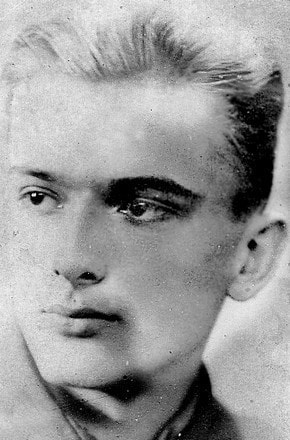 Roman Kravchenko 16 years old.
Roman Kravchenko 16 years old.
August 1942, a candle dimly illuminates the attic of a former tsarist officer's house, where 15-year-old Romka writes a diary. It is all about death: "yesterday they shot five thousand Jews", "I saw a man who was chewing bread on the way to the pit", "the policemen drink a liter in a minute, but immediately sober up from the terrible sight." Three years later, this diary will become one of the proofs of the atrocities of the Nazis at the Nuremberg trials. By that time, Romka had been fighting for a year already, promising to avenge the death of his beloved girl Frida.
He started keeping his diary at the age of 15. At first glance, nothing out of the ordinary, as in adolescence, almost everyone begins to keep personal records. They write about the first secrets from their parents, the first love and the accompanying experiences. The only difference was that this boy was describing death - the daily routine of his life. For the Ukrainian town of Kremenets, during its three-year occupation by the Nazis, death became an everyday occurrence.
And all these three terrible years, the young boy kept his diary in secret: he retired from everyone in the room, waited for everyone to leave, and sometimes even wrote only in the dim light of a candle in a dark basement or in the attic. Such an occupation could well end tragically, and he was well aware of this, despite his young age. However, each line in this diary testifies that it was no longer just the boy Romka who wrote it, but Roman Aleksandrovich Kravchenko-Berezhnoy. Growing up happened at lightning speed: prudence in assessing what was happening, hatred of enemies, stigmatization of their minions and shame for people. For those of them who with indifference, and sometimes even gloating, watched the murders of Jews. In August 1942, more than ten thousand Jews were killed in Kremenets. Three years after that, the diary of Roman Kravchenko is recognized as historical evidence and is used as evidence of the atrocities of the Nazis at the Nuremberg trials. For Roman Aleksandrovich himself, it was always painfully difficult to read and remember this in the future, because among the victims of the tragedy was his first love - a fair-haired Jewish girl with "serious dark eyes" and "head held high."
Perhaps you shouldn't even try to retell the events described by the author - it is better to just bring an entry from the diary. "11th August. I am writing about yesterday's events. Yesterday I could not, I could not. About five thousand people were shot yesterday. We have an old trench about a kilometer long outside the city. The trench of the Yakutsk regiment, which was in our town under the tsar. Execution is carried out there. The evacuation from the ghetto began at about three in the morning and lasted until late at night. A terrible sight! The gates of the ghetto are wide open, and behind them is the line of the doomed, two in a row. A car drives up, the queue moves in silence, the first pairs are stacked on the bottom of the truck, the next on them, so in several layers. Complete silence - no talk, no shouting, no crying. The drunken shutsmans push the lagging behind with their butts, and they tamp those who are in the truck with them. The truck drives off, turns on gas and rushes out of town. Similar trucks with high plank sides, filled with clothes, are driving towards us. A "policeman" is sitting on it, playing with a contented look with a lady's umbrella. He looks pleased with good reason: he left full watch pockets, five eternal feathers, several suits and an astrakhan coat on the way in the right place. Besides, he has already drunk at least a liter. The truck rushes out of town. Four shutsmen, standing in the corners, now and then swear and lower the butts on the backs of those lying. And here is the destination. The truck stops, the doomed get off, undress right there, men and women, and one by one move towards the ditch. The moat is filled with human bodies, strewn with bleach. On the shaft are two Gestapo men, stripped to the waist, holding pistols. People descend into the moat, lay on the corpses. Shots rang out. Everything is over. Next!
I don’t know what a person might feel at his last minute, I don’t want to think, you can go crazy. There were those who tried to resist, did not want to undress, did not want to enter the moat. They ended up with them on the spot and threw them into a pit. I also saw a man who, on his way to the pit, was chewing bread. The militiamen, the only direct witnesses of all this, become sober after a few minutes of being there. They are charged with a new portion of alcohol. The Gestapo do not need to recharge. This is not the first time for them. They threw grenades at the still living people in the pits in Rovno and then watched how the earth moved under the pressure of moving bodies, this did not affect them. They shot endless rows of people lined up over the road ditches in Kiev. Before the pogrom in Dubno, they separated all the specialists, asked them to choose one child from their children and were indignant, fell into a rage when these unfortunates refused to work, asking to be shot along with their families.
Cars drive one after another. It's already evening, they are not so full - women, girls, children are sitting at the bottom. One smiles meaninglessly. Another straightens a handkerchief on her head. Yes, you will be killed in ten minutes, understand this, resist, finally !!! Not. People are in apathy, if only it would end sooner, if only sooner. This is how hunger and beatings work.
Here comes Arek 3., my friend. He sits on the edge, his head is lowered over the side of the car, he looks at the stones of the pavement, flickering under the wheels. Each stone is closer to the goal, closer to the end of the life of a person who has not yet seen life. I will not forget his face - the face of a man who knows that in a few minutes he will be dead, and in an hour his body, corroded by bleach, will be covered with several more layers of bodies. One must be in the position of these people in order to feel all that they felt, at least those of them who could still think and feel. Yesterday Jews were exterminated in Berezhtsy. Today the Gestapo left for Pochaev and Vishnevets. The same thing is happening there today as we did yesterday. "
This is how the first day of the tragedy was described in the diary of Roman Kravchenko.
...
http://militera.lib.ru/memo/russian/kravchenko-berezhnoy_ra/02.html
He started keeping his diary at the age of 15. At first glance, nothing out of the ordinary, as in adolescence, almost everyone begins to keep personal records. They write about the first secrets from their parents, the first love and the accompanying experiences. The only difference was that this boy was describing death - the daily routine of his life. For the Ukrainian town of Kremenets, during its three-year occupation by the Nazis, death became an everyday occurrence.
And all these three terrible years, the young boy kept his diary in secret: he retired from everyone in the room, waited for everyone to leave, and sometimes even wrote only in the dim light of a candle in a dark basement or in the attic. Such an occupation could well end tragically, and he was well aware of this, despite his young age. However, each line in this diary testifies that it was no longer just the boy Romka who wrote it, but Roman Aleksandrovich Kravchenko-Berezhnoy. Growing up happened at lightning speed: prudence in assessing what was happening, hatred of enemies, stigmatization of their minions and shame for people. For those of them who with indifference, and sometimes even gloating, watched the murders of Jews. In August 1942, more than ten thousand Jews were killed in Kremenets. Three years after that, the diary of Roman Kravchenko is recognized as historical evidence and is used as evidence of the atrocities of the Nazis at the Nuremberg trials. For Roman Aleksandrovich himself, it was always painfully difficult to read and remember this in the future, because among the victims of the tragedy was his first love - a fair-haired Jewish girl with "serious dark eyes" and "head held high."
Perhaps you shouldn't even try to retell the events described by the author - it is better to just bring an entry from the diary. "11th August. I am writing about yesterday's events. Yesterday I could not, I could not. About five thousand people were shot yesterday. We have an old trench about a kilometer long outside the city. The trench of the Yakutsk regiment, which was in our town under the tsar. Execution is carried out there. The evacuation from the ghetto began at about three in the morning and lasted until late at night. A terrible sight! The gates of the ghetto are wide open, and behind them is the line of the doomed, two in a row. A car drives up, the queue moves in silence, the first pairs are stacked on the bottom of the truck, the next on them, so in several layers. Complete silence - no talk, no shouting, no crying. The drunken shutsmans push the lagging behind with their butts, and they tamp those who are in the truck with them. The truck drives off, turns on gas and rushes out of town. Similar trucks with high plank sides, filled with clothes, are driving towards us. A "policeman" is sitting on it, playing with a contented look with a lady's umbrella. He looks pleased with good reason: he left full watch pockets, five eternal feathers, several suits and an astrakhan coat on the way in the right place. Besides, he has already drunk at least a liter. The truck rushes out of town. Four shutsmen, standing in the corners, now and then swear and lower the butts on the backs of those lying. And here is the destination. The truck stops, the doomed get off, undress right there, men and women, and one by one move towards the ditch. The moat is filled with human bodies, strewn with bleach. On the shaft are two Gestapo men, stripped to the waist, holding pistols. People descend into the moat, lay on the corpses. Shots rang out. Everything is over. Next!
I don’t know what a person might feel at his last minute, I don’t want to think, you can go crazy. There were those who tried to resist, did not want to undress, did not want to enter the moat. They ended up with them on the spot and threw them into a pit. I also saw a man who, on his way to the pit, was chewing bread. The militiamen, the only direct witnesses of all this, become sober after a few minutes of being there. They are charged with a new portion of alcohol. The Gestapo do not need to recharge. This is not the first time for them. They threw grenades at the still living people in the pits in Rovno and then watched how the earth moved under the pressure of moving bodies, this did not affect them. They shot endless rows of people lined up over the road ditches in Kiev. Before the pogrom in Dubno, they separated all the specialists, asked them to choose one child from their children and were indignant, fell into a rage when these unfortunates refused to work, asking to be shot along with their families.
Cars drive one after another. It's already evening, they are not so full - women, girls, children are sitting at the bottom. One smiles meaninglessly. Another straightens a handkerchief on her head. Yes, you will be killed in ten minutes, understand this, resist, finally !!! Not. People are in apathy, if only it would end sooner, if only sooner. This is how hunger and beatings work.
Here comes Arek 3., my friend. He sits on the edge, his head is lowered over the side of the car, he looks at the stones of the pavement, flickering under the wheels. Each stone is closer to the goal, closer to the end of the life of a person who has not yet seen life. I will not forget his face - the face of a man who knows that in a few minutes he will be dead, and in an hour his body, corroded by bleach, will be covered with several more layers of bodies. One must be in the position of these people in order to feel all that they felt, at least those of them who could still think and feel. Yesterday Jews were exterminated in Berezhtsy. Today the Gestapo left for Pochaev and Vishnevets. The same thing is happening there today as we did yesterday. "
This is how the first day of the tragedy was described in the diary of Roman Kravchenko.
...
http://militera.lib.ru/memo/russian/kravchenko-berezhnoy_ra/02.html
Moshko Sub-Sub-Sub-Branch (Sagalov tree, descendants of Itsko-Ayzik, Khaim Branch)
Family of Leiba Moshkovich Segal (1776) (Sagalov tree, descendants of Itsko-Ayzik, Khaim branch)
Family of Leiba Moshkovich Segal (1776) (Sagalov tree, descendants of Itsko-Ayzik, Khaim branch)
State Archive of the Ternopil region.
Revision tales about the Jews of the Volyn province. 1816
In this document of 1816, among the male Jews appears the family's of our relatives:
- Leibka Moshkovich Segal, age 40, born in 1776, who lived in the shtetl of Kremenets, аrrived from the town of Torchin (Lutsk's district) in 1816,
- Leibka Moshkovich's wife - Leia, age 26, born in 1790,
- Leibka Moshkovich's daughter - Leia, age 14, born in 1802,
- Leibka Moshkovich's daughter - Sura, age 6, born in 1810.
Revision tales about the Jews of the Volyn province. 1816
In this document of 1816, among the male Jews appears the family's of our relatives:
- Leibka Moshkovich Segal, age 40, born in 1776, who lived in the shtetl of Kremenets, аrrived from the town of Torchin (Lutsk's district) in 1816,
- Leibka Moshkovich's wife - Leia, age 26, born in 1790,
- Leibka Moshkovich's daughter - Leia, age 14, born in 1802,
- Leibka Moshkovich's daughter - Sura, age 6, born in 1810.
Family of Shaia-Volf Moshkovich Segal (1776) (Sagalov tree, descendants of Itsko-Ayzik, Khaim branch)
Family of Shaia-Volf Moshkovich Segal (1776) (Sagalov tree, descendants of Itsko-Ayzik, Khaim branch)
State Archive of the Ternopil region.
Revision tales about the Jews of the Volyn province. 1816
In this document of 1816, among the male Jews appears the family's of our relatives:
- Shaia-Volf Moshkovich Segal, age 40, born in 1776, who lived in the shtetl of Kremenets,
- Shaia-Volf Moshkovich's wife - Genia, age 40, born in 1776,
- Shaia-Volf Moshkovich's daughter - Rosia, age 12, born in 1804,
- Shaia-Volf Moshkovich's daughter - Sheina, age 8, born in 1808.
Revision tales about the Jews of the Volyn province. 1816
In this document of 1816, among the male Jews appears the family's of our relatives:
- Shaia-Volf Moshkovich Segal, age 40, born in 1776, who lived in the shtetl of Kremenets,
- Shaia-Volf Moshkovich's wife - Genia, age 40, born in 1776,
- Shaia-Volf Moshkovich's daughter - Rosia, age 12, born in 1804,
- Shaia-Volf Moshkovich's daughter - Sheina, age 8, born in 1808.
Family of Yos-Ioina Moshkovich Segal (1787) (Sagalov tree, descendants of Itsko-Ayzik, Khaim branch)
State Archive of the Ternopil region.
Revision tales about the Jews of the Volyn province. 1816
In this document of 1816, among the male Jews appears the family's of our relatives:
- Yos-Ioina Moshkovich Segal, age 28, born in 1788, who lived in the shtetl of Kremenets, аrrived from the town of Dubno in 1814,
- Yos-Ioina Moshkovich's wife - Gentsia, age 24, born in 1792,
- Yos-Ioina Moshkovich's daughter - Masia, age 5, born in 1811.
Revision tales about the Jews of the Volyn province. 1816
In this document of 1816, among the male Jews appears the family's of our relatives:
- Yos-Ioina Moshkovich Segal, age 28, born in 1788, who lived in the shtetl of Kremenets, аrrived from the town of Dubno in 1814,
- Yos-Ioina Moshkovich's wife - Gentsia, age 24, born in 1792,
- Yos-Ioina Moshkovich's daughter - Masia, age 5, born in 1811.
State Archive of the Ternopil region.
Revision tales about the Jews of the Volyn province. 1817
In this document of 1817, among the male Jews appears the family's of our relatives:
- Yos Moshkovich Segal, age 30, born in 1787, who lived in the shtetl of Kremenets,
- Yos Moshkovich's son - Moshko-Leib, age 1, born in 1816.
Revision tales about the Jews of the Volyn province. 1817
In this document of 1817, among the male Jews appears the family's of our relatives:
- Yos Moshkovich Segal, age 30, born in 1787, who lived in the shtetl of Kremenets,
- Yos Moshkovich's son - Moshko-Leib, age 1, born in 1816.
Family of Vigdor Yosevich Segal (1808) (Sagalov tree, descendants of Itsko-Ayzik, Khaim branch)
State Archive of the Ternopil region.
Revision tales about the Jews of the Volyn province. 1817
In this document of 1817, among the male Jews appears the family's of our relatives:
- Vigdor Yosevich Segal, age 9, born in 1808, who lived in the shtetl of Yampol.
Revision tales about the Jews of the Volyn province. 1817
In this document of 1817, among the male Jews appears the family's of our relatives:
- Vigdor Yosevich Segal, age 9, born in 1808, who lived in the shtetl of Yampol.
Family of Benjamin Moshkovich Segal (1781) (Sagalov tree, descendants of Itsko-Ayzik, Khaim branch)
State Archive of the Ternopil region.
Revision tales about the Jews of the Volyn province. 1816
In this document of 1816, among the male Jews appears the family's of our relatives:
- Benjamin Moshkovich Segal, age 28, born in 1788, who lived in the shtetl of Yampol, аrrived from the town of Kremenets,
- Benjamin Moshkovich's wife - Brendlia, age 30, born in 1786,
- Benjamin Moshkovich's daughter - Feiga, age 1, born in 1815.
Revision tales about the Jews of the Volyn province. 1816
In this document of 1816, among the male Jews appears the family's of our relatives:
- Benjamin Moshkovich Segal, age 28, born in 1788, who lived in the shtetl of Yampol, аrrived from the town of Kremenets,
- Benjamin Moshkovich's wife - Brendlia, age 30, born in 1786,
- Benjamin Moshkovich's daughter - Feiga, age 1, born in 1815.
Family of Itsek-Pinkhas Moshkovich Segal (1790) (Sagalov tree, descendants of Itsko-Ayzik, Khaim branch)
State Archive of the Ternopil region.
Revision tales about the Jews of the Volyn province. 1816
In this document of 1816, among the male Jews appears the family's of our relatives:
- Itsek-Pinkhas Moshkovich Segal, age 26, born in 1790, who lived in the shtetl of Radzivilov,
- Itsek-Pinkhas Moshkovich's wife - Freida, age 25, born in 1791,
- Itsek-Pinkhas Moshkovich's son - Mordko, age 4, born in 1812.
- Itsek-Pinkhas Moshkovich's daughter - Khaia-Rifka, age 10, born in 1806.
Revision tales about the Jews of the Volyn province. 1816
In this document of 1816, among the male Jews appears the family's of our relatives:
- Itsek-Pinkhas Moshkovich Segal, age 26, born in 1790, who lived in the shtetl of Radzivilov,
- Itsek-Pinkhas Moshkovich's wife - Freida, age 25, born in 1791,
- Itsek-Pinkhas Moshkovich's son - Mordko, age 4, born in 1812.
- Itsek-Pinkhas Moshkovich's daughter - Khaia-Rifka, age 10, born in 1806.
State Archive of the Ternopil region.
Revision tales about the Jews of the Volyn province. 1816
In this document of 1816, among the male Jews appears the family's of our relatives:
- Itsek-Pinkhas Moshkovich Segal, age 26, born in 1790, who lived in the shtetl of Radzivilov,
- Itsek-Pinkhas Moshkovich's wife - Freida, age 25, born in 1791,
- Itsek-Pinkhas Moshkovich's son - Ovshia-Aizik, age 5, born in 1811,
- Itsek-Pinkhas Moshkovich's son - Gersh-Leib, age 2, born in 1814.
Revision tales about the Jews of the Volyn province. 1816
In this document of 1816, among the male Jews appears the family's of our relatives:
- Itsek-Pinkhas Moshkovich Segal, age 26, born in 1790, who lived in the shtetl of Radzivilov,
- Itsek-Pinkhas Moshkovich's wife - Freida, age 25, born in 1791,
- Itsek-Pinkhas Moshkovich's son - Ovshia-Aizik, age 5, born in 1811,
- Itsek-Pinkhas Moshkovich's son - Gersh-Leib, age 2, born in 1814.
Family of Yankel Moshkovich Segal (1762) (Sagalov tree, descendants of Itsko-Ayzik, Khaim branch)
State Archive of the Ternopil region.
Revision tales about the Jews of the Volyn province. 1816
In this document of 1816, among the male Jews appears the family's of our relatives:
- Yankel Moshkovich Segal, age 49 in RT 1811, born in 1762, died in 1816, who lived in the shtetl of Yampol,
- Yankel Moshkovich's wife - Khaia, age 455, born in 1771,
- Yankel Moshkovich's son - Shmul, age 16, born in 1800.
Revision tales about the Jews of the Volyn province. 1816
In this document of 1816, among the male Jews appears the family's of our relatives:
- Yankel Moshkovich Segal, age 49 in RT 1811, born in 1762, died in 1816, who lived in the shtetl of Yampol,
- Yankel Moshkovich's wife - Khaia, age 455, born in 1771,
- Yankel Moshkovich's son - Shmul, age 16, born in 1800.
Family of Khaim Yankelevich Segal (1815) (Sagalov tree, descendants of Itsko-Ayzik, Khaim branch)
State Archive of the Ternopil region.
Revision tales about the Jews of the Volyn province. 1817
In this document of 1817, among the male Jews appears the family's of our relatives:
- Khaim Yankelevich Segal, age 2, born in 1815, who lived in the shtetl of Katerburg.
Revision tales about the Jews of the Volyn province. 1817
In this document of 1817, among the male Jews appears the family's of our relatives:
- Khaim Yankelevich Segal, age 2, born in 1815, who lived in the shtetl of Katerburg.
Segals from Vyshnivets (Wiśniowiec)
Information from:
https://pl.wikipedia.org/wiki/Wi%C5%9Bniowiec
https://kehilalinks.jewishgen.org/vishnevets/vishnevets.html
https://sztetl.org.pl/en/node/1101/114-cemeteries
www.etoretro.ru/city3462.htm#z-z%7CDESC%7C1%7Cimage_date%7Call
Vyshnivets - the first records of the settlement date back to 1395, but the town was first mentioned under the name Wiśniowiec in the middle of the 15th century . Wiśniowiec from the beginning of its existence until the last partition of Poland was a part of Poland and a part of the Volyn Province .
Wiśniowiec is a small town situated in the deep valley of the Horynia, in the area of the historical Volyn.
In 1395, the brother of Władysław Jagiełło, Dymitr Korybut, near the village of Wiśniowiec (from that moment on called Stary Wiśniowiec) founded the village of Nowy Wiśniowiec and started the construction of the castle in it.
Wiśniowiec was granted city rights at the end of the 15th century. From the name of the town, Duke Michał Zbaraski assumed the name of Wiśniowiecki in the 15th century, and in memory of the founder of the family, the nickname Korybut was added to the surname.
In 1512, the Battle of Wiśniowiec (also known as the Battle of Łopuszno) took place. The Polish army then won the victory over the overwhelming Tatars forces and also managed to free about 16,000 people taken as prisoners.
Whereas in 1603, the monk Georgy Otripiev, who was staying at the castle, was to announce himself here the surviving Tsarevich Dimitri (he was later nicknamed False Dimitri).
After the childless death of King Michał Korybut Wiśniowiecki, the so-called the "royal" line expired and Wiśniowiec switched to the "princely" line.
The greatest bloom and the reconstruction of the castle into a palace Wiśniowiec owes to the activity of Michał Serwace
Wiśniowiecki. He was one of the richest people in the Commonwealth. After his childless death the coats of arms of the Wiśniowiecki family were smashed to pieces, which symbolically ended the existence of the family. The funeral of Wiśniowiecki was considered to be the greatest in the history of the Polish-18th century.
The town then passed into the hands of the Mniszech family, who richly equipped the palace. After the 1795 partitions, the city became part of the Russian partition, and in the interwar years it belonged to Poland, and n 1939, to the Soviet authorities.
Unfortunately, we do not have data on the population of Wiśniowiec in the 18th century. We only know that at the end of the 19th century the town was inhabited by 2,377 people (876 in Wiśniowiec Nowe and 1501 Stary), and 452 Jews constituted
19% of the population.
In the interwar period, there were about 5,000 inhabitants there, of which Jews constituted nearly 60%. In March 1942, the Germans established a ghetto for 3,500 Jews in Wiśniowiec. Some of them died of starvation and exhaustion, and 2,669 Jews (mostly women and children) were taken out of the city and murdered in August 1942. In February 1944, the UPA invaded the town and murdered about 500 people in the Discalced Carmelite Monastery and the Church of st. Stanislaus. The church and monastery were burnt down.
Jewish history.
Louis Parnes, described Wiśniowiec in his book THE VANISHING GENERATIONS, published in 1954, when he was 85 years old.
"It was a small town of brick and wooden houses crowded together and surrounded by a succession of splendid cherry orchards -- which was the abode of the eminent Polish Princes, the Wishnewetzky's, in the 15th century, and was on the verge of becoming the capital of all-Russia in 1674, under the leadership and conquest of the Princes Michael and Valusah Wishnewetzky..... The 15th century was the history-making era of Poland, when Prince Michael Wishnewetzky proclaimed himself Field Marshal and declared war on Russia -- forcing the enemy to quit the field of battle and retreat to Moscow-- only later to suffer defeat as he approached with his Polish volunteers the gates of the Kremlin."
"Among the volunteers who distinguished themselves in battle against the Russians were many Jewish soldiers from Wishnewitz, whose courage and obedience won the admiration of the Polish Princes for performing any dangerous enterprise they were to undertake, and for their confidence in themselves, who thought it a point of honor to refuse defeat and never to give way."
"In recognition of their unsurpassed loyalty, the Wishnewetzky's remained the permanent friends of the Jews and regarded them with the truest affection even at the time when Poland sank into serfdom, and was at the close of the eighteenth century partitioned among her three neighboring nations, Russia, Austria and Prussia, with Wishnewitz falling under the tyrannous Russian yoke."
"From a point near the turn of Wishnewitz, the beholder enjoys a most striking and wonderful prospect of the ancient castle of the Wishnewetzkys, situated on the summit of a hill. The grounds were extensive...
"Actually the city of Wisnewitz was two cities in one. A river divided the city into two halves, which were linked together by a bridge spanned over the river uniting the old and the new city. The old city had a tiny population of about fifty families, while the bulk of the Jewish population, consisting of four hundred families, lived in the new city, which was surrounded by rich and extended farmlands owned by non-Jews, since there were no Jewish landowners in Russia in those days in accordance with the old Russian laws prohibiting Jews to buy or possess land or even rent and operate a farm estate in behalf of others.
"...in 1804 the Czar Alexander I issued a special decree (ukase) granting the Jews the privilege of acquiring land and settling on their own farms... But in the early days of my childhood, the old discriminating laws were still enforced, and the Jews of Wishnewitz had to struggle bitterly for their survival and poor livelihood. They were confined chiefly to small business, such as peddling, marketing of agricultural products and in the smaller towns and villages they would combine handicraft with the business of liquor distillers and of innkeepers. ...our Jewish innkeepers, unlike their non-Jewish competitors in that profession, were compelled to pay exceptionally high taxes, plus additional big fees for the liquor permit. ...taxes so extremely high that it was utterly impossible for a Jewish innkeeper to earn but a poor living with the full help and cooperation of his wife. The Jewish women, to help out their husbands, would bake delicious cakes and tasty rolls, only to attract the eyes and appetites of non-Jewish customers whose wives did not posses the skill and talent, or the "know-how" of the art of Jewish specially flavored baking. This avenue of making a living was soon closed to the Jews by Russian law and the Jews soon had to find a way out of the financial problems. Electricity was brought to the shtetl by a German Lumber Company in 1888 and evryone was astonished at its power to light up the area."
Louis describes the shtetl as having a kheder (primary school) -- besmedresh (study house) where the males spent long hours studying "the sublime truths of the Talmud, halakha (code of laws) and agada (legends). The doors were always open to those who wanted to study.
"At all times one could observe men of all ages walking into the poorly illuminated room and seating themselves upon the long wooden benches, opening the huge old folios of the beloved Talmud, of Mishnah, or sometimes joining a group of other Talmudic scholars who were engaged in the discourses of the Holy Scriptures."
https://pl.wikipedia.org/wiki/Wi%C5%9Bniowiec
https://kehilalinks.jewishgen.org/vishnevets/vishnevets.html
https://sztetl.org.pl/en/node/1101/114-cemeteries
www.etoretro.ru/city3462.htm#z-z%7CDESC%7C1%7Cimage_date%7Call
Vyshnivets - the first records of the settlement date back to 1395, but the town was first mentioned under the name Wiśniowiec in the middle of the 15th century . Wiśniowiec from the beginning of its existence until the last partition of Poland was a part of Poland and a part of the Volyn Province .
Wiśniowiec is a small town situated in the deep valley of the Horynia, in the area of the historical Volyn.
In 1395, the brother of Władysław Jagiełło, Dymitr Korybut, near the village of Wiśniowiec (from that moment on called Stary Wiśniowiec) founded the village of Nowy Wiśniowiec and started the construction of the castle in it.
Wiśniowiec was granted city rights at the end of the 15th century. From the name of the town, Duke Michał Zbaraski assumed the name of Wiśniowiecki in the 15th century, and in memory of the founder of the family, the nickname Korybut was added to the surname.
In 1512, the Battle of Wiśniowiec (also known as the Battle of Łopuszno) took place. The Polish army then won the victory over the overwhelming Tatars forces and also managed to free about 16,000 people taken as prisoners.
Whereas in 1603, the monk Georgy Otripiev, who was staying at the castle, was to announce himself here the surviving Tsarevich Dimitri (he was later nicknamed False Dimitri).
After the childless death of King Michał Korybut Wiśniowiecki, the so-called the "royal" line expired and Wiśniowiec switched to the "princely" line.
The greatest bloom and the reconstruction of the castle into a palace Wiśniowiec owes to the activity of Michał Serwace
Wiśniowiecki. He was one of the richest people in the Commonwealth. After his childless death the coats of arms of the Wiśniowiecki family were smashed to pieces, which symbolically ended the existence of the family. The funeral of Wiśniowiecki was considered to be the greatest in the history of the Polish-18th century.
The town then passed into the hands of the Mniszech family, who richly equipped the palace. After the 1795 partitions, the city became part of the Russian partition, and in the interwar years it belonged to Poland, and n 1939, to the Soviet authorities.
Unfortunately, we do not have data on the population of Wiśniowiec in the 18th century. We only know that at the end of the 19th century the town was inhabited by 2,377 people (876 in Wiśniowiec Nowe and 1501 Stary), and 452 Jews constituted
19% of the population.
In the interwar period, there were about 5,000 inhabitants there, of which Jews constituted nearly 60%. In March 1942, the Germans established a ghetto for 3,500 Jews in Wiśniowiec. Some of them died of starvation and exhaustion, and 2,669 Jews (mostly women and children) were taken out of the city and murdered in August 1942. In February 1944, the UPA invaded the town and murdered about 500 people in the Discalced Carmelite Monastery and the Church of st. Stanislaus. The church and monastery were burnt down.
Jewish history.
Louis Parnes, described Wiśniowiec in his book THE VANISHING GENERATIONS, published in 1954, when he was 85 years old.
"It was a small town of brick and wooden houses crowded together and surrounded by a succession of splendid cherry orchards -- which was the abode of the eminent Polish Princes, the Wishnewetzky's, in the 15th century, and was on the verge of becoming the capital of all-Russia in 1674, under the leadership and conquest of the Princes Michael and Valusah Wishnewetzky..... The 15th century was the history-making era of Poland, when Prince Michael Wishnewetzky proclaimed himself Field Marshal and declared war on Russia -- forcing the enemy to quit the field of battle and retreat to Moscow-- only later to suffer defeat as he approached with his Polish volunteers the gates of the Kremlin."
"Among the volunteers who distinguished themselves in battle against the Russians were many Jewish soldiers from Wishnewitz, whose courage and obedience won the admiration of the Polish Princes for performing any dangerous enterprise they were to undertake, and for their confidence in themselves, who thought it a point of honor to refuse defeat and never to give way."
"In recognition of their unsurpassed loyalty, the Wishnewetzky's remained the permanent friends of the Jews and regarded them with the truest affection even at the time when Poland sank into serfdom, and was at the close of the eighteenth century partitioned among her three neighboring nations, Russia, Austria and Prussia, with Wishnewitz falling under the tyrannous Russian yoke."
"From a point near the turn of Wishnewitz, the beholder enjoys a most striking and wonderful prospect of the ancient castle of the Wishnewetzkys, situated on the summit of a hill. The grounds were extensive...
"Actually the city of Wisnewitz was two cities in one. A river divided the city into two halves, which were linked together by a bridge spanned over the river uniting the old and the new city. The old city had a tiny population of about fifty families, while the bulk of the Jewish population, consisting of four hundred families, lived in the new city, which was surrounded by rich and extended farmlands owned by non-Jews, since there were no Jewish landowners in Russia in those days in accordance with the old Russian laws prohibiting Jews to buy or possess land or even rent and operate a farm estate in behalf of others.
"...in 1804 the Czar Alexander I issued a special decree (ukase) granting the Jews the privilege of acquiring land and settling on their own farms... But in the early days of my childhood, the old discriminating laws were still enforced, and the Jews of Wishnewitz had to struggle bitterly for their survival and poor livelihood. They were confined chiefly to small business, such as peddling, marketing of agricultural products and in the smaller towns and villages they would combine handicraft with the business of liquor distillers and of innkeepers. ...our Jewish innkeepers, unlike their non-Jewish competitors in that profession, were compelled to pay exceptionally high taxes, plus additional big fees for the liquor permit. ...taxes so extremely high that it was utterly impossible for a Jewish innkeeper to earn but a poor living with the full help and cooperation of his wife. The Jewish women, to help out their husbands, would bake delicious cakes and tasty rolls, only to attract the eyes and appetites of non-Jewish customers whose wives did not posses the skill and talent, or the "know-how" of the art of Jewish specially flavored baking. This avenue of making a living was soon closed to the Jews by Russian law and the Jews soon had to find a way out of the financial problems. Electricity was brought to the shtetl by a German Lumber Company in 1888 and evryone was astonished at its power to light up the area."
Louis describes the shtetl as having a kheder (primary school) -- besmedresh (study house) where the males spent long hours studying "the sublime truths of the Talmud, halakha (code of laws) and agada (legends). The doors were always open to those who wanted to study.
"At all times one could observe men of all ages walking into the poorly illuminated room and seating themselves upon the long wooden benches, opening the huge old folios of the beloved Talmud, of Mishnah, or sometimes joining a group of other Talmudic scholars who were engaged in the discourses of the Holy Scriptures."
Vyshnivets Map 1894.
Village map.
Vyshnivets business directory. 1913.
Photos of Vyshnivets
Photos of Vyshnivets
Vyshnivets. General view. Ukrainian Church, Castle, Roman Catholic Church (Kostiol). 1910-1916.
Vyshnivets Panorama 1875 (woodcut).
Vyshnivets Panorama, 1921 - 1939.
Wiśniowiec. The view from the palace to Stary Wiśniowiec. On the left, the ruins of the church of st. Stanisław, on the right Orthodox church. st. Michael the Archangel.
Rynok (Market).
A man (Harry) in Israel was showing his friend, Moshe, how the Internet works. Moshe asked if there was anything from his hometown, VISHNEVETS. After searching, they found this page with Louis Parnes information. Moshe, very excitedly said "look! that drawing (of the village street) is mine!"
I would like to thank Moshe Segal for his permission to use the drawing and give credit where credit is due. -- Arlene Parnes
I would like to thank Moshe Segal for his permission to use the drawing and give credit where credit is due. -- Arlene Parnes
Great Synagogue
Great Synagogue in Vyshnivets. 1900. Lions visible above the central window.
The synagogue was built in the 1800s in the Baroque style. Currently it is used as an office building. Address - st. Hrushevsky, 6.
|
|
There is a synagogue in the town. It is a two-story building on the plan square. Today it is the seat of the village administration, but it remains not in the best condition. There was also a synagogue in Stary Wiśniowiec, but its location is currently unknown.
|
Drawings of the Synagogue in Vyshnivets (Wiśniowiec).
Jewish Cemetery
Jewish Cemetery
Old Jewish Cemetery in Vyshnivets, Ukraine. 2000.
Old Jewish Cemetery in Vyshnivets.
New Jewish Cemetery in Vyshnivets.
The earliest known mentioning of the Jewish community was in 1616.
In 1939 Jewish population (census) was 2825. Affecting the Jewish Community were Khmelnitsky Pogroms in 1680 and 1919-1920 Civil War. The Jewish cemetery was established in the 17th century with last known Karlin-Stolin Hasidic burial 19__. No other towns or villages used this cemetery. The isolated urban crown of a hill has no sign or marker. Reached by turning directly off a public road and crossing other public property (Kremenetskaya St.), access is open to all. No wall, fence, or gate surround the cemetery. From 501 to 5000 common tombstones, most in original location with 25%-50% toppled, dated from 1583 to 18th century. The cemetery has no known mass graves. Municipality owns Jewish cemetery property. Properties adjacent are agricultural and residential. The cemetery boundaries are unchanged since 1939. Rarely, Jewish or non-Jewish private visitors and local residents visit. The cemetery was vandalized during World War II. There is no maintenance. Within the limits of the cemetery there are no structures. Vegetation overgrowth is a constant problem, disturbing stones. Moderate threat: weather erosion and vegetation. Slight threat: uncontrolled access and pollution.
A tombstone found in Vishnevets dated 1583 refutes the assertion that the Jews first settled here only at the beginning of the 17th century. Two monuments of 1673 and one monument of 1686 support that, at least by the beginning of the 1670s. the community was restored after its destruction in 1653 by the Tatars returning from the battle near Berestechko.
In 1939 Jewish population (census) was 2825. Affecting the Jewish Community were Khmelnitsky Pogroms in 1680 and 1919-1920 Civil War. The Jewish cemetery was established in the 17th century with last known Karlin-Stolin Hasidic burial 19__. No other towns or villages used this cemetery. The isolated urban crown of a hill has no sign or marker. Reached by turning directly off a public road and crossing other public property (Kremenetskaya St.), access is open to all. No wall, fence, or gate surround the cemetery. From 501 to 5000 common tombstones, most in original location with 25%-50% toppled, dated from 1583 to 18th century. The cemetery has no known mass graves. Municipality owns Jewish cemetery property. Properties adjacent are agricultural and residential. The cemetery boundaries are unchanged since 1939. Rarely, Jewish or non-Jewish private visitors and local residents visit. The cemetery was vandalized during World War II. There is no maintenance. Within the limits of the cemetery there are no structures. Vegetation overgrowth is a constant problem, disturbing stones. Moderate threat: weather erosion and vegetation. Slight threat: uncontrolled access and pollution.
A tombstone found in Vishnevets dated 1583 refutes the assertion that the Jews first settled here only at the beginning of the 17th century. Two monuments of 1673 and one monument of 1686 support that, at least by the beginning of the 1670s. the community was restored after its destruction in 1653 by the Tatars returning from the battle near Berestechko.
Holocaust
The Jewish community was destroyed during the Holocaust, when a ghetto was created in the town and six thousand Jews were killed. People were shot right in the ravines: 600 men, 1160 women and 909 children were killed there alone. A mute witness to those events is a memorial in a ravine in Stary Vyshnevets.
CHRONICLE OF THE HOLOCAUST IN UKRAINE 1941 - 1944
July 12th (17 Tammuz 5701) Saturday.
In Vyshnevets (Ternopil region) - 40 Jews were killed.
March 16th (27 Adar 5702) Monday.
A ghetto was created in Vishnevets (Ternopil region).
August 1st (18 Av, 5702) Saturday.
In Vishnevets (Ternopil region), a team of SD, with the participation of the German gendarmerie and the Ukrainian police, shot 1,500 Jews.
2nd August (19 Av, 5702) Sunday.
The SD team shot another 800 Jews in Vyshnevets.
August 11th (28 Av, 5702) Tuesday.
About 400 more Jews were killed in Vyshnevets, bringing the number of Jews killed in Vyshnevets to 2,669 (600 men, 1,160 women, and 909 children).
August 25th (12 Elul, 5702) Tuesday.
Several hundred Jewish artisans were killed in Vinnitsa. In Vyshnivets, the German gendarmerie and the Ukrainian police shot about 300 more Jews.
In September, 242, 200-300 and several hundred Jews were also killed: in Shumsky, Vyshnevets and Pochaev (Ternopil region), respectively.
CHRONICLE OF THE HOLOCAUST IN UKRAINE 1941 - 1944
July 12th (17 Tammuz 5701) Saturday.
In Vyshnevets (Ternopil region) - 40 Jews were killed.
March 16th (27 Adar 5702) Monday.
A ghetto was created in Vishnevets (Ternopil region).
August 1st (18 Av, 5702) Saturday.
In Vishnevets (Ternopil region), a team of SD, with the participation of the German gendarmerie and the Ukrainian police, shot 1,500 Jews.
2nd August (19 Av, 5702) Sunday.
The SD team shot another 800 Jews in Vyshnevets.
August 11th (28 Av, 5702) Tuesday.
About 400 more Jews were killed in Vyshnevets, bringing the number of Jews killed in Vyshnevets to 2,669 (600 men, 1,160 women, and 909 children).
August 25th (12 Elul, 5702) Tuesday.
Several hundred Jewish artisans were killed in Vinnitsa. In Vyshnivets, the German gendarmerie and the Ukrainian police shot about 300 more Jews.
In September, 242, 200-300 and several hundred Jews were also killed: in Shumsky, Vyshnevets and Pochaev (Ternopil region), respectively.
Ukrainian Nationalists and the Holocaust OUN and UPA's Participation in the Destruction of Ukrainian Jewry, 1941-1944.
John-Paul Himka; Andreas Umland; ibidem-Verlag
Stuttgart ibidem 2021
John-Paul Himka; Andreas Umland; ibidem-Verlag
Stuttgart ibidem 2021
Family of Srul-Gersh Duvidovich Segal (1797)( Sagalov tree, descendants of Itsko-Ayzik, Khaim branch)
State Archive of the Ternopil region.
Revision tales about the Jews of the Volyn province. 1816
In this document of 1816, among the male Jews appears the family's of our relatives:
- Srul-Gersh Duvidovich Segal, age 19, born in 1797, who lived in the shtetl of Vishnevets,
- Srul-Gersh Duvidovich's wife - Yenta, age 16, born in 1800.
Revision tales about the Jews of the Volyn province. 1816
In this document of 1816, among the male Jews appears the family's of our relatives:
- Srul-Gersh Duvidovich Segal, age 19, born in 1797, who lived in the shtetl of Vishnevets,
- Srul-Gersh Duvidovich's wife - Yenta, age 16, born in 1800.
Family of Abram-Moshko Duvidovich Segal (1802)( Sagalov tree, descendants of Itsko-Ayzik, Khaim branch)
State Archive of the Ternopil region.
Revision tales about the Jews of the Volyn province. 1816. 1817.
In this document of 1816, 1817 among the male Jews appears the family's of our relatives:
- Abram-Moshko Duvidovich Segal, age 14, born in 1802, who lived in the shtetl of Vishnevets,
- Mikhel-Ayzik Duvidovich Segal, age 12, born in 1804, who lived in the shtetl of Vishnevets.
Revision tales about the Jews of the Volyn province. 1816. 1817.
In this document of 1816, 1817 among the male Jews appears the family's of our relatives:
- Abram-Moshko Duvidovich Segal, age 14, born in 1802, who lived in the shtetl of Vishnevets,
- Mikhel-Ayzik Duvidovich Segal, age 12, born in 1804, who lived in the shtetl of Vishnevets.
Family of David-Shloma Gershkovich Segal (1797)( Sagalov tree, descendants of Itsko-Ayzik, Khaim branch)
State Archive of the Ternopil region.
Revision tales about the Jews of the Volyn province. 1817
In this document of 1817, among the male Jews appears the family's of our relatives:
- David-Shloma Gershkovich Segal, age 20, born in 1797, who lived in the shtetl of Vishnevets,
- David-Shloma Gershkovich's wife - Katia, age 20, born in 1797.
Revision tales about the Jews of the Volyn province. 1817
In this document of 1817, among the male Jews appears the family's of our relatives:
- David-Shloma Gershkovich Segal, age 20, born in 1797, who lived in the shtetl of Vishnevets,
- David-Shloma Gershkovich's wife - Katia, age 20, born in 1797.
Segals from Yampol (Volhyn)
Information from:
http: www.myshtetl.org/khmelnitskaja/yampol_hm.html
http://www.ejwiki.org/wiki/%D0%AF%D0%BC%D0%BF%D0%BE%D0%BB%D1%8C_(%D0%A5%D0%BC%D0%B5%D0%BB%D1%8C%D0%BD%D0%B8%D1%86%D0%BA%D0%BE%D0%B9_%D0%BE%D0%B1%D0%BB%D0%B0%D1%81%D1%82%D0%B8)
https://www.jewishgen.org/yizkor/yampol/yam090.html#Page108
Yampol - Mst. Volyn province. Kremenets district, in the 42km. from the county city, it stands on the banks of the Goryn river and at a large pond-lake. 2566 inhabitants, 2 orthodox churches, church, chapel, synagogue, breweries, and 2 soap factories, other factories. Many shops, 4 fairs.
The city arose in the 10th century under the name Tykhomyl. In 1241 it was destroyed by the Mongols. In 1535 this place was bought by the feudal lord Janusz of Vienna and he built the city of Januszpol there. Later the name was transformed into Yampol. In 1616, Yampol received the Magdeburg Law (that is, the status of a city) and the opportunity to hold fairs.
Yampol - in the era of the Polish Commonwealth, the town of Volyn Voivodeship, Kremenets Povet. At the beginning of the 18th century the inhabitants of Yampol, including the Jews, were devastated by the Cossack, Swedish, Polish and Russian troops. In 1765 there were 476 inhabitants.
In the beginning of the 19th century - a town in the Volyn province, Kremenets district.
According to the revision of 1847, the Yampol Jewish Society consisted of 1724 souls.
According to the 1897 census, there were 2,564 inhabitants, of which 1,482 were Jews (57.8%).
There was a Jewish hospital. Jews owned all 5 grocers, all 5 leather shops, a roofing iron shop, two hardware shops, all 6 manufacturer shops, all 3 flour shops, all 3 tow and hemp shops, all 3 bread shops, and a lumberyard.
Yampol's Shopkeepers
For some time the Yampol shopkeepers were not permitted to open their shops in their homes. All stores had to be located together in the center of the town.The physical layout of the shops was as follows: two long buildings facing each other and joined by two doors. Each building consisted of about thirty rooms. The rooms were separated by wooden planks. Through the cracks in the planks, the shopkeepers could easily observe what was going on in the neighbour's shop … how much merchandise the neighbouring shopkeeper had and evaluate its worth. Each shop had a door which had a square folding platform. The platform opened into a hanging table. The tables were very convenient. The shopkeepers put on them all kinds of items for sale. The doors with the hanging tables were facing each other so the shopkeeper could see what the other shopkeepers were selling … this was the cause of quarrels, one shopkeeper accusing the other of stealing away the customers with 'winks of the eye' … at the end of the day, or market fair when the shops were closed. Throughout the night the guard used to bang on the iron barrel to assure everyone that he was not asleep while guarding.
They used to say about the Yampol shopkeepers: “they earn a living but don't have enough money to buy merchandise.” Whatever profit they made on selling merchandise they spent on living … for this reason their shelves were empty of merchandise. Some experienced shopkeepers used to go bankrupt. A wholesaler with many years of experience used to come and make a deal, meaning he received (in payment) only twenty per cent of the value of the entire stock owed … and once again the credit account was opened and the shopkeeper was in business again.
This happened most of the time with the fabric stores. Other shopkeepers used to pay interest, mortgage their homes and work very hard at making a living. It was terrible when the New Year came and one had to buy out the promissory notes. It was a real tragedy … because who had money to buy out the promissory note? Solution - people made deals. People who were supposed to buy out the second promissory note were buying the third and the ones who had to purchase the third were buying the fourth or bought nothing at all. The main office used to send their senior employee for an inspection … when the shopkeepers found out about the inspection (through an unofficial note from the main office) they hid their merchandise during the night so the shops remained with bare, empty shelves … and the men from the shops went to the synagogue to pray in hope that everything would go well … only the women remained in the shops, wrapped in old shawls with their faces red and blue from irritation.
The main market fair days in Yampol were on Sunday and every two weeks on Tuesday. On Tuesday, on the market day, buyers and sellers from the surrounding town and cities came to trade The merchants traded a variety of merchandise. Every merchant sold the type of items in which he was a specialist. This is the way the merchants traded in an attempt to make a living.
In 1939, 1,058 Jews (32.2%) lived in Yampol.
At the end of 1941, 832 Jews were killed by the Nazis in Yampol, in July 1942 another 804 people were killed.
According to other sources, in September 1941, all the Jews were moved to the Lyakhovets ghetto, where they were shot together with local Jews on July 27, 1942.
Jews in Yampol
The community of Yampol is one of the oldest in Volhynia; it arose immediately after the expulsion of the Jews from Spain. Some researchers believe that Jews lived there as early as the 11th century.
In 1756, among a series of blood libels in Poland, a blood libel took place in Yampol. Many of the city's Jews were imprisoned and tortured.
The chairman of the Jewish Council of Volhynia sent his representative Rabbi Elyakim ben Asher Zelig from Yampol to complain to the Pope. He succeeded in getting the pope to issue a bull sent to Polish churches that banned blood libels.
At the beginning of the 18th century, the community suffered greatly during the Polish-Swedish war from the attacks of all the troops passing nearby.
With the rise of Hasidism, the Jews of Yampol joined it. The city was inhabited, in particular, by the author of Noda B'Yehuda, Rabbi Yechezkel Landau of Brod.
At the end of the 18th century, Yechiel Michl from Zlochev, one of the founders of Hasidism, lived and died in Yampol.
Most of the city's Jews earned their living through petty trade and handcrafts. The standard of living was low. Unlike other Jewish cities in the Hasidic areas, in Yampol the Hasidim of different courts did not clash with each other. Tzadik Hasidim from Trisk, Zinkov and Ostra lived there.
Haskala did not particularly affect the situation in Yampol, causing only a few scandals with religious fanatics.
Leibish Lerner, a graduate of the Brodsky yeshiva, was the rabbi of Yampol for 60 years and died in 1912. His son Meir Shmuel Lerner became a rabbi after him and perished in the Holocaust along with the entire community.
At the end of the 19th century, emigration was from Yampol to the USA, Argentina and other Western countries. At that time, only two old rabbis left for Palestine to die there.
The emergence of Zionism caused an upsurge among the students of yeshivas in Yampol and other segments of the population. A group of young people wrote and hand-copied a Hebrew pamphlet called Awakening.
Before the First World War and after it, aliyah from Yampol increased. During the civil war in Ukraine, Jews were tormented and robbed by all the warring parties - Ukrainian, Polish and Russian. The most terrible was the pogrom of the White Cossacks of Ataman Shishko in 1919.
The situation improved slightly after the final establishment of Soviet power.
According to the last pre-war census (1939), there were about 300 Jewish families in Yampol.
All Yampol Jews (about 2000) were killed and burned by the Nazis (German and Ukrainian) on the same day. Only those who managed to evacuate survived.
This fact was reported in 1945 in London at a meeting of the Zionist Organization by a partisan who fought in the vicinity of Yampol. This man, the grandson of Rabbi Yitzhak Meller from the neighboring city of Lanivitz, entered the city with his detachment and found it completely destroyed.
In 1958, some former residents of Yampol (mostly young) arrived from Poland in Eretz Israel.
http: www.myshtetl.org/khmelnitskaja/yampol_hm.html
http://www.ejwiki.org/wiki/%D0%AF%D0%BC%D0%BF%D0%BE%D0%BB%D1%8C_(%D0%A5%D0%BC%D0%B5%D0%BB%D1%8C%D0%BD%D0%B8%D1%86%D0%BA%D0%BE%D0%B9_%D0%BE%D0%B1%D0%BB%D0%B0%D1%81%D1%82%D0%B8)
https://www.jewishgen.org/yizkor/yampol/yam090.html#Page108
Yampol - Mst. Volyn province. Kremenets district, in the 42km. from the county city, it stands on the banks of the Goryn river and at a large pond-lake. 2566 inhabitants, 2 orthodox churches, church, chapel, synagogue, breweries, and 2 soap factories, other factories. Many shops, 4 fairs.
The city arose in the 10th century under the name Tykhomyl. In 1241 it was destroyed by the Mongols. In 1535 this place was bought by the feudal lord Janusz of Vienna and he built the city of Januszpol there. Later the name was transformed into Yampol. In 1616, Yampol received the Magdeburg Law (that is, the status of a city) and the opportunity to hold fairs.
Yampol - in the era of the Polish Commonwealth, the town of Volyn Voivodeship, Kremenets Povet. At the beginning of the 18th century the inhabitants of Yampol, including the Jews, were devastated by the Cossack, Swedish, Polish and Russian troops. In 1765 there were 476 inhabitants.
In the beginning of the 19th century - a town in the Volyn province, Kremenets district.
According to the revision of 1847, the Yampol Jewish Society consisted of 1724 souls.
According to the 1897 census, there were 2,564 inhabitants, of which 1,482 were Jews (57.8%).
There was a Jewish hospital. Jews owned all 5 grocers, all 5 leather shops, a roofing iron shop, two hardware shops, all 6 manufacturer shops, all 3 flour shops, all 3 tow and hemp shops, all 3 bread shops, and a lumberyard.
Yampol's Shopkeepers
For some time the Yampol shopkeepers were not permitted to open their shops in their homes. All stores had to be located together in the center of the town.The physical layout of the shops was as follows: two long buildings facing each other and joined by two doors. Each building consisted of about thirty rooms. The rooms were separated by wooden planks. Through the cracks in the planks, the shopkeepers could easily observe what was going on in the neighbour's shop … how much merchandise the neighbouring shopkeeper had and evaluate its worth. Each shop had a door which had a square folding platform. The platform opened into a hanging table. The tables were very convenient. The shopkeepers put on them all kinds of items for sale. The doors with the hanging tables were facing each other so the shopkeeper could see what the other shopkeepers were selling … this was the cause of quarrels, one shopkeeper accusing the other of stealing away the customers with 'winks of the eye' … at the end of the day, or market fair when the shops were closed. Throughout the night the guard used to bang on the iron barrel to assure everyone that he was not asleep while guarding.
They used to say about the Yampol shopkeepers: “they earn a living but don't have enough money to buy merchandise.” Whatever profit they made on selling merchandise they spent on living … for this reason their shelves were empty of merchandise. Some experienced shopkeepers used to go bankrupt. A wholesaler with many years of experience used to come and make a deal, meaning he received (in payment) only twenty per cent of the value of the entire stock owed … and once again the credit account was opened and the shopkeeper was in business again.
This happened most of the time with the fabric stores. Other shopkeepers used to pay interest, mortgage their homes and work very hard at making a living. It was terrible when the New Year came and one had to buy out the promissory notes. It was a real tragedy … because who had money to buy out the promissory note? Solution - people made deals. People who were supposed to buy out the second promissory note were buying the third and the ones who had to purchase the third were buying the fourth or bought nothing at all. The main office used to send their senior employee for an inspection … when the shopkeepers found out about the inspection (through an unofficial note from the main office) they hid their merchandise during the night so the shops remained with bare, empty shelves … and the men from the shops went to the synagogue to pray in hope that everything would go well … only the women remained in the shops, wrapped in old shawls with their faces red and blue from irritation.
The main market fair days in Yampol were on Sunday and every two weeks on Tuesday. On Tuesday, on the market day, buyers and sellers from the surrounding town and cities came to trade The merchants traded a variety of merchandise. Every merchant sold the type of items in which he was a specialist. This is the way the merchants traded in an attempt to make a living.
In 1939, 1,058 Jews (32.2%) lived in Yampol.
At the end of 1941, 832 Jews were killed by the Nazis in Yampol, in July 1942 another 804 people were killed.
According to other sources, in September 1941, all the Jews were moved to the Lyakhovets ghetto, where they were shot together with local Jews on July 27, 1942.
Jews in Yampol
The community of Yampol is one of the oldest in Volhynia; it arose immediately after the expulsion of the Jews from Spain. Some researchers believe that Jews lived there as early as the 11th century.
In 1756, among a series of blood libels in Poland, a blood libel took place in Yampol. Many of the city's Jews were imprisoned and tortured.
The chairman of the Jewish Council of Volhynia sent his representative Rabbi Elyakim ben Asher Zelig from Yampol to complain to the Pope. He succeeded in getting the pope to issue a bull sent to Polish churches that banned blood libels.
At the beginning of the 18th century, the community suffered greatly during the Polish-Swedish war from the attacks of all the troops passing nearby.
With the rise of Hasidism, the Jews of Yampol joined it. The city was inhabited, in particular, by the author of Noda B'Yehuda, Rabbi Yechezkel Landau of Brod.
At the end of the 18th century, Yechiel Michl from Zlochev, one of the founders of Hasidism, lived and died in Yampol.
Most of the city's Jews earned their living through petty trade and handcrafts. The standard of living was low. Unlike other Jewish cities in the Hasidic areas, in Yampol the Hasidim of different courts did not clash with each other. Tzadik Hasidim from Trisk, Zinkov and Ostra lived there.
Haskala did not particularly affect the situation in Yampol, causing only a few scandals with religious fanatics.
Leibish Lerner, a graduate of the Brodsky yeshiva, was the rabbi of Yampol for 60 years and died in 1912. His son Meir Shmuel Lerner became a rabbi after him and perished in the Holocaust along with the entire community.
At the end of the 19th century, emigration was from Yampol to the USA, Argentina and other Western countries. At that time, only two old rabbis left for Palestine to die there.
The emergence of Zionism caused an upsurge among the students of yeshivas in Yampol and other segments of the population. A group of young people wrote and hand-copied a Hebrew pamphlet called Awakening.
Before the First World War and after it, aliyah from Yampol increased. During the civil war in Ukraine, Jews were tormented and robbed by all the warring parties - Ukrainian, Polish and Russian. The most terrible was the pogrom of the White Cossacks of Ataman Shishko in 1919.
The situation improved slightly after the final establishment of Soviet power.
According to the last pre-war census (1939), there were about 300 Jewish families in Yampol.
All Yampol Jews (about 2000) were killed and burned by the Nazis (German and Ukrainian) on the same day. Only those who managed to evacuate survived.
This fact was reported in 1945 in London at a meeting of the Zionist Organization by a partisan who fought in the vicinity of Yampol. This man, the grandson of Rabbi Yitzhak Meller from the neighboring city of Lanivitz, entered the city with his detachment and found it completely destroyed.
In 1958, some former residents of Yampol (mostly young) arrived from Poland in Eretz Israel.
Yampol map 1915.
Yampol business directory. 1913.
Photos of Yampol
Yampol. Jewish Architecture. 1999.
Yampol. Jewish Architecture. 1999.
|
The defense ramparts of the ancient Russian city of Tikhomel (Tikhoml) are located on the banks of the Goryn River on the outskirts of Yampol, near the modern village of Tikhomel. According to one version, the fortification was erected by order of the Kyiv prince Vladimir the Great in 10th century. The city was first mentioned in 1152 during the war between Prince Izyaslav Mstislavich of Kyiv and Galician Prince Vladimir Volodarevich. In 1214, the city was captured by the troops of the Hungarian king, but soon it was recaptured by the Galician-Volyn prince Danila Romanovich. Subsequent internecine wars ravaged the city, and it soon lost its importance. In the XVI century, these lands became the property of the Bishop of Vilna Janusz, who founded the city of Yampol in the neighbourhood, and the ancient Tikhomel has since disappeared from the maps. From the preserved ramparts of the settlement, a panorama of the Goryn valley opens up. Nearby are the ruins of the only Arian chapel in Ukraine of the 16th century.
|
The Arian Tower is a unique monument of sacred architecture, the only such building in Ukraine. The chapel was built by the local landowner P. Senyuta, who was a follower of the Christian teaching of the Arians *, which was considered heretical. In the XVI-XVII centuries. Arianism was widespread in Eastern Europe, and, in particular, in the Commonwealth. The Arians denied the triune essence of God, i.e. Holy Trinity, affirming the superiority of God the Father over God the Son created by him - Jesus Christ. The frescoed chapel was erected on a mound over the grave of P. Senyuta, on the site of the ancient Russian settlement Tikhomel. Later, the chapel served as the tower of the fortress built here. Preserved in ruins.
|
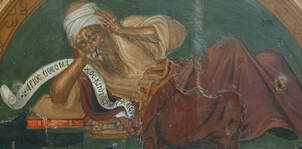 Imagined portrait of Arius; detail of a Cretan School icon, c. 1591, depicting the First Council of Nicaea.
Imagined portrait of Arius; detail of a Cretan School icon, c. 1591, depicting the First Council of Nicaea.
* Little of Arius's own work survives except in quotations selected for polemical purposes by his opponents, and there is no certainty about what theological and philosophical traditions formed his thought.
Arianism taught that the Logos was a divine being begotten by God the Father before the creation of the world, made him a medium through whom everything else was created, and that the Son of God is subordinate to God the Father. A verse from Proverbs was also used: "The Lord created me at the beginning of his work.” Therefore, the Son was rather the very first and the most perfect of God's creatures, and he was made "God" only by the Father's permission and power.
Arians do not believe in the traditional doctrine of the Trinity. The letter of the Arian bishop Auxentius of Durostorum regarding the Arian missionary Ulfilas gives a picture of Arian beliefs. The Arian Ulfilas, who was ordained a bishop by the Arian bishop Eusebius of Nicomedia and returned to his people to work as a missionary, believed: God, the Father, ("unbegotten" God; Almighty God) always existing and who is the only true God.[John 17:3] The Son of God, Jesus Christ, ("only-begotten God"[John 1:18]), Mighty God;[Isaiah 9:6] begotten before time began[Proverbs 8:22–29], [Revelation 3:14], [Colossians 1:15] and who is Lord/Master.[1 Corinthians 8:6] The Holy Spirit (the illuminating and sanctifying power, who is neither God the Father nor Lord/Master).
Arianism taught that the Logos was a divine being begotten by God the Father before the creation of the world, made him a medium through whom everything else was created, and that the Son of God is subordinate to God the Father. A verse from Proverbs was also used: "The Lord created me at the beginning of his work.” Therefore, the Son was rather the very first and the most perfect of God's creatures, and he was made "God" only by the Father's permission and power.
Arians do not believe in the traditional doctrine of the Trinity. The letter of the Arian bishop Auxentius of Durostorum regarding the Arian missionary Ulfilas gives a picture of Arian beliefs. The Arian Ulfilas, who was ordained a bishop by the Arian bishop Eusebius of Nicomedia and returned to his people to work as a missionary, believed: God, the Father, ("unbegotten" God; Almighty God) always existing and who is the only true God.[John 17:3] The Son of God, Jesus Christ, ("only-begotten God"[John 1:18]), Mighty God;[Isaiah 9:6] begotten before time began[Proverbs 8:22–29], [Revelation 3:14], [Colossians 1:15] and who is Lord/Master.[1 Corinthians 8:6] The Holy Spirit (the illuminating and sanctifying power, who is neither God the Father nor Lord/Master).
Synagogue
Guest House.
Jewish Community Center.
Jewish Community Center.
In 1746-1755 there was a synagogue on the site of the Guest House. In Yampol, the community was not as numerous as, for example, in Medzhibozh, but you can’t call it small either. Rabbi Yechezkel HaLevi (Segal) Landau was appointed the rabbi of Yampol. According to the research of Jewish historians, the famous Zolochiv magid Rabbi Ichilov Mikhla (1725-1785), whose activities extended to Brody, Zolochev and Yampol, is buried here.
Rabbi Yechezkel HaLevi (Segal) Landau
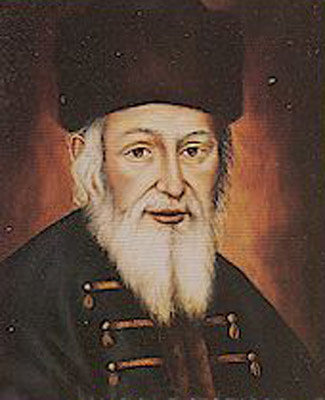 Rabbi Yechezkel HaLevi (Segal) Landau
Rabbi Yechezkel HaLevi (Segal) Landau
Most of my information about Rav Landau comes from the introductions to the second volume of Noda B’Yehuda, by his sons, Rav Shmuel, the editor, and Yaakovka, who encouraged the project and wrote a longer piece. Yechezkel Landau was born in Apta in 1713, to Yehuda, a wealthy, scholarly businessman, and Chaya, the saintly daughter of the chief rabbi of Dubnow. In Rav Yechezkel’s own introduction to the first volume, he thanks Rav Yitzchak Isaac Segal, his teacher from age 11 to 13. During his adolescence, he moved to Brody to study there. By the age of 20 or so, the community of Brody appointed him as one of its main dayanim. Rav Yechezkel stayed in that position for about a decade, after which he was appointed the rabbi of Yampol. After a decade, in 1755, he was chosen as the chief rabbi of one of the most important Jewish communities and cities in Europe, Prague.
In Prague, the Noda B’Yehuda continued his local rabbinic duties. His son praised him for not fleeing Prague before the Siege of Prague (1757) but staying and being of major help. His reputation drew many promising Talmudic students to study with him, the most famous of whom was Rav Avraham Danzig, author of Chayei Adam. He also was a major spokesman on both halachic matters and questions of the time, such as the attitude toward Moses Mendelson and the Haskala movement (while enjoying a broad base of knowledge that included sciences, the Noda B’yehuda was a strong opponent). In one of his most famous rulings, he opposed autopsies except those related to a specific urgent need.
In Prague, the Noda B’Yehuda continued his local rabbinic duties. His son praised him for not fleeing Prague before the Siege of Prague (1757) but staying and being of major help. His reputation drew many promising Talmudic students to study with him, the most famous of whom was Rav Avraham Danzig, author of Chayei Adam. He also was a major spokesman on both halachic matters and questions of the time, such as the attitude toward Moses Mendelson and the Haskala movement (while enjoying a broad base of knowledge that included sciences, the Noda B’yehuda was a strong opponent). In one of his most famous rulings, he opposed autopsies except those related to a specific urgent need.
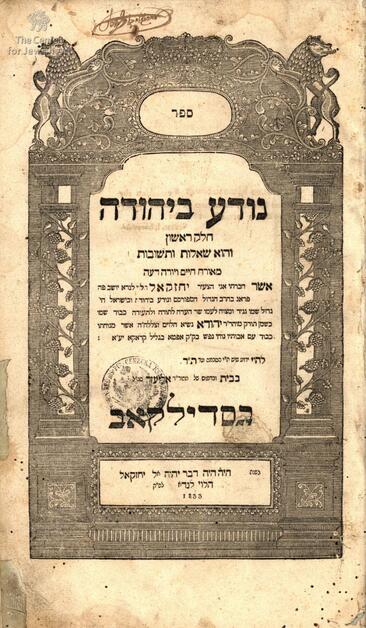 Noda be-Yehudah.
Manuscripts and Printed Books
Noda be-Yehudah.
Manuscripts and Printed Books
One of the principal sources of Jewish law of his age.
The best known work of the great halkhic authority R' Yechezkel ben Yehuda Landau (8 October 1713 – 29 April 1793), and one of the principal sources of Jewish law of his age. Famous decisions within this collection of responsa include those limiting autopsy to prevent a clear and present danger in known others. This collection was esteemed by rabbis and scholars, both for its logic and for its independence with regard to the rulings of other Acharonim as well as its simultaneous adherence to the writings of the Rishonim.
R' Landau was born in Opatów, Poland, to a family that traced its lineage back to Rashi, and attended yeshiva at Ludmir and Brody. In Brody, he was appointed dayan (rabbinical judge) in 1734, and in 1745 he became rabbi of Yampol. While in Yampol, he attempted to mediate between R' Jacob Emden and R' Jonathan Eybeschütz. His role in this famous controversy is described as "tactful" and brought him to the attention of the community of Prague—where, in 1755, he was appointed rabbi. He also established a Yeshiva there; Avraham Danzig, author of Chayei Adam, is amongst his best known students.
R' Landau was highly esteemed by his own community and many others, and stood high in favor in government circles. In addition to his rabbinical tasks, he was able to intercede with the government on various occasions when anti-Semitic measures had been introduced. Though not opposed to secular knowledge, he objected to "that culture which came from Berlin", in particular Moses Mendelssohn's translation of the Pentateuch.
The book was printed in Sudikov. Sudilkov is a town located in the Ukraine in Kamenets-Podolski region. While it was considered a lesser brother to the great printing center of Slavuta, the Sudilkov press was strong on the reissue of classics and essential works. The town was also known for its production of Talitot (prayer shawls).
Finely designed and printed title page with architectural frame. Foliate columns flank the text; above, a ornate crowned tops a cartouche, enclosed in foliage and flanked by two lions. The same frame is used on B.1381, printed in the same year by the same printer.
The best known work of the great halkhic authority R' Yechezkel ben Yehuda Landau (8 October 1713 – 29 April 1793), and one of the principal sources of Jewish law of his age. Famous decisions within this collection of responsa include those limiting autopsy to prevent a clear and present danger in known others. This collection was esteemed by rabbis and scholars, both for its logic and for its independence with regard to the rulings of other Acharonim as well as its simultaneous adherence to the writings of the Rishonim.
R' Landau was born in Opatów, Poland, to a family that traced its lineage back to Rashi, and attended yeshiva at Ludmir and Brody. In Brody, he was appointed dayan (rabbinical judge) in 1734, and in 1745 he became rabbi of Yampol. While in Yampol, he attempted to mediate between R' Jacob Emden and R' Jonathan Eybeschütz. His role in this famous controversy is described as "tactful" and brought him to the attention of the community of Prague—where, in 1755, he was appointed rabbi. He also established a Yeshiva there; Avraham Danzig, author of Chayei Adam, is amongst his best known students.
R' Landau was highly esteemed by his own community and many others, and stood high in favor in government circles. In addition to his rabbinical tasks, he was able to intercede with the government on various occasions when anti-Semitic measures had been introduced. Though not opposed to secular knowledge, he objected to "that culture which came from Berlin", in particular Moses Mendelssohn's translation of the Pentateuch.
The book was printed in Sudikov. Sudilkov is a town located in the Ukraine in Kamenets-Podolski region. While it was considered a lesser brother to the great printing center of Slavuta, the Sudilkov press was strong on the reissue of classics and essential works. The town was also known for its production of Talitot (prayer shawls).
Finely designed and printed title page with architectural frame. Foliate columns flank the text; above, a ornate crowned tops a cartouche, enclosed in foliage and flanked by two lions. The same frame is used on B.1381, printed in the same year by the same printer.
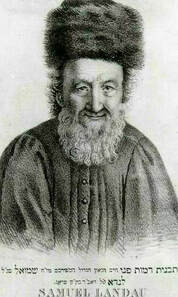 Rav Shmuel Landau
Rav Shmuel Landau
The Noda B’yehuda’s writings are a valuable part of any serious Jewish library. It is interesting that he picked titles to commemorate his parents. His work on several Talmudic tractates is named the Tzlach, abbreviation of "A Memorial for the Spirit of Chaya." His monumental work of responsa, the Noda B’Yehuda (Known in Yehuda), is named for his father. He explained that the reason that he, Yechezkel, is known, is because he is a son of the illustrious Yehuda. He published the first volume in his lifetime. According to his son, it was a most aesthetic (in addition to brilliant) volume which he paid for with his own money and that he made no effort to profit from sales. It took 17 years after his death in 1793 for the second volume to be published. As both brothers wrote, Rav Shmuel was so busy as his father’s successor in Prague that he did not get around to editing the manuscripts his father gave him. Yaakovka and others from Brody told him firmly that the Torah world would not accept further delay. This volume includes notes and some responsa of Rav Shmuel.
Yampol Bet Midrashim
Among the Yampol homes which reached about 150 in number, there stood like a giant among midgets, the Yampol Synagogue. The interior of the synagogue looked as follows: the dome of the synagogue was artistically decorated with the twelve signs of the Zodiac … two thick white columns supported the upper part of the building, the Holy Ark, rows of painted and polished benches and stands. The interior of the synagogue was very nicely arranged. The Yampol synagogue was in no way inferior to the surrounding synagogues in the largest towns nearby.At the time, the entrance and the reflecting lights were also not inferior … a narrow street separated the synagogue from the Beit Midrash and from the Trisker home of prayer. Nearby, across the street, was an Ostra home of prayer. The synagogue followed the 'Ashkenazi' way of praying, the remaining home of prayer the 'Sephardic' way.
Most of the people who prayed in the synagogue were proprietors of craft workshops, there were few aristocrats such as the paramedic, the lawyer, the representative of the 'Singer sewing machines' … smoking and drinking of liquor at a memorial service were always forbidden. The leadership and sextons in the synagogue came from the working class of people.
The majority, including butchers, shopkeepers, people working in the village, small merchants, all prayed in the Beit Midrash. In the Beit Midrash, people smoked cigarettes, drank liquor, learned Mishnayes and Shulchan Aruch. Every day three to four minyan sessions were held in the Beit Midrash, while in the synagogue there was only one in the morning and one in the evening. Often the Beit Midrash was visited by poor people from afar who stayed overnight. Homeowners used to provide them with shelter. The Beit Midrash was often visited by booksellers. They used to spread their books with large print on the table: Tchinot for lighting candles, for memorial services, for blowing the shofar … for children interesting novels and other important books. The majority of the town's people prayed in the Beit Midrash. It is a well known fact that every Jew wishes to be called to the Torah reading. Obviously it was impossible to call everyone to read the Torah so on Shabbath and the Holidays it was necessary to 'call' people to the Torah at a table, away from the bimah .. While the rich, the important homeowners were called to the Torah on the bimah, the majority the simple, poor folk, were given Torah calls at the table away from the bimah.
In the Trisker prayer home prayed Trisker, Zinkever, Ralhastrivker, and Makarever Chassidim. Here, people were deeply involved in the study of the Torah, with great devotion. Also elderly people sat in deep thought in contemplation of a difficult to understand passage or some other interesting passage.
The above mentioned Trisker prayer home was different from all other ones in Yampol because the 'Vitsmah Furnkah'[*5] was added to the Kaddish prayer in the Trisker home. In the Ostra prayer home it was forbidden to say the 'Vitsmah Furnkah.' For this reason the Hassidim were ready to break bones … in the same prayer home one could not come in wearing a straw hat.[*6] Many people were verbally abused for doing it.
In the Ostra prayer home as in the Trisker prayer home, young men and older ones, after Bar Mitzvah until they were married, as well as those who were already married and supported by their fathers-in-law, sat in the prayer rooms and learned the Torah studying to become rabbis, cantors, religious slaughterers, etc.
Yampol Synagogue Goers
Young men and small children did not need the sexton to knock on the door … by habit, by inertia, they woke up after midnight and from time to time even before midnight, to go to the synagogue where they sang: “Oy, oy, oy, said our father! Oy, oy, oy, said the rabbi!” and with heartrending envy every one of the 'students' listened to the high pitched voices of their friend who brought to the light of the world the sweet melody.The 'synagogue people' (people who studied in the synagogue) divided themselves into groups. The first group were the sons-in-law, the children of the rich father-in-law and mother-in-law. Their father bought them from purity, meaning that besides the dowry which was deposited with the town's rich man at two per cent interest a year, the father of the bride, now their father-in-law (the marriages were arranged at a very early age), was committed to fully support the son-in-law in the best of style for a good few years. On the other hand, the son-in-law was obligated to study until such time as he could get Smicha from the Alt-Kastantiner rabbi, or become a wise student of the Bible.
The second group were the young men who sat in the synagogue for a few years who were presented as a 'precious stone' to be caught by a young lady. The third group were students who just completed the Cheder, some of whom came because their father could not pay any more for the studies in the Cheder. They came to the synagogue to develop intellectually on their own.
Truly, the synagogue produced wise students and teachers, especially in the Talmud, Midrash and P'sukim. Besides the previously mentioned intellectuals, Alter r' David's and Yaacov Railes, there were two older synagogue people who are worth mentioning here. They were the first 'breakers of the fence' who pushed the youth in the direction of the light (intellectual freedom), secular knowledge. One was named Hershel from Moier (Garbarz), the second was Mosher Alter Student (Grynshpan). In addition to learning the Gemarah, they also studied other books. They learned math and algebra. They played an important role in our development. Hershel from Moier was murdered by the Nazis.* The synagogue people Hershel and Moshe were in hiding in the orchard. One was killed and the other wounded. Moshe eventually left to go to America where he is till this very day. Hershel read secular books and had a considerable influence on the young people of Yampol. The influence was so intense that many times the students used to hide secular reading materials between the pages of the interpretation of the bible.
*His influence was very good and positive. Every winter evening he had a custom of coming to the kloiz and studying the book, “Yad Chazakah” of Maimonides, as well as other philosophical works. He encouraged the boys of the kloiz to keep on studying.
Yampol Cheders
Yampol had no schools nor classes for that matter. What existed were Cheders (Sunday schools, attended by Jewish children six days a week) where Bible and Rashi and Tanach were taught.From the health point of view, all Cheders in Yampol were on the lowest level. In a room of about two or three meters, ten to twelve students learned with the rabbi. In the same room, two of the rabbi's daughters, sitting near the bed, were working on a fisherman's net from a large roll of fishing line attached to the bed. They obtained the fishing line from a merchant for whom they were working. The daughters and the craftsmen made ten kopeks each per day. So by Passover they gathered a few rubles, enough to buy for themselves a dress and a pair of shoes … something which their father could not accomplish from teaching students.
The preschool Cheders looked even worse. About eighteen to twenty students sat in a damp, dark room, with the ceiling reaching almost the top of the table … the rabbi with the small Tallit, an oily kippah on his head, with a small whip along his side, provided the children with prayer and the fundamentals of the Torah.
The Torah and Rashi Cheders did not look any better than the preschool ones and the students were not any different either. The only difference was in the fact that the rabbi's daughters were not knitting a fisherman's net but were plucking chicken feathers for the mothers of the students, making the same money as the other two daughters and working toward the same goal.
Among the Yampol homes which reached about 150 in number, there stood like a giant among midgets, the Yampol Synagogue. The interior of the synagogue looked as follows: the dome of the synagogue was artistically decorated with the twelve signs of the Zodiac … two thick white columns supported the upper part of the building, the Holy Ark, rows of painted and polished benches and stands. The interior of the synagogue was very nicely arranged. The Yampol synagogue was in no way inferior to the surrounding synagogues in the largest towns nearby.At the time, the entrance and the reflecting lights were also not inferior … a narrow street separated the synagogue from the Beit Midrash and from the Trisker home of prayer. Nearby, across the street, was an Ostra home of prayer. The synagogue followed the 'Ashkenazi' way of praying, the remaining home of prayer the 'Sephardic' way.
Most of the people who prayed in the synagogue were proprietors of craft workshops, there were few aristocrats such as the paramedic, the lawyer, the representative of the 'Singer sewing machines' … smoking and drinking of liquor at a memorial service were always forbidden. The leadership and sextons in the synagogue came from the working class of people.
The majority, including butchers, shopkeepers, people working in the village, small merchants, all prayed in the Beit Midrash. In the Beit Midrash, people smoked cigarettes, drank liquor, learned Mishnayes and Shulchan Aruch. Every day three to four minyan sessions were held in the Beit Midrash, while in the synagogue there was only one in the morning and one in the evening. Often the Beit Midrash was visited by poor people from afar who stayed overnight. Homeowners used to provide them with shelter. The Beit Midrash was often visited by booksellers. They used to spread their books with large print on the table: Tchinot for lighting candles, for memorial services, for blowing the shofar … for children interesting novels and other important books. The majority of the town's people prayed in the Beit Midrash. It is a well known fact that every Jew wishes to be called to the Torah reading. Obviously it was impossible to call everyone to read the Torah so on Shabbath and the Holidays it was necessary to 'call' people to the Torah at a table, away from the bimah .. While the rich, the important homeowners were called to the Torah on the bimah, the majority the simple, poor folk, were given Torah calls at the table away from the bimah.
In the Trisker prayer home prayed Trisker, Zinkever, Ralhastrivker, and Makarever Chassidim. Here, people were deeply involved in the study of the Torah, with great devotion. Also elderly people sat in deep thought in contemplation of a difficult to understand passage or some other interesting passage.
The above mentioned Trisker prayer home was different from all other ones in Yampol because the 'Vitsmah Furnkah'[*5] was added to the Kaddish prayer in the Trisker home. In the Ostra prayer home it was forbidden to say the 'Vitsmah Furnkah.' For this reason the Hassidim were ready to break bones … in the same prayer home one could not come in wearing a straw hat.[*6] Many people were verbally abused for doing it.
In the Ostra prayer home as in the Trisker prayer home, young men and older ones, after Bar Mitzvah until they were married, as well as those who were already married and supported by their fathers-in-law, sat in the prayer rooms and learned the Torah studying to become rabbis, cantors, religious slaughterers, etc.
Yampol Synagogue Goers
Young men and small children did not need the sexton to knock on the door … by habit, by inertia, they woke up after midnight and from time to time even before midnight, to go to the synagogue where they sang: “Oy, oy, oy, said our father! Oy, oy, oy, said the rabbi!” and with heartrending envy every one of the 'students' listened to the high pitched voices of their friend who brought to the light of the world the sweet melody.The 'synagogue people' (people who studied in the synagogue) divided themselves into groups. The first group were the sons-in-law, the children of the rich father-in-law and mother-in-law. Their father bought them from purity, meaning that besides the dowry which was deposited with the town's rich man at two per cent interest a year, the father of the bride, now their father-in-law (the marriages were arranged at a very early age), was committed to fully support the son-in-law in the best of style for a good few years. On the other hand, the son-in-law was obligated to study until such time as he could get Smicha from the Alt-Kastantiner rabbi, or become a wise student of the Bible.
The second group were the young men who sat in the synagogue for a few years who were presented as a 'precious stone' to be caught by a young lady. The third group were students who just completed the Cheder, some of whom came because their father could not pay any more for the studies in the Cheder. They came to the synagogue to develop intellectually on their own.
Truly, the synagogue produced wise students and teachers, especially in the Talmud, Midrash and P'sukim. Besides the previously mentioned intellectuals, Alter r' David's and Yaacov Railes, there were two older synagogue people who are worth mentioning here. They were the first 'breakers of the fence' who pushed the youth in the direction of the light (intellectual freedom), secular knowledge. One was named Hershel from Moier (Garbarz), the second was Mosher Alter Student (Grynshpan). In addition to learning the Gemarah, they also studied other books. They learned math and algebra. They played an important role in our development. Hershel from Moier was murdered by the Nazis.* The synagogue people Hershel and Moshe were in hiding in the orchard. One was killed and the other wounded. Moshe eventually left to go to America where he is till this very day. Hershel read secular books and had a considerable influence on the young people of Yampol. The influence was so intense that many times the students used to hide secular reading materials between the pages of the interpretation of the bible.
*His influence was very good and positive. Every winter evening he had a custom of coming to the kloiz and studying the book, “Yad Chazakah” of Maimonides, as well as other philosophical works. He encouraged the boys of the kloiz to keep on studying.
Yampol Cheders
Yampol had no schools nor classes for that matter. What existed were Cheders (Sunday schools, attended by Jewish children six days a week) where Bible and Rashi and Tanach were taught.From the health point of view, all Cheders in Yampol were on the lowest level. In a room of about two or three meters, ten to twelve students learned with the rabbi. In the same room, two of the rabbi's daughters, sitting near the bed, were working on a fisherman's net from a large roll of fishing line attached to the bed. They obtained the fishing line from a merchant for whom they were working. The daughters and the craftsmen made ten kopeks each per day. So by Passover they gathered a few rubles, enough to buy for themselves a dress and a pair of shoes … something which their father could not accomplish from teaching students.
The preschool Cheders looked even worse. About eighteen to twenty students sat in a damp, dark room, with the ceiling reaching almost the top of the table … the rabbi with the small Tallit, an oily kippah on his head, with a small whip along his side, provided the children with prayer and the fundamentals of the Torah.
The Torah and Rashi Cheders did not look any better than the preschool ones and the students were not any different either. The only difference was in the fact that the rabbi's daughters were not knitting a fisherman's net but were plucking chicken feathers for the mothers of the students, making the same money as the other two daughters and working toward the same goal.
Old Jewish Cemetery
Old Jewish cemetery in Yampol.
Cemetery Information
Country Ukraine
Region Khmelnytskyy
District Bilohiria
Settlement Yampil’
Site address Starting at the intersection at 30 Tsentral'na Street, follow the dirt road South for 100 metres.
Perimeter length 215 metres. Perimeter is approximate.
Is the cemetery demolished yes
Type and height of existing fence No fence
Preservation condition Unfenced Jewish cemetery
General site condition The cemetery site is somewhat overgrown. All preserved matzevot have toppled and are partially sunken in the ground.
Number of existing gravestones About 15. A few additional fragments were discovered around the sit.
Date of oldest tombstone 1786
Date of newest tombstone 1813
Urgency of erecting a fence High
Land ownership Other
Preserved construction on site There is an ohel (closed) dedicated to Rabbi Yehiel Mikhl from Zlochev and his son Yosele. In 2002, its foundation was restored. The key can be found in "Yampil" hotel with Rabbi Yaakov Vaysman.
Historical overview
The exact period of the cemetery’s establishment is unknown. It was not marked on an old maps. According to the epigraphic data, it already existed in the second half of the 18th century.
Country Ukraine
Region Khmelnytskyy
District Bilohiria
Settlement Yampil’
Site address Starting at the intersection at 30 Tsentral'na Street, follow the dirt road South for 100 metres.
Perimeter length 215 metres. Perimeter is approximate.
Is the cemetery demolished yes
Type and height of existing fence No fence
Preservation condition Unfenced Jewish cemetery
General site condition The cemetery site is somewhat overgrown. All preserved matzevot have toppled and are partially sunken in the ground.
Number of existing gravestones About 15. A few additional fragments were discovered around the sit.
Date of oldest tombstone 1786
Date of newest tombstone 1813
Urgency of erecting a fence High
Land ownership Other
Preserved construction on site There is an ohel (closed) dedicated to Rabbi Yehiel Mikhl from Zlochev and his son Yosele. In 2002, its foundation was restored. The key can be found in "Yampil" hotel with Rabbi Yaakov Vaysman.
Historical overview
The exact period of the cemetery’s establishment is unknown. It was not marked on an old maps. According to the epigraphic data, it already existed in the second half of the 18th century.
A bend in the River Gorin where the matzevot were recovered.
Yampol matzevot on a hillside bluff above the river where they were recovered.
An ohel dedicated to Rabbi Yehiel Mikhl from Zlochev and his son Yosele.
New Jewish cemetery.
New Jewish cemetery in Yampol.
Cemetery Information
Country Ukraine
Region Khmelnytskyy
District Bilohiria
Settlement Yampil’
Site address 15, Molodizhna Street, behind the house.
Perimeter length 402 metres
Type and height of existing fence No fence
Preservation condition Unfenced Jewish cemetery
General site condition The cemetery is located in the wood thus severely overgrown by trees and bushes.
The tombstones are hardly accessible because of excess of vegetation. Clearing and fencing are required.
Number of existing gravestones Over 50. The dense vegetation prevents an exact count.
Date of oldest tombstone 1811
Date of newest tombstone 1928
Urgency of erecting a fence High
Land ownership Property of local community
Preserved construction on site There is a closed structure, most likely an ohel.
Historical overview
The exact period of the cemetery’s establishment is unknown. The oldest tombstone’s date relates to the early 19th century so it can be assumed that the cemetery emerged during that period. It appears on an old Russian maps since 1880s. It was also marked on Polish map of 1939.
Country Ukraine
Region Khmelnytskyy
District Bilohiria
Settlement Yampil’
Site address 15, Molodizhna Street, behind the house.
Perimeter length 402 metres
Type and height of existing fence No fence
Preservation condition Unfenced Jewish cemetery
General site condition The cemetery is located in the wood thus severely overgrown by trees and bushes.
The tombstones are hardly accessible because of excess of vegetation. Clearing and fencing are required.
Number of existing gravestones Over 50. The dense vegetation prevents an exact count.
Date of oldest tombstone 1811
Date of newest tombstone 1928
Urgency of erecting a fence High
Land ownership Property of local community
Preserved construction on site There is a closed structure, most likely an ohel.
Historical overview
The exact period of the cemetery’s establishment is unknown. The oldest tombstone’s date relates to the early 19th century so it can be assumed that the cemetery emerged during that period. It appears on an old Russian maps since 1880s. It was also marked on Polish map of 1939.
Matsevs.
Holocaust
At the end of 1941, 832 Jews were killed by the Nazis in Yampol, in July 1942 another 804 people.
According to other sources, in September 1941 all the Jews were moved to the Lyakhovets ghetto, where they were shot with local Jews on July 27, 1942.
CHRONICLE OF THE HOLOCAUST IN UKRAINE 1941 - 1944
June 27, 12 Tammuz 5702 Saturday.
Кilled In Lyakhovtsy (now Belogorye) about 2300 Jews, including, apparently, 804 Jews from Yampol, Lyakhovets district and 85 Jews from Yampol, Teofipol district.
According to other sources, in September 1941 all the Jews were moved to the Lyakhovets ghetto, where they were shot with local Jews on July 27, 1942.
CHRONICLE OF THE HOLOCAUST IN UKRAINE 1941 - 1944
June 27, 12 Tammuz 5702 Saturday.
Кilled In Lyakhovtsy (now Belogorye) about 2300 Jews, including, apparently, 804 Jews from Yampol, Lyakhovets district and 85 Jews from Yampol, Teofipol district.
Family of Srul Mordkovich Segal (1759)( Sagalov tree, descendants of Itsko-Ayzik, Khaim branch)
Family of Srul Mordkovich Segal (1759)( Sagalov tree, descendants of Itsko-Ayzik, Khaim branch)
State Archive of the Ternopil region.
Revision tales about the Jews of the Volyn province. 1816
In this document of 1816, among the male Jews appears the family's of our relatives:
- Srul Mordkovich Segal, age 57, born in 1759, who lived in the shtetl of Yampol,
- Srul Mordkovich's wife - Dobrish, age 48, born in 1768,
- Srul Mordkovich's son - Yos, age 32, born in 1784,
- Yos Srulevich's wife - Freida, age 28, born in 1788,
- Yos Srulevich's daughter - Khaia-Sura, age 12, born in 1804,
- Yos Srulevich's daughter - Feiga, age 8, born in 1808.
- Srul Mordkovich's nephew - Leiba Srulevich Roid, age 40, born in 1776, died 1812.
Revision tales about the Jews of the Volyn province. 1816
In this document of 1816, among the male Jews appears the family's of our relatives:
- Srul Mordkovich Segal, age 57, born in 1759, who lived in the shtetl of Yampol,
- Srul Mordkovich's wife - Dobrish, age 48, born in 1768,
- Srul Mordkovich's son - Yos, age 32, born in 1784,
- Yos Srulevich's wife - Freida, age 28, born in 1788,
- Yos Srulevich's daughter - Khaia-Sura, age 12, born in 1804,
- Yos Srulevich's daughter - Feiga, age 8, born in 1808.
- Srul Mordkovich's nephew - Leiba Srulevich Roid, age 40, born in 1776, died 1812.
Family of Moshko-Duvid Srulevich Segal (1793)( Sagalov tree, descendants of Itsko-Ayzik, Khaim branch)
State Archive of the Ternopil region.
Revision tales about the Jews of the Volyn province. 1816
In this document of 1816, among the male Jews appears the family's of our relatives:
- Moshko-Duvid Srulevich Segal, age 18, in RT 1811, born in 1793, who lived in the shtetl of Yampol.
Revision tales about the Jews of the Volyn province. 1816
In this document of 1816, among the male Jews appears the family's of our relatives:
- Moshko-Duvid Srulevich Segal, age 18, in RT 1811, born in 1793, who lived in the shtetl of Yampol.
Family of Mordko Shaiovich Segal (1767)( Sagalov tree, descendants of Itsko-Ayzik, Khaim branch)
State Archive of the Ternopil region.
Revision tales about the Jews of the Volyn province for 1816.
In this document of 1816, among the male Jews appears the family's of our relatives:
- Mordko Shaiovich Segal, age 49, born in 1767, who lived in the shtetl of Yampol,
- Mordko Shaiovich's wife - Khana, age 48, born in 1768.
Revision tales about the Jews of the Volyn province for 1816.
In this document of 1816, among the male Jews appears the family's of our relatives:
- Mordko Shaiovich Segal, age 49, born in 1767, who lived in the shtetl of Yampol,
- Mordko Shaiovich's wife - Khana, age 48, born in 1768.
Family of Vigdor Yosevich Segal (1808) (Sagalov tree, descendants of Itsko-Ayzik, Khaim branch)
State Archive of the Ternopil region.
Revision tales about the Jews of the Volyn province. 1817
In this document of 1817, among the male Jews appears the family's of our relatives:
- Vigdor Yosevich Segal, age 9, born in 1808, who lived in the shtetl of Yampol.
Revision tales about the Jews of the Volyn province. 1817
In this document of 1817, among the male Jews appears the family's of our relatives:
- Vigdor Yosevich Segal, age 9, born in 1808, who lived in the shtetl of Yampol.
Family of Benjamin Moshkovich Segal (1781) (Sagalov tree, descendants of Itsko-Ayzik, Khaim branch)
State Archive of the Ternopil region.
Revision tales about the Jews of the Volyn province. 1816
In this document of 1816, among the male Jews appears the family's of our relatives:
- Benjamin Moshkovich Segal, age 28, born in 1788, who lived in the shtetl of Yampol, аrrived from the town of Kremenets,
- Benjamin Moshkovich's wife - Brendlia, age 30, born in 1786,
- Benjamin Moshkovich's daughter - Feiga, age 1, born in 1815.
Revision tales about the Jews of the Volyn province. 1816
In this document of 1816, among the male Jews appears the family's of our relatives:
- Benjamin Moshkovich Segal, age 28, born in 1788, who lived in the shtetl of Yampol, аrrived from the town of Kremenets,
- Benjamin Moshkovich's wife - Brendlia, age 30, born in 1786,
- Benjamin Moshkovich's daughter - Feiga, age 1, born in 1815.
Family of Yankel Moshkovich Segal (1762) (Sagalov tree, descendants of Itsko-Ayzik, Khaim branch)
State Archive of the Ternopil region.
Revision tales about the Jews of the Volyn province. 1816
In this document of 1816, among the male Jews appears the family's of our relatives:
- Yankel Moshkovich Segal, age 49 in RT 1811, born in 1762, died in 1816, who lived in the shtetl of Yampol,
- Yankel Moshkovich's wife - Khaia, age 455, born in 1771,
- Yankel Moshkovich's son - Shmul, age 16, born in 1800.
Revision tales about the Jews of the Volyn province. 1816
In this document of 1816, among the male Jews appears the family's of our relatives:
- Yankel Moshkovich Segal, age 49 in RT 1811, born in 1762, died in 1816, who lived in the shtetl of Yampol,
- Yankel Moshkovich's wife - Khaia, age 455, born in 1771,
- Yankel Moshkovich's son - Shmul, age 16, born in 1800.
Segals from Pochaev
Information from:
https://uk.wikipedia.org/wiki/%D0%9F%D0%BE%D1%87%D0%B0%D1%97%D0%B2
https://collections.yadvashem.org/en/untold-stories/community/14622346-Poczajow-Nowy
https://www.etoretro.ru/city3450.htm#z-z%7CDESC%7C1%7Cimage_date%7Call
https://uk.wikipedia.org/wiki/%D0%9F%D0%BE%D1%87%D0%B0%D1%97%D0%B2
https://collections.yadvashem.org/en/untold-stories/community/14622346-Poczajow-Nowy
https://www.etoretro.ru/city3450.htm#z-z%7CDESC%7C1%7Cimage_date%7Call
Pochaev (Poczajów).
In 1442, the Grand Duke of Lithuania Casimir IV Jagiellonchik granted the estate of Pochaiv to the Kremenets voivodeship, and in 1451 - handed it over to his servant Vasko Strilets. Subsequently, Pochaiv belonged to Mr. Berezhetski, at the beginning of the 16th century. — to the wealthy Ukrainian noble family of Hoiskyi (Hostskyi).
In 1597, the widow of the Lutsk zemstvo judge Basil Goysky, Hanna from Kozynskyi, founded the Orthodox Men's Assumption Monastery in the estate and allocated 10 tracts of land (approx. 200 hectares) and 6 families of subjects, who in the neighborhood of the village of Pochaiv (now the village of Stariy Pochaiv) started new settlement. This monastic village, later known as Monastirska Yurydika, Fundushova Yurydika, Pochaivska Yurydika, Yurydika, is the oldest part of the current city of Pochaiv.
In 1602, the Pochaiv estate was transferred from the Goyskys to the Polish noble family of the Firleys, in 1662 - to the Tarnovskys. In the 2nd half of the 17th century, the Tarnovskii besieged the village under the monastery. Novy Pochaiv, in the second half of the 18th century. - with. Birch tree.
Around 1730, the Pochaiv printing house was founded at the monastery. In 1778, Count Jan Amor Tarnovsky requested from King Stanislav Augustus Poniatovsky a privilege to settle a small town in the Pochaiv estate, which was named Novy Pochaiv.
After the 3rd division of the Polish-Lithuanian Commonwealth (1795), the territory of Pochayev was transferred to the Russian Empire. Initially, Novy Pochaiv belonged to the Dubensky District, during the next administrative and territorial delimitation, it belonged to the Kremenets District of the Volyn Province.
In 1802, the Tarnovskis mortgaged this town and the village of Berezina to the Pochaiv monastery, in 1842, by decree of the emperor, the monastery village of Yuridika and mortgaged settlements were transferred to the state property chamber, and in 1858 they were finally annexed to state estates.
Jews in Pochaev (Poczajów).
Jews settled in Poczajów in the second half of the 18th century. In 1897, under the rule of the Russian Empire, the Jewish population numbered 1,377, comprising approximately 70 percent of the town's total population. Local Jews made their living mainly from small trade (renting rooms, selling religious articles, etc.), i.e., in work associated with the local monastery the Ławra Poczajowska. They also engaged in handicrafts and smuggling goods to nearby Austrian Galicia.
The local monastery, however, was also a source of anti-Jewish agitation. In September 1915, during World War I, the Jewish residents of the town were deported by the conquering Austrian army. They returned in 1918 and found the town half in ruins. After World War I Poczajów was incorporated into the independent Polish State. In 1921 the Jewish population stood at 1,083 or 46.7 percent of total town's population. In the interwar years the Jews of the town were merchants, dealing in food and textiles, or petty manufacturers. The town had a Hebrew-language Tarbut school (that operated a library), a yeshiva and, for a short time, a Talmud Torah. Zionist organizations, and especially their youth movements (such as "HeHalutz", 'HaShomer HaTzair" and 'Beitar") were active in Poczajów. In September 1939, with the arrival of the Red Army in the town, following the Ribbentrop-Molotov Pact, Poczajów became part of Soviet Ukraine. It is estimated that by mid-1941 there were about 1,300 Jews living in Poczajów. After the beginning of Operation Barbarossa on June 22, 1941 several dozen Jewish men were drafted into the Red Army, while a number of other Jews were able to escape to the east. Apparently over 1,000 Jews came under German occupation when Poczajów was captured on June 30, 1941. The Germans immediately began to confiscate Jewish property and to demand a high ransom from the Jewish residents of the town. On July 8, 1941 120 (or 106) Jewish men were shot to death by a German unit in the forest outside the town, near Belaya Gora. In the same month, ten young Jews accused of being Communists were arrested, and a high ransom was demanded from the Jewish community. However, after the money had been paid, it was discovered that the ten had already been shot to death near the Jewish cemetery and buried at the local animal burial ground.
In the summer of 1941 a Judenrat (Jewish council) consisting of 12 members and a Jewish police force were established in the town. Jews were required to wear a distinctive symbol (the Star of David). They were compelled to engage in forced labor, were forbidden to leave the town, and were subjected to systematic robbery and beating by the Ukrainian auxiliary police. In addition, an order was issued to establish -- for the Germans -- a brothel that employed young Jewish girls. However, after the authorities were bribed, the Germans revoked this order.
In January 1942 a ghetto, surrounded by a 2-meter-high wooden fence topped by barbed wire, was set up in the town. The ghetto suffered from overcrowding . There was also a severe shortage of water since the well was situated outside the ghetto and the Jews were allowed to pump water only for two hours a day. To prevent Jews from smuggling food into the ghetto, there were Ukrainian guards outside the ghetto and the Jewish police inside. Several hundred Jewish men performed forced labor daily, usually working on road construction or cleaning vacated Jewish houses. Despite strict regulations to the contrary, Jews were able to obtain food from local peasants in exchange for clothing or other items. On one occasion, 40 Jews who were working near the town paid the guard to let them into the town to forage for food. Ukrainian auxiliary policemen caught them and took them to a German official who then selected 19 of the youngest people and ordered the Judenrat to dig a grave in which the victims were subsequently buried alive. After the Germans denied the ghetto further bread rations, the Jews formed a committee that collected money from those who still had some and set up a soup kitchen.
Apparently on August 12, (or on September 7) 1942 the ghetto of Póczajow was liquidated when most of its inmates were shot to death by an SD squad several hundred meters from the town center, at an anti-tank trench on Lipovaya Street. During the following days those who managed to hide during this mass murder operation were captured by the Gendarmerie and Ukrainian auxiliary police and shot to death at the Jewish cemetery. Apparently in October, about 30 Jewish craftsmen who had been kept alive for various tasks, such as road constructions, were also shot to death at the Jewish cemetery, after they had finished their assigned work.
Poczajów was liberated by the Red Army on March 19, 1944.
In 1442, the Grand Duke of Lithuania Casimir IV Jagiellonchik granted the estate of Pochaiv to the Kremenets voivodeship, and in 1451 - handed it over to his servant Vasko Strilets. Subsequently, Pochaiv belonged to Mr. Berezhetski, at the beginning of the 16th century. — to the wealthy Ukrainian noble family of Hoiskyi (Hostskyi).
In 1597, the widow of the Lutsk zemstvo judge Basil Goysky, Hanna from Kozynskyi, founded the Orthodox Men's Assumption Monastery in the estate and allocated 10 tracts of land (approx. 200 hectares) and 6 families of subjects, who in the neighborhood of the village of Pochaiv (now the village of Stariy Pochaiv) started new settlement. This monastic village, later known as Monastirska Yurydika, Fundushova Yurydika, Pochaivska Yurydika, Yurydika, is the oldest part of the current city of Pochaiv.
In 1602, the Pochaiv estate was transferred from the Goyskys to the Polish noble family of the Firleys, in 1662 - to the Tarnovskys. In the 2nd half of the 17th century, the Tarnovskii besieged the village under the monastery. Novy Pochaiv, in the second half of the 18th century. - with. Birch tree.
Around 1730, the Pochaiv printing house was founded at the monastery. In 1778, Count Jan Amor Tarnovsky requested from King Stanislav Augustus Poniatovsky a privilege to settle a small town in the Pochaiv estate, which was named Novy Pochaiv.
After the 3rd division of the Polish-Lithuanian Commonwealth (1795), the territory of Pochayev was transferred to the Russian Empire. Initially, Novy Pochaiv belonged to the Dubensky District, during the next administrative and territorial delimitation, it belonged to the Kremenets District of the Volyn Province.
In 1802, the Tarnovskis mortgaged this town and the village of Berezina to the Pochaiv monastery, in 1842, by decree of the emperor, the monastery village of Yuridika and mortgaged settlements were transferred to the state property chamber, and in 1858 they were finally annexed to state estates.
Jews in Pochaev (Poczajów).
Jews settled in Poczajów in the second half of the 18th century. In 1897, under the rule of the Russian Empire, the Jewish population numbered 1,377, comprising approximately 70 percent of the town's total population. Local Jews made their living mainly from small trade (renting rooms, selling religious articles, etc.), i.e., in work associated with the local monastery the Ławra Poczajowska. They also engaged in handicrafts and smuggling goods to nearby Austrian Galicia.
The local monastery, however, was also a source of anti-Jewish agitation. In September 1915, during World War I, the Jewish residents of the town were deported by the conquering Austrian army. They returned in 1918 and found the town half in ruins. After World War I Poczajów was incorporated into the independent Polish State. In 1921 the Jewish population stood at 1,083 or 46.7 percent of total town's population. In the interwar years the Jews of the town were merchants, dealing in food and textiles, or petty manufacturers. The town had a Hebrew-language Tarbut school (that operated a library), a yeshiva and, for a short time, a Talmud Torah. Zionist organizations, and especially their youth movements (such as "HeHalutz", 'HaShomer HaTzair" and 'Beitar") were active in Poczajów. In September 1939, with the arrival of the Red Army in the town, following the Ribbentrop-Molotov Pact, Poczajów became part of Soviet Ukraine. It is estimated that by mid-1941 there were about 1,300 Jews living in Poczajów. After the beginning of Operation Barbarossa on June 22, 1941 several dozen Jewish men were drafted into the Red Army, while a number of other Jews were able to escape to the east. Apparently over 1,000 Jews came under German occupation when Poczajów was captured on June 30, 1941. The Germans immediately began to confiscate Jewish property and to demand a high ransom from the Jewish residents of the town. On July 8, 1941 120 (or 106) Jewish men were shot to death by a German unit in the forest outside the town, near Belaya Gora. In the same month, ten young Jews accused of being Communists were arrested, and a high ransom was demanded from the Jewish community. However, after the money had been paid, it was discovered that the ten had already been shot to death near the Jewish cemetery and buried at the local animal burial ground.
In the summer of 1941 a Judenrat (Jewish council) consisting of 12 members and a Jewish police force were established in the town. Jews were required to wear a distinctive symbol (the Star of David). They were compelled to engage in forced labor, were forbidden to leave the town, and were subjected to systematic robbery and beating by the Ukrainian auxiliary police. In addition, an order was issued to establish -- for the Germans -- a brothel that employed young Jewish girls. However, after the authorities were bribed, the Germans revoked this order.
In January 1942 a ghetto, surrounded by a 2-meter-high wooden fence topped by barbed wire, was set up in the town. The ghetto suffered from overcrowding . There was also a severe shortage of water since the well was situated outside the ghetto and the Jews were allowed to pump water only for two hours a day. To prevent Jews from smuggling food into the ghetto, there were Ukrainian guards outside the ghetto and the Jewish police inside. Several hundred Jewish men performed forced labor daily, usually working on road construction or cleaning vacated Jewish houses. Despite strict regulations to the contrary, Jews were able to obtain food from local peasants in exchange for clothing or other items. On one occasion, 40 Jews who were working near the town paid the guard to let them into the town to forage for food. Ukrainian auxiliary policemen caught them and took them to a German official who then selected 19 of the youngest people and ordered the Judenrat to dig a grave in which the victims were subsequently buried alive. After the Germans denied the ghetto further bread rations, the Jews formed a committee that collected money from those who still had some and set up a soup kitchen.
Apparently on August 12, (or on September 7) 1942 the ghetto of Póczajow was liquidated when most of its inmates were shot to death by an SD squad several hundred meters from the town center, at an anti-tank trench on Lipovaya Street. During the following days those who managed to hide during this mass murder operation were captured by the Gendarmerie and Ukrainian auxiliary police and shot to death at the Jewish cemetery. Apparently in October, about 30 Jewish craftsmen who had been kept alive for various tasks, such as road constructions, were also shot to death at the Jewish cemetery, after they had finished their assigned work.
Poczajów was liberated by the Red Army on March 19, 1944.
Map of Pochaev
Map of Pochaev 1925.
Pochaev business directory. 1913.
Photos of Pochaev
Pochaiv. Panorama from the bird's eye view.
Pochaev. Photo of Genrik Poddevsky.
Synagogue
Jews settled in Pochaiv in the 17th century. In 1768, about 100 Jews lived in there. Jews were mostly engaged in pilgrim trade. By this time, local Hevra Kadisha assisted Jewish converts to reconvert to Judaism and sent them to the Austrian Empire.
A synagogue and a Beit-Midrash were in operation.
The gravestones from the cemetery was used to rebuild a synagogue to a soviet school. The remnants of the gravestones are located on the synagogue ruins site.
A synagogue and a Beit-Midrash were in operation.
The gravestones from the cemetery was used to rebuild a synagogue to a soviet school. The remnants of the gravestones are located on the synagogue ruins site.
Jewish Cemetery
Jewish Cemetery
Demolished and overbuilt Jewish cemetery.
The cemetery is located on the crossroads of Rozhka and Doroshenka Streets.
The northern part of the cemetery site is overbuilt with the factory buildings. The factory is closed. The southern part of the cemetery site is in use for cattle grazing. The gravestones from the site was used to rebuild a synagogue to a school. The remnants of the gravestones are located on the synagogue ruins site.
The northern part of the cemetery site is overbuilt with the factory buildings. The factory is closed. The southern part of the cemetery site is in use for cattle grazing. The gravestones from the site was used to rebuild a synagogue to a school. The remnants of the gravestones are located on the synagogue ruins site.
Holocaust
Holocaust
Apparently on July 8, 1941, a Security Police unit arrived in Poczajów and arrested 120 (or 106, according to other testimony) Jewish men, including the rabbi of Poczajów Eliezer Urecki, and imprisoned them in the cellar of the police station. While being kept there, the Jewish men were cruelly beaten. Of these arrested men 30 were selected and taken, under the heavy guard of Ukrainian auxiliary police and several German soldiers, with shovels, toward the forest near Belaya Gora, located 3 kilometers from Poczajów in the direction of the town of Krzemieniec. Upon their arrival, the Germans ordered these men to dig a pit ostensibly for burying dead German horses. At 2 p.m. (or, according to other testimony, in the evening) the chief of the Ukrainian auxiliary police Iosif Myslynskyi, together with a Security Police unit and Gendarmerie men (German rural order police) forced the remaining arrestees to the pit. After their arrival at the pit, the victims, including those 30 who had dug the pit, were ordered to lie down. They were then shot to death with machine-guns in the back of the head by members of the Security Police unit. The shooting lasted about two hours.
The Jewish mass grave was dug in 1942 with last known Jewish burial was 1943. No other towns or villages' Jews were murdered in this unlandmarked mass grave. Between fields and woods, isolated hillside and crown of a hill has no sign or marker. Reached by turning directly off a public road, access is open to all with no wall, gate, or fence. No stones are visible. The site contains unmarked mass graves. Municipality owns site used for mass burial site. Properties adjacent are agricultural. Rarely, local residents visit. The mass grave was not vandalized in the last ten years with no maintenance. Within the limits of the site are no structures.
CHRONICLE OF THE HOLOCAUST IN UKRAINE 1941 - 1944
3rd August (20 Av 5702 Monday)
In Pochaev (Ternopil region), the SD team, with the participation of the German gendarmerie and the Ukrainian police, shot 794 Jews (182 men, 374 women and 238 children).
In September, they were also killed:
In Shumsky, Vyshnevets and Pochaev (Ternopil region), respectively, 242, 200-300 and several hundred Jews.
Tombstone List.
Pochaev Jews who lived before the Holocaust.
Samech (The fifteenth letter of the Hebrew alphabet)
Sosenke Khayim-Yona
Sosenke Shaya
Soyvel Yitskhak
Soyvel Sarah
Segal Yaakov
Skolski Yisrael
Skolski Moshe
Skolski Moshe-Mikhal
The Jewish mass grave was dug in 1942 with last known Jewish burial was 1943. No other towns or villages' Jews were murdered in this unlandmarked mass grave. Between fields and woods, isolated hillside and crown of a hill has no sign or marker. Reached by turning directly off a public road, access is open to all with no wall, gate, or fence. No stones are visible. The site contains unmarked mass graves. Municipality owns site used for mass burial site. Properties adjacent are agricultural. Rarely, local residents visit. The mass grave was not vandalized in the last ten years with no maintenance. Within the limits of the site are no structures.
CHRONICLE OF THE HOLOCAUST IN UKRAINE 1941 - 1944
3rd August (20 Av 5702 Monday)
In Pochaev (Ternopil region), the SD team, with the participation of the German gendarmerie and the Ukrainian police, shot 794 Jews (182 men, 374 women and 238 children).
In September, they were also killed:
In Shumsky, Vyshnevets and Pochaev (Ternopil region), respectively, 242, 200-300 and several hundred Jews.
Tombstone List.
Pochaev Jews who lived before the Holocaust.
Samech (The fifteenth letter of the Hebrew alphabet)
Sosenke Khayim-Yona
Sosenke Shaya
Soyvel Yitskhak
Soyvel Sarah
Segal Yaakov
Skolski Yisrael
Skolski Moshe
Skolski Moshe-Mikhal
Family of Mordko Meerovich Segal (1796)( Sagalov tree, descendants of Itsko-Ayzik, Khaim Branch)
State Archive of the Ternopil region.
Revision tales about the Jews of the Volyn province. 1816
In this document of 1816, among the male Jews appears the family's of our relatives:
- Mordko Meerovich Segal, age 20, born in 1796, who lived in the shtetl of Pochaev,
- Mordko Meerovich's wife - Rifka, age 20, born in 1796,
- Mordko Meerovich's daughter - Leia-Basia, age 3, born in 1813.
Revision tales about the Jews of the Volyn province. 1816
In this document of 1816, among the male Jews appears the family's of our relatives:
- Mordko Meerovich Segal, age 20, born in 1796, who lived in the shtetl of Pochaev,
- Mordko Meerovich's wife - Rifka, age 20, born in 1796,
- Mordko Meerovich's daughter - Leia-Basia, age 3, born in 1813.
Segals from Vishgorodok
Information from:
www.jewishgen.org/yizkor/pinkas_poland/pol5_00081.html
https://he.wikipedia.org/wiki/%D7%95%D7%99%D7%A9%D7%92%D7%A8%D7%95%D7%93%D7%A7
https://kehilalinks.jewishgen.org/vyshgorodok/default.html
Vyshgorodok (Polish Vyshgrodek, Ukrainian : Вишгородок , Вышхородок; Polish : Wyszogródek ; Yiddish :Вижгарадек ) is a village in Ternopil District in western Ukraine , where a large Jewish community existed until the Holocaust.
The first time Vyshgorodok is mentioned is 1481. Then, it belonged to the aristocratic Zbaraski family. Later it was owned by the Pototski family, then the Chatski family, and later other families.
Apparently, it began to develop into a large settlement at the beginning of the 19th century. At that time, the border between Russia and Austria was established nearby, after the second partition of Poland. The townspeople made a living by supplying services and living quarters to merchants traveling from country to country, and also from smuggling. After railroad tracks for the Rovno-Lemberg train were laid far from the town, Vyshgorodok's development came to a halt.
At the end of the 19th century, Jews composed about half of the town's population. It had a synagogue and a few study halls. Most of the Jews were Hasidim. Though mainly Trisk, there were a few Hasidim from the Galician sects. On the eve of World War I, a Zionist Organization was established there. During the civil war, rioting Ukrainian gangs were active in the area. Fearing them, most of the town's Jews left and moved to Kremenets and other towns in the area. When the Polish regime stabilized, only some of the Jews returned.
Between the Two World Wars.
In the 1921 census, it is clear that most of Vyshgorodok's residents were Jews. Their numbers were reduced because many did not return and also because of emigration. The Jews dealt in small businesses and crafts; some traveled throughout the villages in the area with their merchandise or tools. In town were a Great Synagogue, two Talmudic schools, and a small Hasidic synagogue. R' Meir Frenkel, who was the rabbi, perished in the Holocaust. A Tarbut Hebrew school was there from the mid-1920s. It served as a cultural center, where evening classes for adults were held. It had a public library and a reading room, where literary evenings, lectures, and amateur drama club performances took place.
In the social arena, Zionist parties stood out. There was great competition between the General Zionist and the Union factions, the members of which were small businessmen and craftsmen. Among the youth movements, the standouts were Youth Guard (since the 1920s); Pioneer, some of whose members immigrated to Israel; and Betar.
In 1939, the Soviets arrived in the Province of Volhynia, occupying its towns and villages. A cynical pact – termed the Molotov-Ribbentrop Non-Aggression Pact – sealed by Hitler and Stalin led to the dismemberment of the twenty-year-old nation of Poland. Just two years later, the Soviet Union and Nazi Germany were at war; Hitler abrogated the non-aggression pact in June 1941 by invading Soviet territory.
The Nazis were in Volhynia Province the following month – July 1941. By March 1942 the Nazis and their minions had established a sealed ghetto in Vishnevets, fifteen miles (25 km.) northwest of Vyshgorodok. Immediately, Jews from around the region, including Jews from Vyshgorodok, were herded into the ghetto by the Germans; Ukrainian collaborators policed the ghetto. August eighth saw Ukrainian policemen firing on ghetto residents, killing dozens. Three days later, on 11 August 1942, 2,669 Jews in the Vishnevets Ghetto – 600 men; 1,160 women; and 909 children – were led out of town and murdered. By November 1942 the Vishnevets Ghetto had been liquidated; Vishnevets was Juden frei.
www.jewishgen.org/yizkor/pinkas_poland/pol5_00081.html
https://he.wikipedia.org/wiki/%D7%95%D7%99%D7%A9%D7%92%D7%A8%D7%95%D7%93%D7%A7
https://kehilalinks.jewishgen.org/vyshgorodok/default.html
Vyshgorodok (Polish Vyshgrodek, Ukrainian : Вишгородок , Вышхородок; Polish : Wyszogródek ; Yiddish :Вижгарадек ) is a village in Ternopil District in western Ukraine , where a large Jewish community existed until the Holocaust.
The first time Vyshgorodok is mentioned is 1481. Then, it belonged to the aristocratic Zbaraski family. Later it was owned by the Pototski family, then the Chatski family, and later other families.
Apparently, it began to develop into a large settlement at the beginning of the 19th century. At that time, the border between Russia and Austria was established nearby, after the second partition of Poland. The townspeople made a living by supplying services and living quarters to merchants traveling from country to country, and also from smuggling. After railroad tracks for the Rovno-Lemberg train were laid far from the town, Vyshgorodok's development came to a halt.
At the end of the 19th century, Jews composed about half of the town's population. It had a synagogue and a few study halls. Most of the Jews were Hasidim. Though mainly Trisk, there were a few Hasidim from the Galician sects. On the eve of World War I, a Zionist Organization was established there. During the civil war, rioting Ukrainian gangs were active in the area. Fearing them, most of the town's Jews left and moved to Kremenets and other towns in the area. When the Polish regime stabilized, only some of the Jews returned.
Between the Two World Wars.
In the 1921 census, it is clear that most of Vyshgorodok's residents were Jews. Their numbers were reduced because many did not return and also because of emigration. The Jews dealt in small businesses and crafts; some traveled throughout the villages in the area with their merchandise or tools. In town were a Great Synagogue, two Talmudic schools, and a small Hasidic synagogue. R' Meir Frenkel, who was the rabbi, perished in the Holocaust. A Tarbut Hebrew school was there from the mid-1920s. It served as a cultural center, where evening classes for adults were held. It had a public library and a reading room, where literary evenings, lectures, and amateur drama club performances took place.
In the social arena, Zionist parties stood out. There was great competition between the General Zionist and the Union factions, the members of which were small businessmen and craftsmen. Among the youth movements, the standouts were Youth Guard (since the 1920s); Pioneer, some of whose members immigrated to Israel; and Betar.
In 1939, the Soviets arrived in the Province of Volhynia, occupying its towns and villages. A cynical pact – termed the Molotov-Ribbentrop Non-Aggression Pact – sealed by Hitler and Stalin led to the dismemberment of the twenty-year-old nation of Poland. Just two years later, the Soviet Union and Nazi Germany were at war; Hitler abrogated the non-aggression pact in June 1941 by invading Soviet territory.
The Nazis were in Volhynia Province the following month – July 1941. By March 1942 the Nazis and their minions had established a sealed ghetto in Vishnevets, fifteen miles (25 km.) northwest of Vyshgorodok. Immediately, Jews from around the region, including Jews from Vyshgorodok, were herded into the ghetto by the Germans; Ukrainian collaborators policed the ghetto. August eighth saw Ukrainian policemen firing on ghetto residents, killing dozens. Three days later, on 11 August 1942, 2,669 Jews in the Vishnevets Ghetto – 600 men; 1,160 women; and 909 children – were led out of town and murdered. By November 1942 the Vishnevets Ghetto had been liquidated; Vishnevets was Juden frei.
Year General Population Jews
1847 ? 1,018
1897 2,169 1,078
1921 976 944
1847 ? 1,018
1897 2,169 1,078
1921 976 944
Map of Vyshgorodok
Map of Vyshgorodok 1915.
Vyshgorodok business directory. 1913.
Photos of Vyshgorodok
Vyshgorodok. The location of the town's supermarket and bus stop had been the site of Synagogue, Jewish houses and stores.
Former Jewish Street.
Synagogue
M. Maliborskyi - Ukrainian composer, conductor, teacher, born in the village of Vyshgorodok, described it as follows:
"In the 20s and 30s of the 20th century, there was a market here with a town hall...; below the river мarket square; ... Adjacent to the market was a beautifully painted synagogue - the pride of the Jewish population, shop owners, tailors, and carpenters. Under the market there were large cellars, about which legends circulated among people. ..."
"In the 20s and 30s of the 20th century, there was a market here with a town hall...; below the river мarket square; ... Adjacent to the market was a beautifully painted synagogue - the pride of the Jewish population, shop owners, tailors, and carpenters. Under the market there were large cellars, about which legends circulated among people. ..."
Jewish Cemetery
Old Jewish Cemetery.
Jewish Cemetery
Old Jewish Cemetery.
Old Jewish Cemetery.
Old Jewish Cemetery.
The cemetery is located opposite the house at 21, Shevchenka Street. The cemetery has a fence installed in October 2020 by ESJF.
The exact period of the cemetery’s establishment is unknown. According to the dates on preserved gravestones, it can be assumed that the cemetery already existed in the first part of the 18th century.
General site condition .......................................The cemetery is well-maintained by the local municipal service. The fence is in excellent condition.
Number of existing gravestones................15
Date of oldest tombstone ..............................1736 (oldest found by ESJF expedition)
Date of newest tombstone............................1810 (latest found by ESJF expedition)
The cemetery is located opposite the house at 21, Shevchenka Street. The cemetery has a fence installed in October 2020 by ESJF.
The exact period of the cemetery’s establishment is unknown. According to the dates on preserved gravestones, it can be assumed that the cemetery already existed in the first part of the 18th century.
General site condition .......................................The cemetery is well-maintained by the local municipal service. The fence is in excellent condition.
Number of existing gravestones................15
Date of oldest tombstone ..............................1736 (oldest found by ESJF expedition)
Date of newest tombstone............................1810 (latest found by ESJF expedition)
New Jewish Cemetery.
New Jewish Cemetery.
New Jewish Cemetery.
To reach the cemetery, turn to the dirt road opposite the house 39 on the main street. Proceed for about 160 metres. Turn left to the field road. Proceed for about 200 metres. The cemetery is located in the woods on the left of the road.
The cemetery has a fence installed in October 2020 by ESJF.
Presumably, there are ruins of a beit-tahara in the north-eastern part of the cemetery.
The exact period of the cemetery’s establishment is unknown, but according to the dates on the preserved gravestones, it already existed at the beginning of the 20th century. First, it appears on Russian maps of 1890s.
Number of existing gravestones............................................Around 500
Date of oldest tombstone..........................................................1902 (oldest found by ESJF expedition)
Date of newest tombstone........................................................1938 (latest found by ESJF expedition)
To reach the cemetery, turn to the dirt road opposite the house 39 on the main street. Proceed for about 160 metres. Turn left to the field road. Proceed for about 200 metres. The cemetery is located in the woods on the left of the road.
The cemetery has a fence installed in October 2020 by ESJF.
Presumably, there are ruins of a beit-tahara in the north-eastern part of the cemetery.
The exact period of the cemetery’s establishment is unknown, but according to the dates on the preserved gravestones, it already existed at the beginning of the 20th century. First, it appears on Russian maps of 1890s.
Number of existing gravestones............................................Around 500
Date of oldest tombstone..........................................................1902 (oldest found by ESJF expedition)
Date of newest tombstone........................................................1938 (latest found by ESJF expedition)
Holocaust
The Germans conquered Vyshgorodok in early July 1941. On March 16, 1942, when a ghetto was erected in nearby Vishnevets, the Jews of Vyshgorodok were moved there. On August 11, 1942, the Jews of Vyshgorodok and Vishnevets were murdered, and only a few survived (see the article about Vishnevets).
CHRONICLE OF THE HOLOCAUST IN UKRAINE 1941 - 1944
March 16th (27 Adar 5702) Monday.
A ghetto was created in Vishnevets (Ternopil region).
August 1st (18 Av, 5702) Saturday.
In Vishnevets (Ternopil region), a team of SD, with the participation of the German gendarmerie and the Ukrainian police, shot 1,500 Jews.
August 2nd (19 Av, 5702) Sunday.
The SD team shot another 800 Jews in Vyshnevets.
August 11th (28 Av, 5702) Tuesday.
About 400 more Jews were killed in Vyshnevets, bringing the number of Jews killed in Vyshnevets to 2,669 (600 men, 1,160 women, and 909 children).
CHRONICLE OF THE HOLOCAUST IN UKRAINE 1941 - 1944
March 16th (27 Adar 5702) Monday.
A ghetto was created in Vishnevets (Ternopil region).
August 1st (18 Av, 5702) Saturday.
In Vishnevets (Ternopil region), a team of SD, with the participation of the German gendarmerie and the Ukrainian police, shot 1,500 Jews.
August 2nd (19 Av, 5702) Sunday.
The SD team shot another 800 Jews in Vyshnevets.
August 11th (28 Av, 5702) Tuesday.
About 400 more Jews were killed in Vyshnevets, bringing the number of Jews killed in Vyshnevets to 2,669 (600 men, 1,160 women, and 909 children).
Family of Khaim Leizerovich Segal (1787)( Sagalov tree, descendants of Itsko-Ayzik, Khaim Branch)
State Archive of the Ternopil region.
Revision tales about the Jews of the Volyn province. 1823
In this document of 1823, among the male Jews appears the family's of our relatives:
- Khaim Leizerovich Segal, age 36, born in 1787, who lived in the shtetl of Vyshgorodok,
- Khaim Leizerovich's son - Abramko, age 18, born in 1805,
- Khaim Leizerovich's wife - Freida, age 35, born in 1788,
- Khaim Leizerovich's daughter - India, age 13, born in 1810,
- Khaim Leizerovich's daughter - Malka, age 6, born in 1817,
- Khaim Leizerovich's daughter - Feiga, age 3, born in 1820.
Revision tales about the Jews of the Volyn province. 1823
In this document of 1823, among the male Jews appears the family's of our relatives:
- Khaim Leizerovich Segal, age 36, born in 1787, who lived in the shtetl of Vyshgorodok,
- Khaim Leizerovich's son - Abramko, age 18, born in 1805,
- Khaim Leizerovich's wife - Freida, age 35, born in 1788,
- Khaim Leizerovich's daughter - India, age 13, born in 1810,
- Khaim Leizerovich's daughter - Malka, age 6, born in 1817,
- Khaim Leizerovich's daughter - Feiga, age 3, born in 1820.
Segal Additional Records
Content
ABRAM SUB-BRANCH (SAGALOV TREE, DESCENDANTS OF ITSKO-AYZIK, KHAIM BRANCH)
SEGALS FROM KATERINOVKA
MEER SUB-SUB-BRANCH (SAGALOV TREE, DESCENDANTS OF ITSKO-AYZIK, KHAIM BRANCH)
OVSHIA SUB-SUB-BRANCH (SAGALOV TREE, DESCENDANTS OF ITSKO-AYZIK, KHAIM BRANCH)
SEGALS FROM ANNOPOL
SHMUL SUB-SUB-BRANCH (SAGALOV TREE, DESCENDANTS OF ITSKO-AYZIK, KHAIM BRANCH)
SEGALS FROM RADIVILOV
SEGALS FROM SHUMSK
MORDKO SUB-SUB-BRANCH (SAGALOV TREE, DESCENDANTS OF ITSKO-AYZIK, KHAIM BRANCH)
SEGALS FROM KREMENETS
SEGALS FROM VYSHNIVETS
SEGALS FROM YAMPOL
SEGALS FROM POCHAEV
SEGALS FROM VISHGORODOK
ABRAM SUB-BRANCH (SAGALOV TREE, DESCENDANTS OF ITSKO-AYZIK, KHAIM BRANCH)
SEGALS FROM KATERINOVKA
MEER SUB-SUB-BRANCH (SAGALOV TREE, DESCENDANTS OF ITSKO-AYZIK, KHAIM BRANCH)
OVSHIA SUB-SUB-BRANCH (SAGALOV TREE, DESCENDANTS OF ITSKO-AYZIK, KHAIM BRANCH)
SEGALS FROM ANNOPOL
SHMUL SUB-SUB-BRANCH (SAGALOV TREE, DESCENDANTS OF ITSKO-AYZIK, KHAIM BRANCH)
SEGALS FROM RADIVILOV
SEGALS FROM SHUMSK
MORDKO SUB-SUB-BRANCH (SAGALOV TREE, DESCENDANTS OF ITSKO-AYZIK, KHAIM BRANCH)
SEGALS FROM KREMENETS
SEGALS FROM VYSHNIVETS
SEGALS FROM YAMPOL
SEGALS FROM POCHAEV
SEGALS FROM VISHGORODOK
Content
INTRODUCTION
OUR ANCESTORS UP TO THE 18TH CENTURY
SAGALOV FAMILY IN UKRAINE
DESCENDANTS OF ITSKO-AYZIK SEGAL
KHAIM BRANCH (SAGALOV TREE, DESCENDANTS OF ITSKO-AYZIK)
AYZIK SUB-BRANCH (SAGALOV TREE, DESCENDANTS OF ITSKO-AYZIK, KHAIM BRANCH)
ABRAM SUB-BRANCH (SAGALOV TREE, DESCENDANTS OF ITSKO-AYZIK, KHAIM BRANCH)
SEGALS FROM KATERINOVKA
MEER SUB-SUB-BRANCH (SAGALOV TREE, DESCENDANTS OF ITSKO-AYZIK, KHAIM BRANCH)
OVSHIA SUB-SUB-BRANCH (SAGALOV TREE, DESCENDANTS OF ITSKO-AYZIK, KHAIM BRANCH)
SEGALS FROM ANNOPOL
SHMUL SUB-SUB-BRANCH (SAGALOV TREE, DESCENDANTS OF ITSKO-AYZIK, KHAIM BRANCH)
SEGALS FROM RADIVILOV
SEGALS FROM SHUMSK
MORDKO SUB-SUB-BRANCH (SAGALOV TREE, DESCENDANTS OF ITSKO-AYZIK, KHAIM BRANCH)
SEGALS FROM KREMENETS
SEGALS FROM VYSHNIVETS
SEGALS FROM YAMPOL
SEGALS FROM POCHAEV
SEGALS FROM VISHGORODOK
MOSHKO SUB-BRANCH (SAGALOV TREE, DESCENDANTS OF ITSKO-AYZIK, KHAIM BRANCH)
SHLOMA SUB-SUB-BRANCH (SAGALOV TREE, DESCENDANTS OF ITSKO-AYZIK, KHAIM BRANCH, MOSHKO SUB-BRANCH)
LEIB SUB-SUB-BRANCH (SAGALOV TREE, DESCENDANTS OF ITSKO-AYZIK, KHAIM BRANCH, MOSHKO SUB-BRANCH)
KOS SUB-SUB-BRANCH (SAGALOV TREE, DESCENDANTS OF ITSKO-AYZIK, KHAIM BRANCH, MOSHKO SUB-BRANCH)
BERKO SUB-SUB-BRANCH (SAGALOV TREE, DESCENDANTS OF ITSKO-AYZIK, KHAIM BRANCH, MOSHKO SUB-BRANCH)
YOS SUB-SUB-BRANCH (SAGALOV TREE, DESCENDANTS OF ITSKO-AYZIK, KHAIM BRANCH, MOSHKO SUB-BRANCH)
SHIMON SUB-SUB-BRANCH (SAGALOV TREE, DESCENDANTS OF ITSKO-AYZIK, KHAIM BRANCH, MOSHKO SUB-BRANCH)
DESCENDANTS OF MOSHKO
OVSEY BRANCH (SAGALOV TREE, DESCENDANTS OF MOSHKO)
GERSHKO BRANCH (SAGALOV TREE, DESCENDANTS OF MOSHKO)
SUB-BRANCHES MOSHKO, LEIBA, ITSKO, BASIA, YANKEL, AVRUMA (SAGALOV TREE, DESCENDANTS OF MOSHKO, GERSHKO BRANCH)
SOKHARA SUB-BRANCH (SAGALOV TREE, DESCENDANTS OF MOSHKO, GERSHKO BRANCH)
DUVID SUB-BRANCH (SAGALOV TREE, DESCENDANTS OF MOSHKO, GERSHKO BRANCH)
DESCENDANTS OF GERSHKO
USHER BRANCH (SAGALOV TREE, DESCENDANTS OF GERSHKO)
VOLKO BRANCH (SAGALOV TREE, DESCENDANTS OF GERSHKO)
GERSHKO SUB-BRANCH (SAGALOV TREE, DESCENDANTS OF GERSHKO, VOLKO BRANCH)
SHENDER SUB-BRANCH (SAGALOV TREE, DESCENDANTS OF GERSHKO, VOLKO BRANCH)
MIKHAIL SUB-BRANCH (SAGALOV TREE, DESCENDANTS OF GERSHKO, VOLKO BRANCH)
SHLOMO SUB-BRANCH (SAGALOV TREE, DESCENDANTS OF GERSHKO, VOLKO BRANCH)
OUR ANCESTORS FROM FASTOV
ABRAM BRANCH (SAGALOV TREE, DESCENDANTS OF GERSHKO)
LEIB SUB-BRANCH (SAGALOV TREE, DESCENDANTS OF GERSHKO, ABRAM BRANCH)
CHASKEL LEYBOVICH FAMILY (SAGALOV TREE, DESCENDANTS OF GERSHKO, ABRAMA BRANCH, SUB-BRANCH LEIB)
DAVID-MORDUKH YOSELEVICH FAMILY (SAGALOV TREE, DESCENDANTS OF GERSHKO, ABRAM BRANCH, SUB-BRANCH LEIB)
YOS SUB BRANCH (SAGALOV TREE, DESCENDANTS OF GERSHKO, ABRAM BRANCH)
MOSHKO SUB BRANCH (SAGALOV FAMILY TREE, DESCENDANTS OF GERSHKO, ABRAM BRANCH)
MEER SUB BRANCH (SAGALOV TREE, DESCENDANTS OF GERSHKO, ABRAM BRANCH)
DUVID SUB BRANCH (SAGALOV TREE, DESCENDANTS OF GERSHKO, ABRAM BRANCH)
YANKEL SUB BRANCH (SAGALOV TREE, DESCENDANTS OF GERSHKO, ABRAM BRANCH)
RADOMYSL
RADOMYSL - BUSINESS PEOPLE IN 1895, 1899, 1913.
OTHER SAGALOV NEAR RADOMYSL
OUR ANCESTORS FROM THE CITY OF RADOMYSL
OUR ANCESTORS FROM THE CITY OF MALIN
THE ORIGIN OF JEWISH NAMES IN OUR FAMILY
SCARY TIMES FOR OUR RADOMYSL ANCESTORS
INTRODUCTION
OUR ANCESTORS UP TO THE 18TH CENTURY
SAGALOV FAMILY IN UKRAINE
DESCENDANTS OF ITSKO-AYZIK SEGAL
KHAIM BRANCH (SAGALOV TREE, DESCENDANTS OF ITSKO-AYZIK)
AYZIK SUB-BRANCH (SAGALOV TREE, DESCENDANTS OF ITSKO-AYZIK, KHAIM BRANCH)
ABRAM SUB-BRANCH (SAGALOV TREE, DESCENDANTS OF ITSKO-AYZIK, KHAIM BRANCH)
SEGALS FROM KATERINOVKA
MEER SUB-SUB-BRANCH (SAGALOV TREE, DESCENDANTS OF ITSKO-AYZIK, KHAIM BRANCH)
OVSHIA SUB-SUB-BRANCH (SAGALOV TREE, DESCENDANTS OF ITSKO-AYZIK, KHAIM BRANCH)
SEGALS FROM ANNOPOL
SHMUL SUB-SUB-BRANCH (SAGALOV TREE, DESCENDANTS OF ITSKO-AYZIK, KHAIM BRANCH)
SEGALS FROM RADIVILOV
SEGALS FROM SHUMSK
MORDKO SUB-SUB-BRANCH (SAGALOV TREE, DESCENDANTS OF ITSKO-AYZIK, KHAIM BRANCH)
SEGALS FROM KREMENETS
SEGALS FROM VYSHNIVETS
SEGALS FROM YAMPOL
SEGALS FROM POCHAEV
SEGALS FROM VISHGORODOK
MOSHKO SUB-BRANCH (SAGALOV TREE, DESCENDANTS OF ITSKO-AYZIK, KHAIM BRANCH)
SHLOMA SUB-SUB-BRANCH (SAGALOV TREE, DESCENDANTS OF ITSKO-AYZIK, KHAIM BRANCH, MOSHKO SUB-BRANCH)
LEIB SUB-SUB-BRANCH (SAGALOV TREE, DESCENDANTS OF ITSKO-AYZIK, KHAIM BRANCH, MOSHKO SUB-BRANCH)
KOS SUB-SUB-BRANCH (SAGALOV TREE, DESCENDANTS OF ITSKO-AYZIK, KHAIM BRANCH, MOSHKO SUB-BRANCH)
BERKO SUB-SUB-BRANCH (SAGALOV TREE, DESCENDANTS OF ITSKO-AYZIK, KHAIM BRANCH, MOSHKO SUB-BRANCH)
YOS SUB-SUB-BRANCH (SAGALOV TREE, DESCENDANTS OF ITSKO-AYZIK, KHAIM BRANCH, MOSHKO SUB-BRANCH)
SHIMON SUB-SUB-BRANCH (SAGALOV TREE, DESCENDANTS OF ITSKO-AYZIK, KHAIM BRANCH, MOSHKO SUB-BRANCH)
DESCENDANTS OF MOSHKO
OVSEY BRANCH (SAGALOV TREE, DESCENDANTS OF MOSHKO)
GERSHKO BRANCH (SAGALOV TREE, DESCENDANTS OF MOSHKO)
SUB-BRANCHES MOSHKO, LEIBA, ITSKO, BASIA, YANKEL, AVRUMA (SAGALOV TREE, DESCENDANTS OF MOSHKO, GERSHKO BRANCH)
SOKHARA SUB-BRANCH (SAGALOV TREE, DESCENDANTS OF MOSHKO, GERSHKO BRANCH)
DUVID SUB-BRANCH (SAGALOV TREE, DESCENDANTS OF MOSHKO, GERSHKO BRANCH)
DESCENDANTS OF GERSHKO
USHER BRANCH (SAGALOV TREE, DESCENDANTS OF GERSHKO)
VOLKO BRANCH (SAGALOV TREE, DESCENDANTS OF GERSHKO)
GERSHKO SUB-BRANCH (SAGALOV TREE, DESCENDANTS OF GERSHKO, VOLKO BRANCH)
SHENDER SUB-BRANCH (SAGALOV TREE, DESCENDANTS OF GERSHKO, VOLKO BRANCH)
MIKHAIL SUB-BRANCH (SAGALOV TREE, DESCENDANTS OF GERSHKO, VOLKO BRANCH)
SHLOMO SUB-BRANCH (SAGALOV TREE, DESCENDANTS OF GERSHKO, VOLKO BRANCH)
OUR ANCESTORS FROM FASTOV
ABRAM BRANCH (SAGALOV TREE, DESCENDANTS OF GERSHKO)
LEIB SUB-BRANCH (SAGALOV TREE, DESCENDANTS OF GERSHKO, ABRAM BRANCH)
CHASKEL LEYBOVICH FAMILY (SAGALOV TREE, DESCENDANTS OF GERSHKO, ABRAMA BRANCH, SUB-BRANCH LEIB)
DAVID-MORDUKH YOSELEVICH FAMILY (SAGALOV TREE, DESCENDANTS OF GERSHKO, ABRAM BRANCH, SUB-BRANCH LEIB)
YOS SUB BRANCH (SAGALOV TREE, DESCENDANTS OF GERSHKO, ABRAM BRANCH)
MOSHKO SUB BRANCH (SAGALOV FAMILY TREE, DESCENDANTS OF GERSHKO, ABRAM BRANCH)
MEER SUB BRANCH (SAGALOV TREE, DESCENDANTS OF GERSHKO, ABRAM BRANCH)
DUVID SUB BRANCH (SAGALOV TREE, DESCENDANTS OF GERSHKO, ABRAM BRANCH)
YANKEL SUB BRANCH (SAGALOV TREE, DESCENDANTS OF GERSHKO, ABRAM BRANCH)
RADOMYSL
RADOMYSL - BUSINESS PEOPLE IN 1895, 1899, 1913.
OTHER SAGALOV NEAR RADOMYSL
OUR ANCESTORS FROM THE CITY OF RADOMYSL
OUR ANCESTORS FROM THE CITY OF MALIN
THE ORIGIN OF JEWISH NAMES IN OUR FAMILY
SCARY TIMES FOR OUR RADOMYSL ANCESTORS

